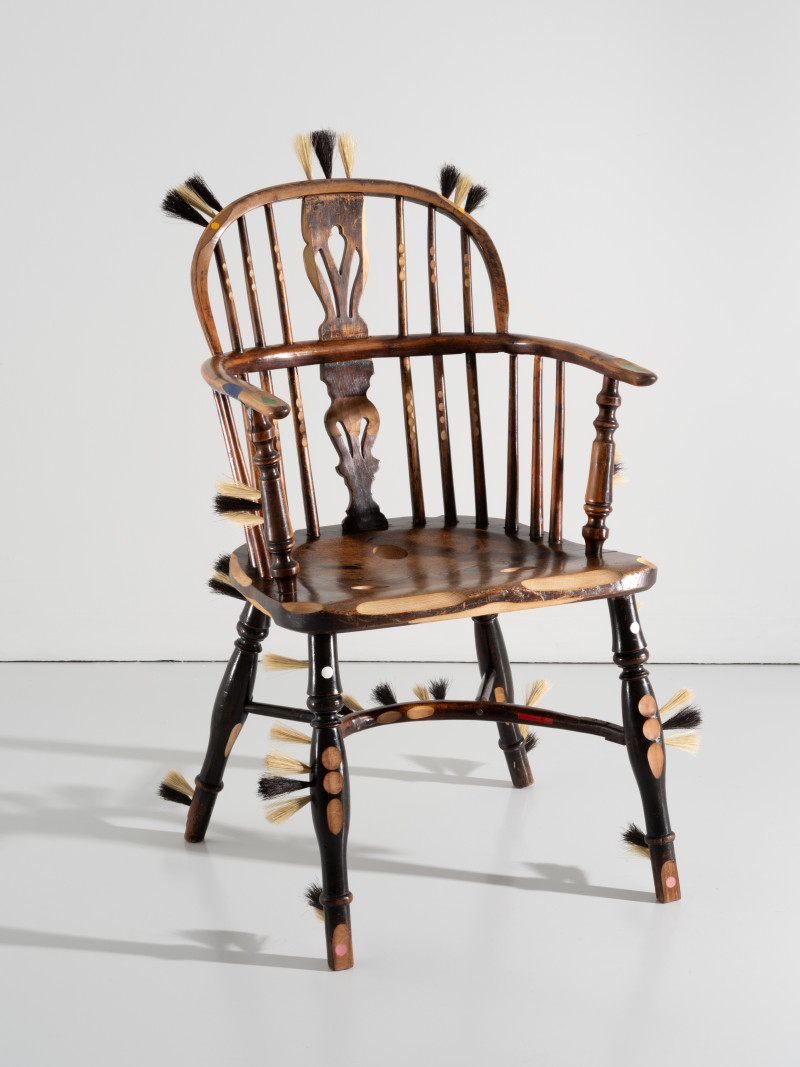
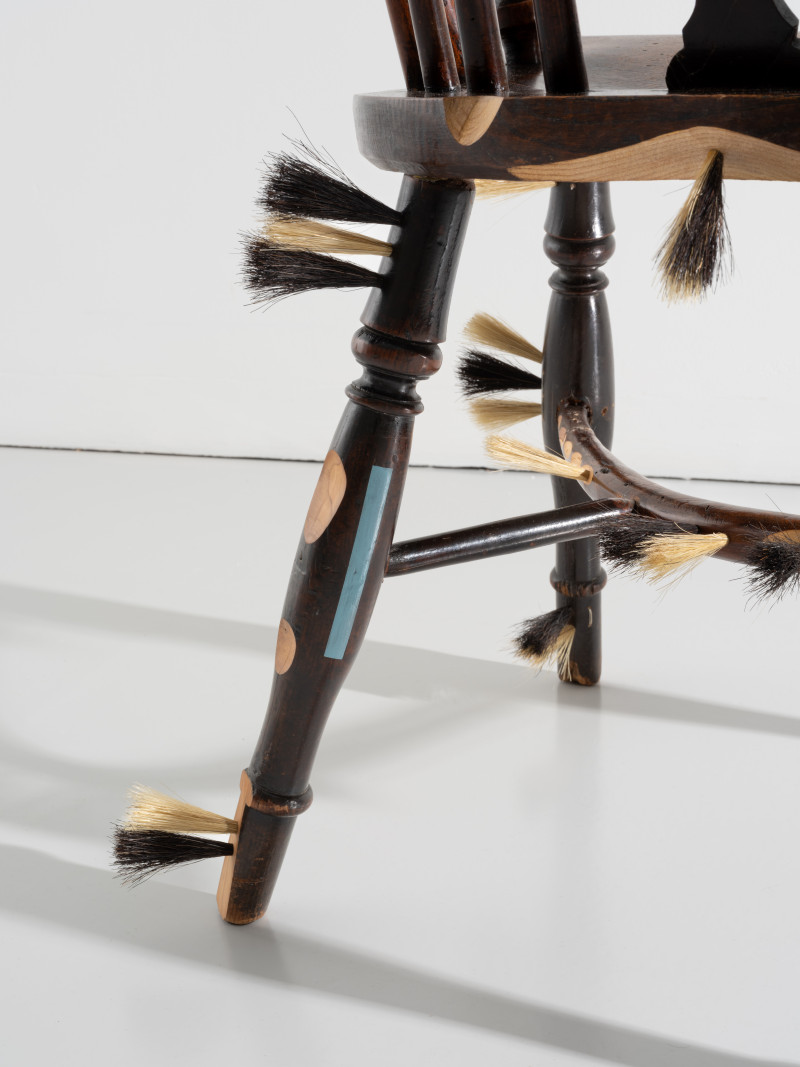
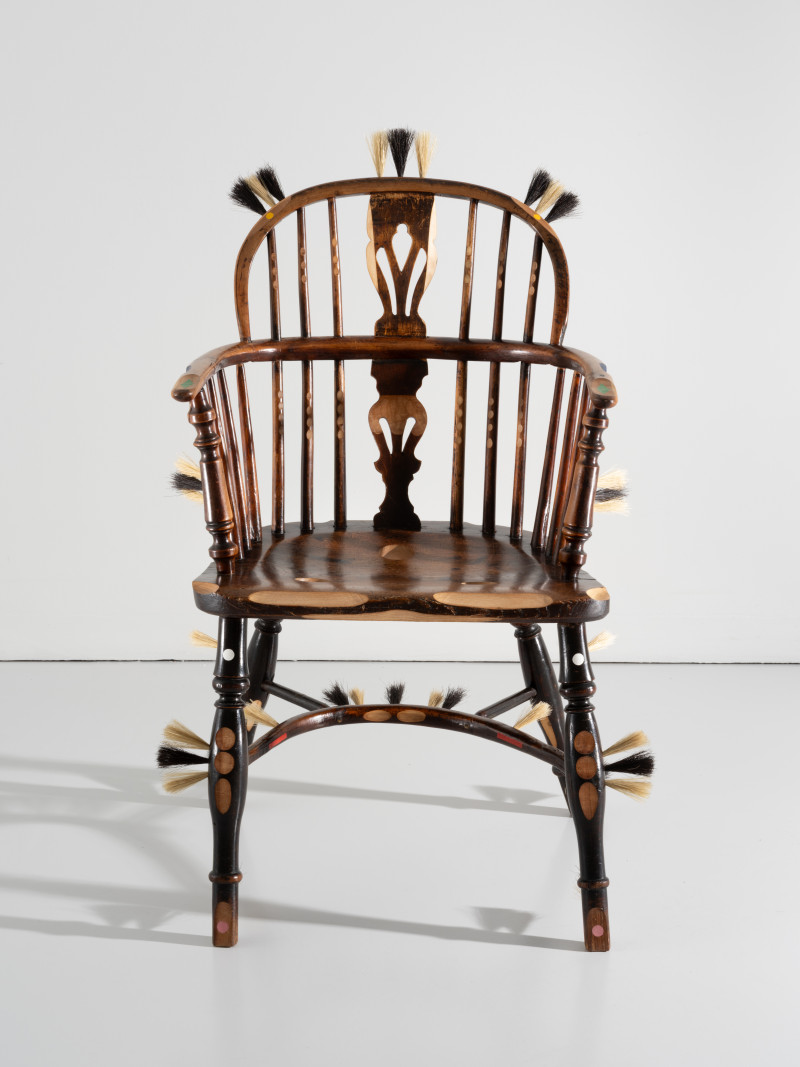
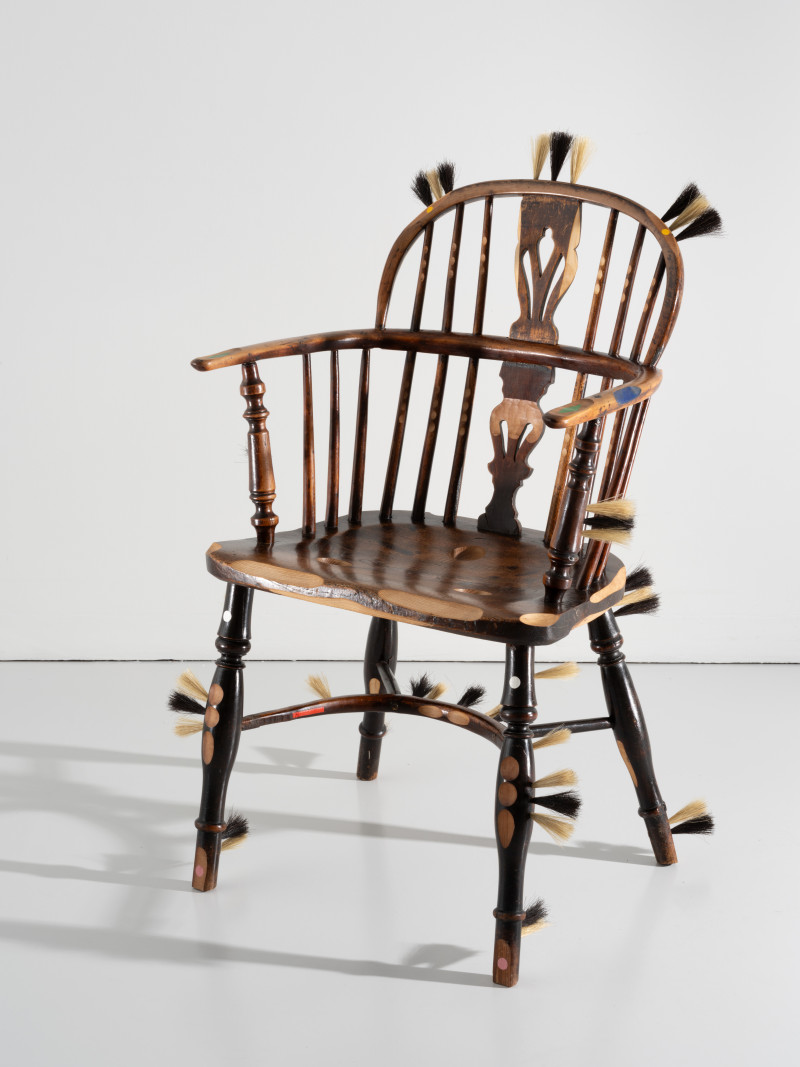
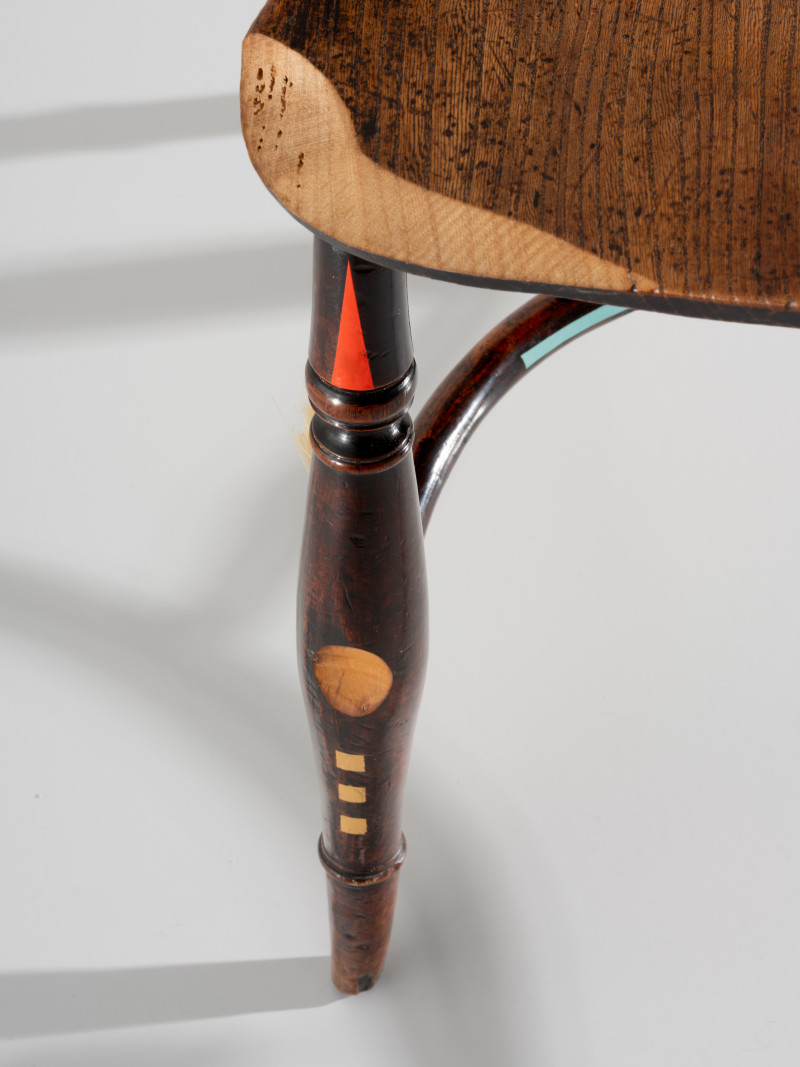
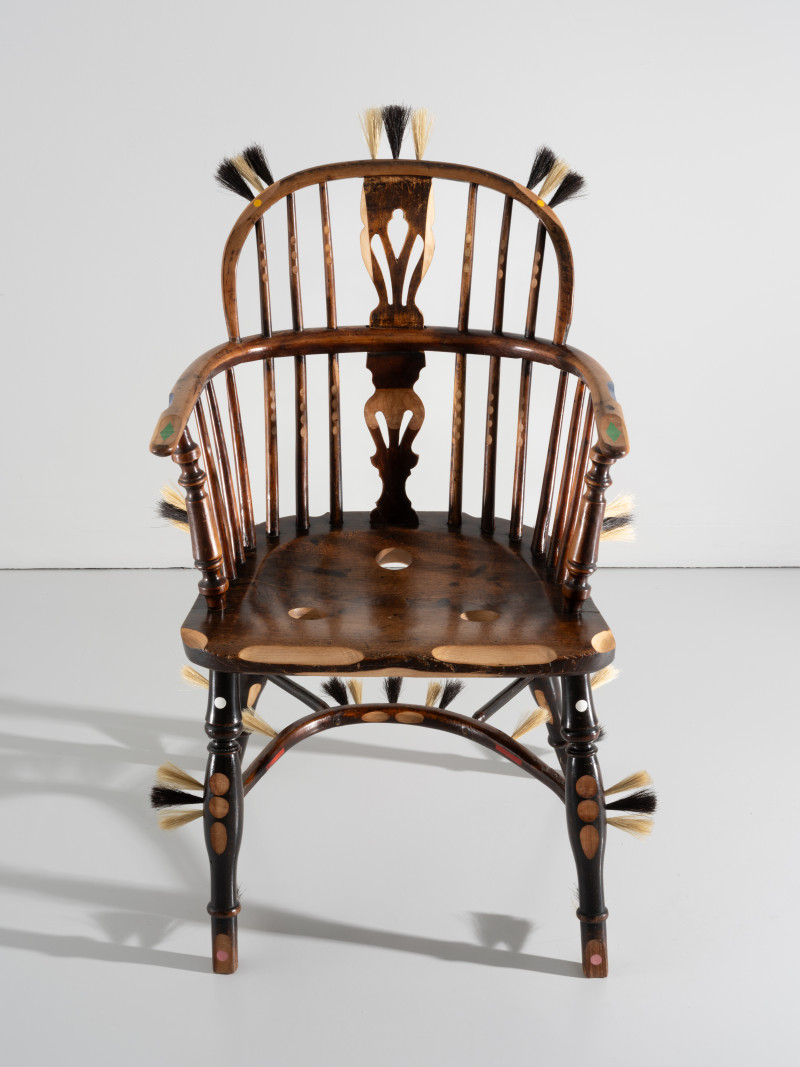
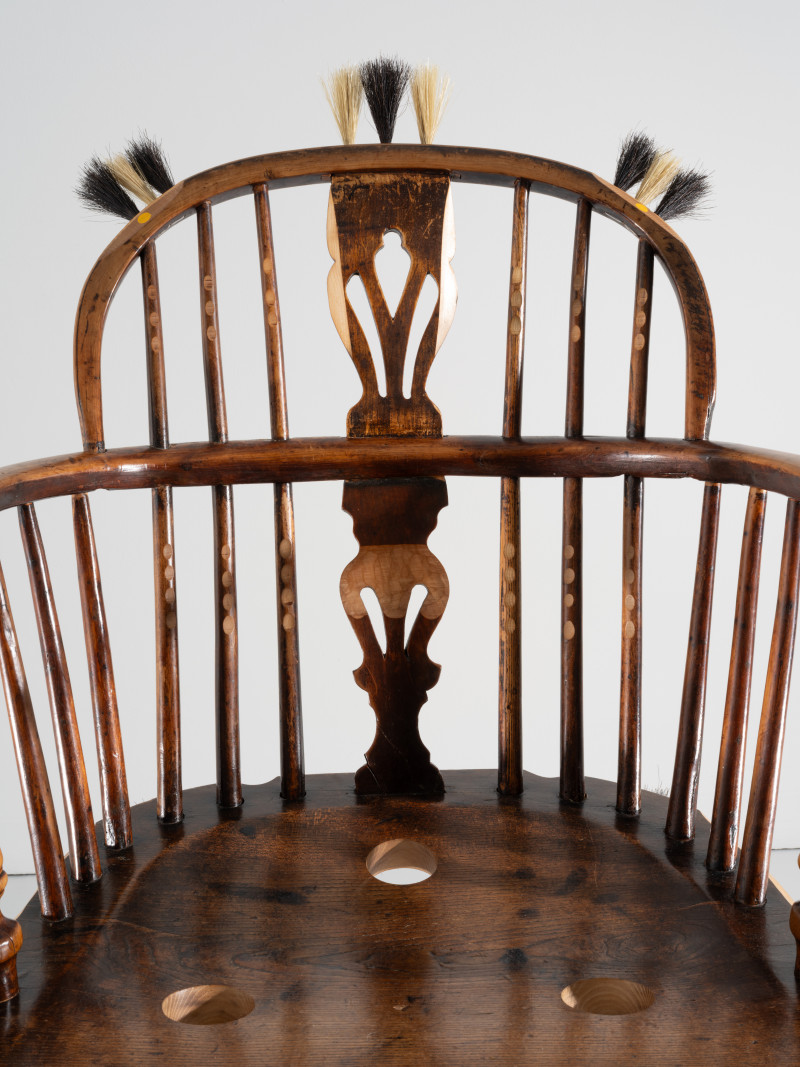
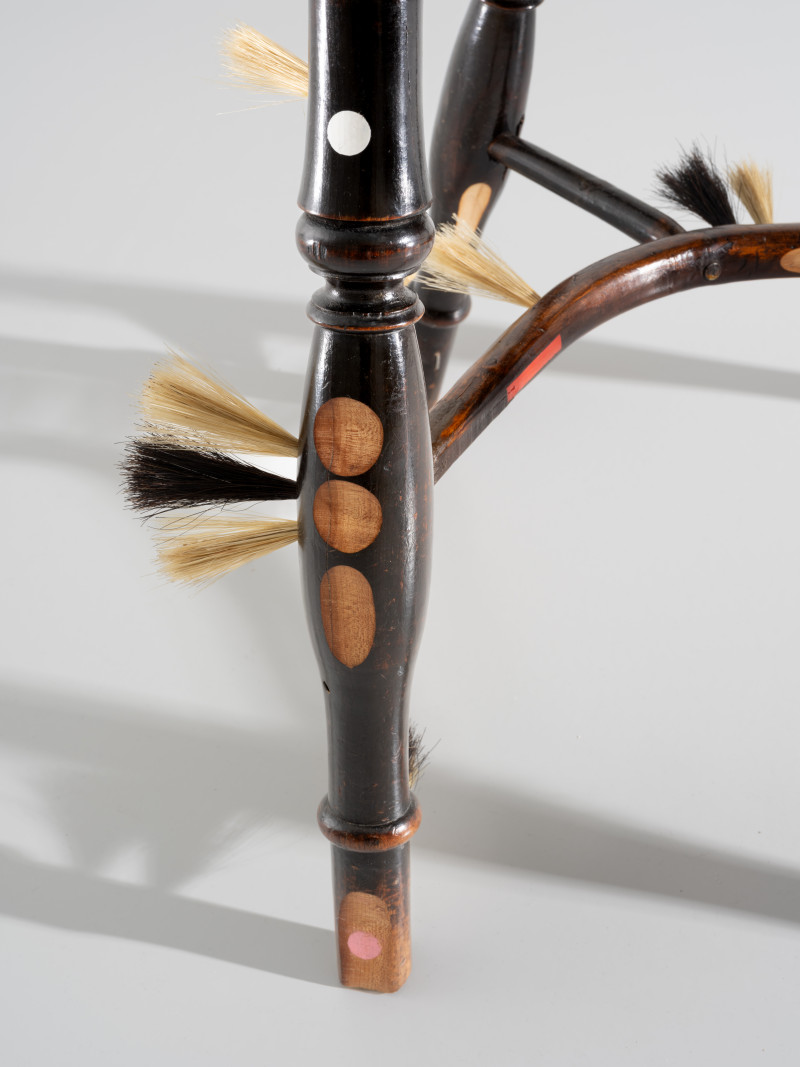
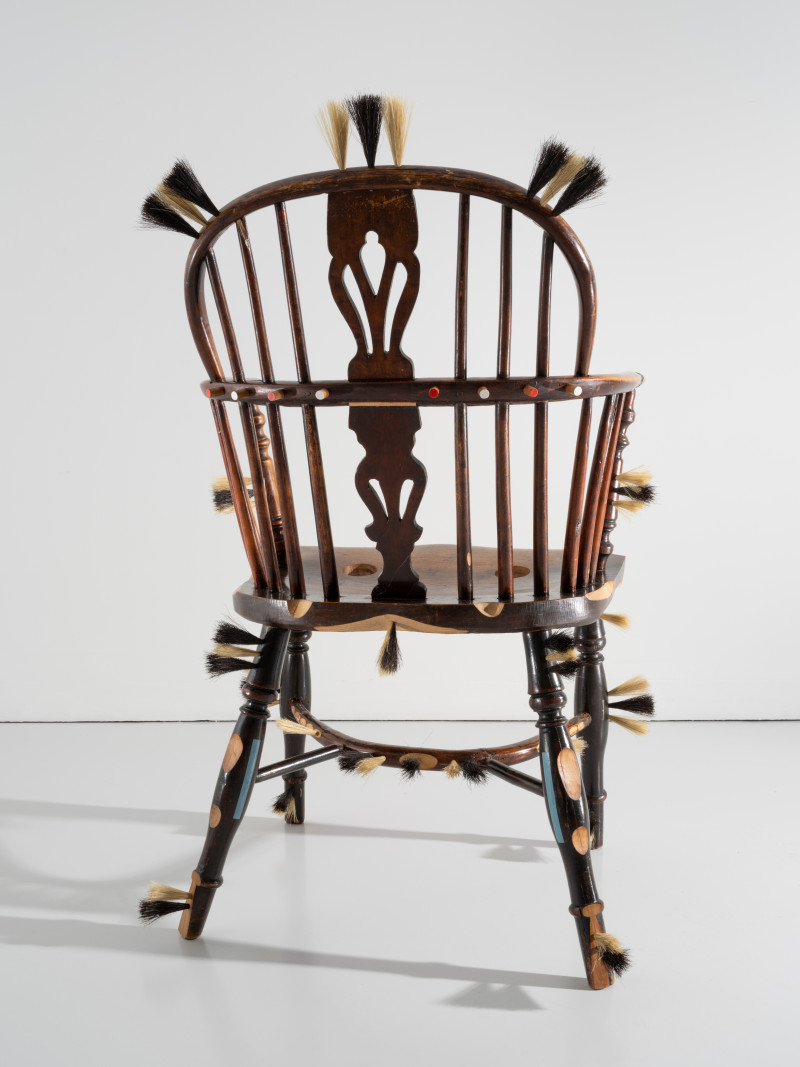
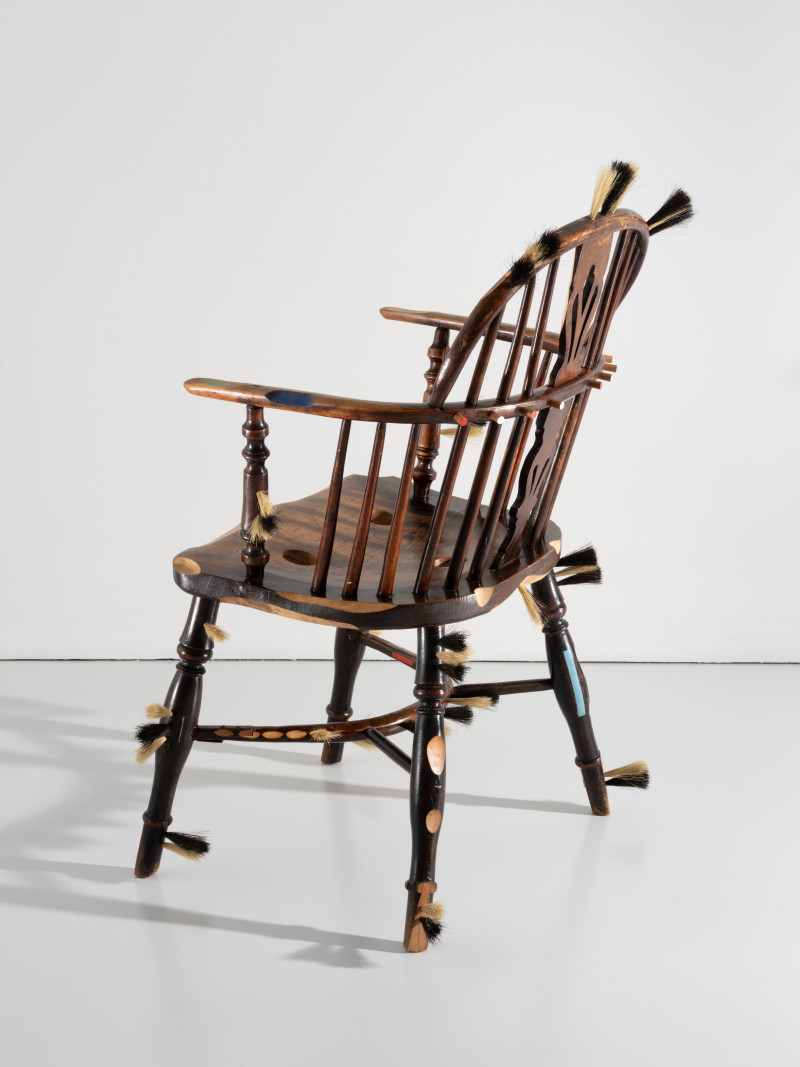
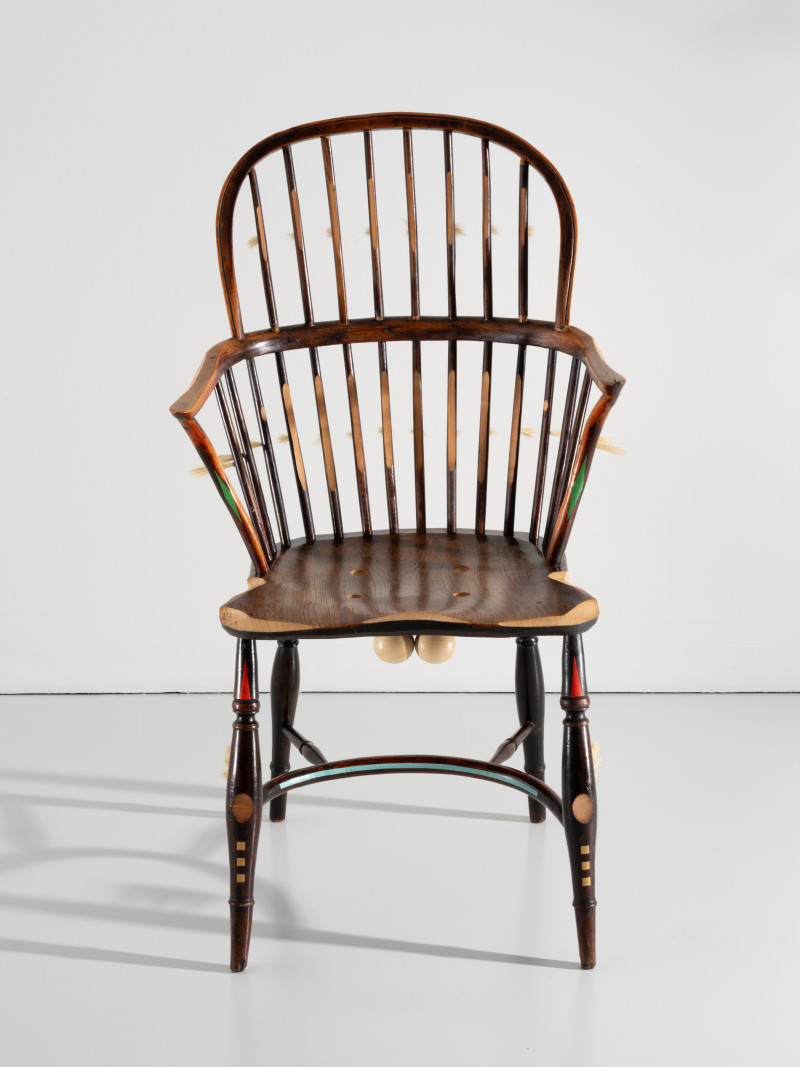
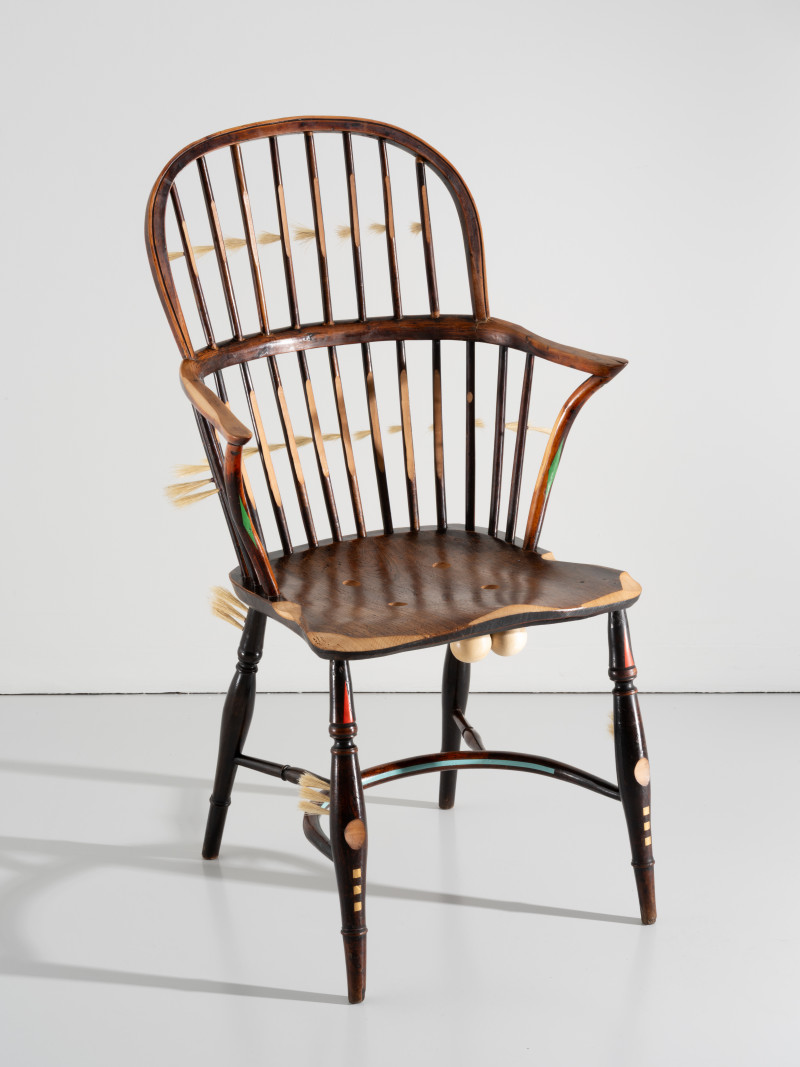
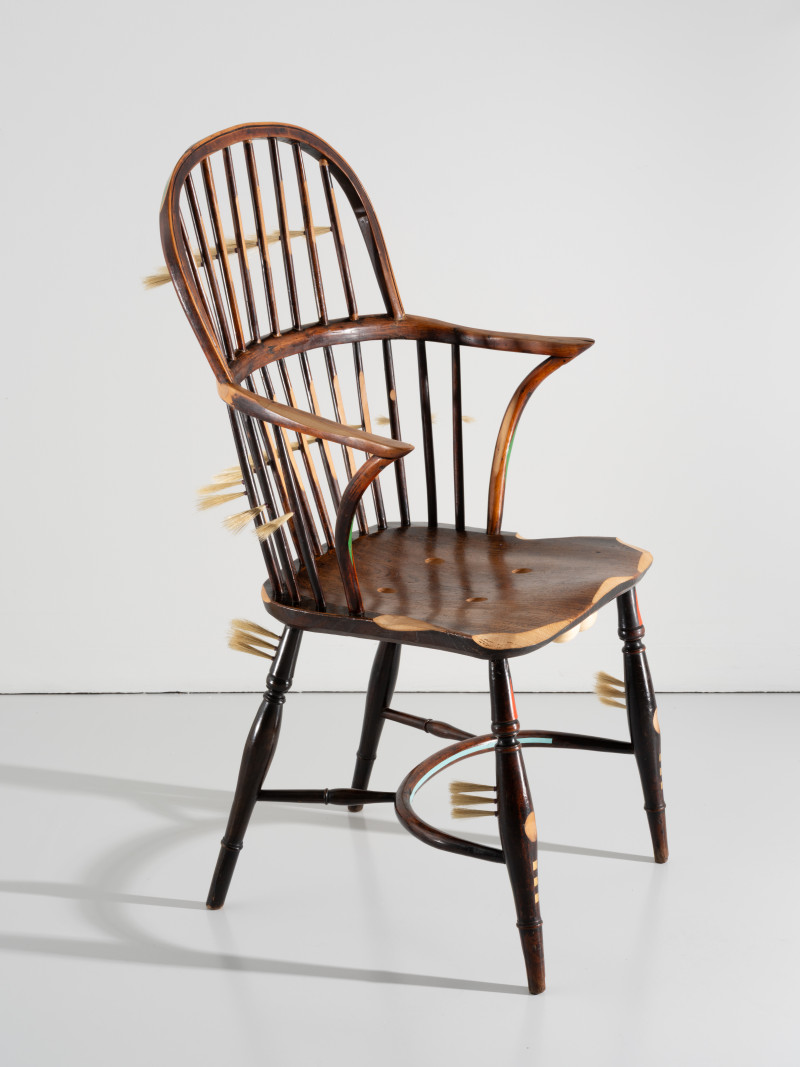
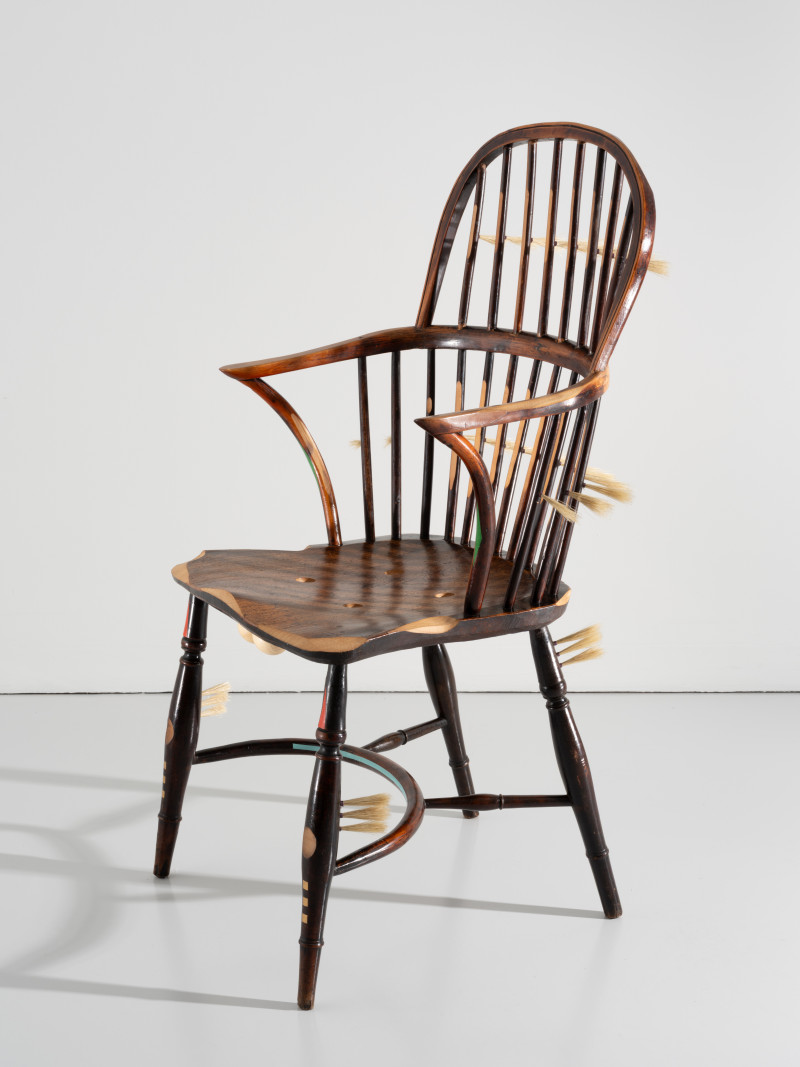
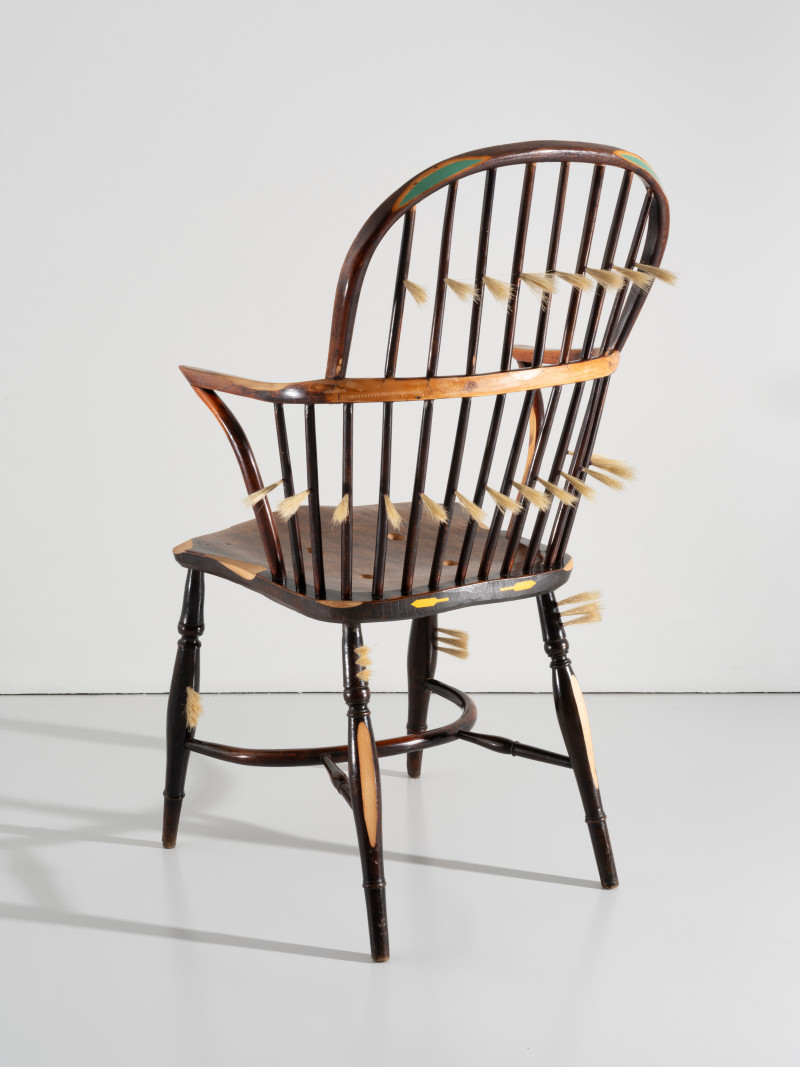
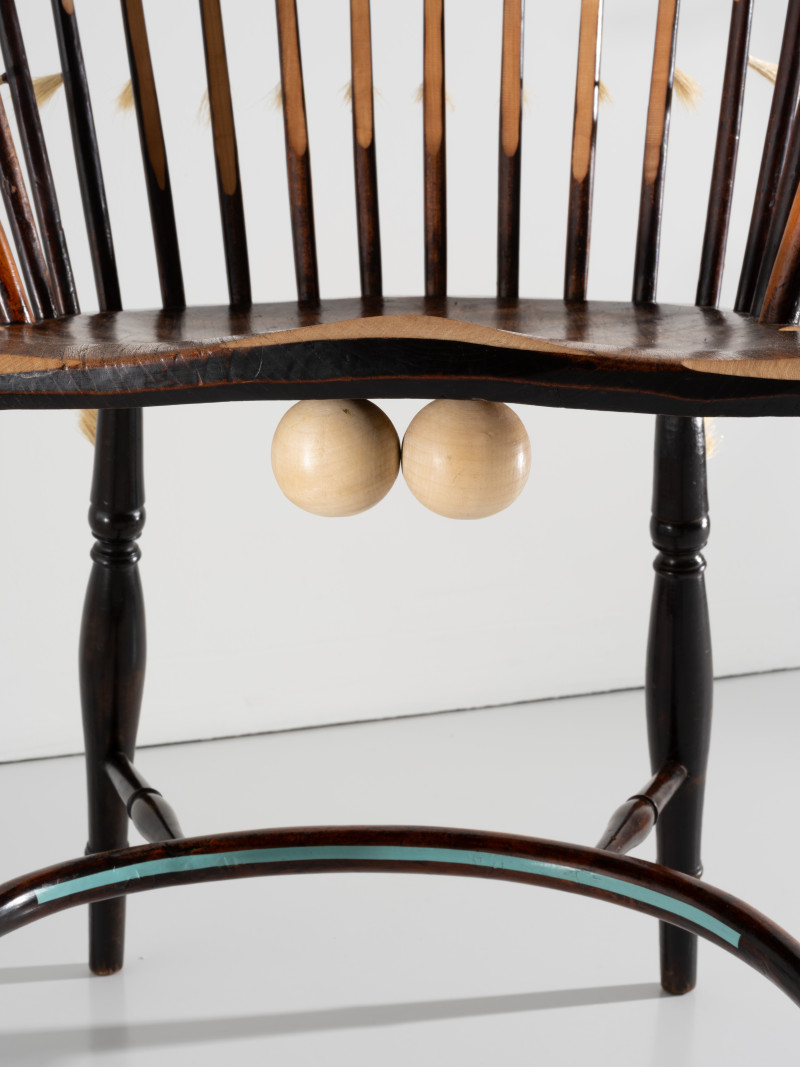
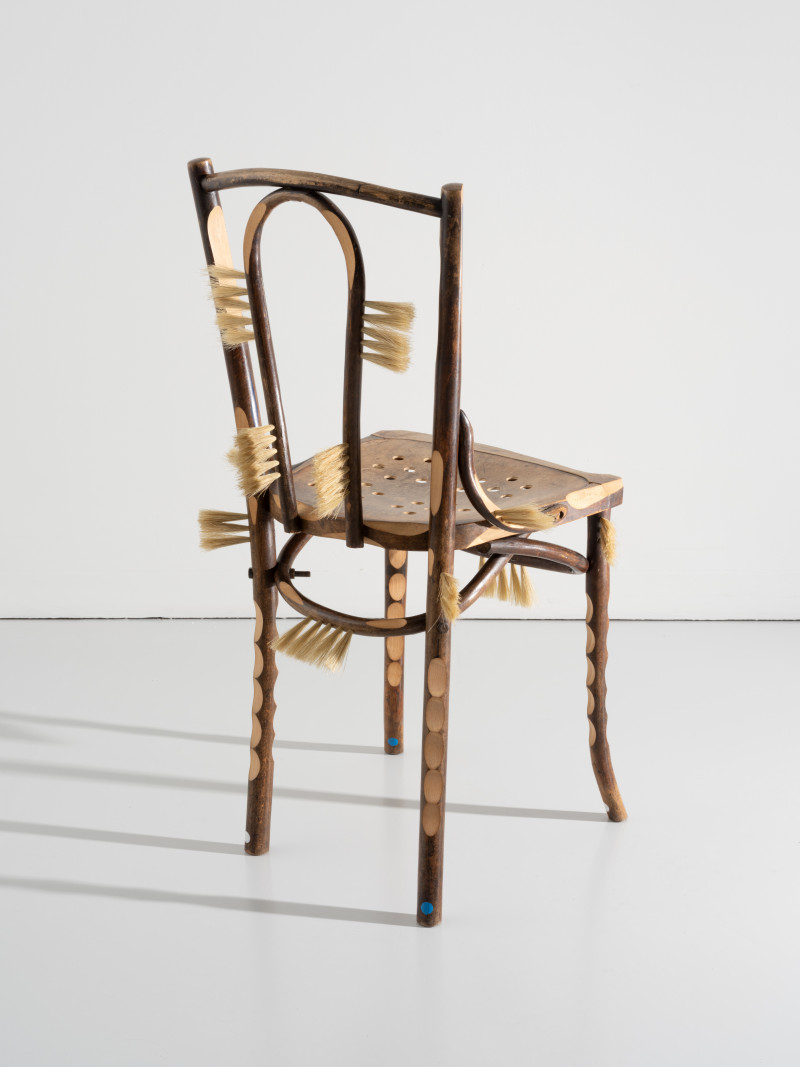
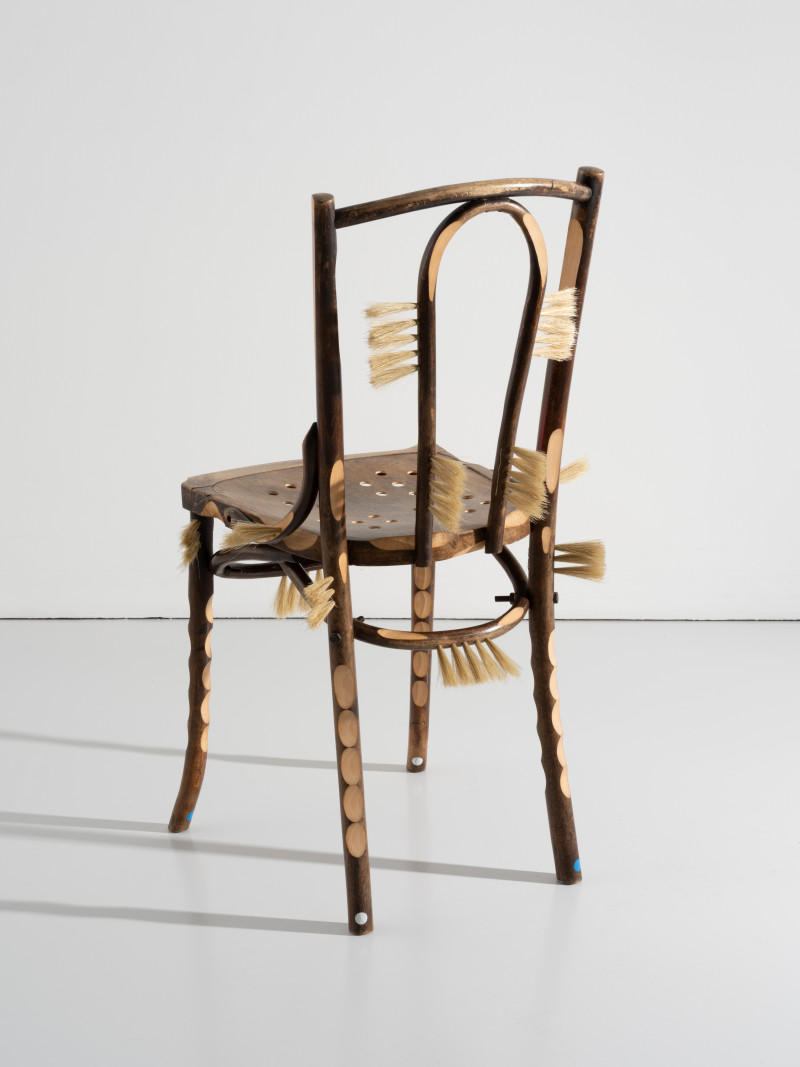
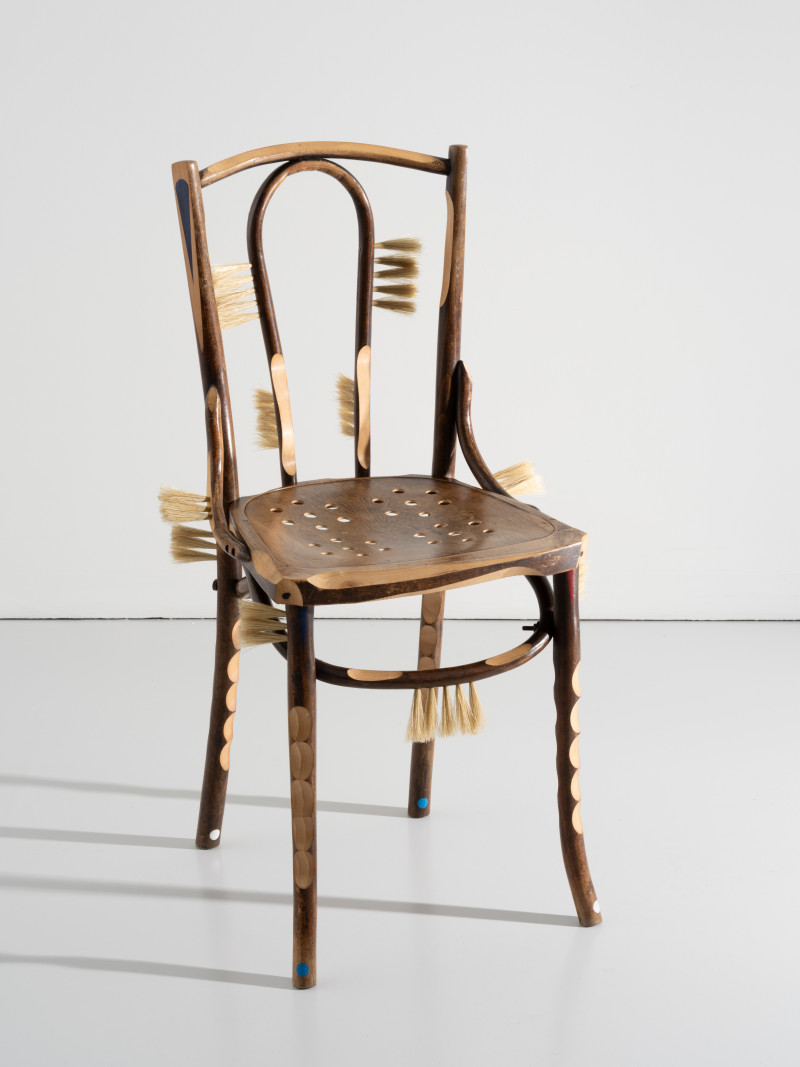
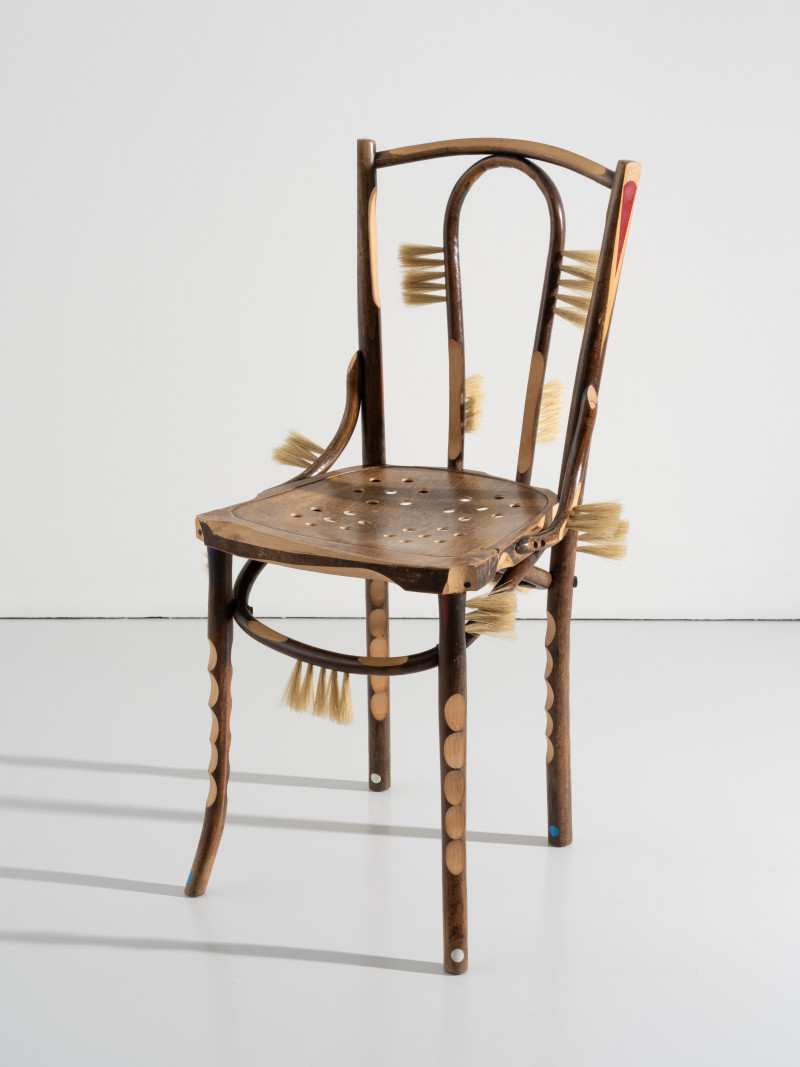
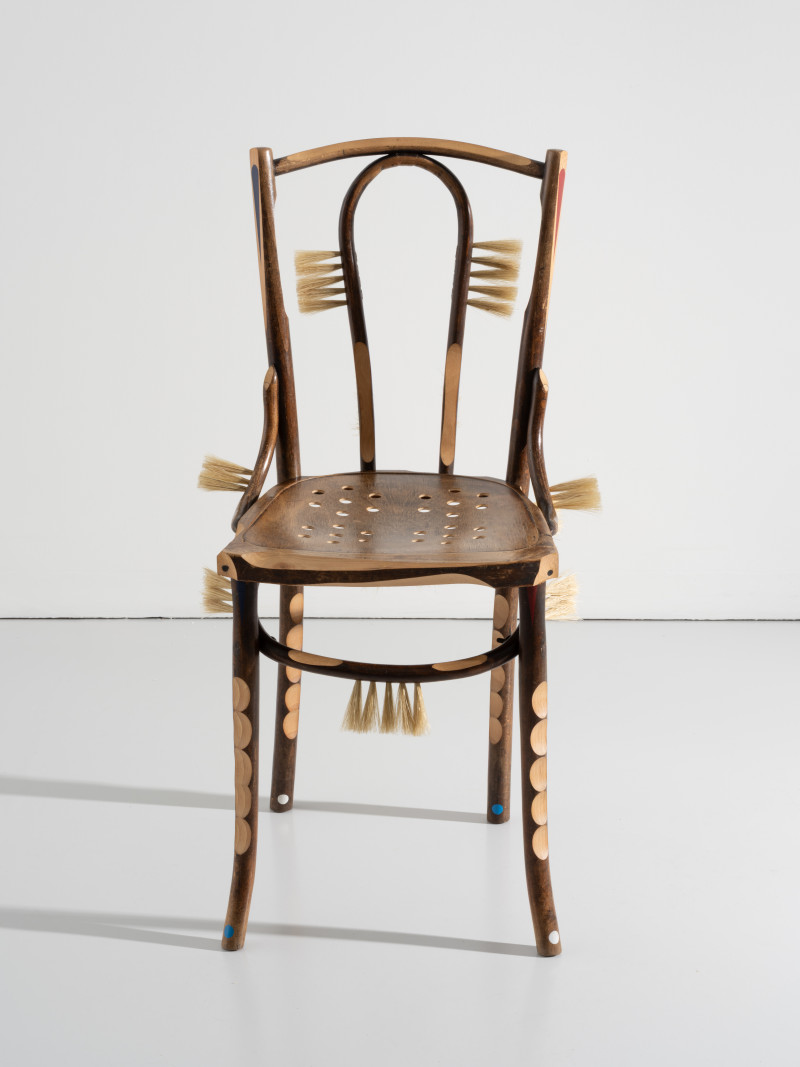
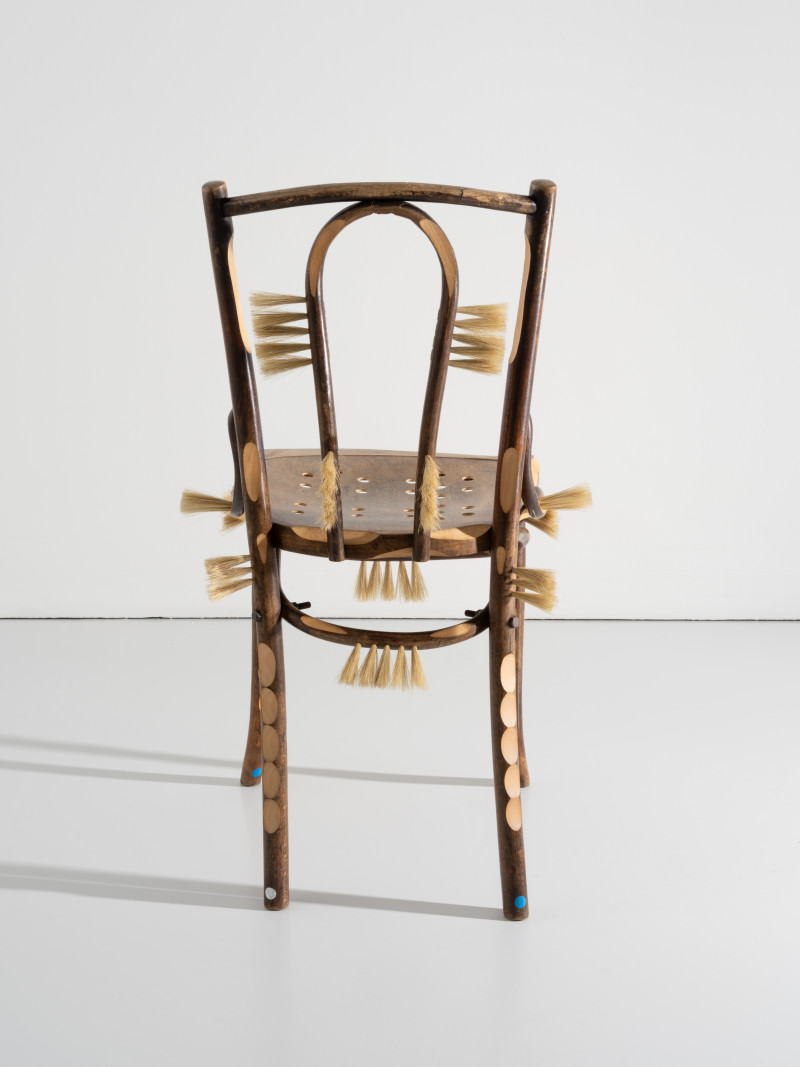
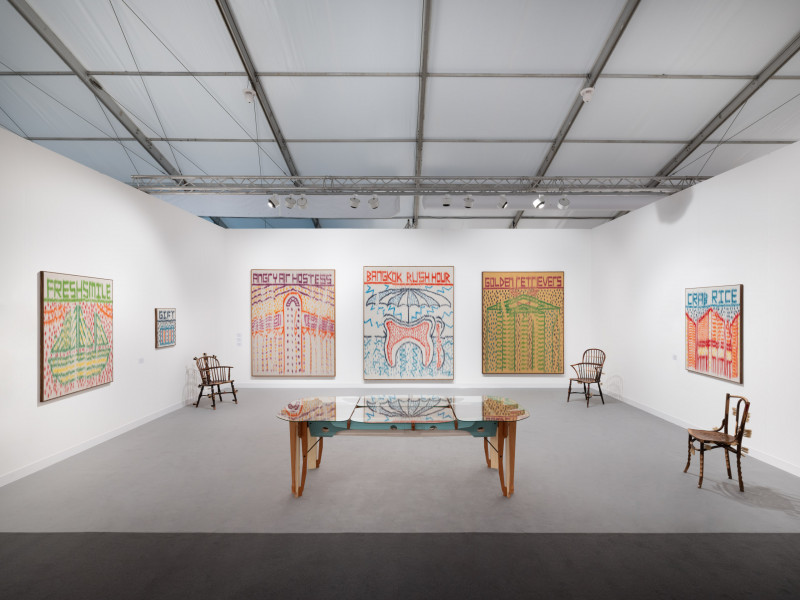
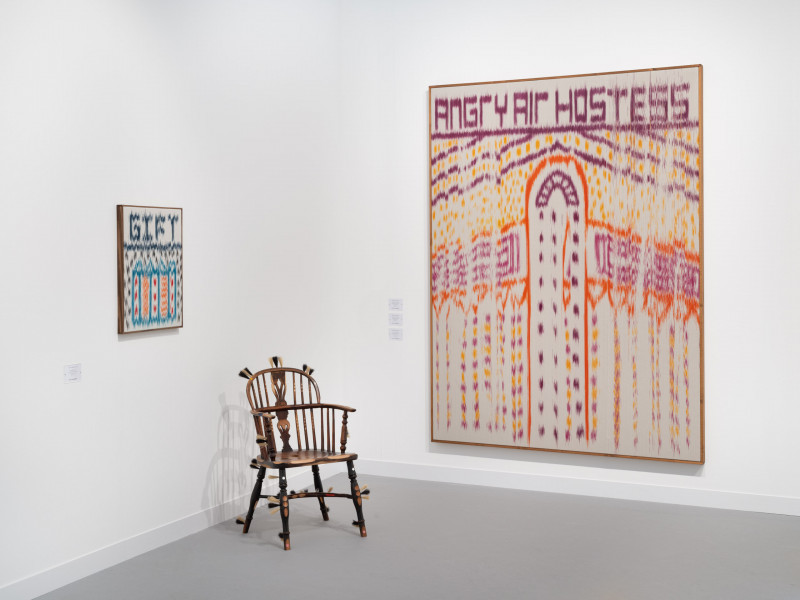
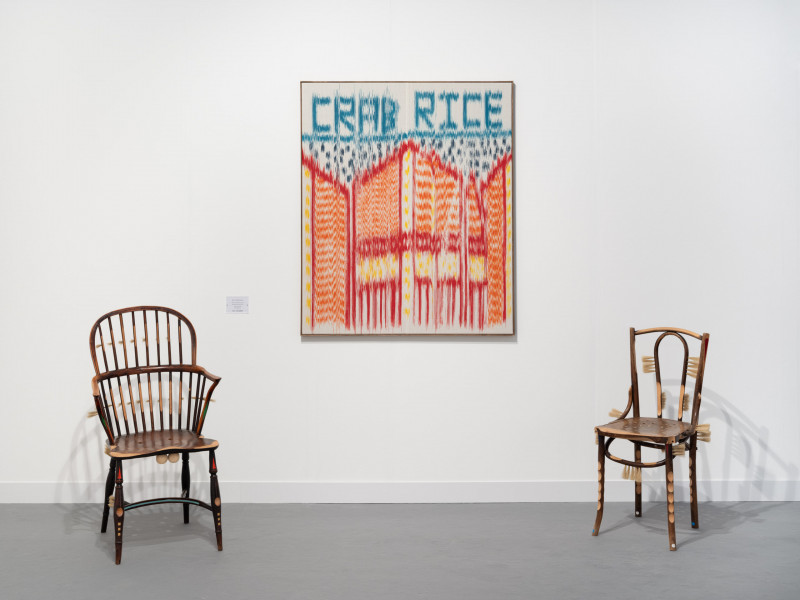
In January 2025, we presented a series of furniture pieces at Blunk Space, created during residencies at the JB Blunk House. The exhibition paired my work with paintings by Fritz Rauh, whose abstract style inspired me to reflect on colour, pattern, and movement in my own pieces.
Using locally salvaged redwood, the furniture highlights the grain, texture, and marks in the material, which shaped both form and function. The pieces are practical but also invite close attention to detail and surface.
This project forms part of a broader interest in how materials carry history and meaning. Building on JB Blunk’s approach to organic sculpture, the work explores sustainability and the connection between craft and nature.
Through the dialogue with Rauh’s paintings, the exhibition encouraged visitors to see furniture as both functional objects and expressions of material and form.
A sculptural chair from the collection was later acquired by SFMOMA.
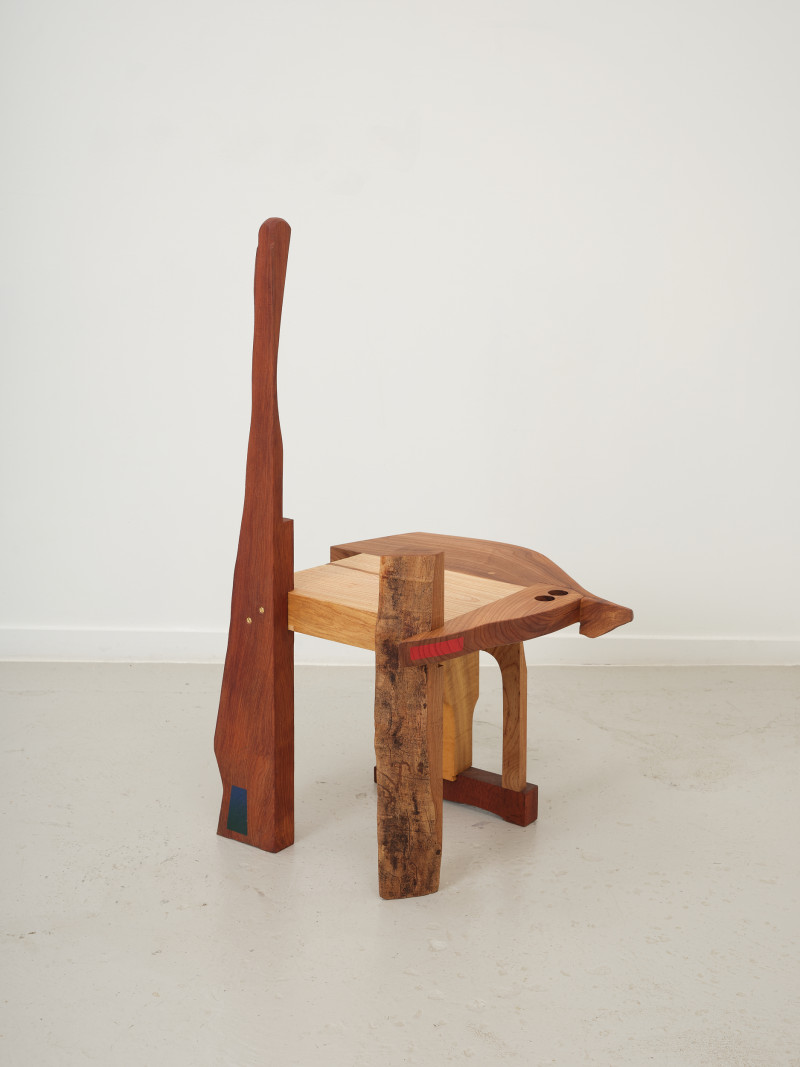
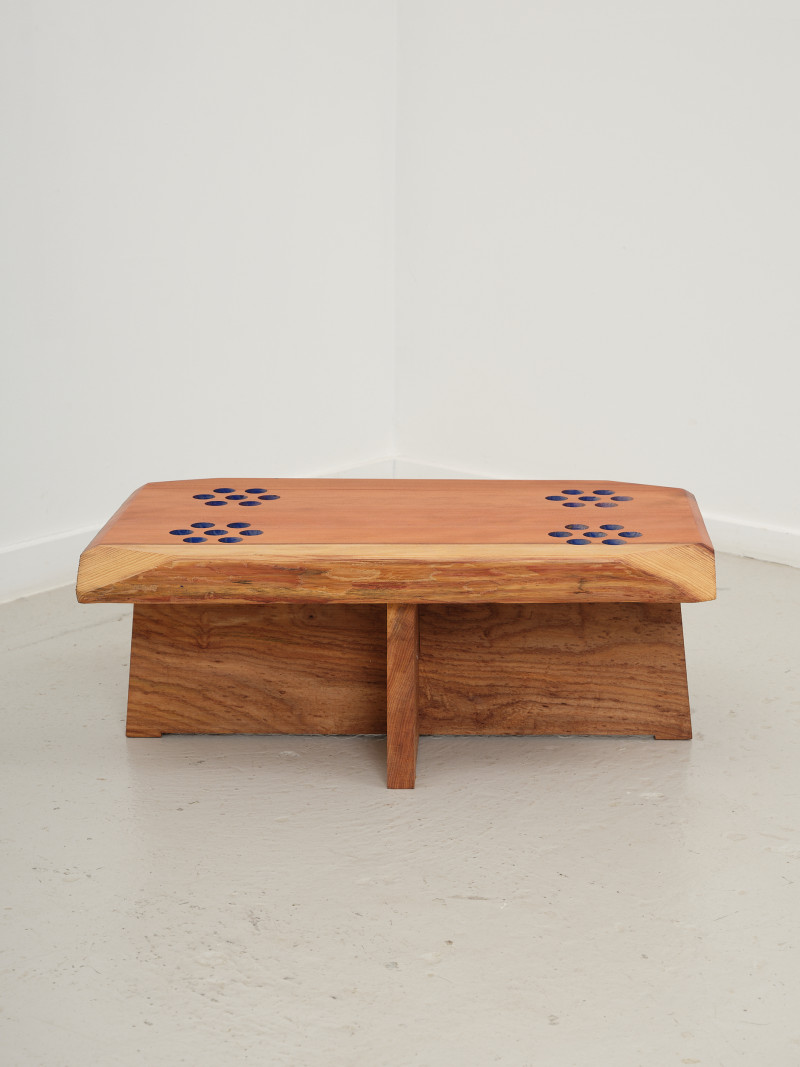
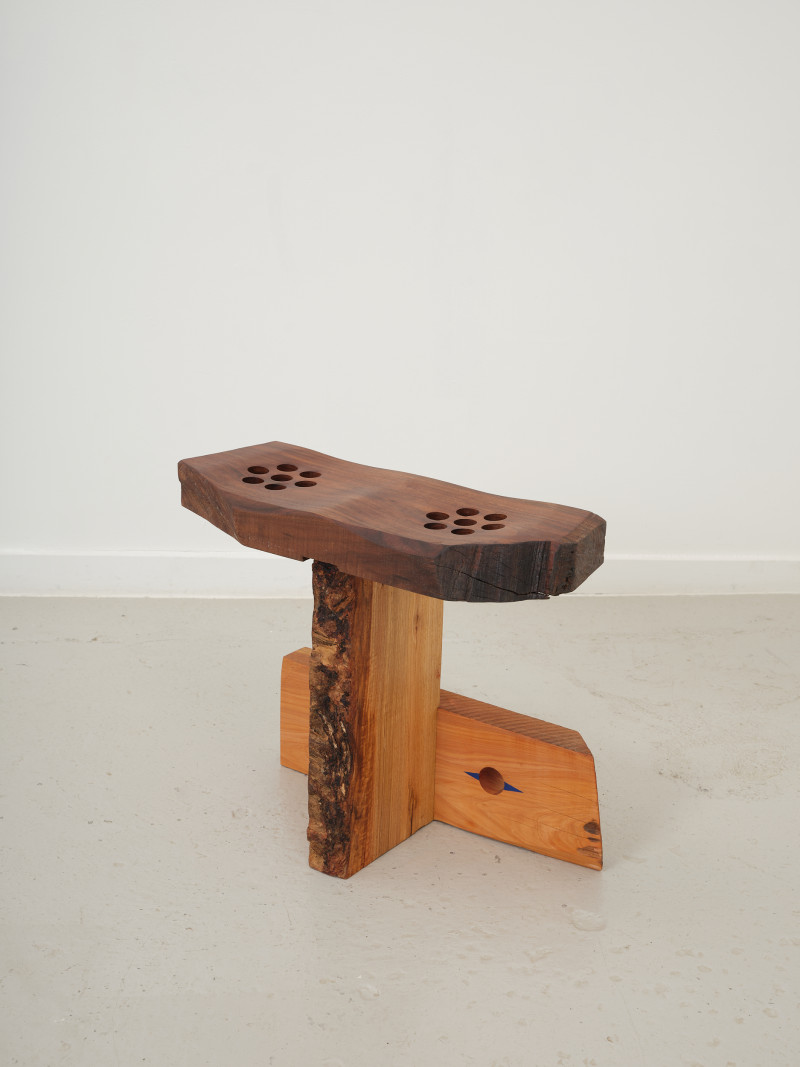
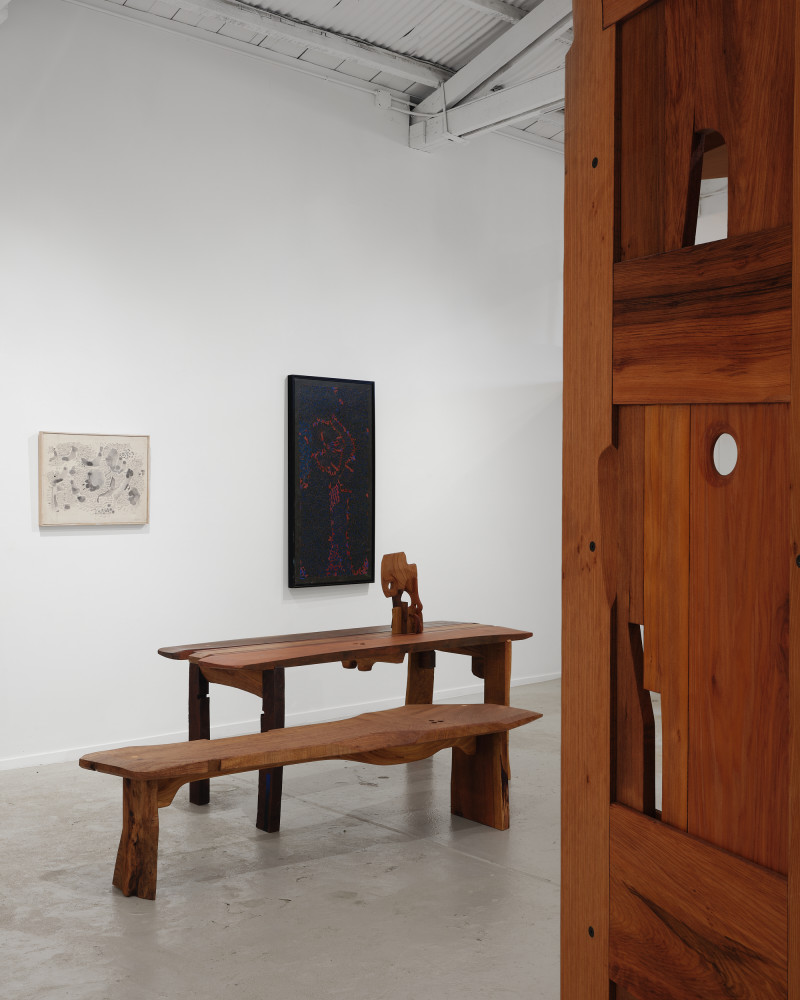
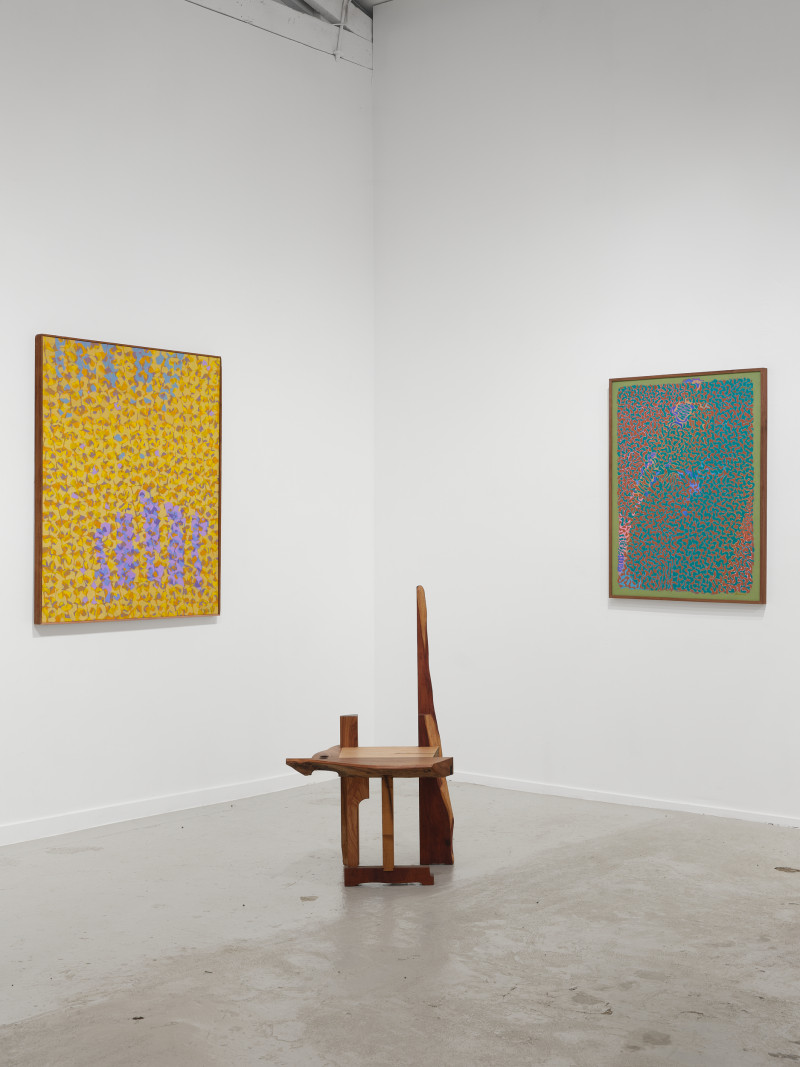
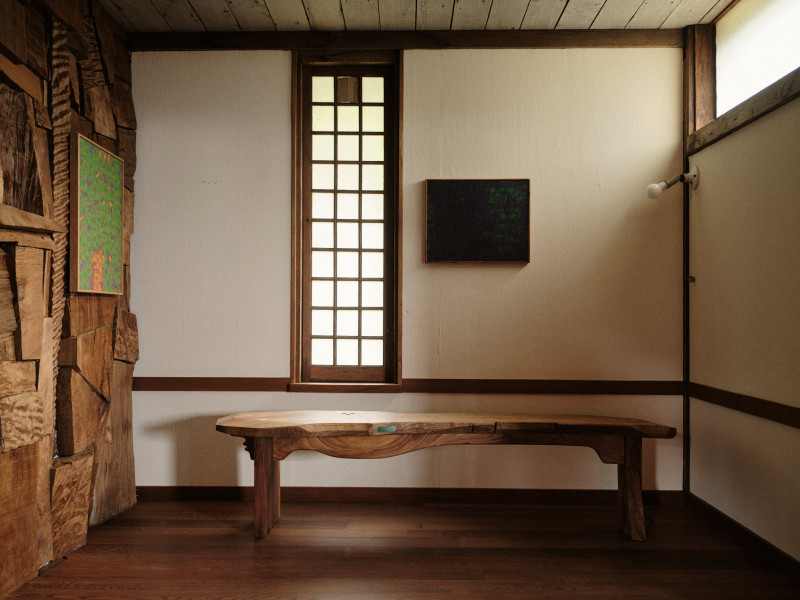
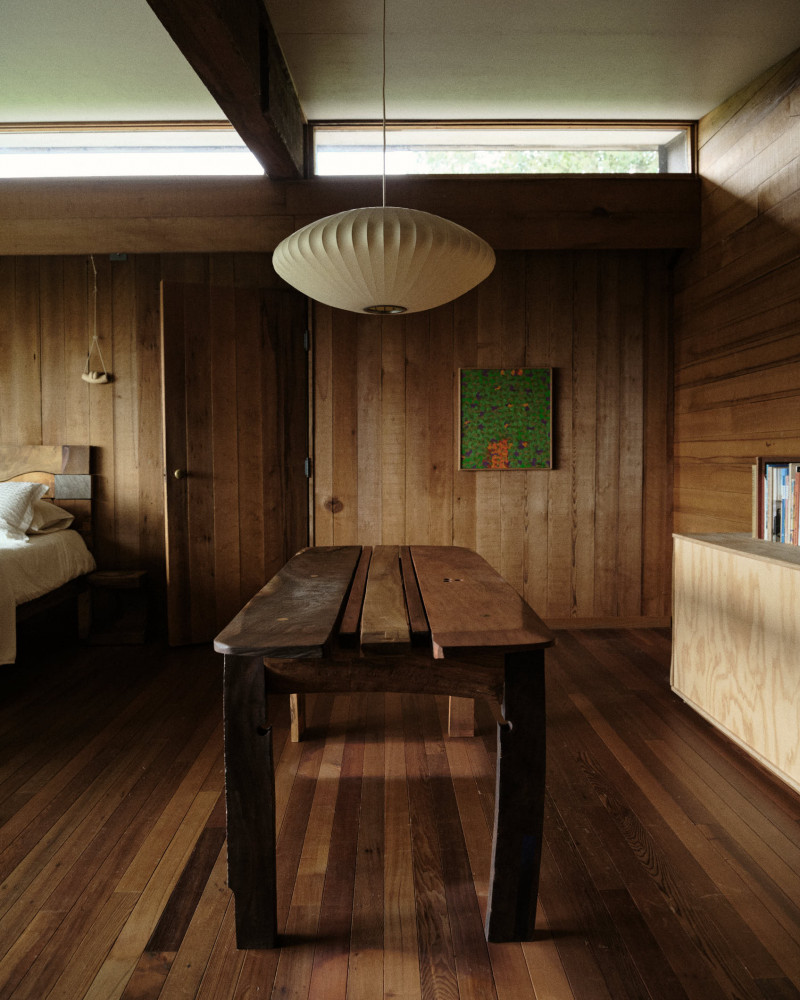
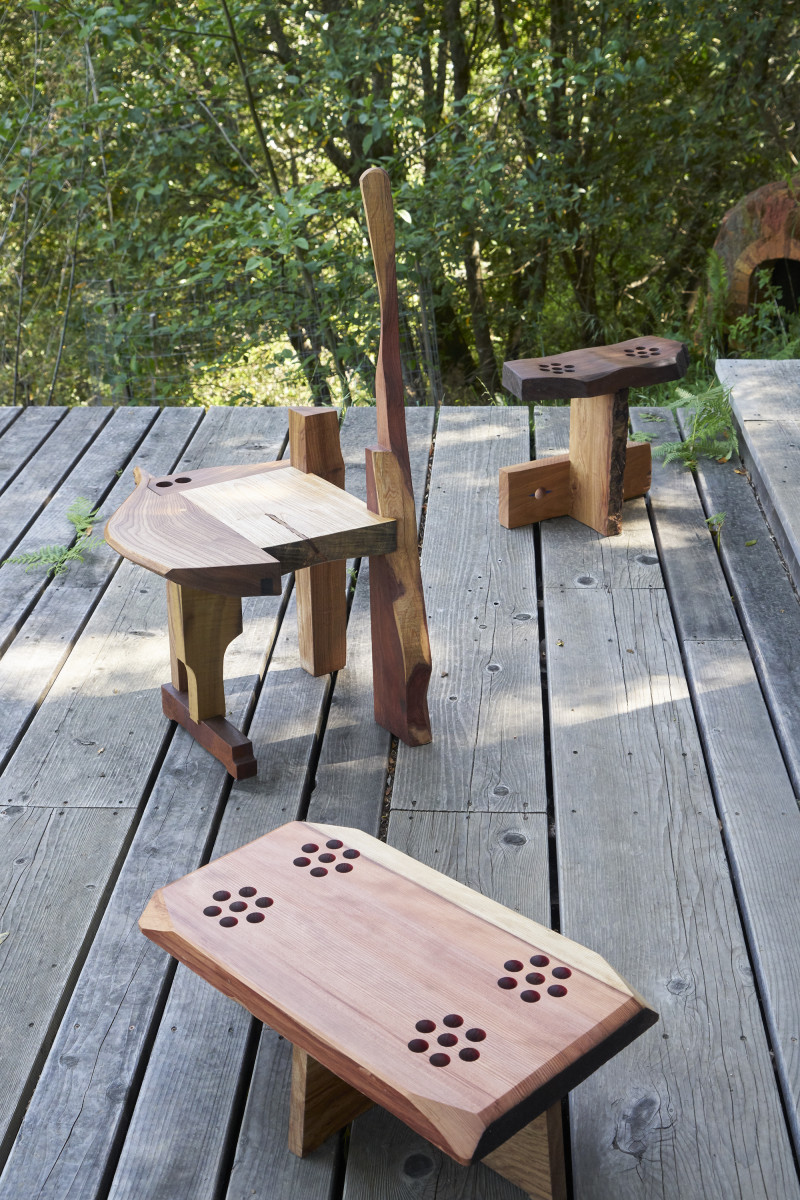
”On the square table” is an eight-seater dining table that continues my exploration of repair and reinvention through the use of salvaged materials. Crafted from reclaimed doors, shelving, and fireplaces – salvaged from a building prior to its renovation by Irenie Cossey – the table combines cherry wood, metal, and glass to create a connection between past and present. Following the completion of the renovation, the table was returned to the house for a six-week showcase, where it now stands as a reimagined piece, allowing its history to resonate within a newly transformed space.
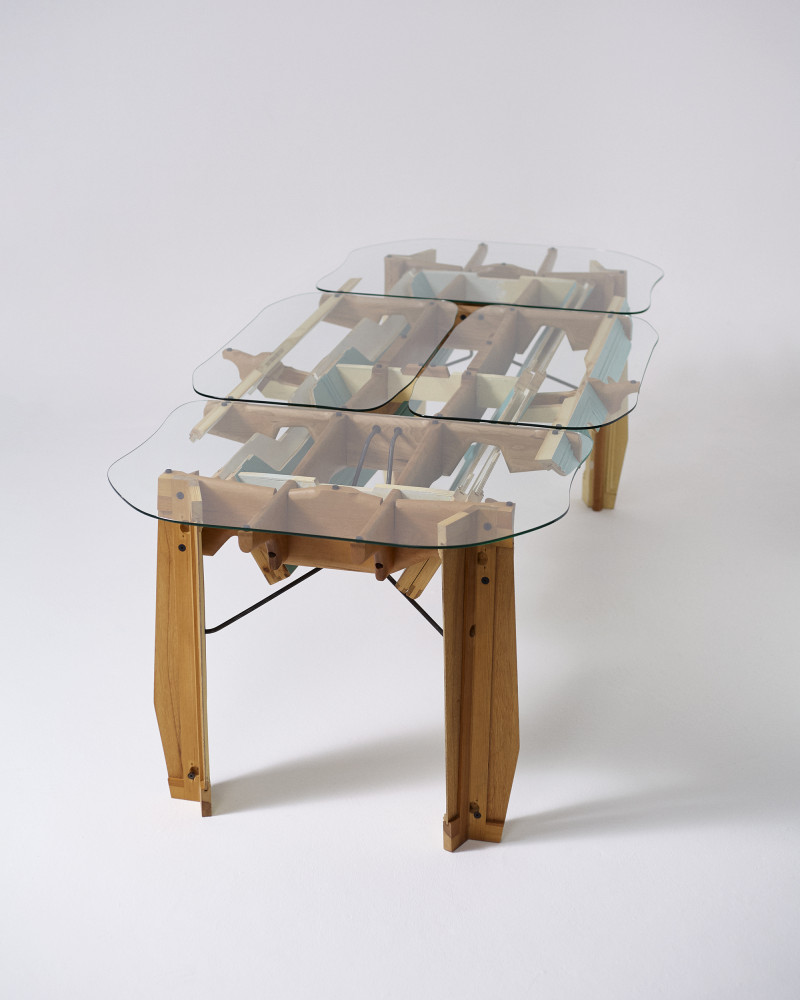
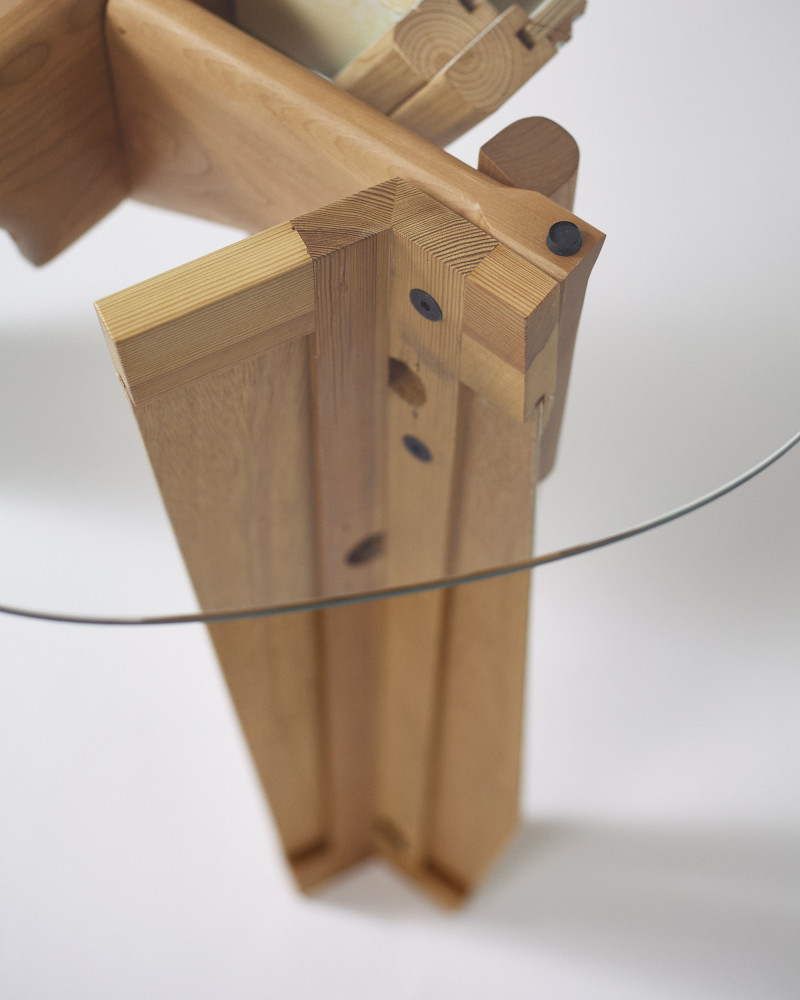
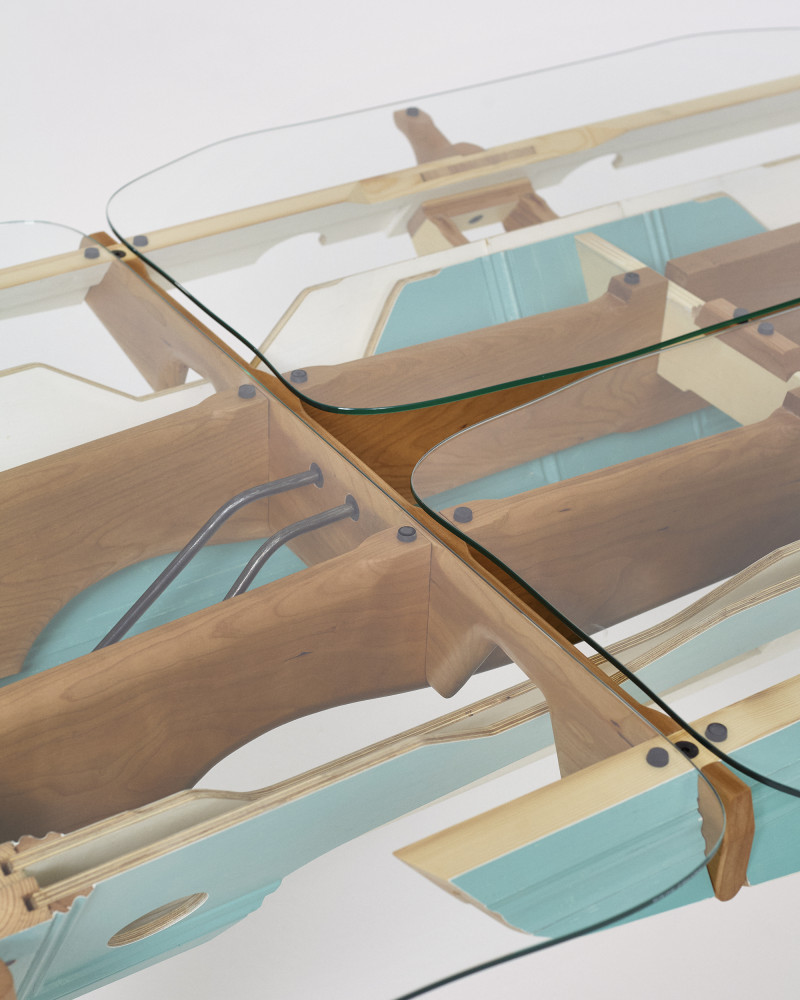
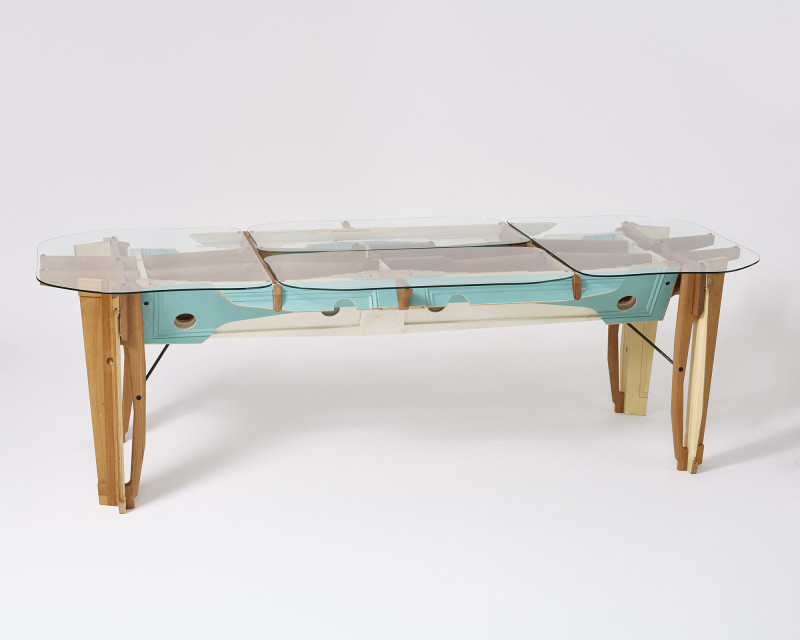
For Design Miami 2024, we presented four pieces commissioned by Blunk Space – two large shelves, a credenza, and a stool – to create a cohesive scene, all crafted from carefully salvaged redwood during our residency in Inverness, California. These works explore the relationship between material history, craftsmanship, and function, inspired by JB Blunk’s legacy and our time staying in the house he created.
The shelves combine sculptural form with practical use: the wall-mounted piece highlights texture and shape, while the freestanding unit offers flexible spatial presence. The credenza reveals the character of reclaimed timber through its rich patina and imperfections. The stool, simple and tactile, invites intimate interaction and warmth.
Together, the collection honours tradition while addressing contemporary design needs. The presentation received the Best CurioPresentation award, recognising its thoughtful and resonant approach. We exhibited alongside Alana Burns, JB Blunk, and Adam Pough.
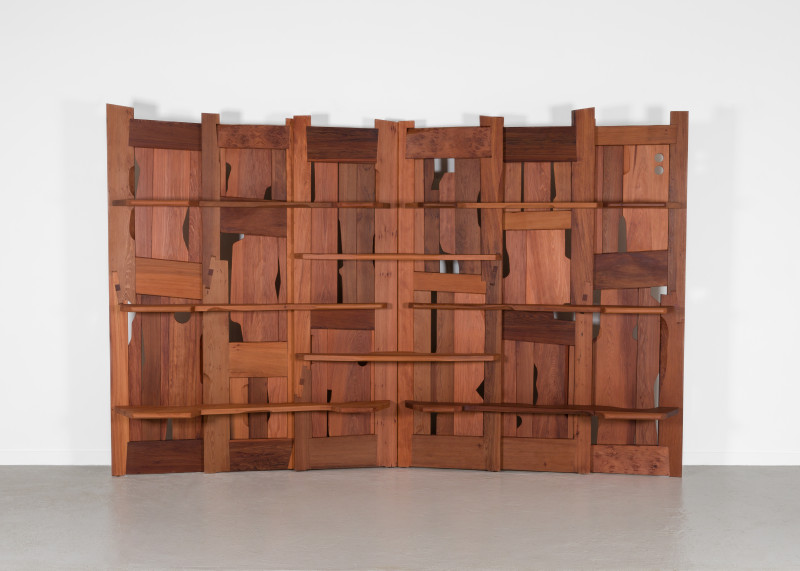
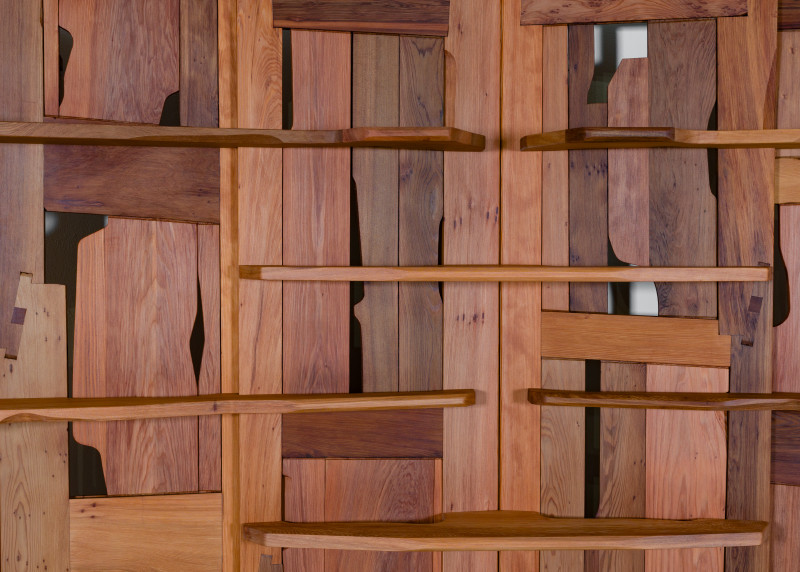
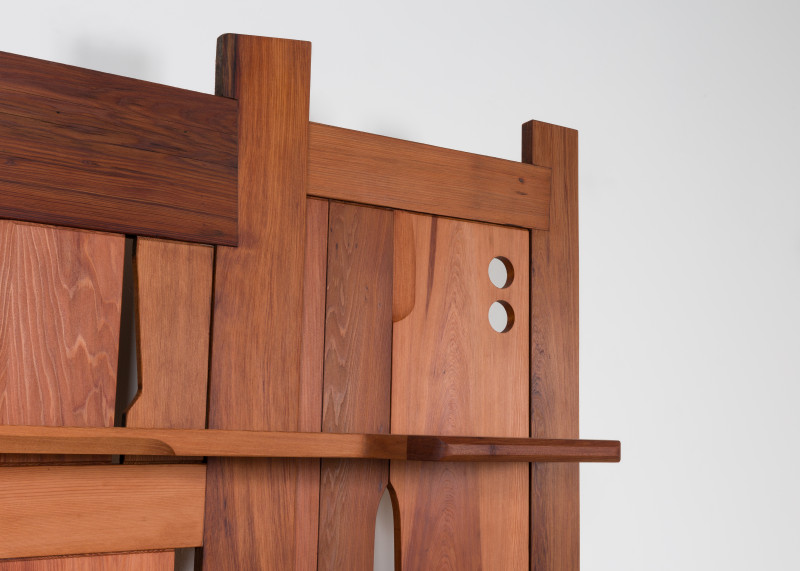
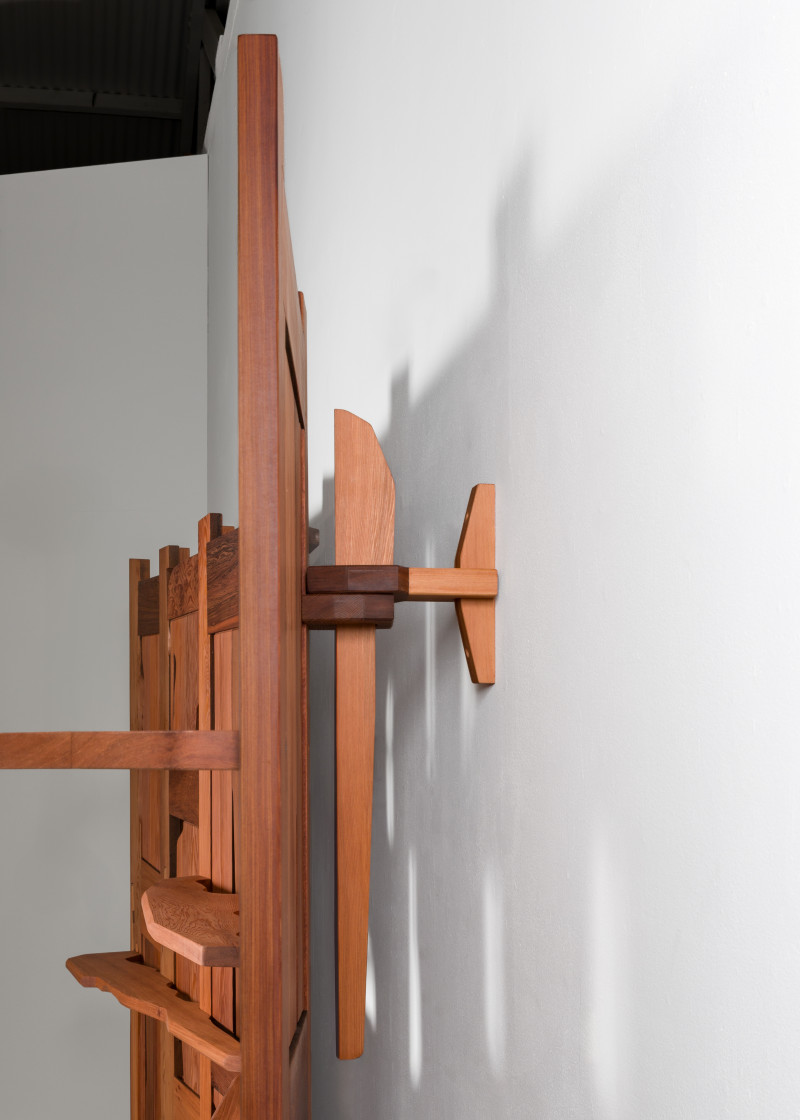
For Design Miami 2024, we presented four pieces commissioned by Blunk Space – two large shelves, a credenza, and a stool – to create a cohesive scene, all crafted from carefully salvaged redwood during our residency in Inverness, California. These works explore the relationship between material history, craftsmanship, and function, inspired by JB Blunk’s legacy and our time staying in the house he created.
The shelves combine sculptural form with practical use: the wall-mounted piece highlights texture and shape, while the freestanding unit offers flexible spatial presence. The credenza reveals the character of reclaimed timber through its rich patina and imperfections. The stool, simple and tactile, invites intimate interaction and warmth.
Together, the collection honours tradition while addressing contemporary design needs. The presentation received the Best CurioPresentation award, recognising its thoughtful and resonant approach. We exhibited alongside Alana Burns, JB Blunk, and Adam Pough.
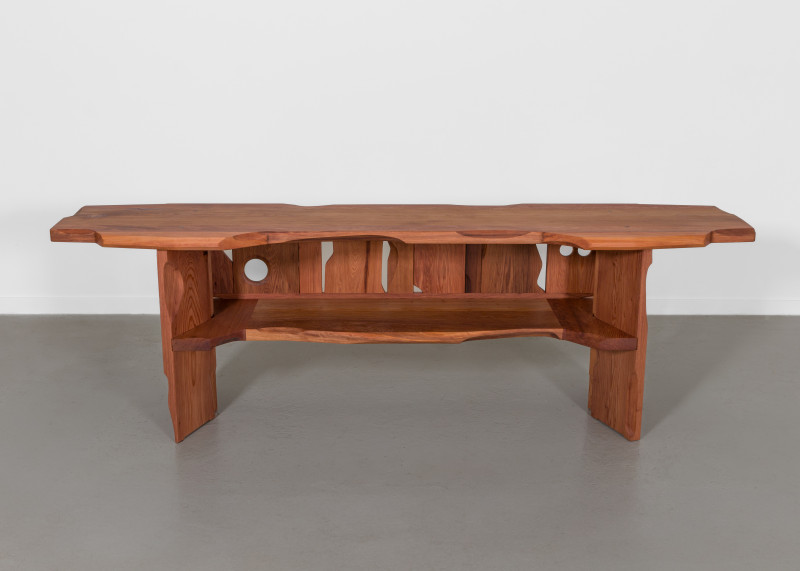
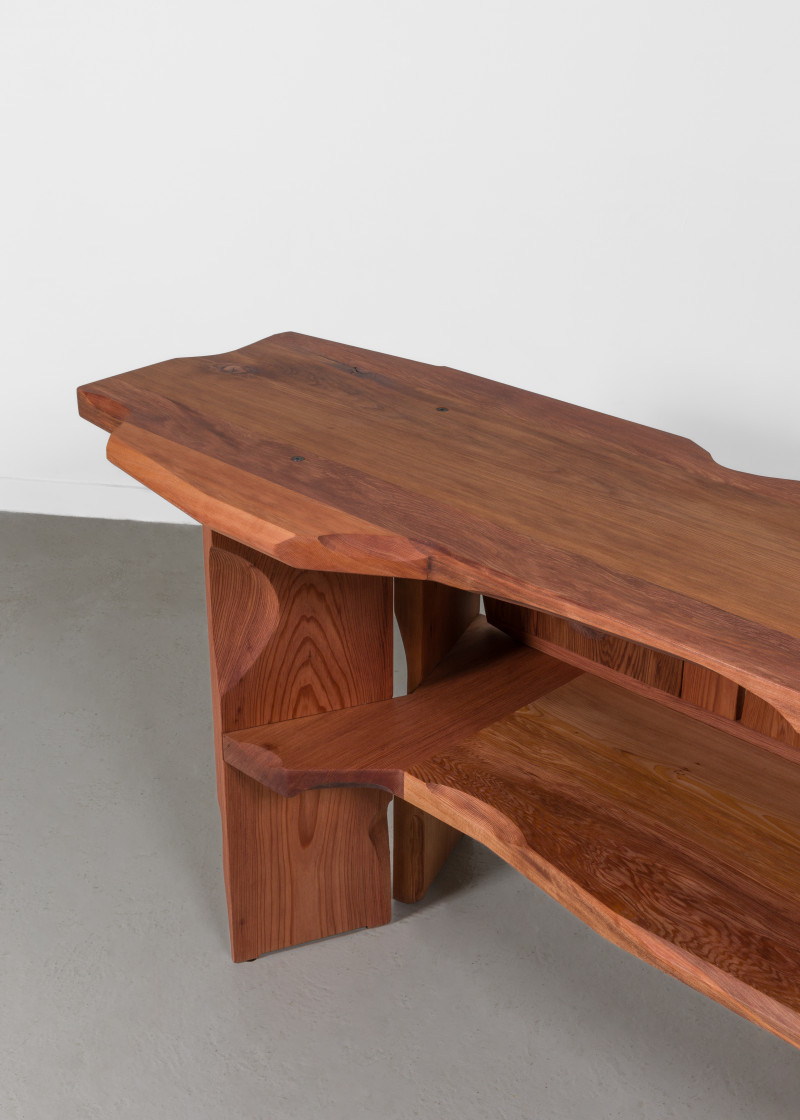
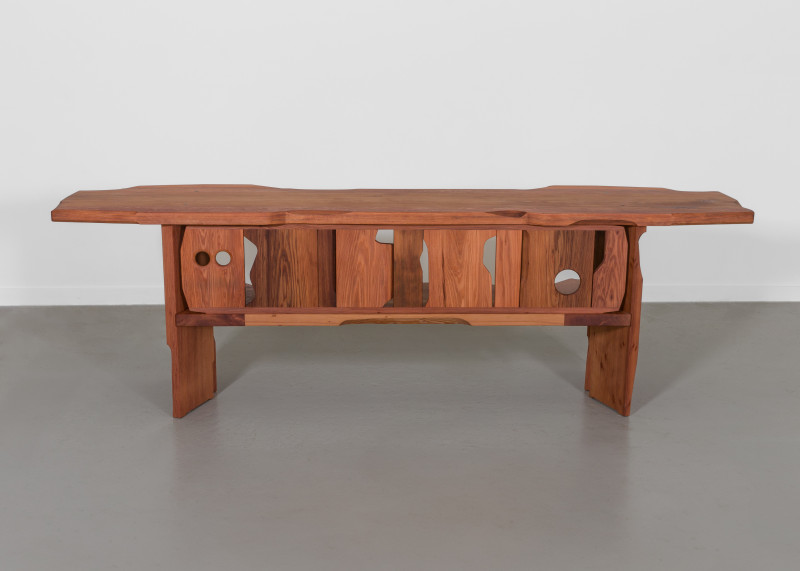

For Design Miami 2024, we presented four pieces commissioned by Blunk Space – two large shelves, a credenza, and a stool – to create a cohesive scene, all crafted from carefully salvaged redwood during our residency in Inverness, California. These works explore the relationship between material history, craftsmanship, and function, inspired by JB Blunk’s legacy and our time staying in the house he created.
The shelves combine sculptural form with practical use: the wall-mounted piece highlights texture and shape, while the freestanding unit offers flexible spatial presence. The credenza reveals the character of reclaimed timber through its rich patina and imperfections. The stool, simple and tactile, invites intimate interaction and warmth.
Together, the collection honours tradition while addressing contemporary design needs. The presentation received the Best CurioPresentation award, recognising its thoughtful and resonant approach. We exhibited alongside Alana Burns, JB Blunk, and Adam Pough.

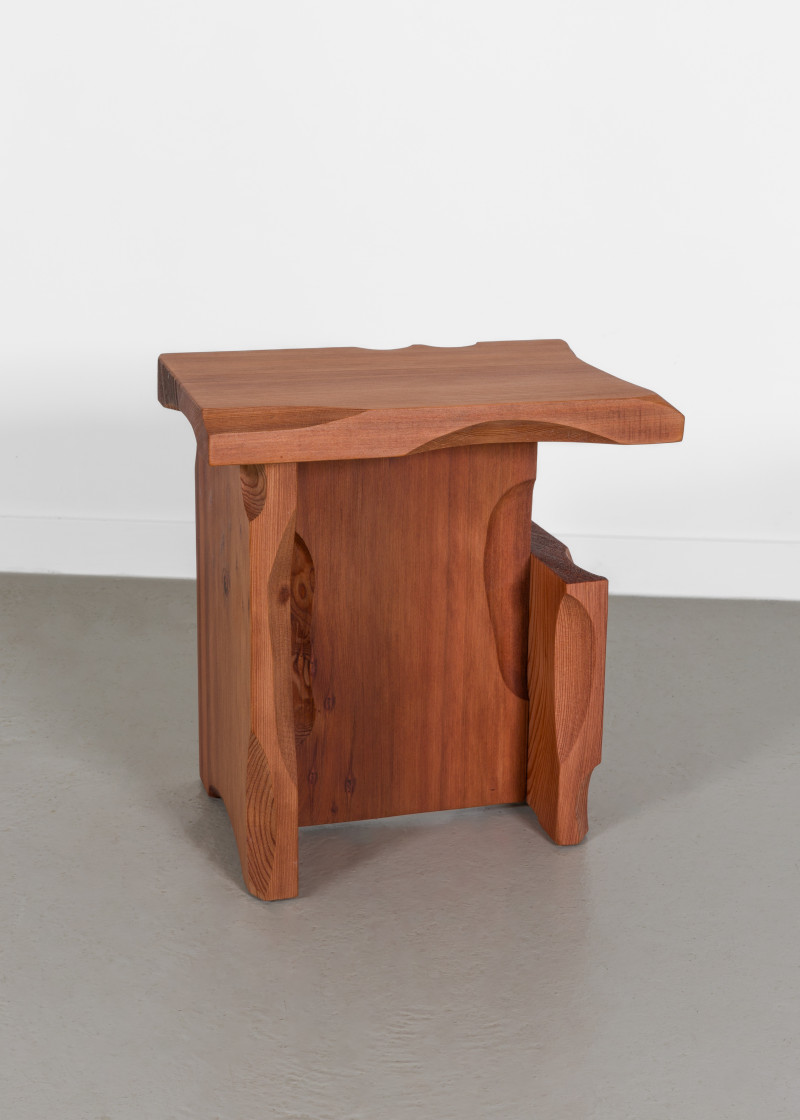
For Design Miami 2024, we presented four pieces commissioned by Blunk Space – two large shelves, a credenza, and a stool – to create a cohesive scene, all crafted from carefully salvaged redwood during our residency in Inverness, California. These works explore the relationship between material history, craftsmanship, and function, inspired by JB Blunk’s legacy and our time staying in the house he created.
The shelves combine sculptural form with practical use: the wall-mounted piece highlights texture and shape, while the freestanding unit offers flexible spatial presence. The credenza reveals the character of reclaimed timber through its rich patina and imperfections. The stool, simple and tactile, invites intimate interaction and warmth.
Together, the collection honours tradition while addressing contemporary design needs. The presentation received the Best CurioPresentation award, recognising its thoughtful and resonant approach. We exhibited alongside Alana Burns, JB Blunk, and Adam Pough.

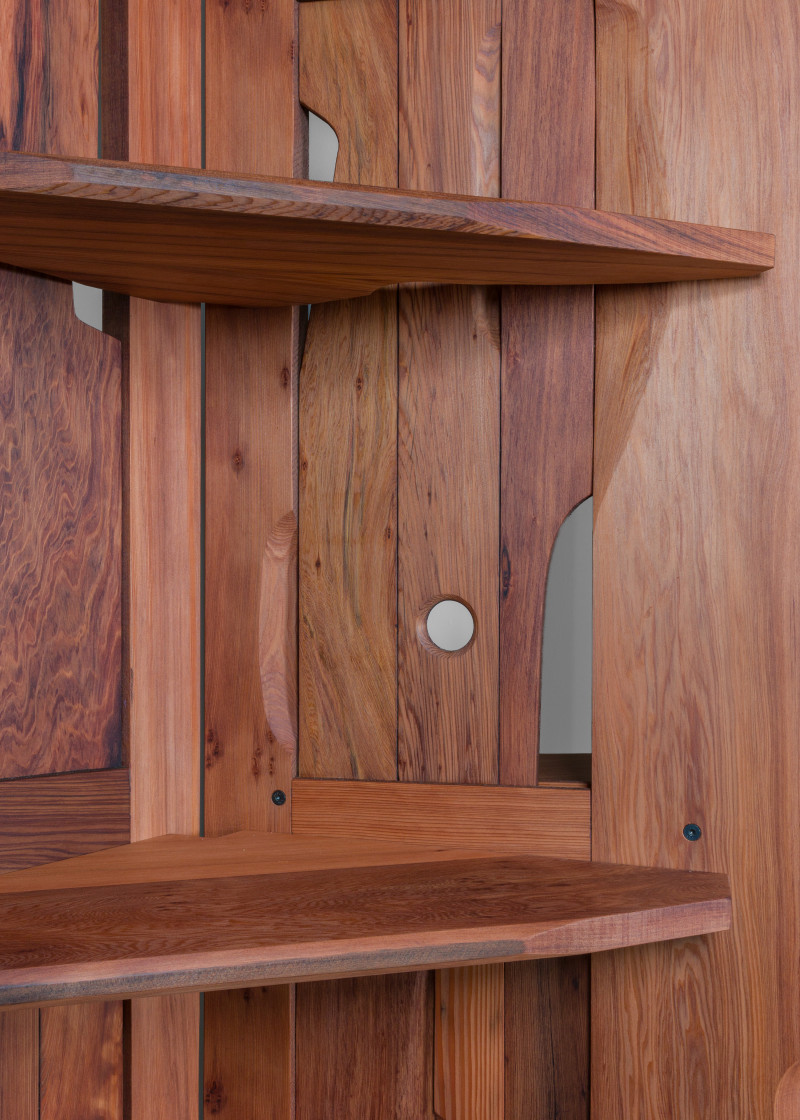
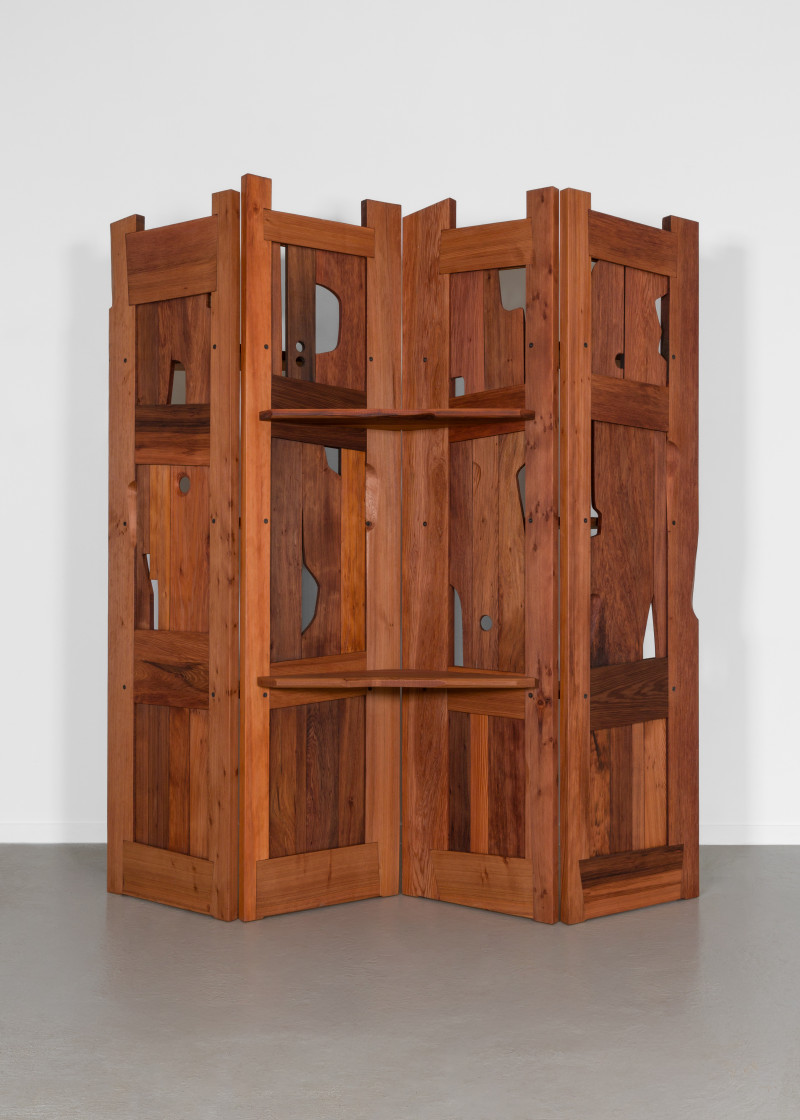
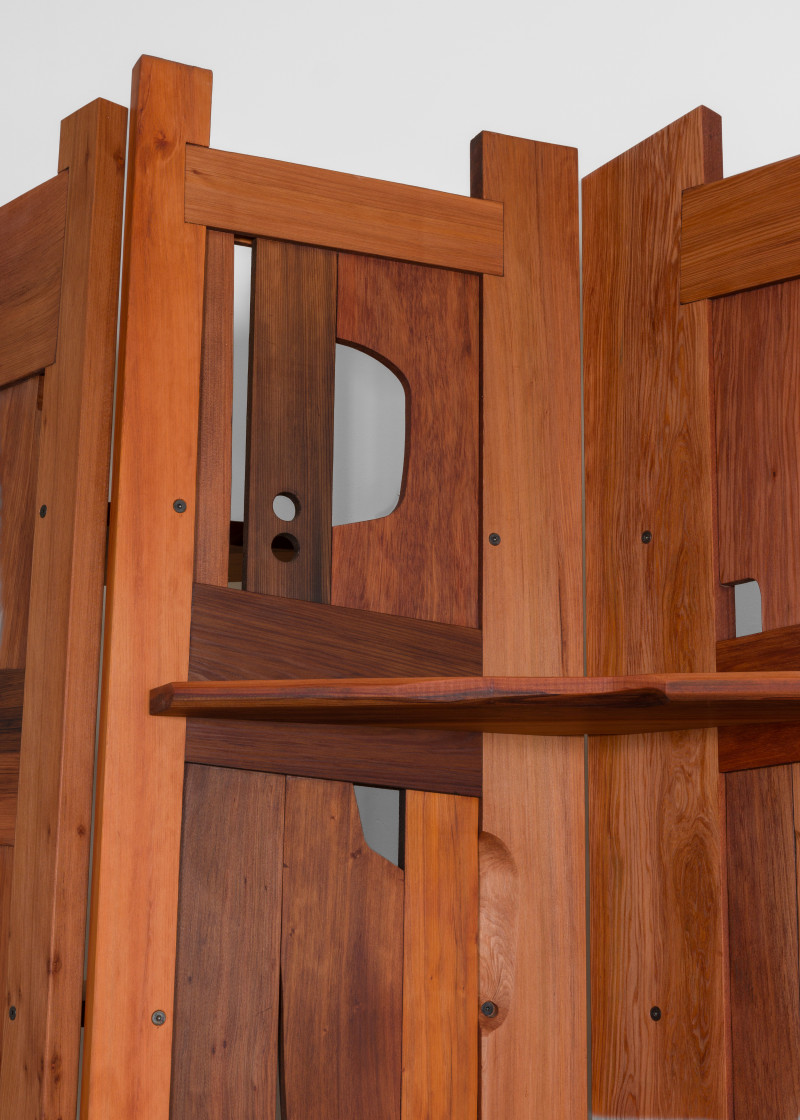
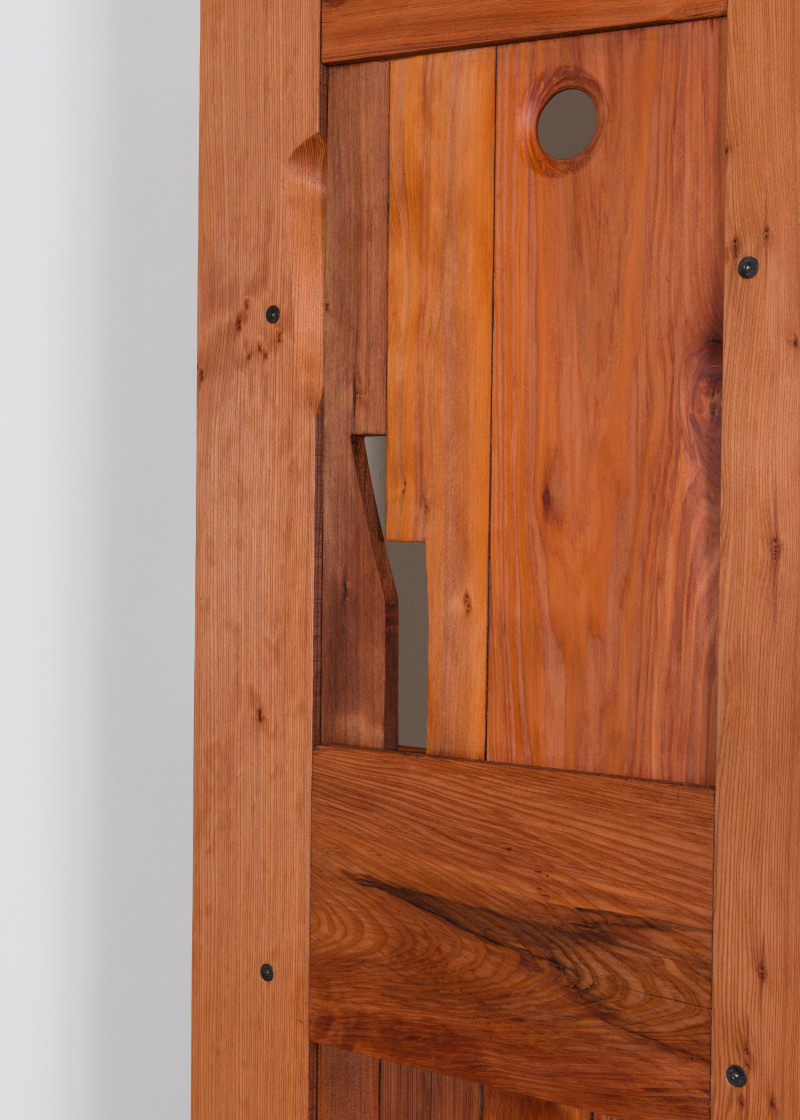
The ‘Off the Shelf’ pavilion is my very first large-scale installation, created in collaboration with the engineering firm Webb Yates.
The pavilion’s design is largely influenced by my childhood home in the countryside of Japan, which my parents built. The aesthetic is a blend of a traditional Japanese house and a European Fachhaus – my father is Japanese and my mother isAustrian. They used lime plaster, along with salvaged material from a Japanese farmhouse, and I have many memories of helping them during the construction. Being in the countryside, I felt very close to nature – observing the wind blowing through the trees, the smell after heavy rains, and the warm feeling of sunshine.
As my background is in furniture design and making, I envisioned the design as an extension of my craft. I came up with the idea of a scaled up pair of shelves supporting a roof. The simple grid structure recalls an extruded Torii shape, which is a gate usually found at the entrance of Shinto shrines. Golden wind chimes hang underneath each of the roof rafters, suspended from red and white striped ribbon – colours which signify celebration in Asia. This is a nod to the ceremonial feeling of this inaugural project commissioned by Olympia.
The end grain and sections of the wood planks are decorated in colourful paints and gold leaf. These details and colours were inspired by the 20th century movement in Austria, which was led by visionaries such as Josef Hoffman and Koloman Moser. Painting the end grain of wood structures is also a common feature of old Japanese buildings, such as temples and shrines, to prevent water damage and rot.
Hundreds of kilos worth of Portland stones, tied with the ‘Tomeishi’ technique, are affixed to the shelving structure with wedges. Not only are these beautifully displayed on the shelves, they also act as ballasts and secure the entire pavilion. The use of natural materials is further enhanced by a feeling of sunlight within. The curved roof collects rainwater, creating a waterfall effect as it splashes on the stone. The wind chimes dance in the breeze, making it both visible and audible.
Since many pavilions are often discarded after their display period, we wanted to build in a more environmentally conscious way. Our main challenge: using material “off the shelf” without permanent alteration, so that everything could be easily disassembled and reused. We were able to achieve this through techniques like clamping, wedging, and tying with rope. WhenI make furniture, I want it to last forever, so I am happy to know that all the pavilion’s materials – from the Douglas Fir planks to the Portland stone – will have another life
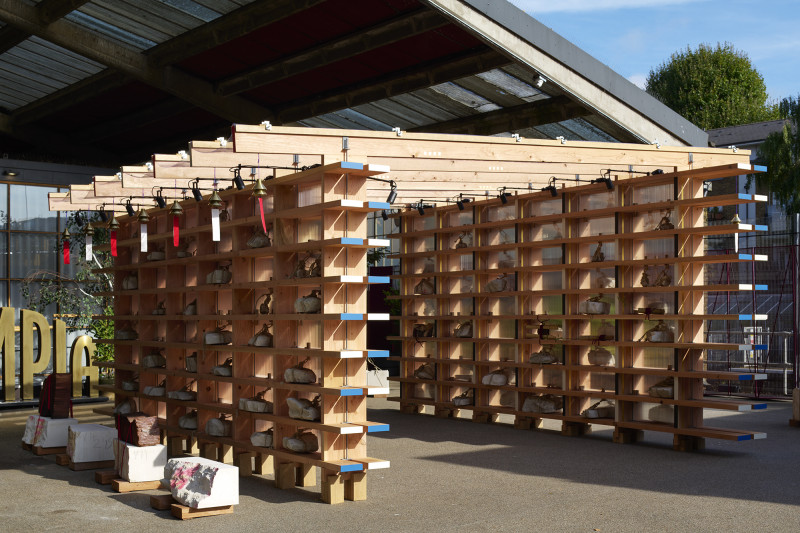
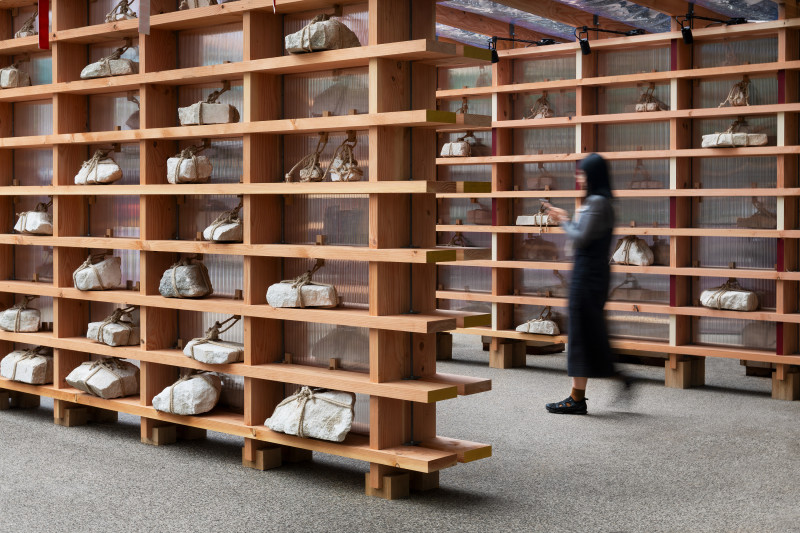
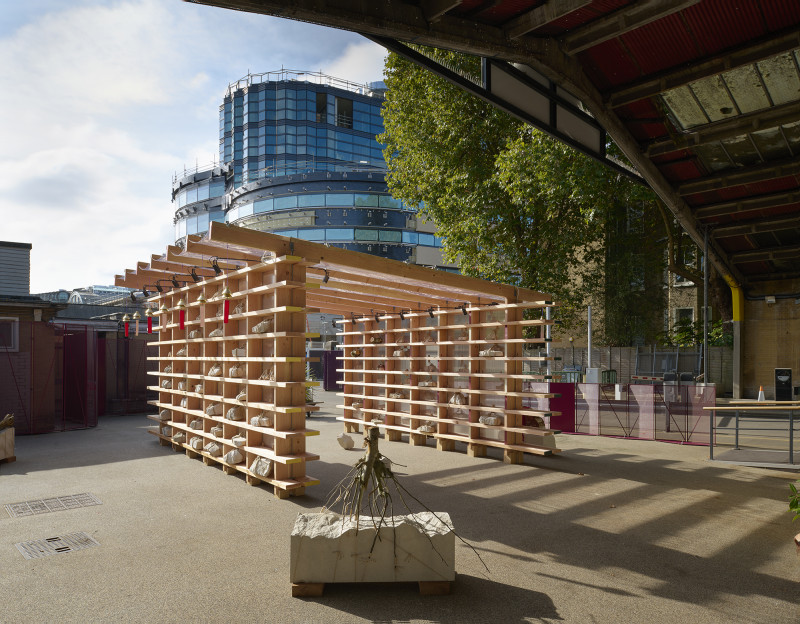
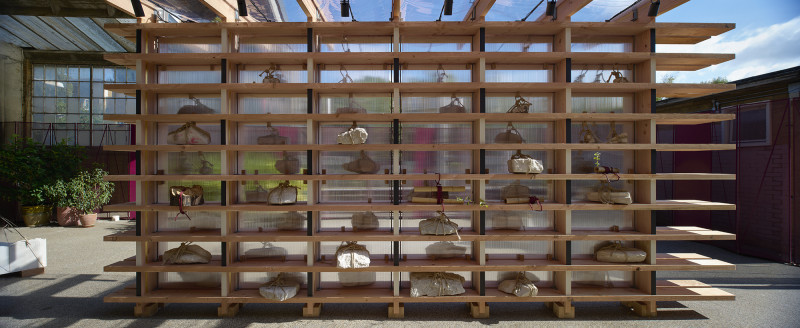
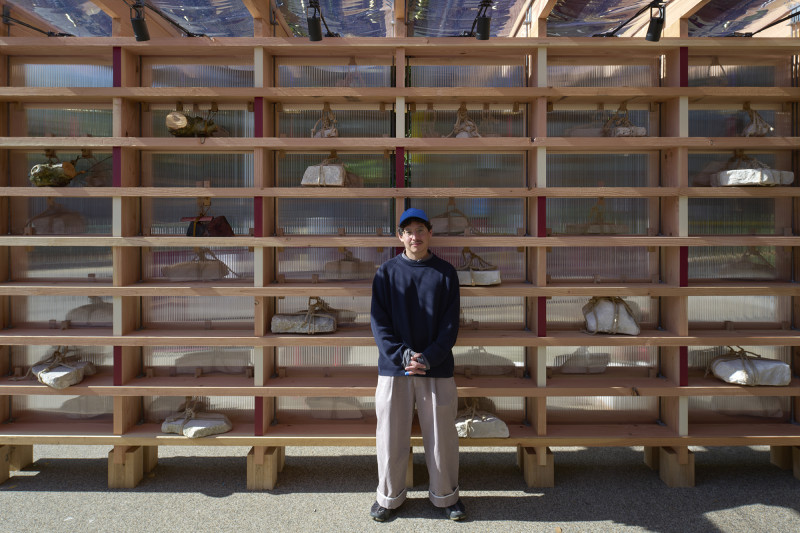
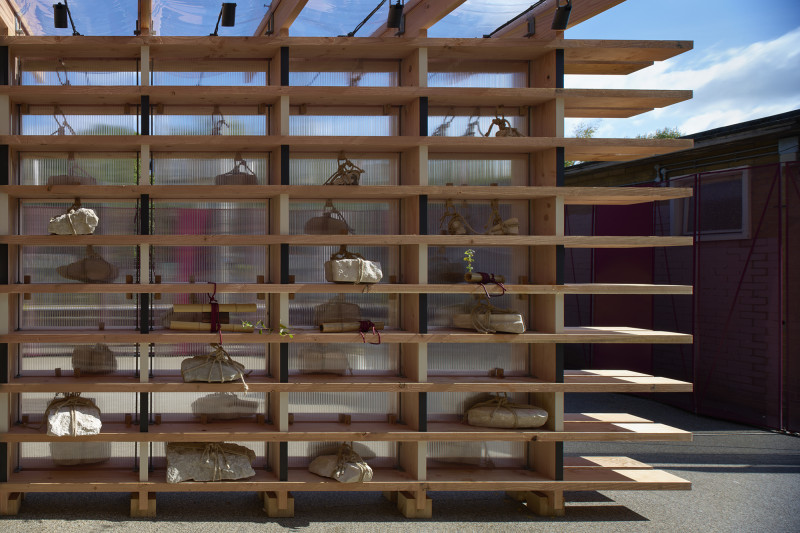
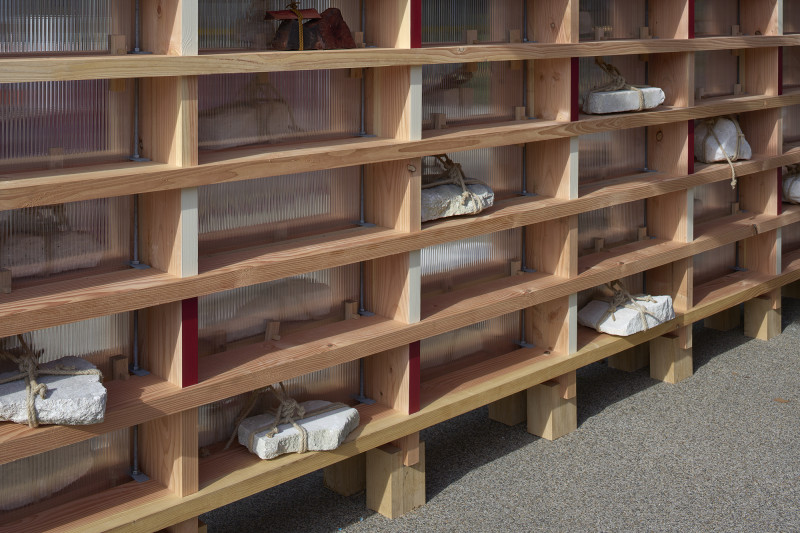
The Guest House For An Ostrich is a playful spin on your usual bird box. Inspired by the ostrich's act of burying its head in the ground when it feels threatened, we created a place that offers this same sense of security, allowing it to hide its head. The guest house is contradictorily for an Ostrich that is on the move, featuring an aerodynamic design that reflects the Ostrich’s ability to get up to speeds of 80 km/h. Remarkably, because the ostrich ran so fast whilst wearing this that the aerodynamic friction scorched the front of the house.
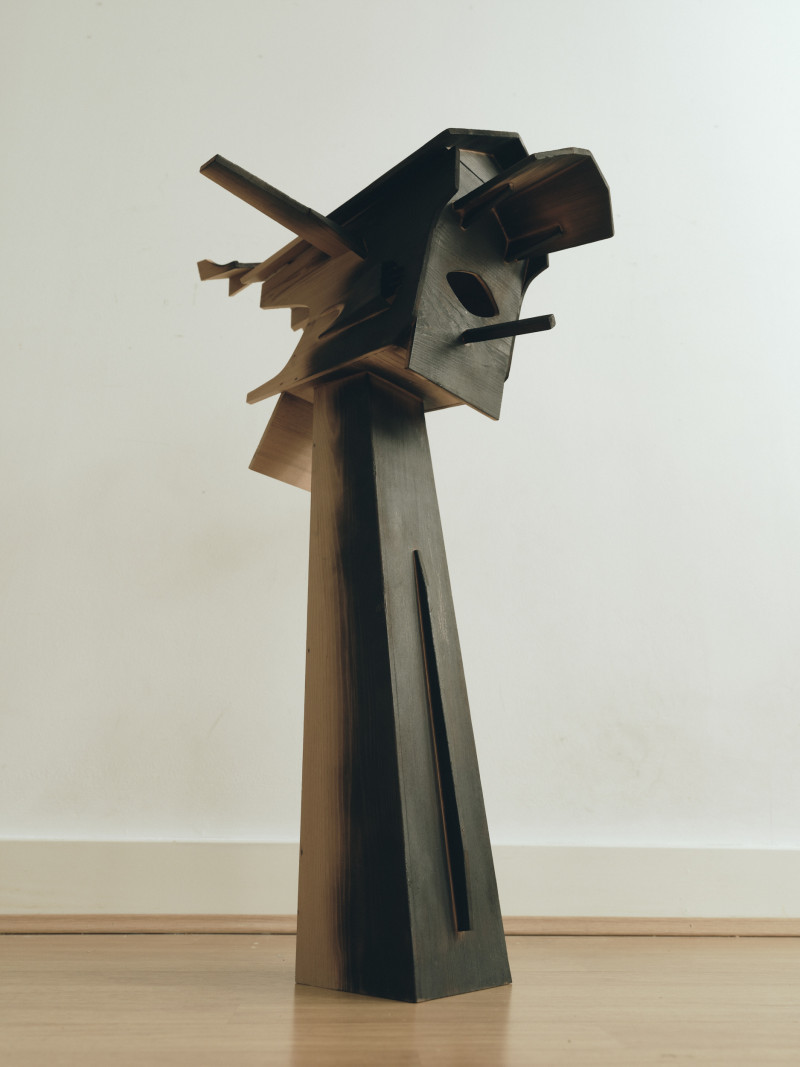
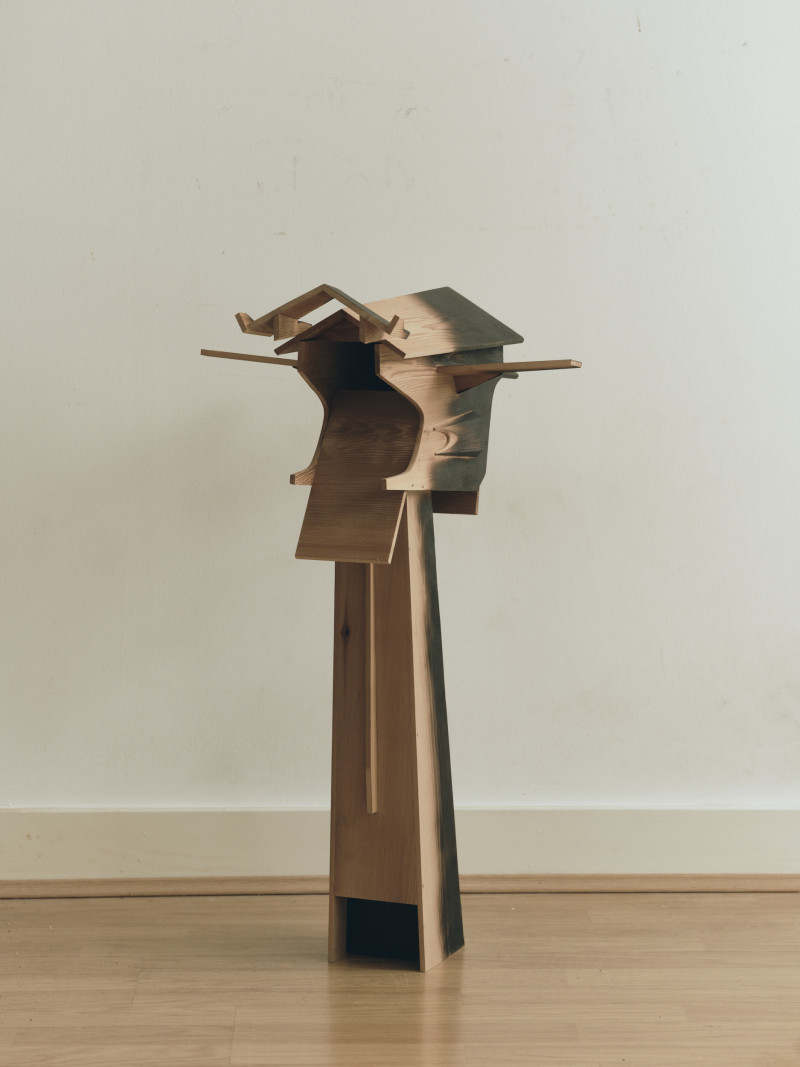
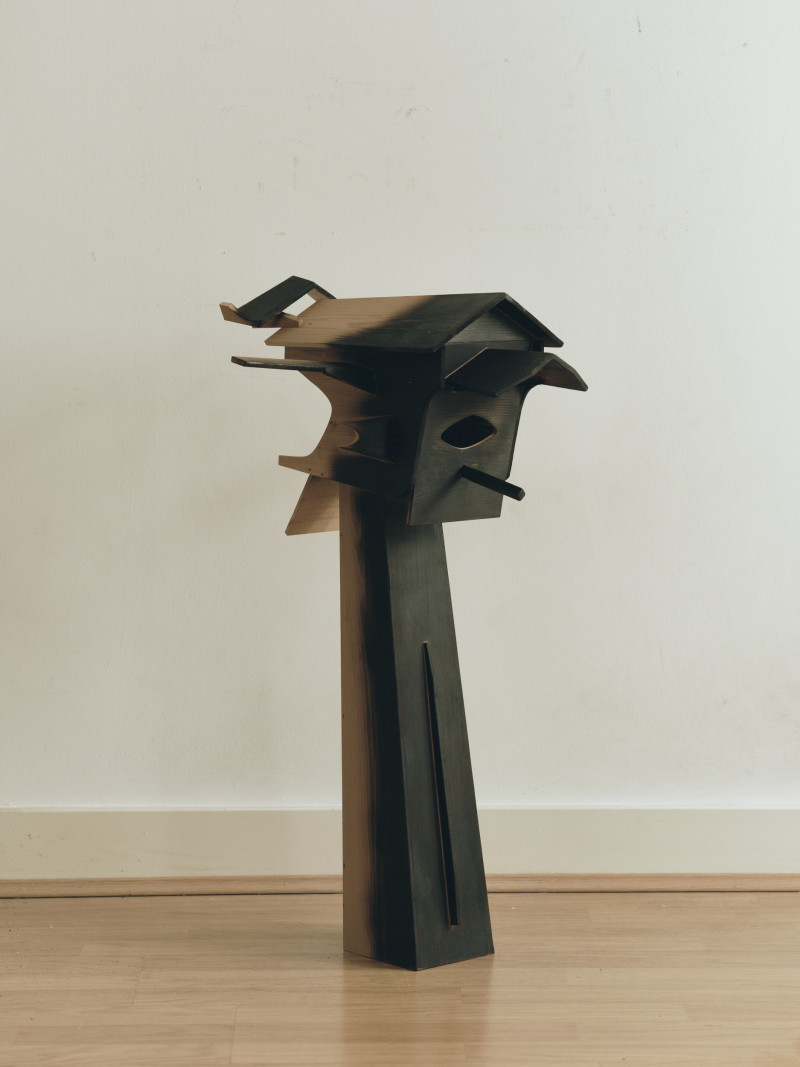
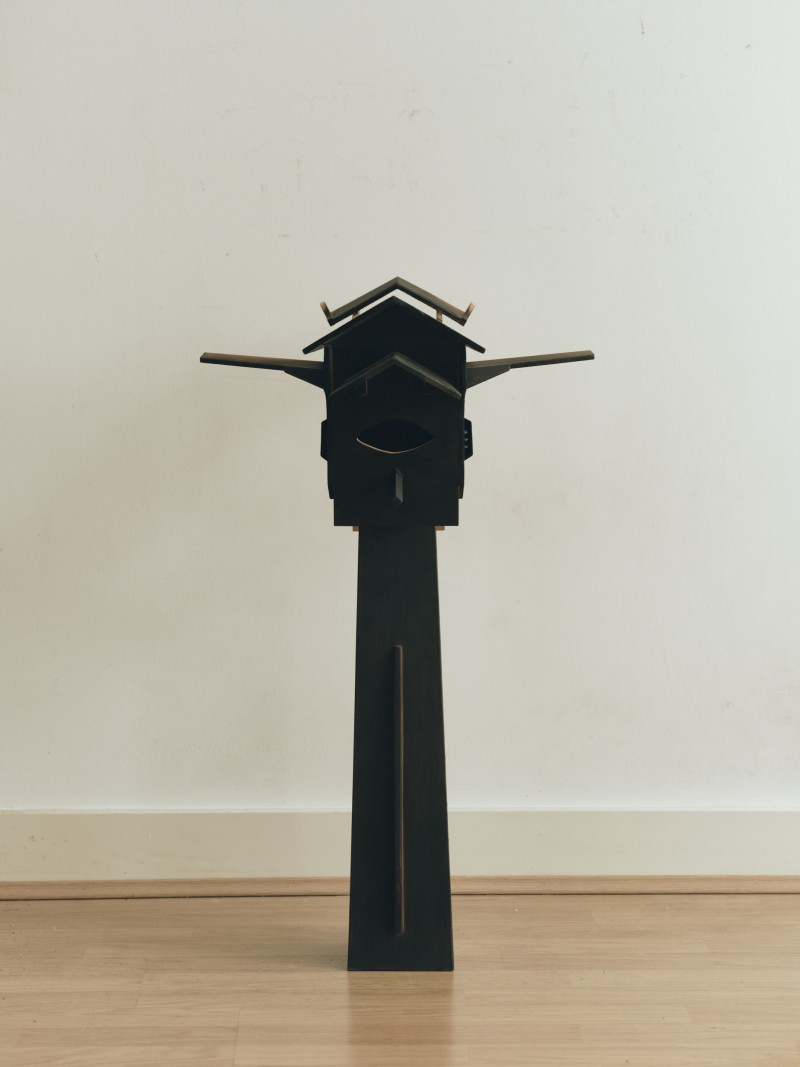
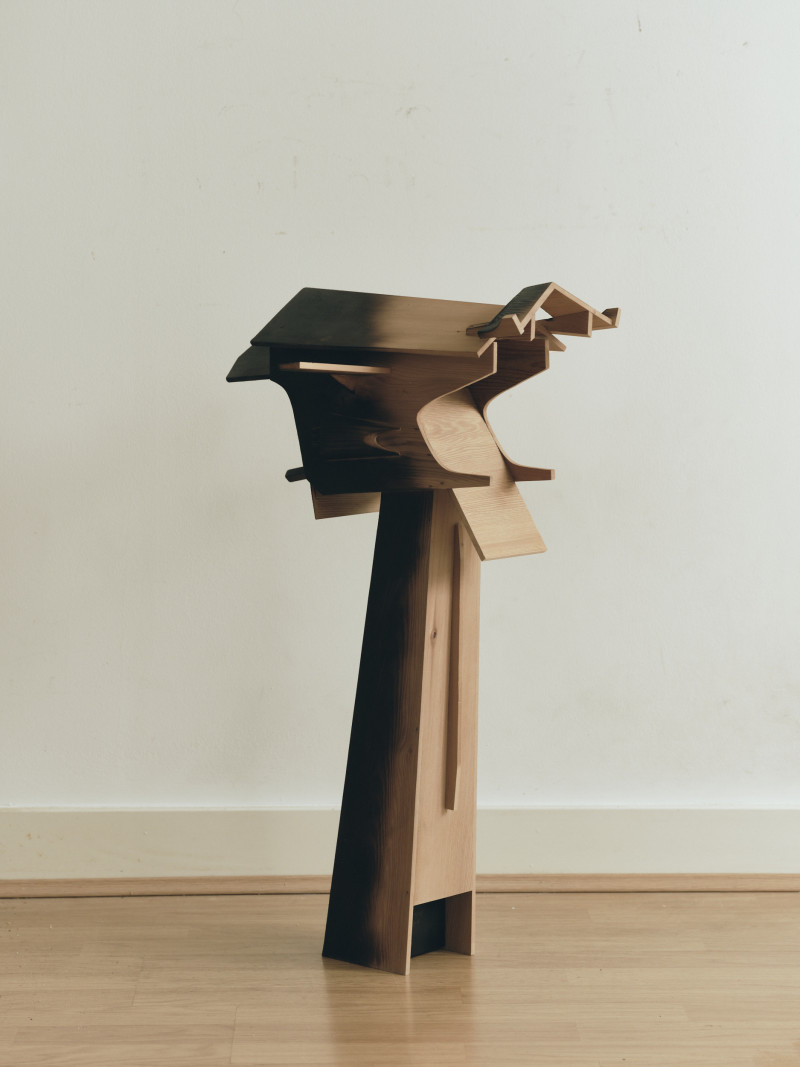
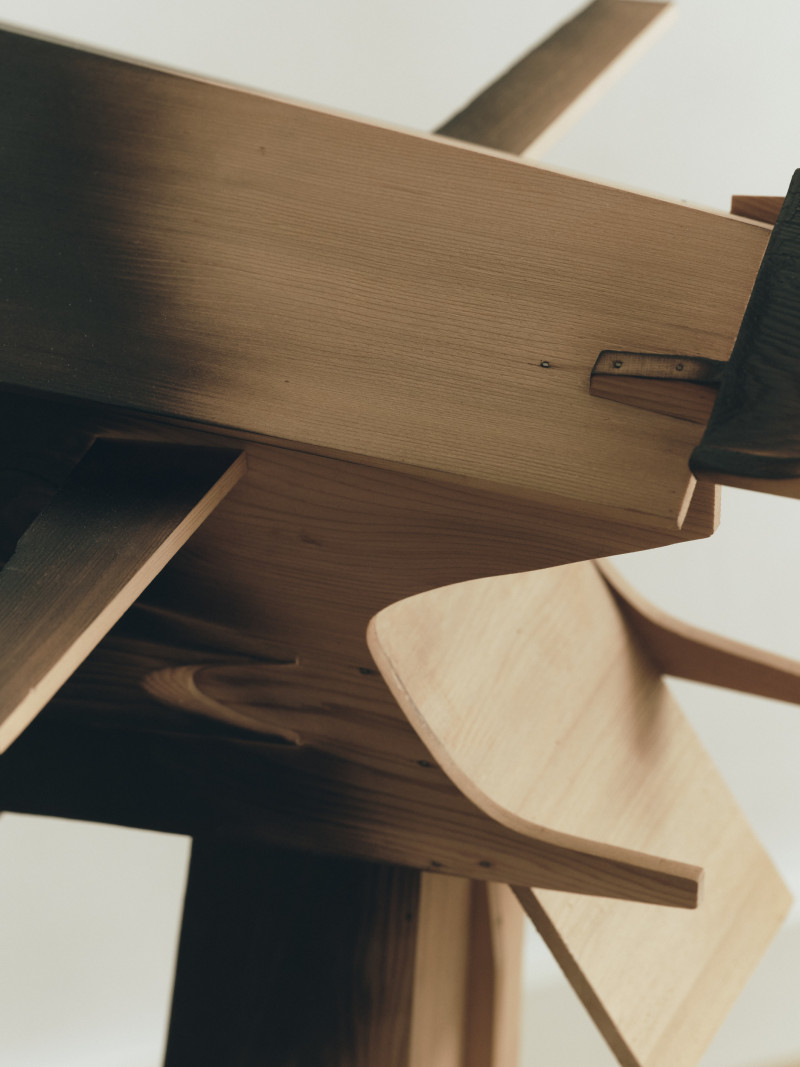
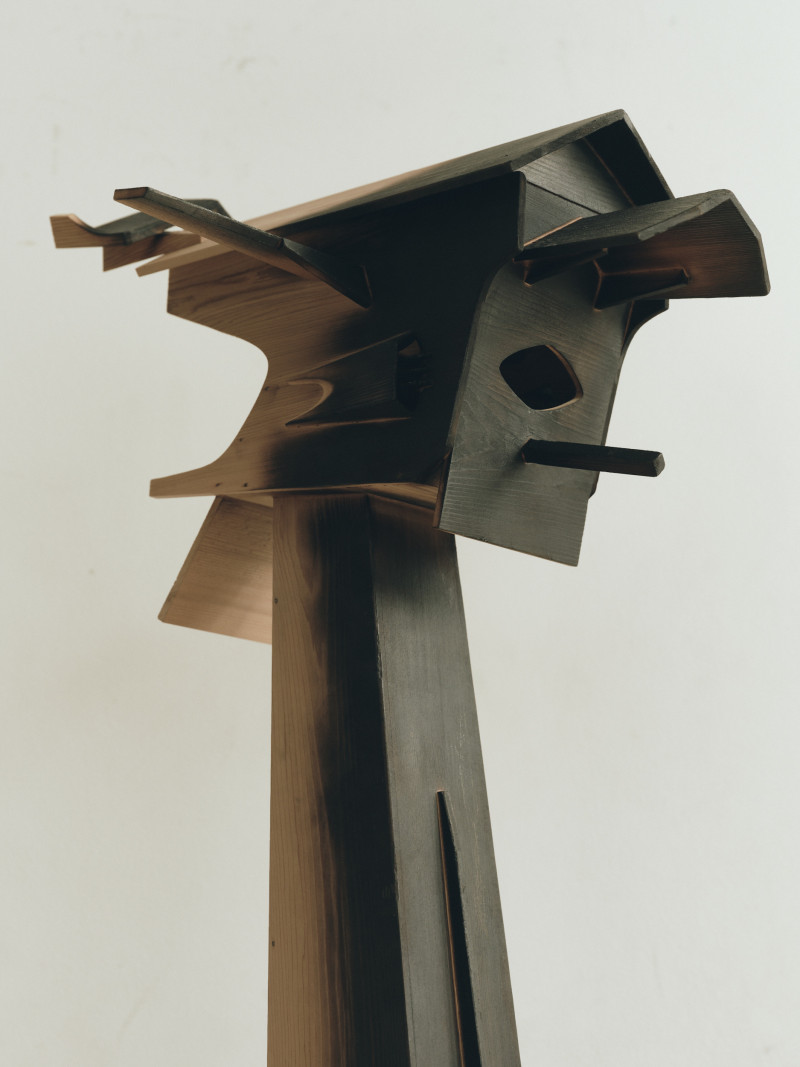
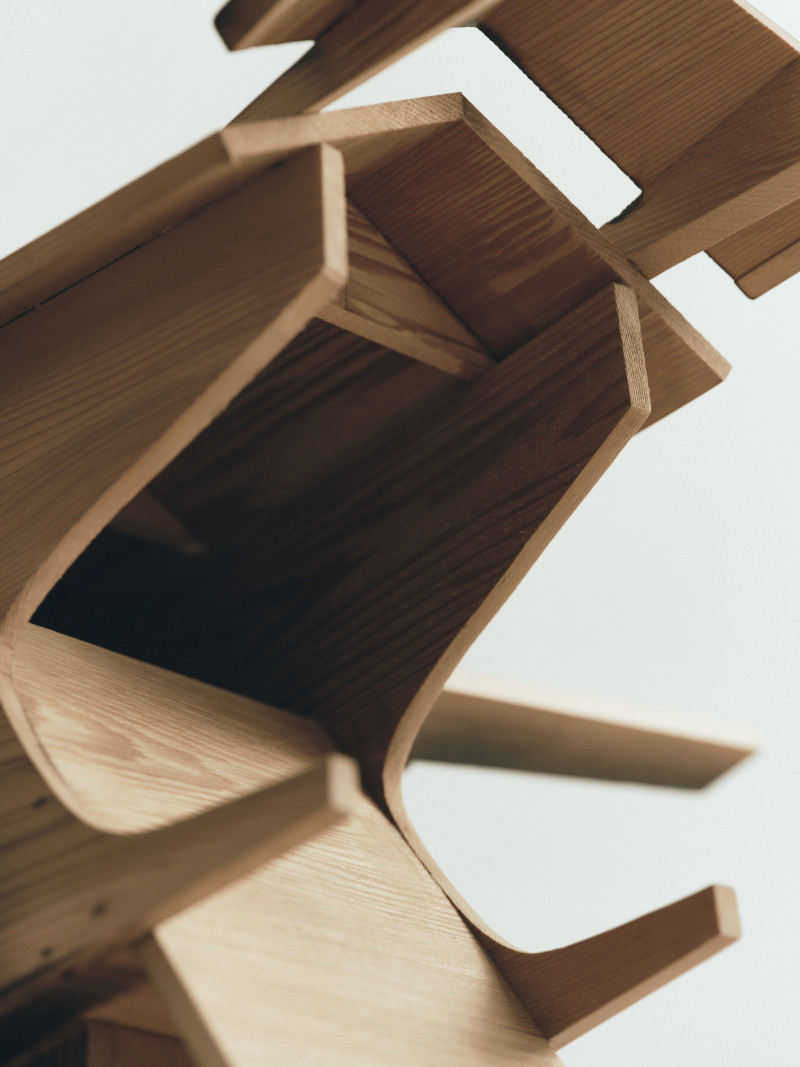
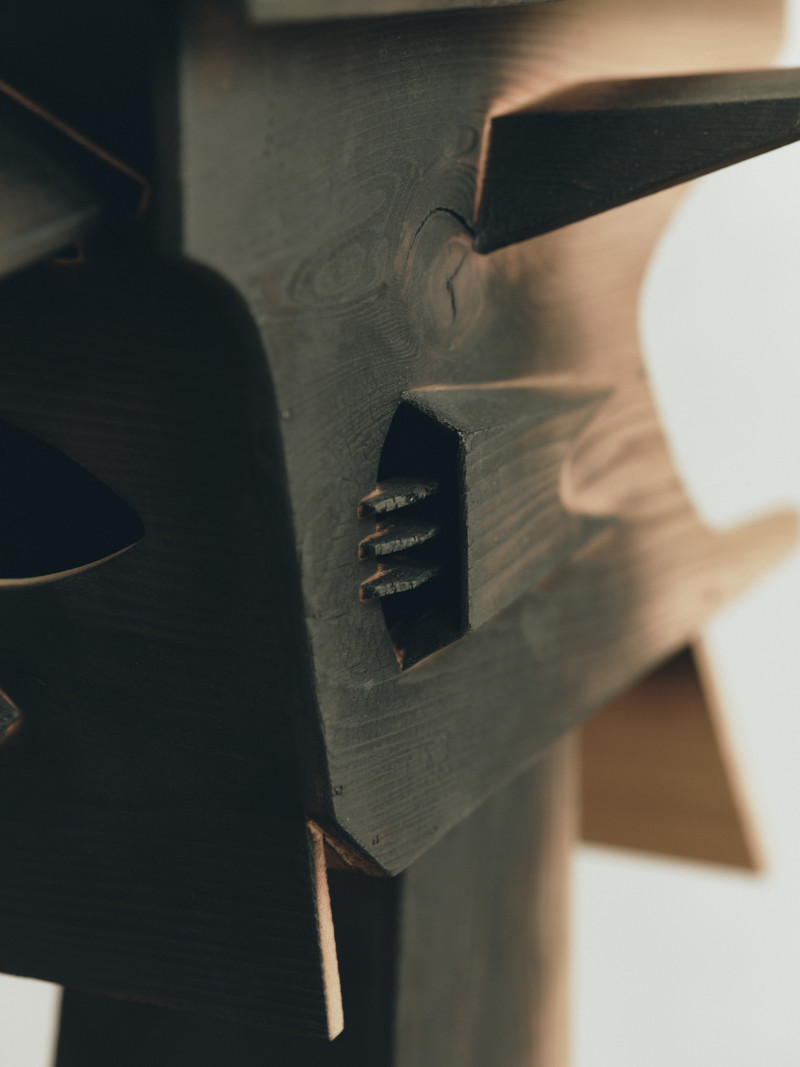
What began during the pandemic with the “Positive Chair” continued with Nancy’s table, which was featured in the exhibition “R for Repair” at the V&A.
The latest piece, originally a side table with carefully crafted veneer work, was discovered at an antiques market and had spent its last years in a London attic.
When the owner asked Kobayashi to repair the table, they mentioned that they actually needed a small shelf for their London apartment.
Kobayashi studied the construction of the three-legged table and reassembled the entire piece in a completely new way. When he looked at the finished piece, he recognized the bat-like shape – a table that had transformed into a bat during its time in the attic.
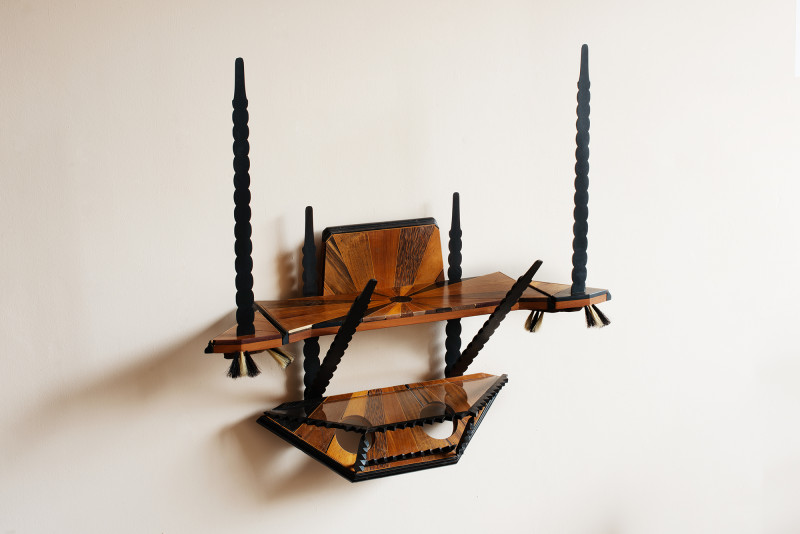
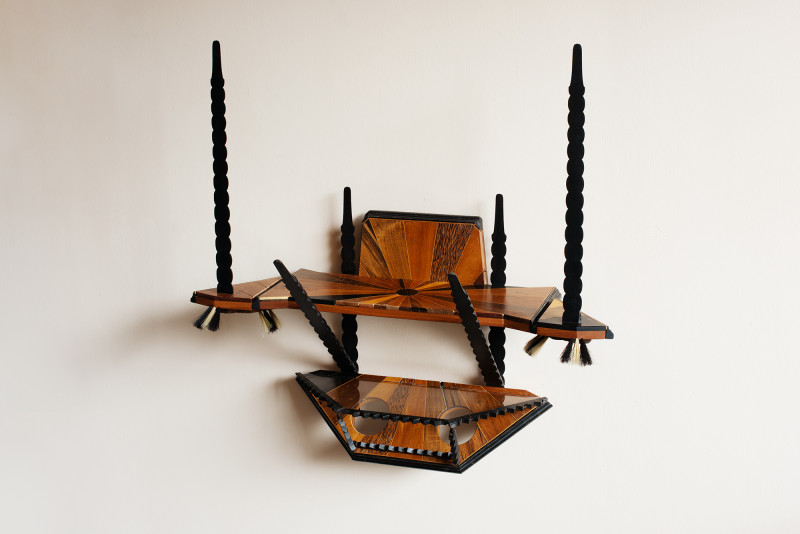
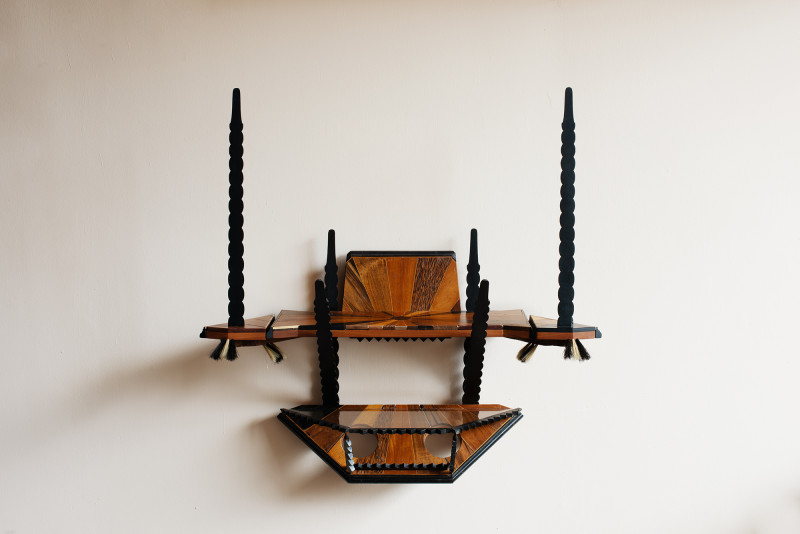
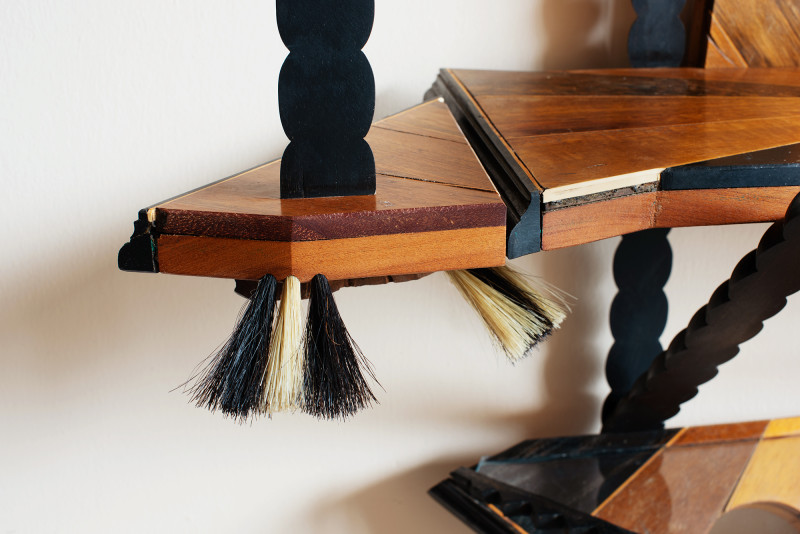
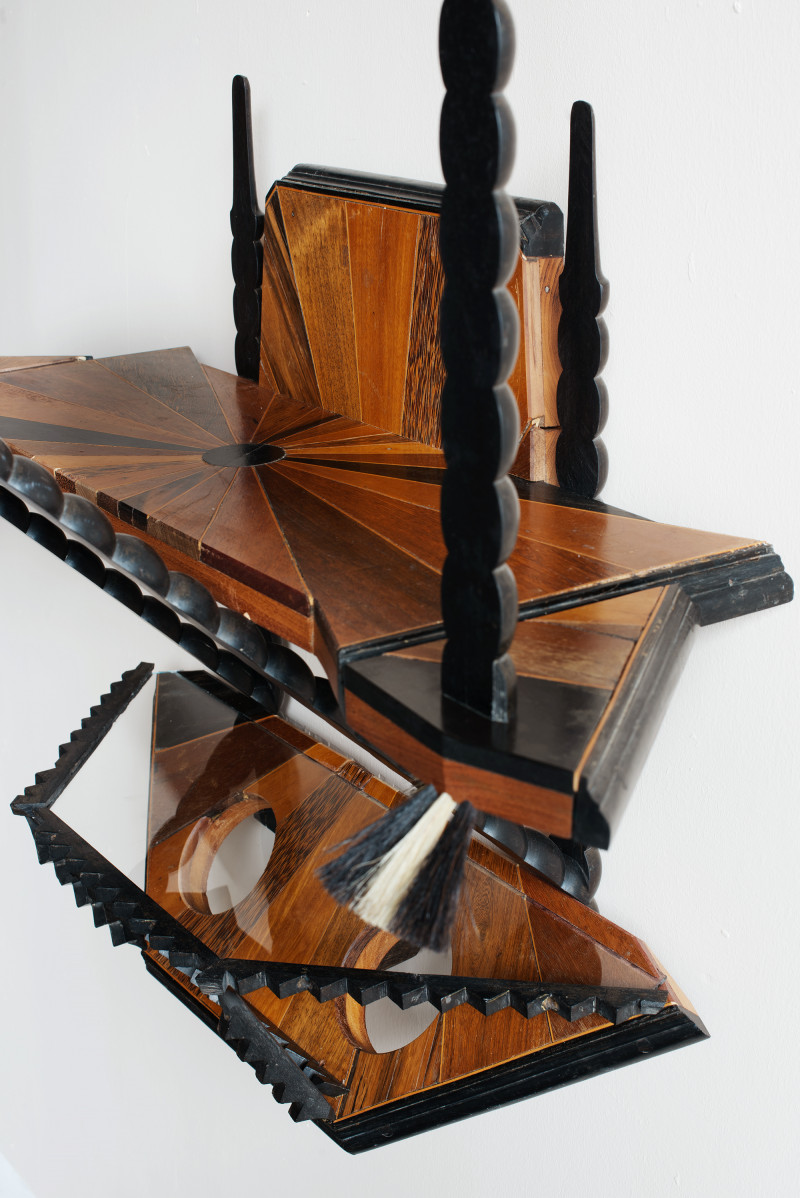
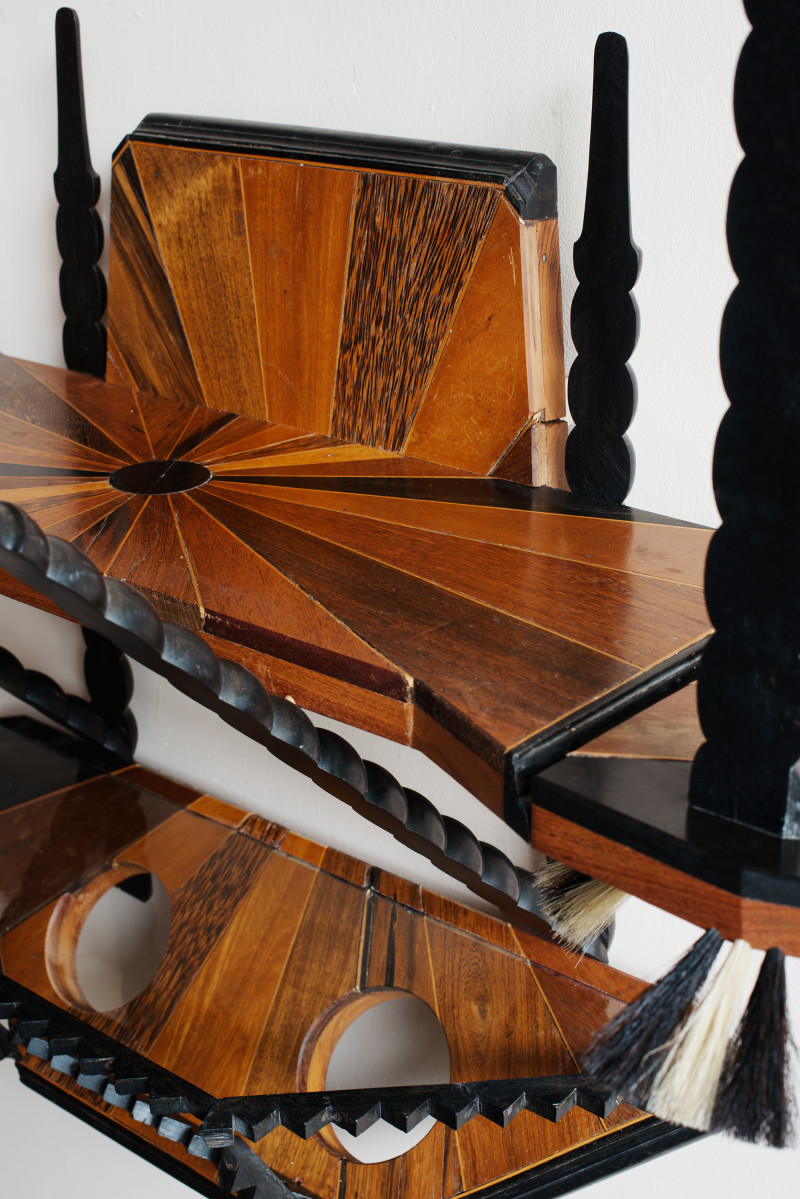
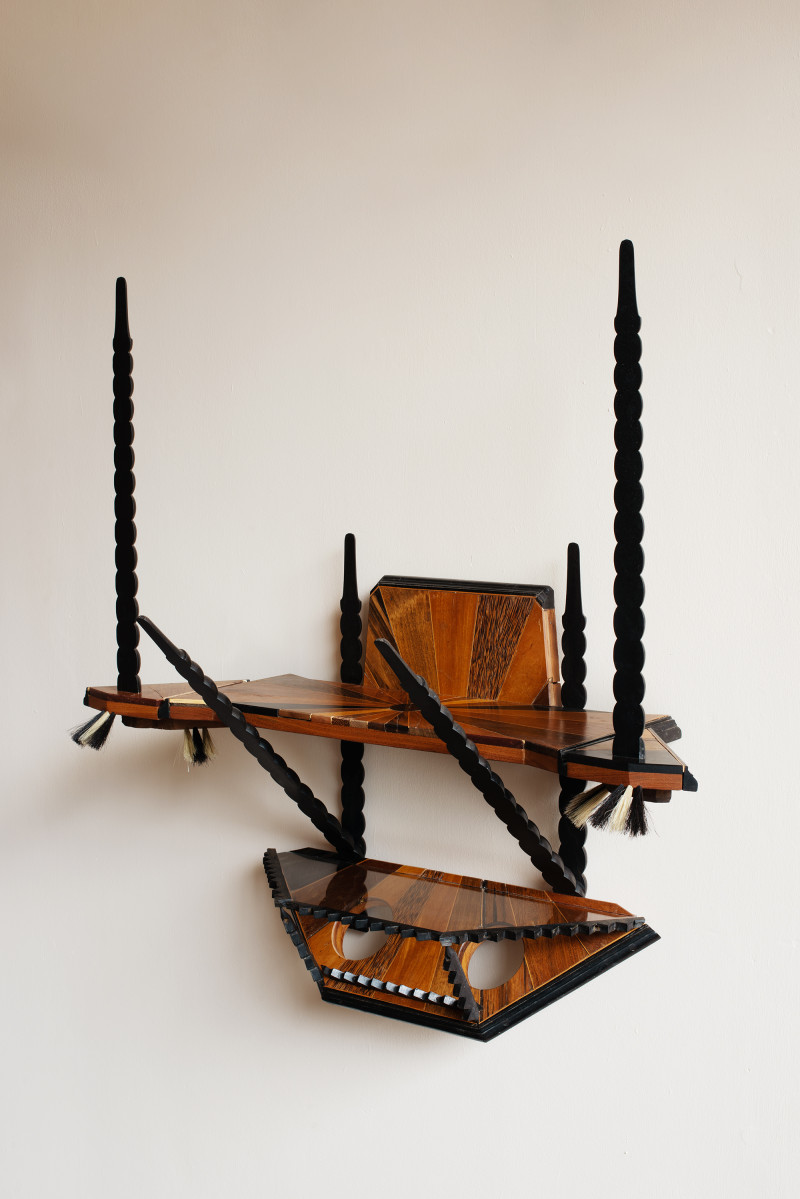
The modular “Furikake lanterns” are available in both suspended and wall-mounted versions. In collaboration with Flavia Brändle, Kobayashi embarked on an exploration of the technique of bending wood by precisely cutting it with a Japanese saw at predetermined positions. Given Brändle’s interest in modularity and systems, the duo experimented with various combinations and mounting directions, introducing a dynamic element to the project.
The result is a design that radiates tranquility, effectively simplifying the inherent complexity of a modular product. Kobayashi added a touch of vibrancy reminiscent of the Japanese culinary tradition, where pure rice is transformed into a delightful dish with the addition of Furikake flakes. Much like the colorful sprinkles on the Soji Paper which elevate the aesthetics the Furikake Lanterns.
In a special edition for Peter Pilotto and Christopher de Vos, two wall-mounted lanterns and one large lantern were created, adorned with their latest textile collection
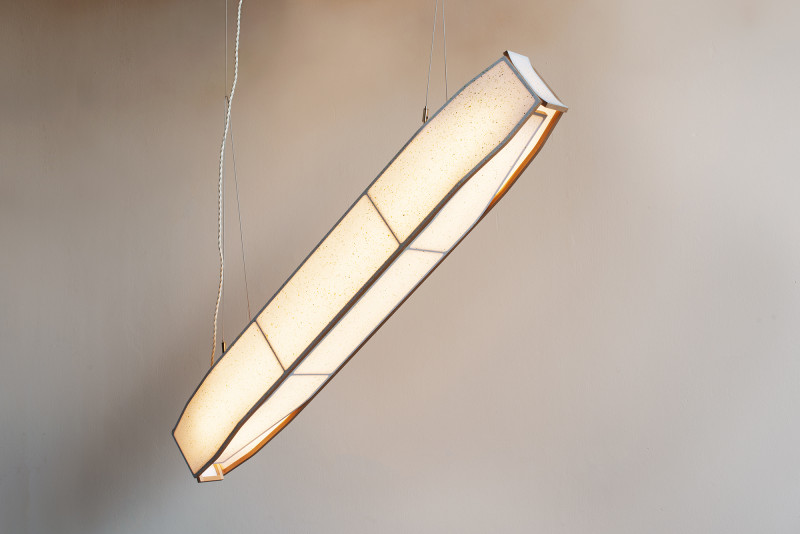
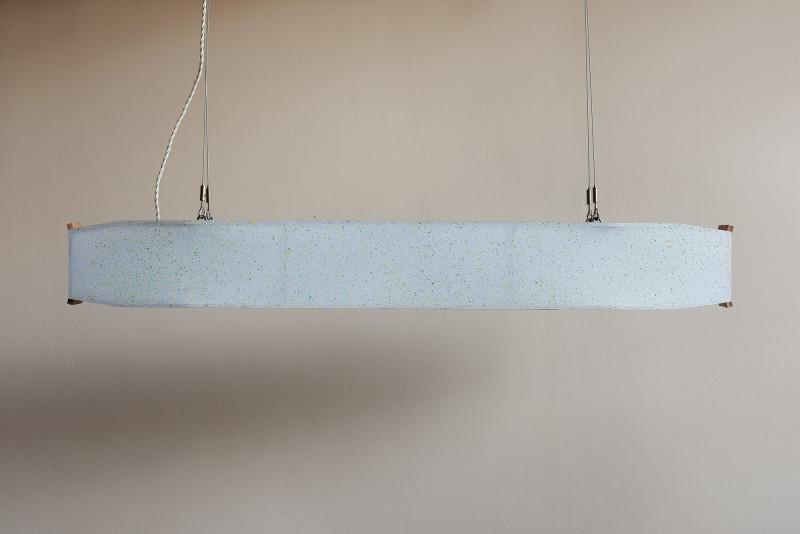
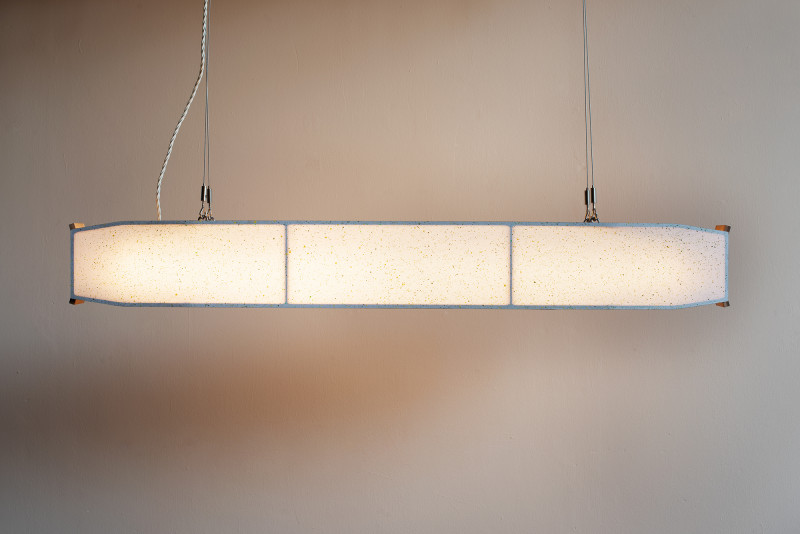
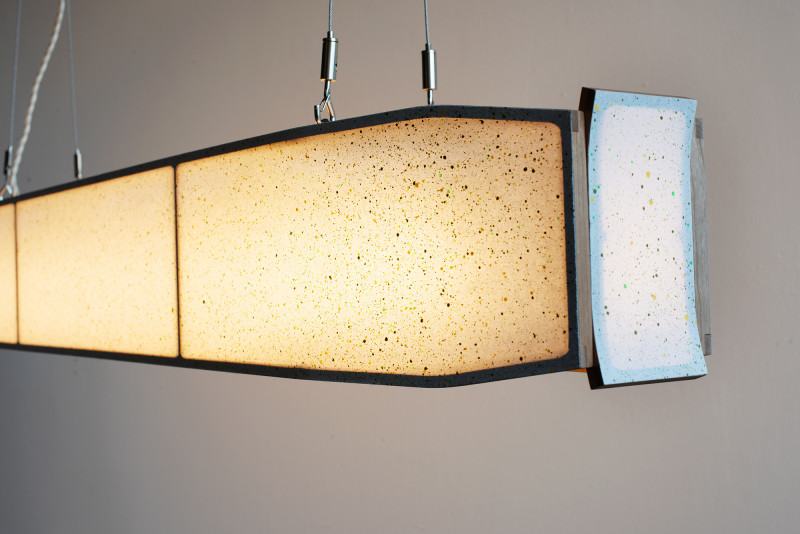
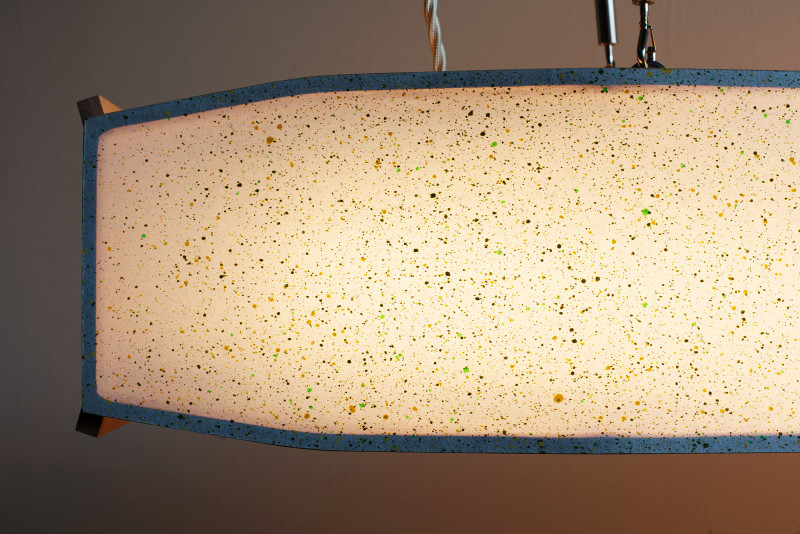
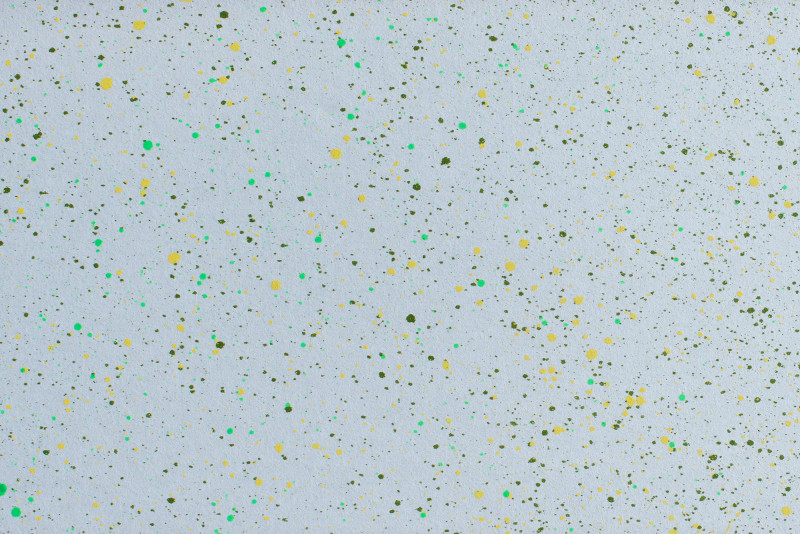
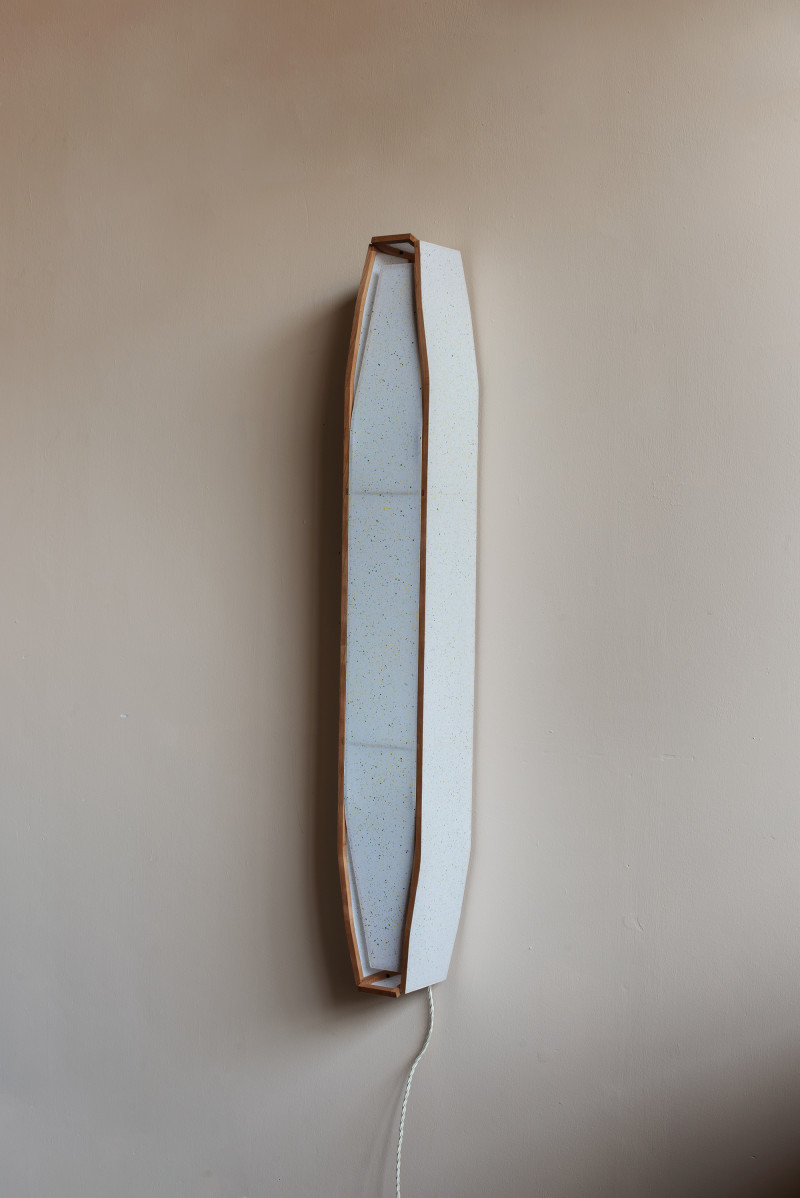
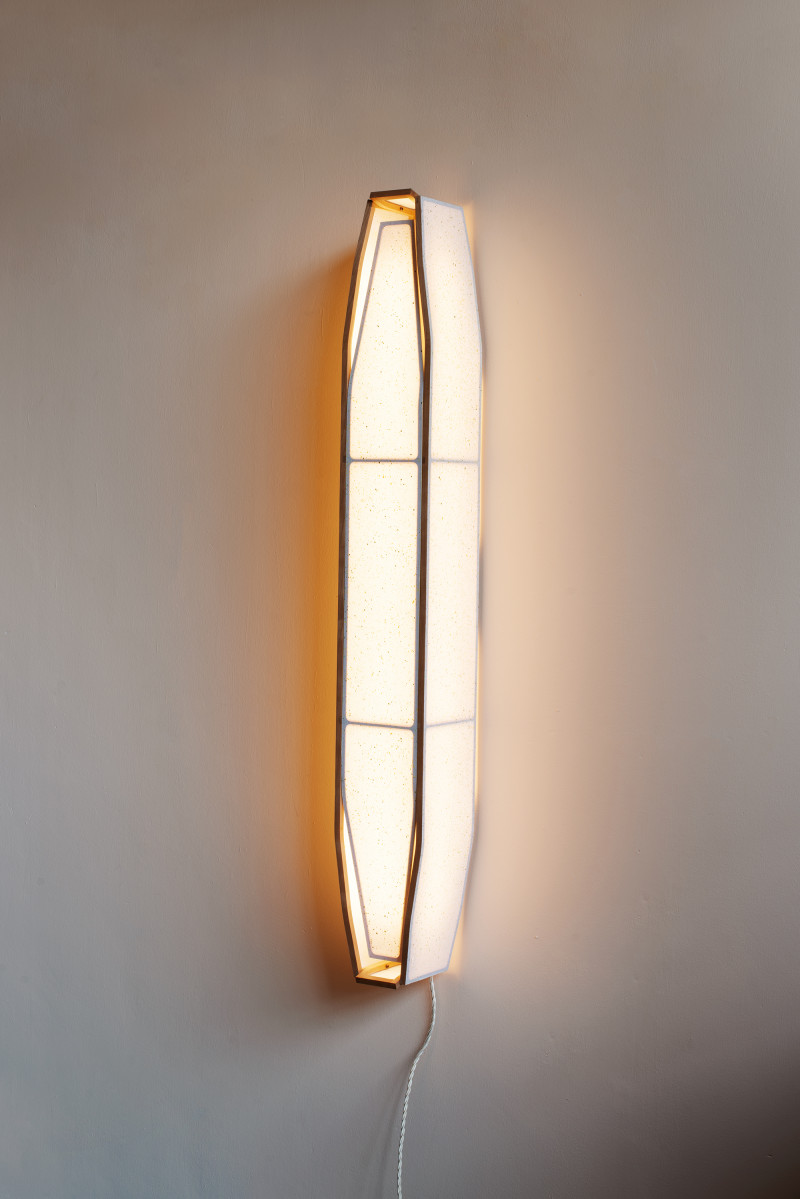
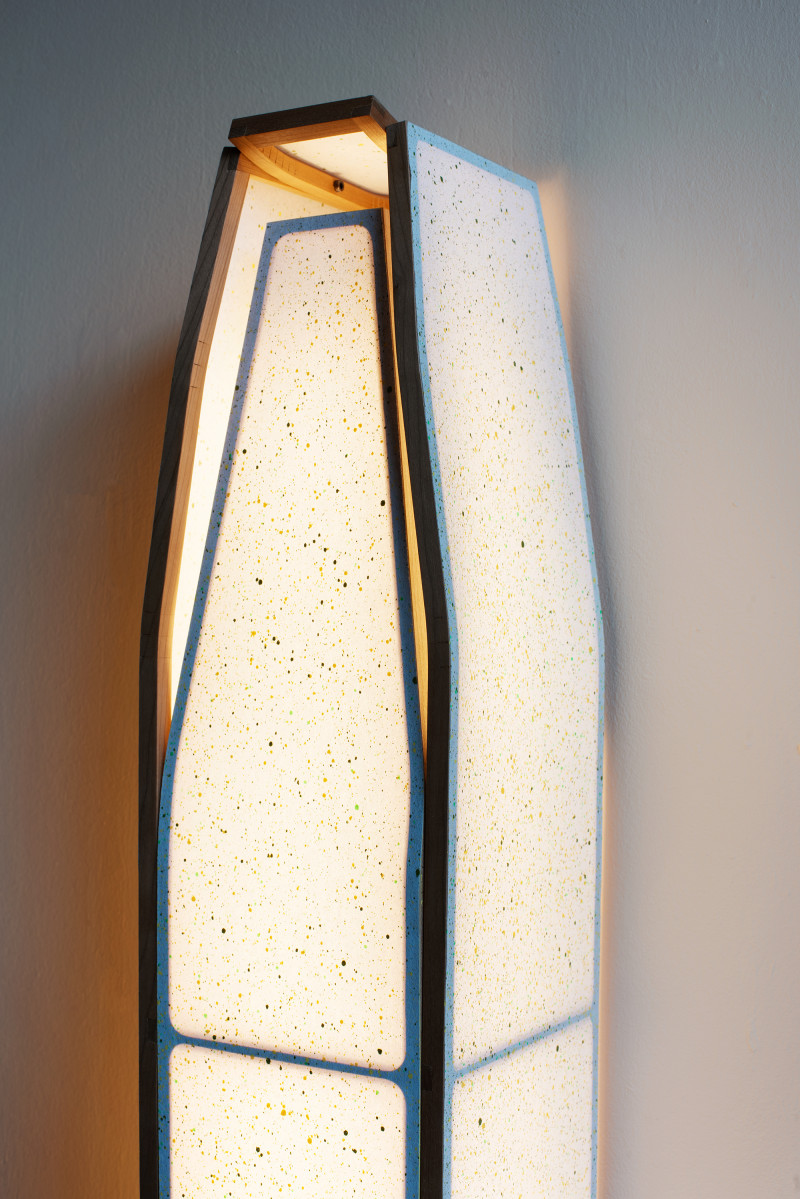
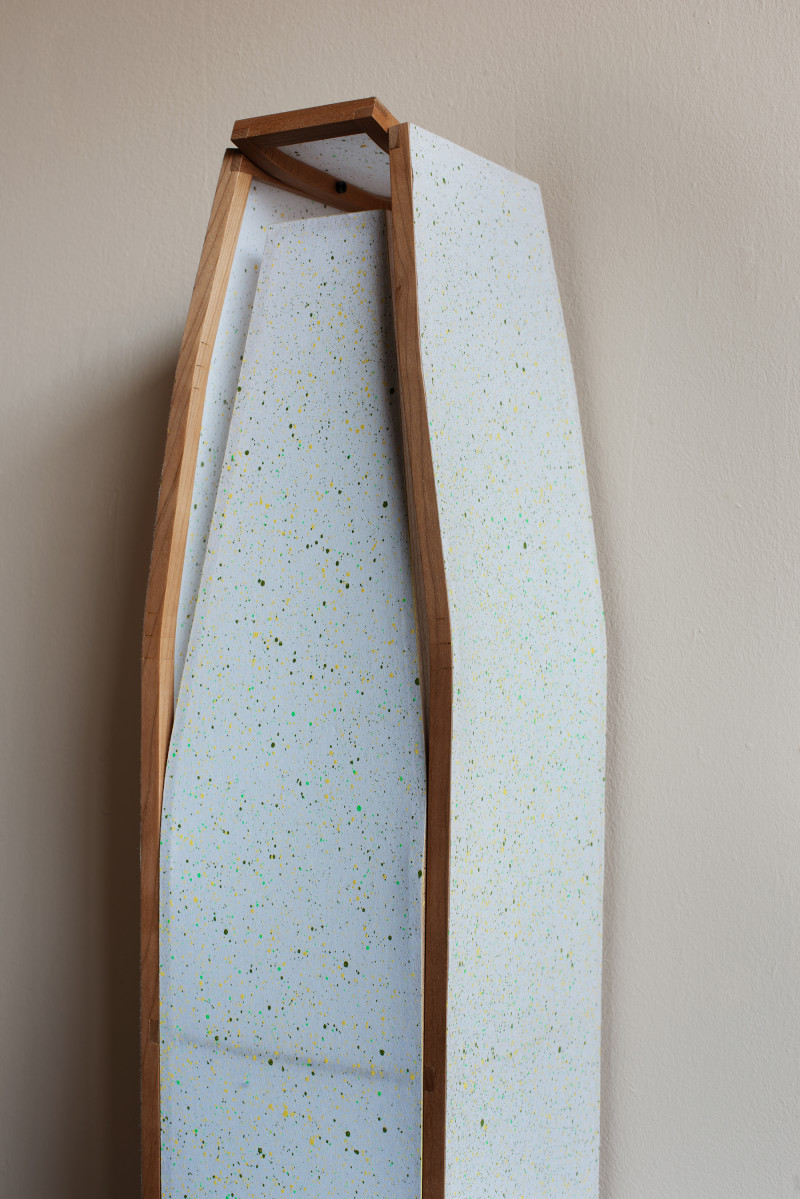
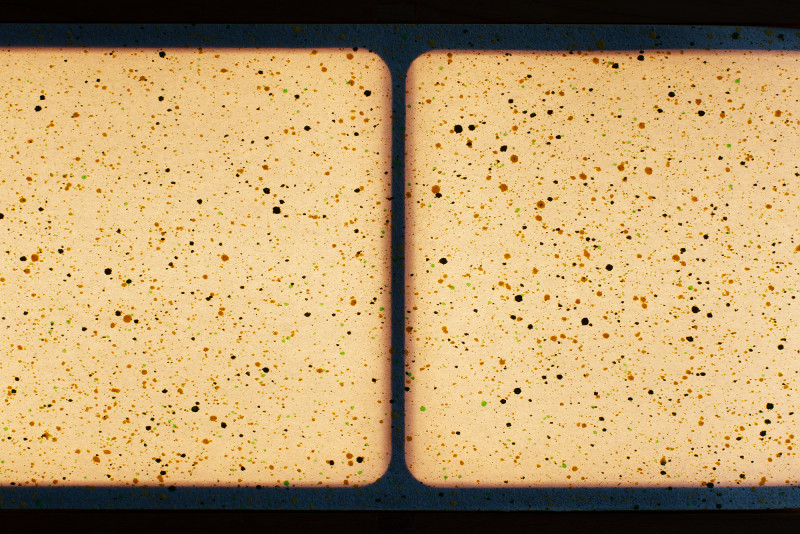
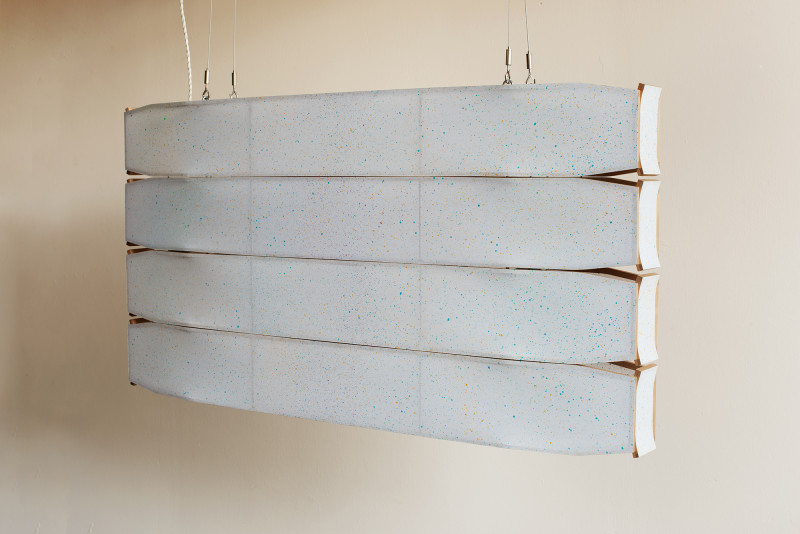
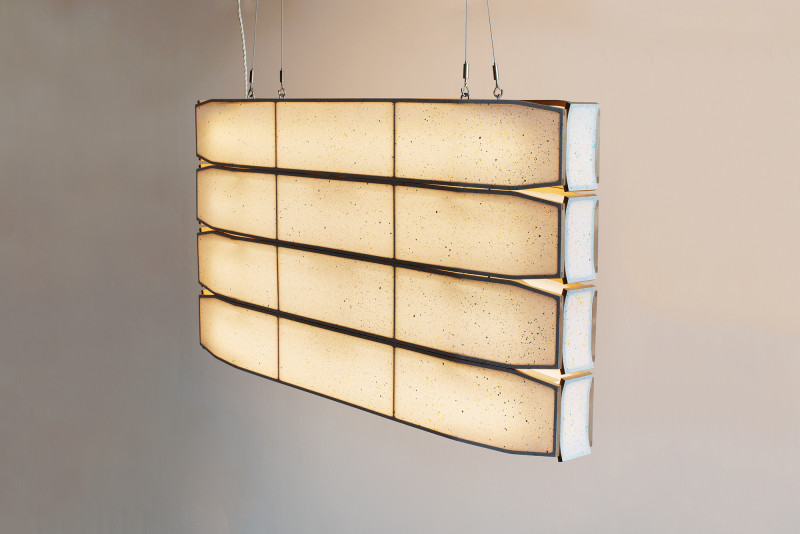
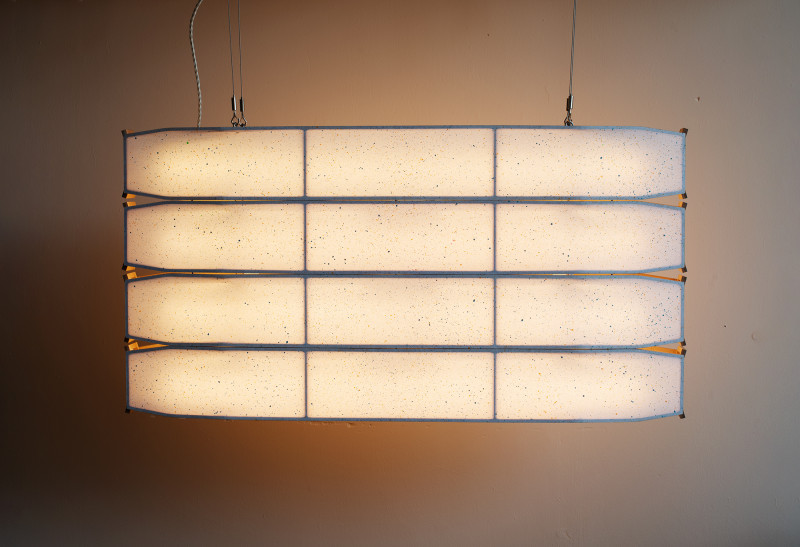
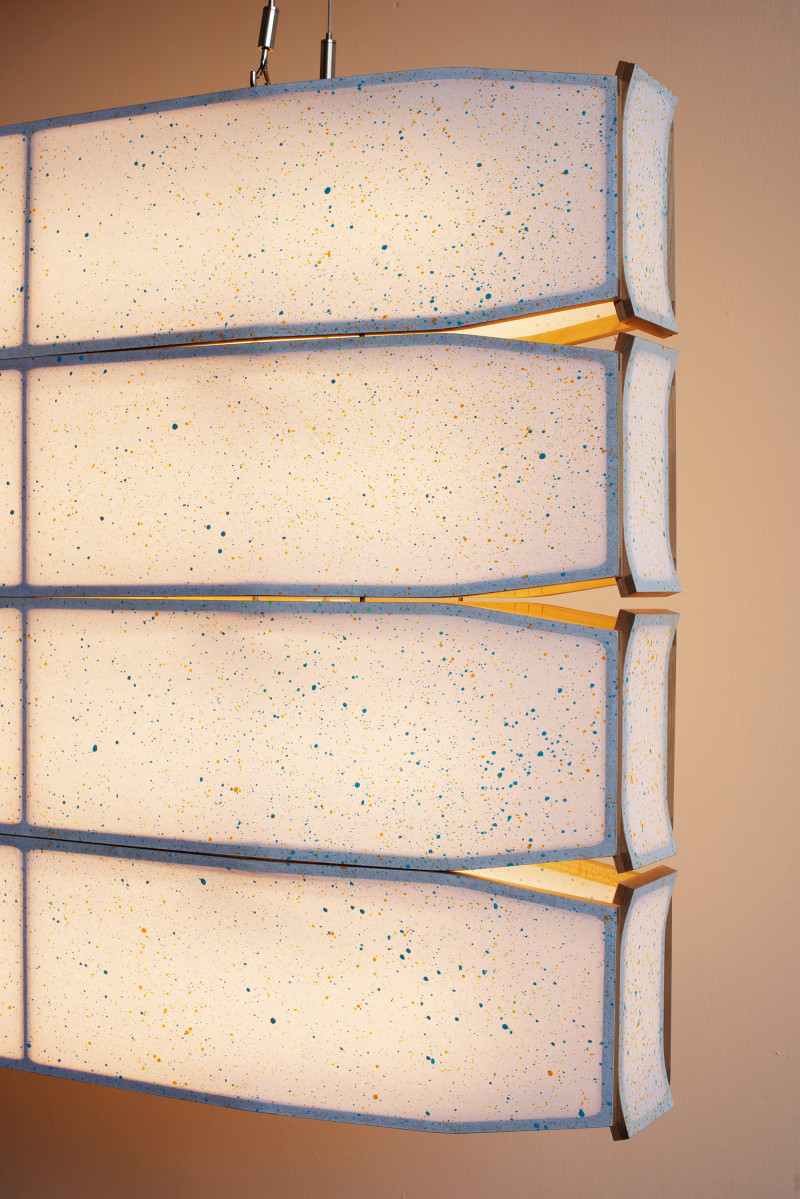
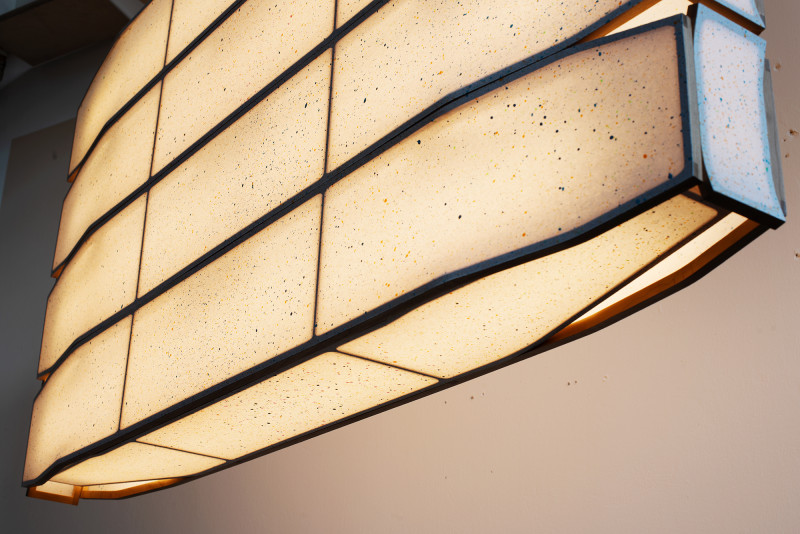
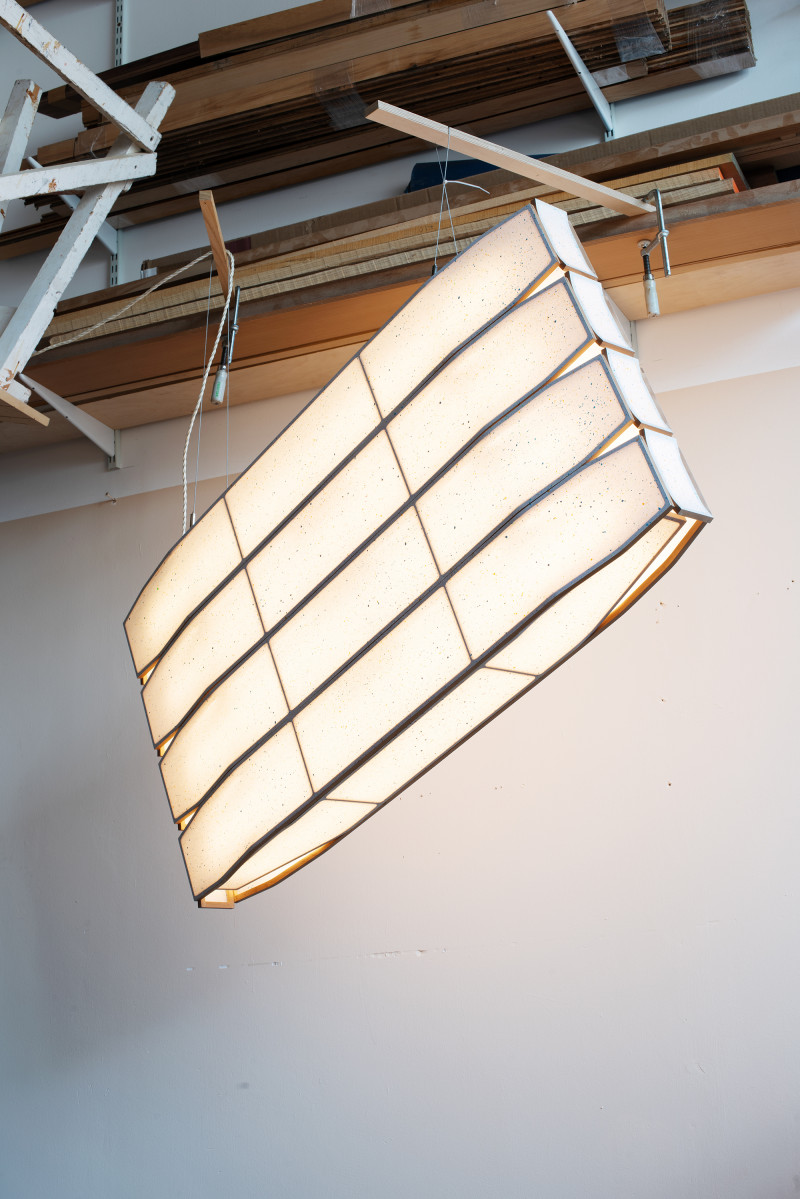
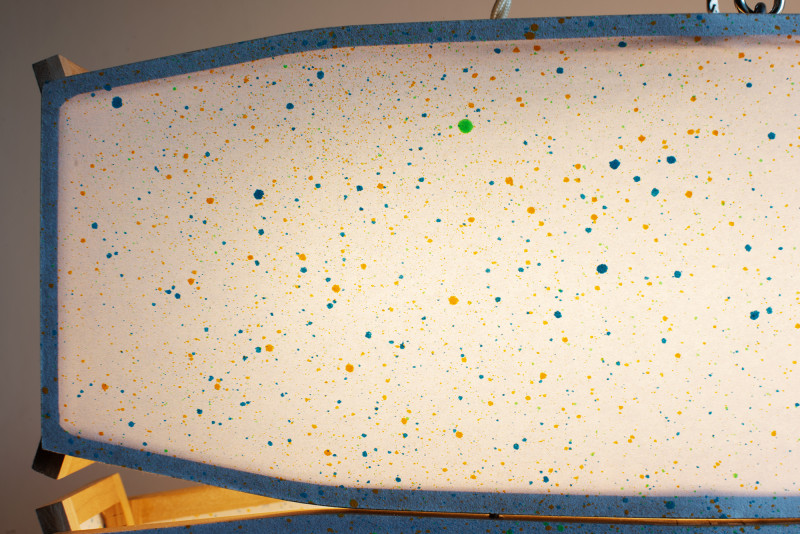
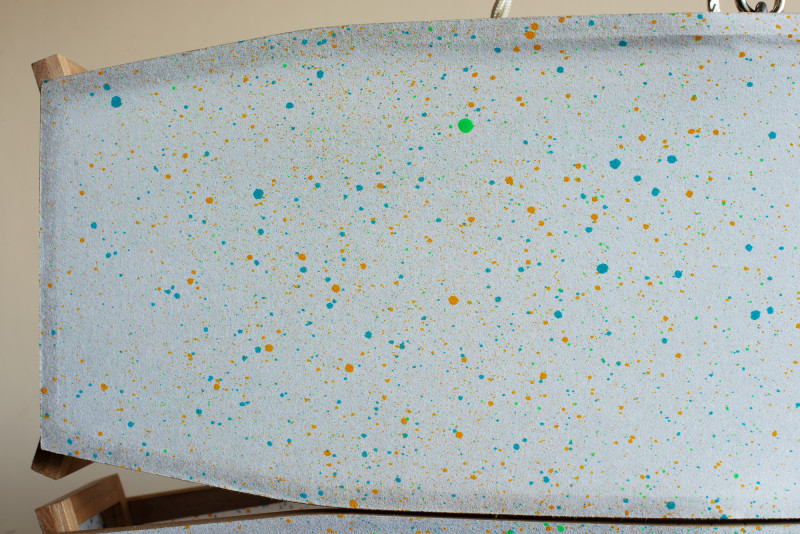
hook HooK hOOK!
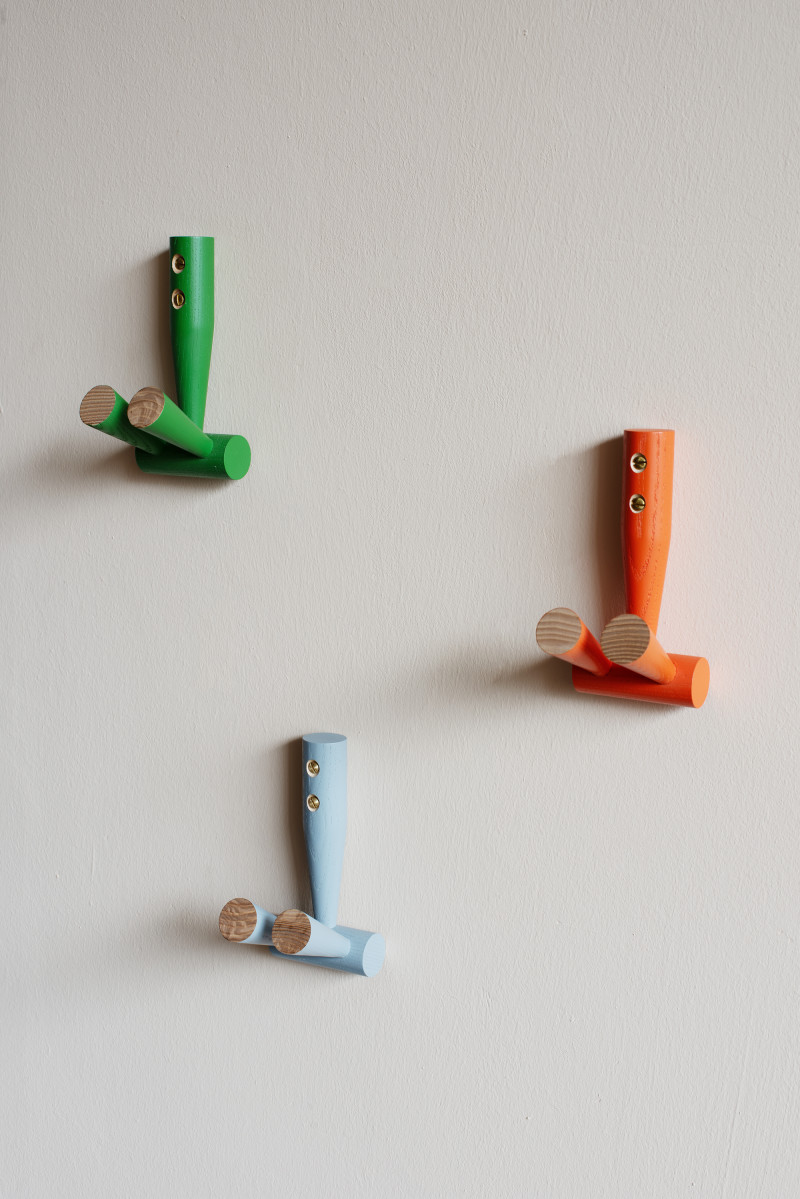
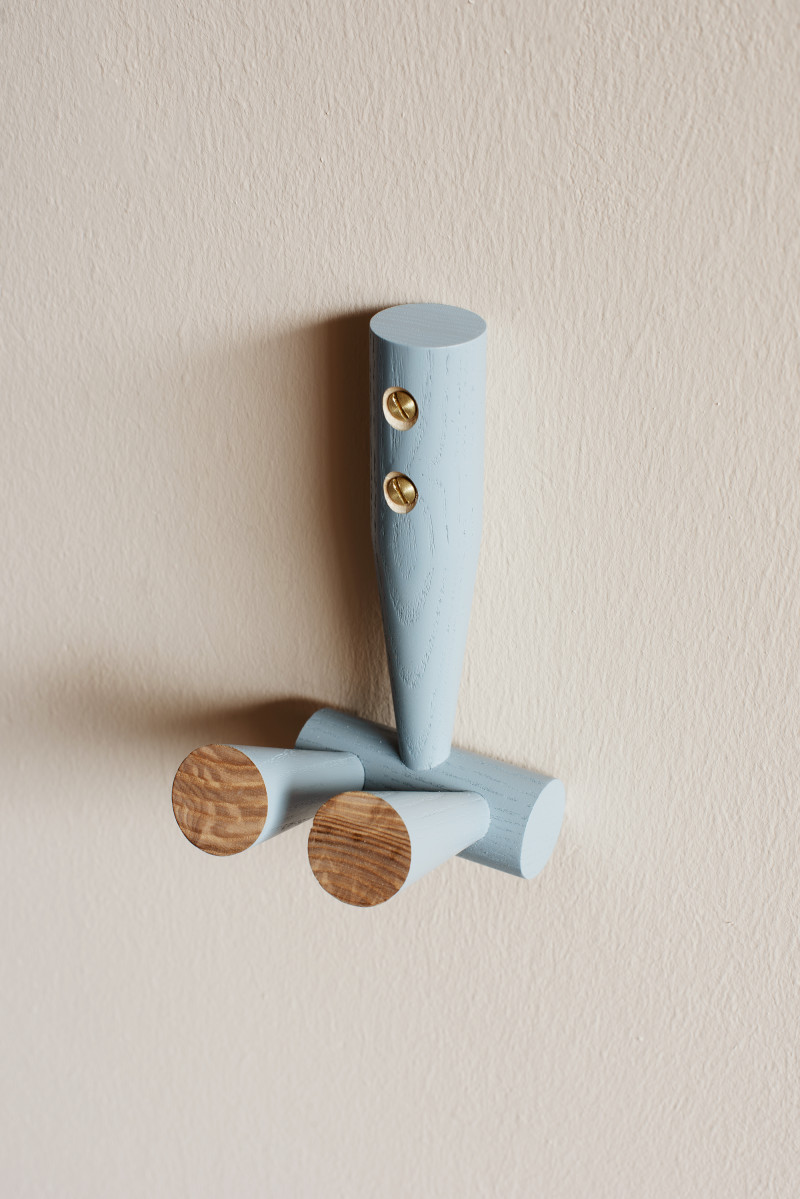
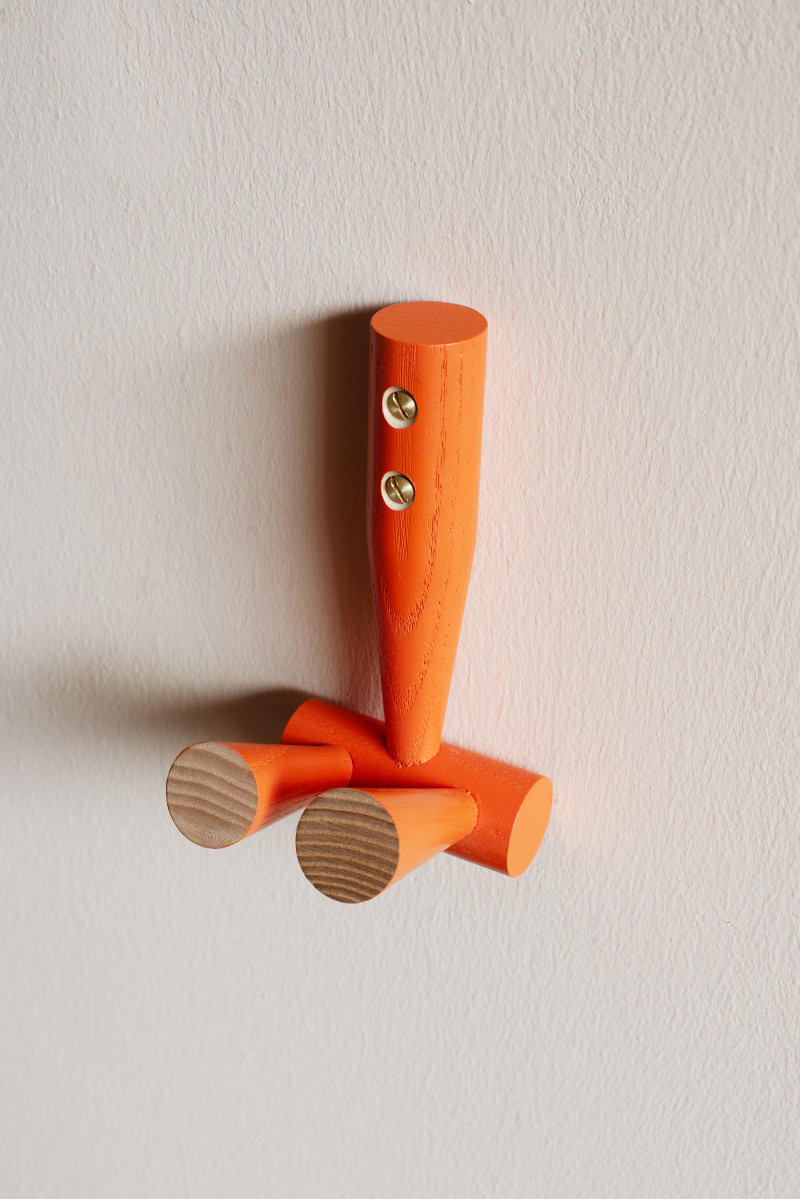
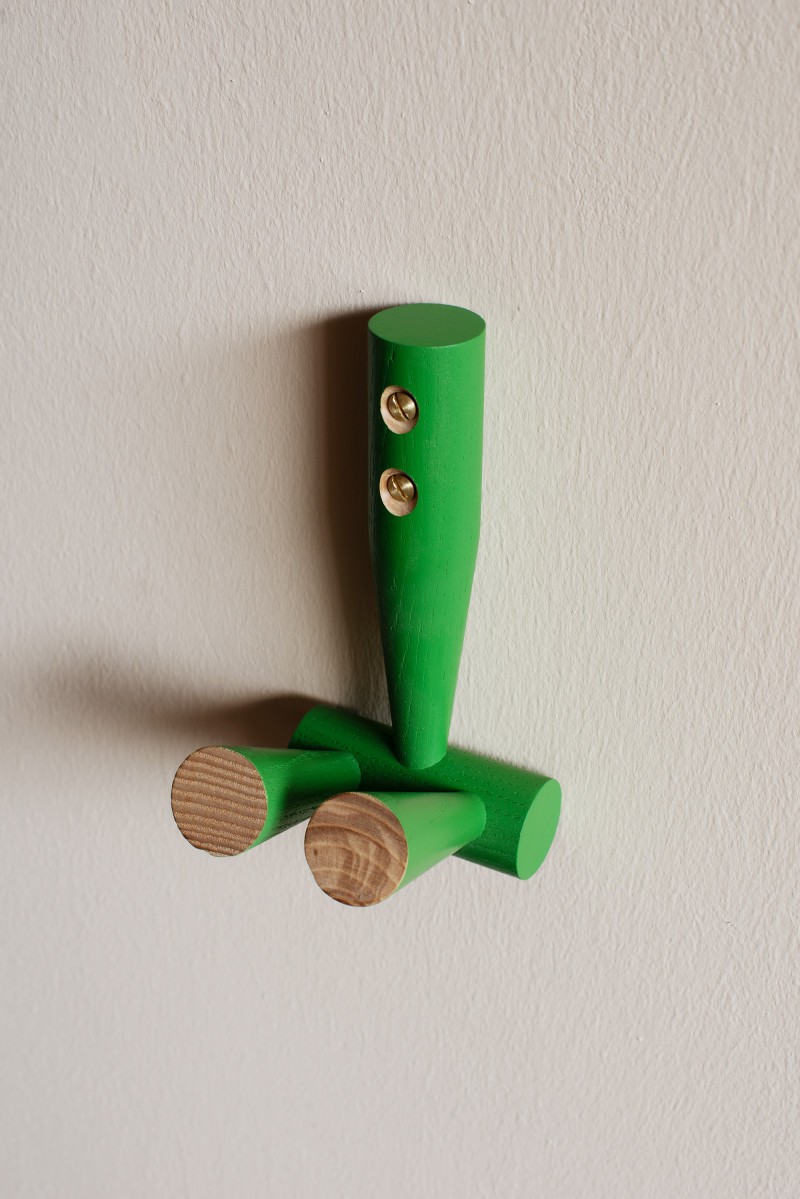
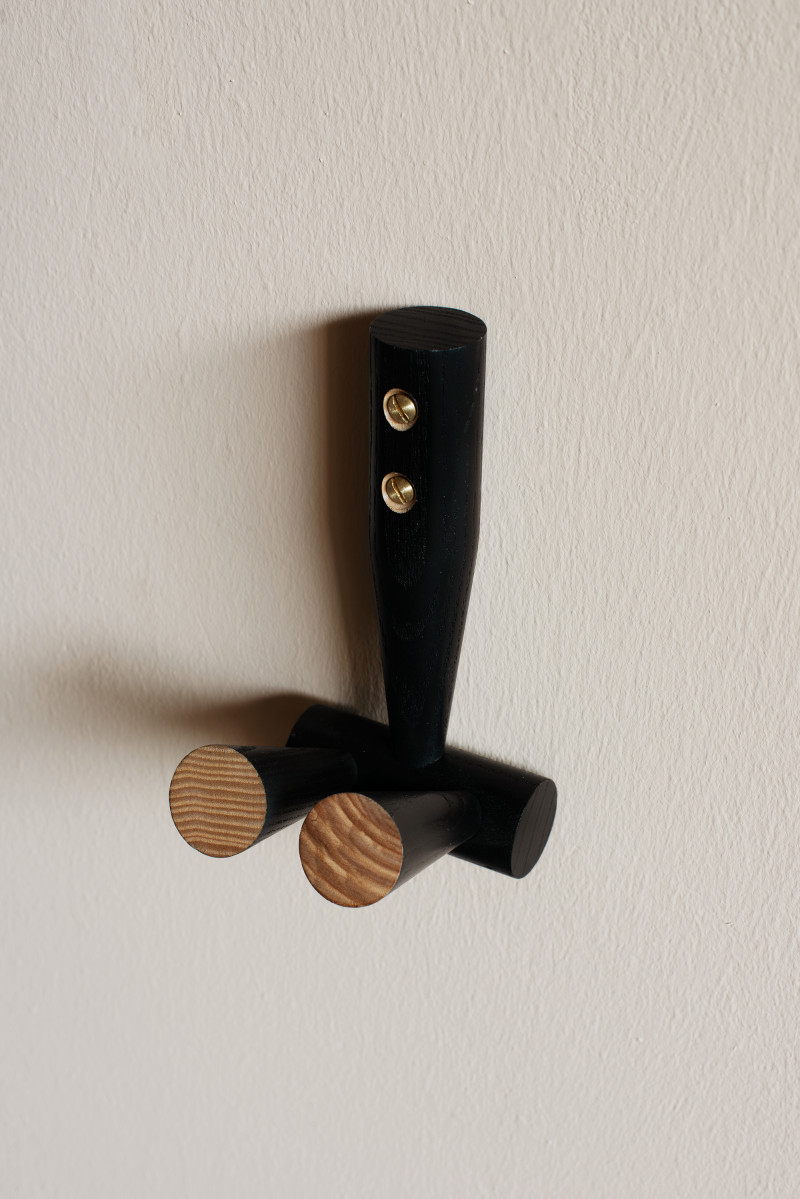
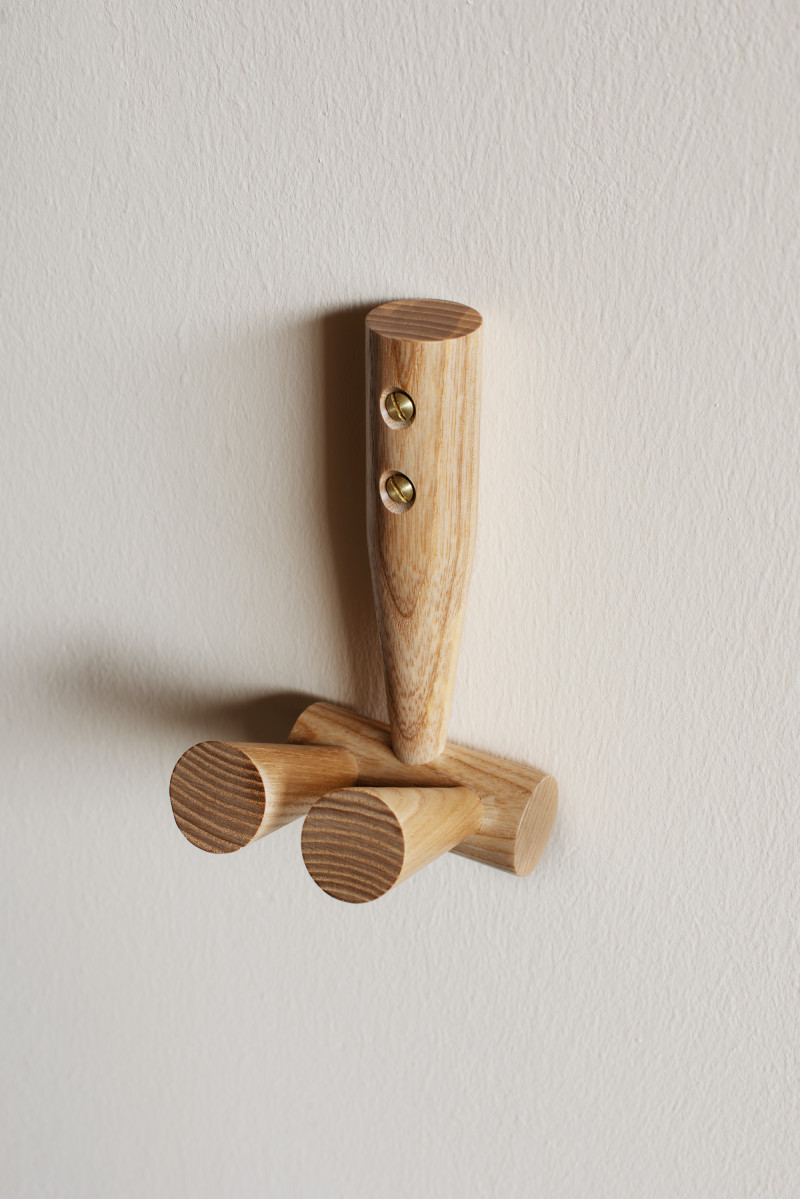
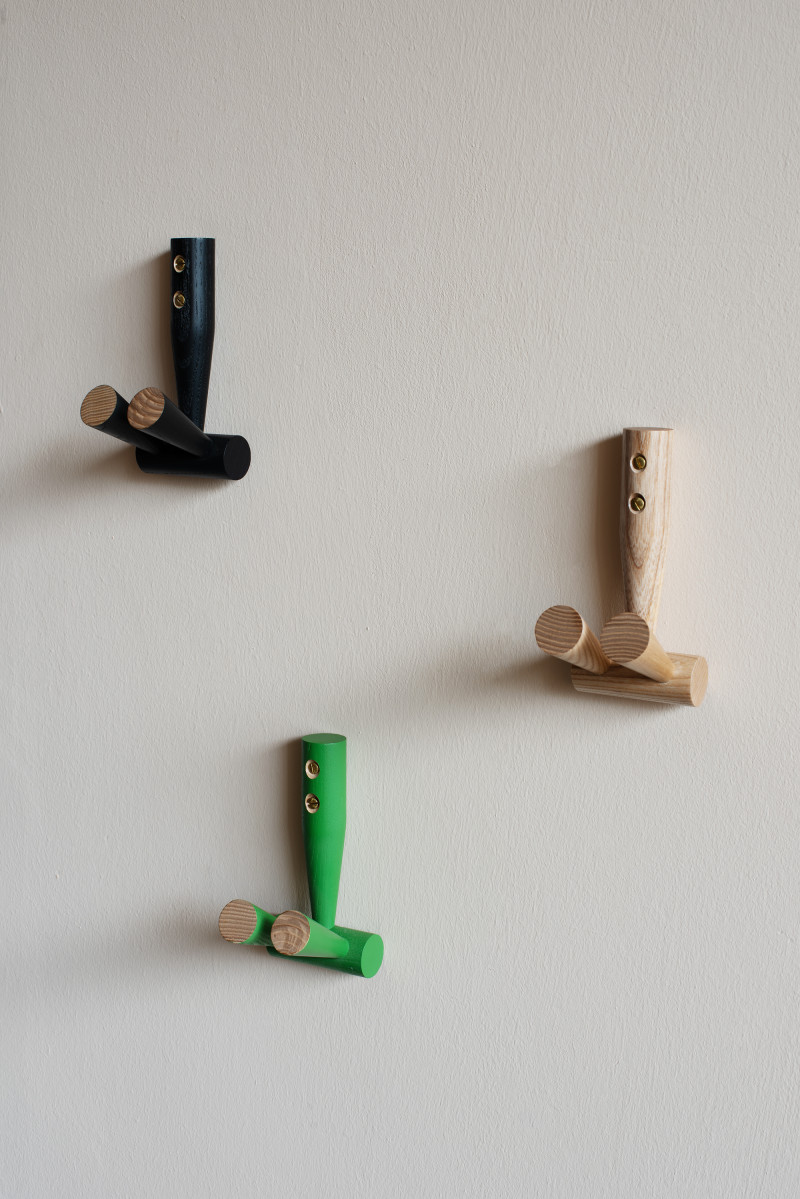
The “Impro Cosmic Crab Table” is a truly unique kitchen table created in the workshop through an intuitive process.
Kobayashi constructed a simple-shaped table employing a collage of different joinery techniques, which makes quite an unusual combination. He then used various machines to spontaneously carve into the simple shape, resulting in the creation of a unique form that he describes as resembling a cosmic crab.
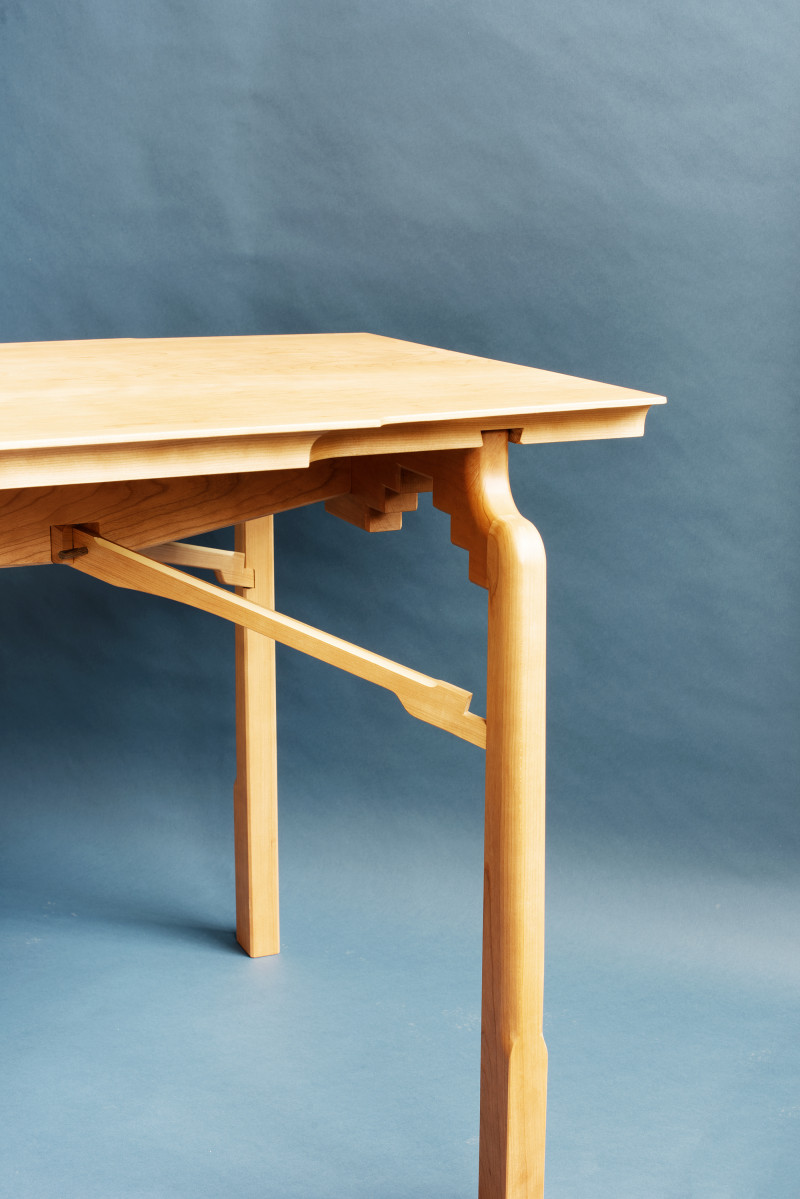
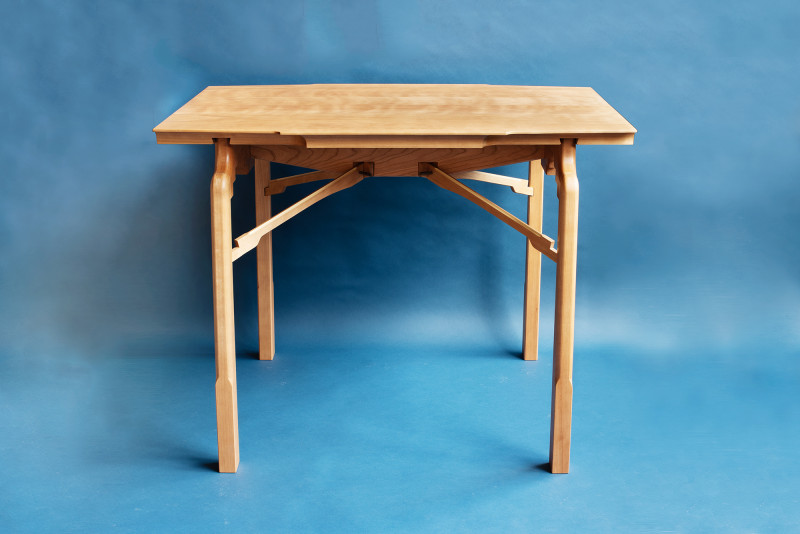
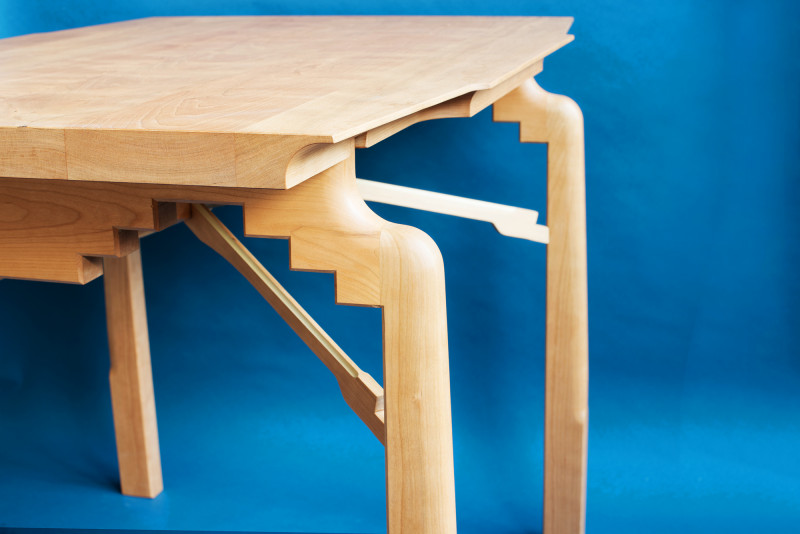
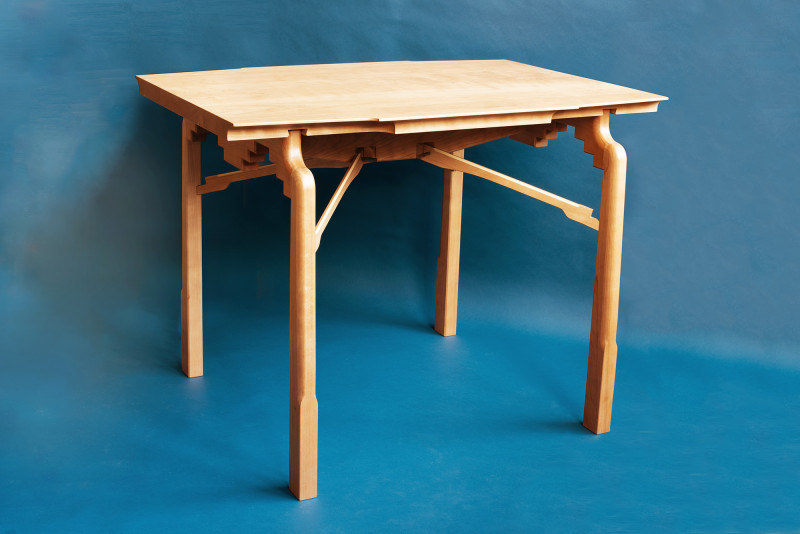
An interior project completed in 2023, commissioned by Korean-American artist Christine Sun Kim, and her husband. The residence is in an iconic 1970’s social housing block, ‘Der Komplex Leipziger Straße’, which prompted Rio to respond to the aesthetics of the era, combining bold colors and clean details. Clever storage solutions maximize the available space, including a separate bedroom behind a wall of cabinets. Shoji screens slide open to reveal closets, decorated in a blend of Korean-inspired motifs and Bavarian patterns as a nod to the couple’s heritages. Rio teamed up with Onni Ano to fabricate all the components over two and a half months in wintery Helsinki.
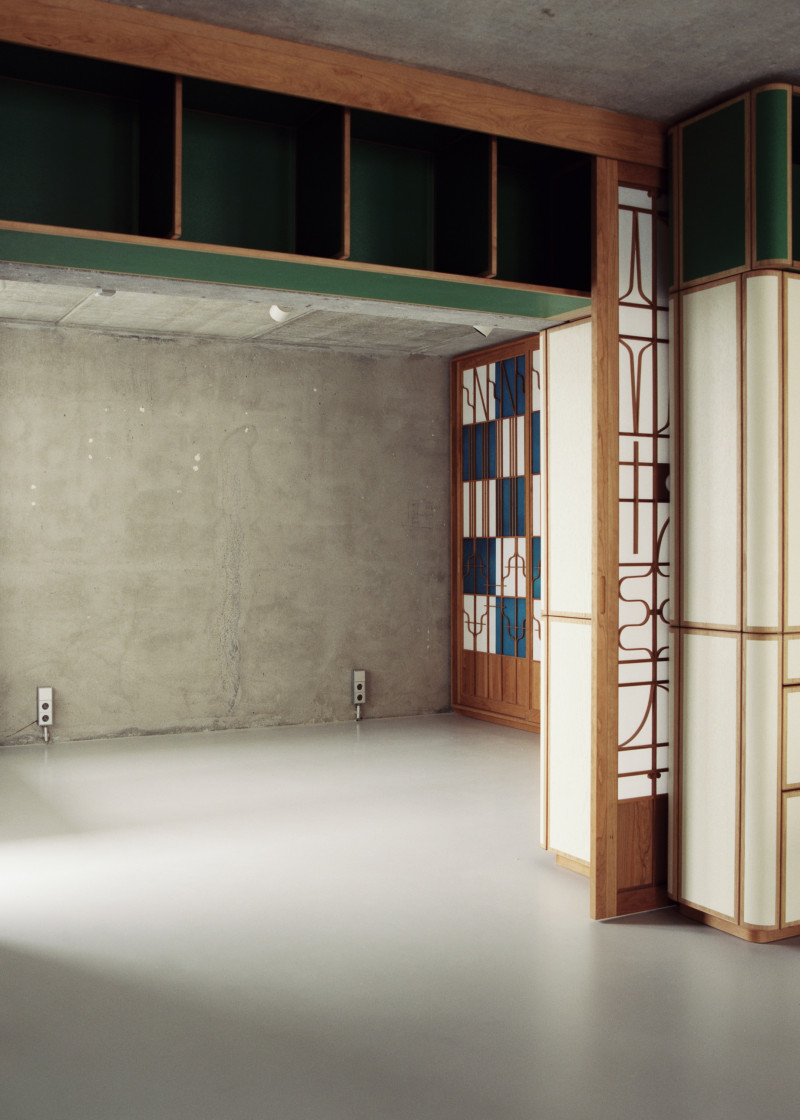
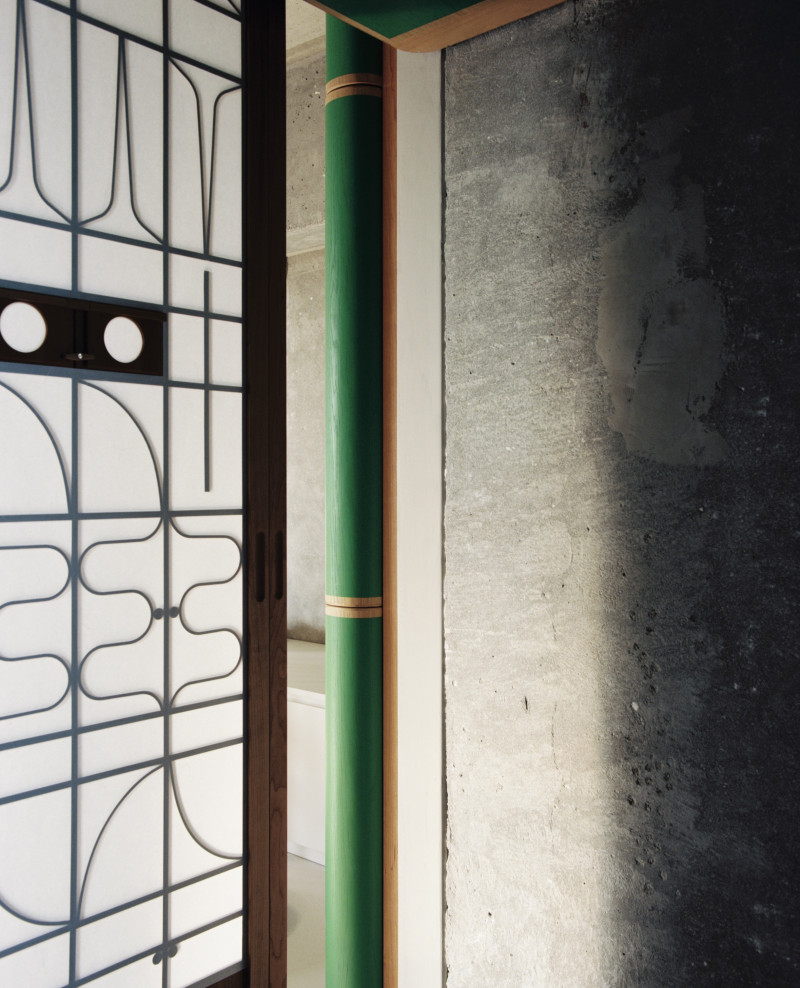
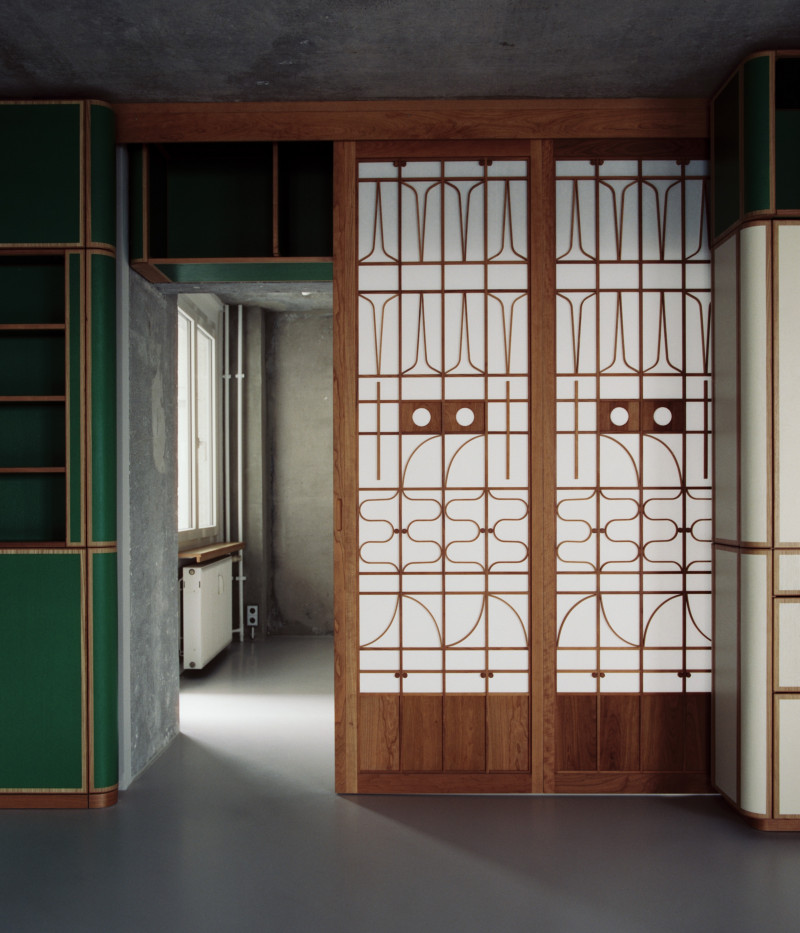
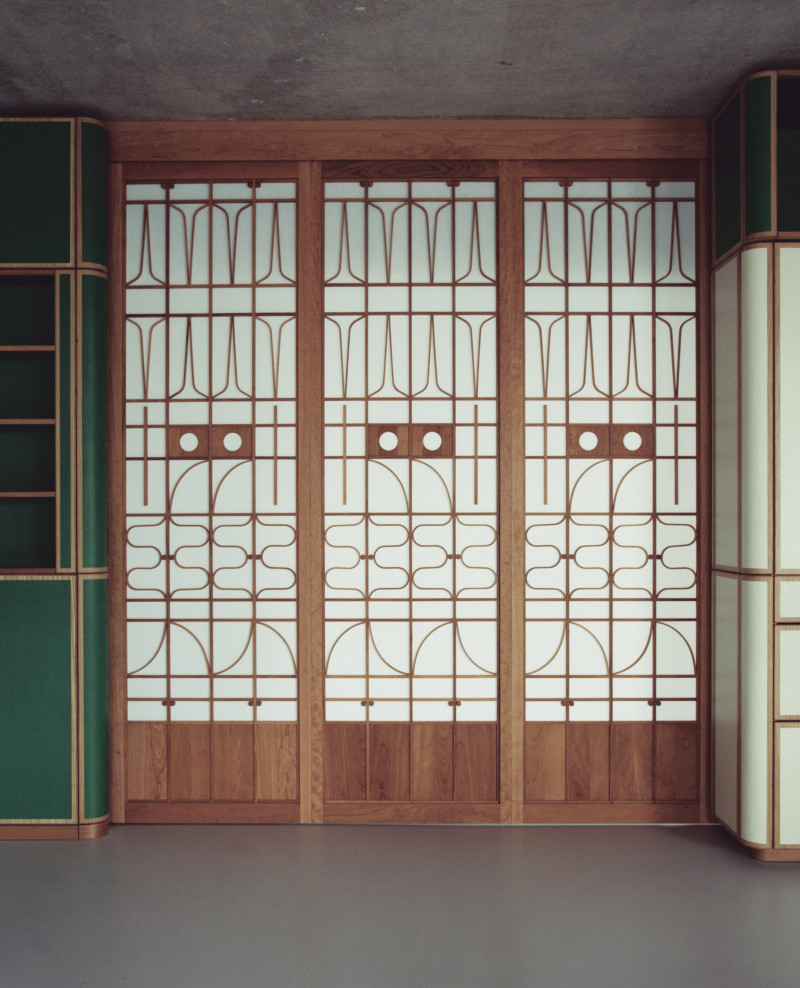
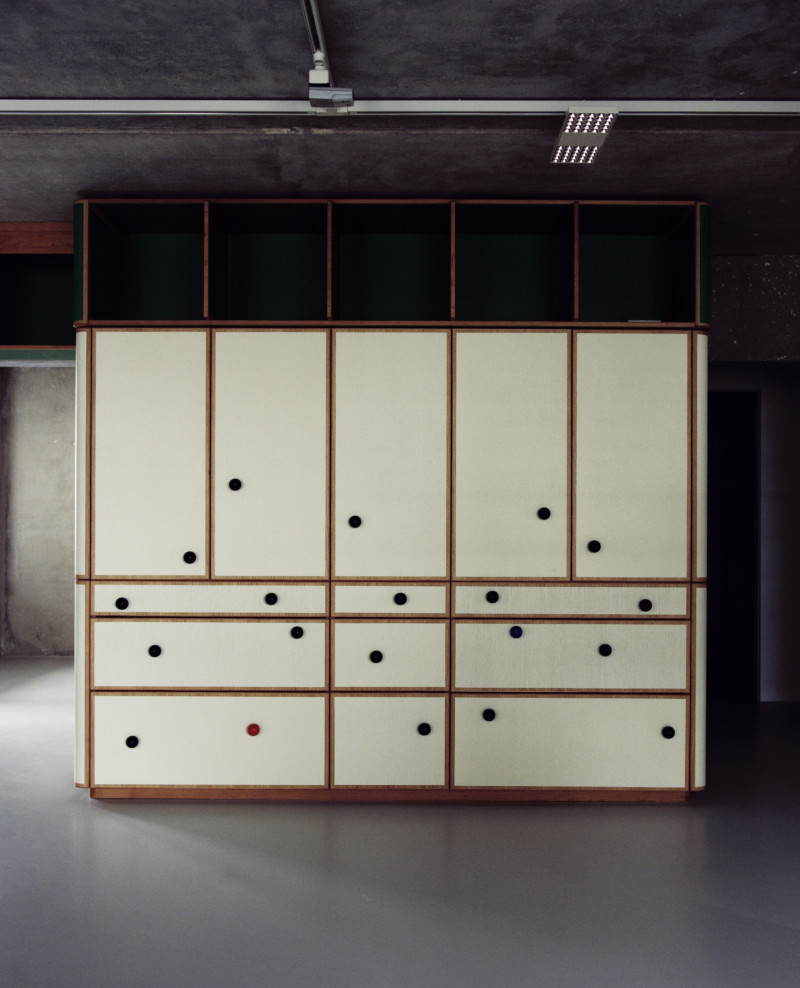
Secret group exhibition in an abandoned building, Cromwell place, London. October - 29 November 2023. With Martino Gamper, Bethan Laura Wood, Peter Pilotto and Christopher de Vos, Flavia Braendle, Jochen Holz, Shirobey Kobayashi.
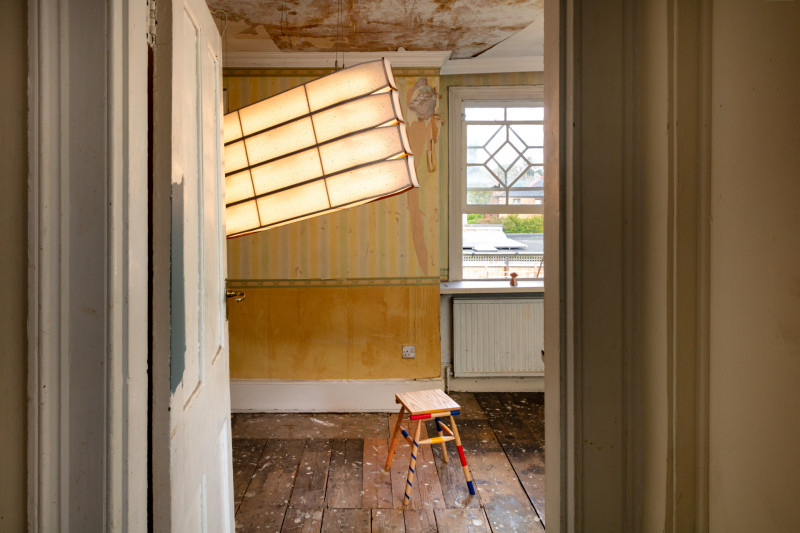
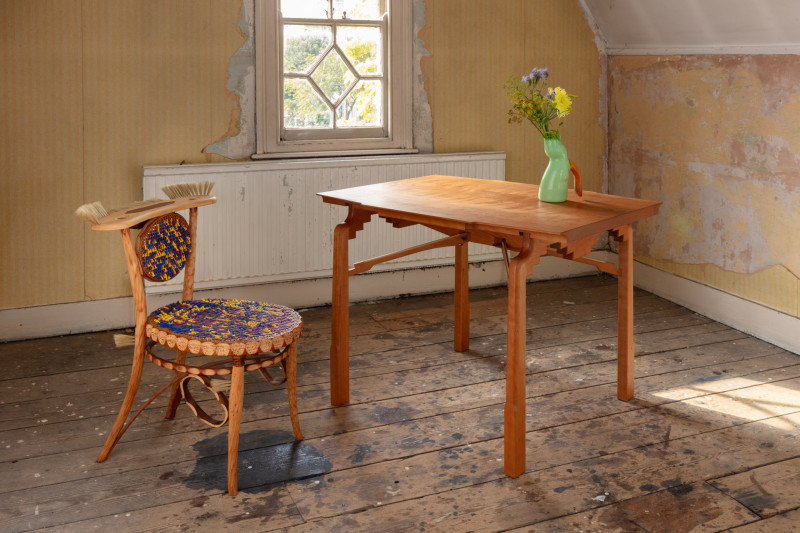
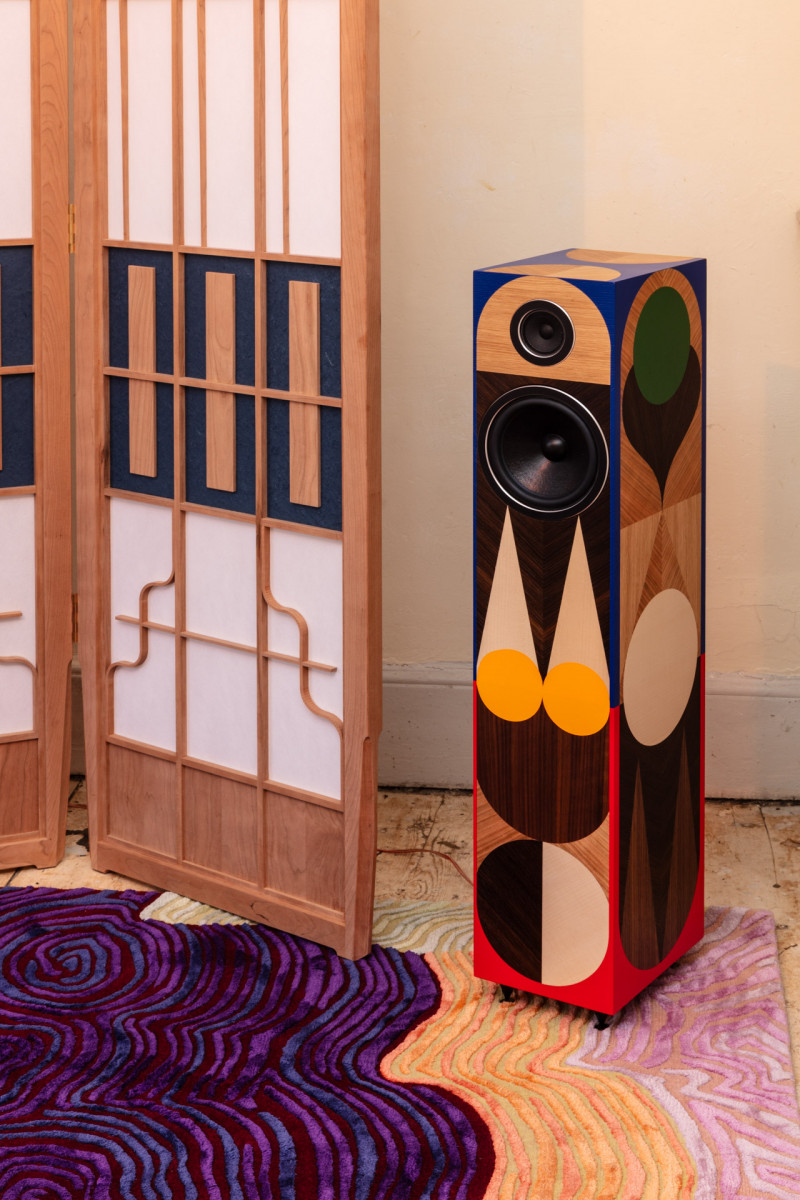
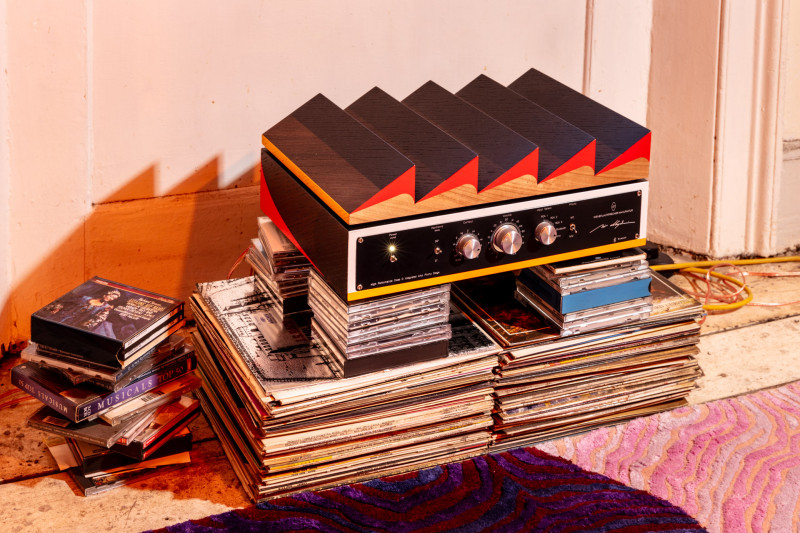
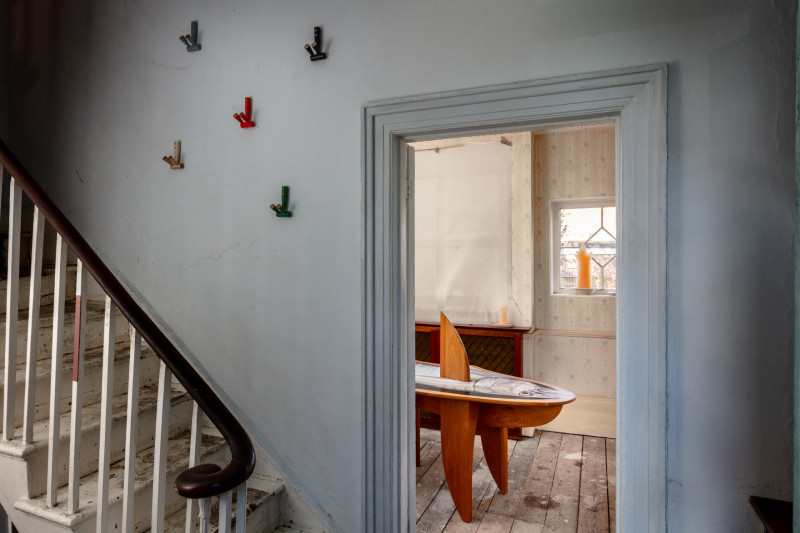
The “Piece of Cake Sofa” represents Kobayashi’s debut in upholstery. This convivial yet simple sofa, created in collaboration with designer Flavia Brändle, invites playful exploration of modularity.
Each upholstered block is self-standing and can be arranged flexibly within the frame or placed freely throughout the room. These versatile settings provide comfortable seating for social gatherings or create a relaxed platform for intimate lounging. Additionally, the wooden side tables and loose cushions can be positioned as desired, allowing for a personalized setting.
The name ‘Piece of Cake’ humorously reflects Kobayashi’s experience in designing his inaugural upholstery piece.Accustomed to creating his designs in his own workshop, the upholstery design process demanded a more holistic approach to crafting a convivial object, as well as a newfound attention to detail in textile.The Piece of Cake Sofa is covered with textile from Peter Pilotto x Christopher de Vos’s “Phase 02” collection.
Walnut wood, oiled, Textile by PPCDV
L 218 cm x W 140 m x H 72 cm
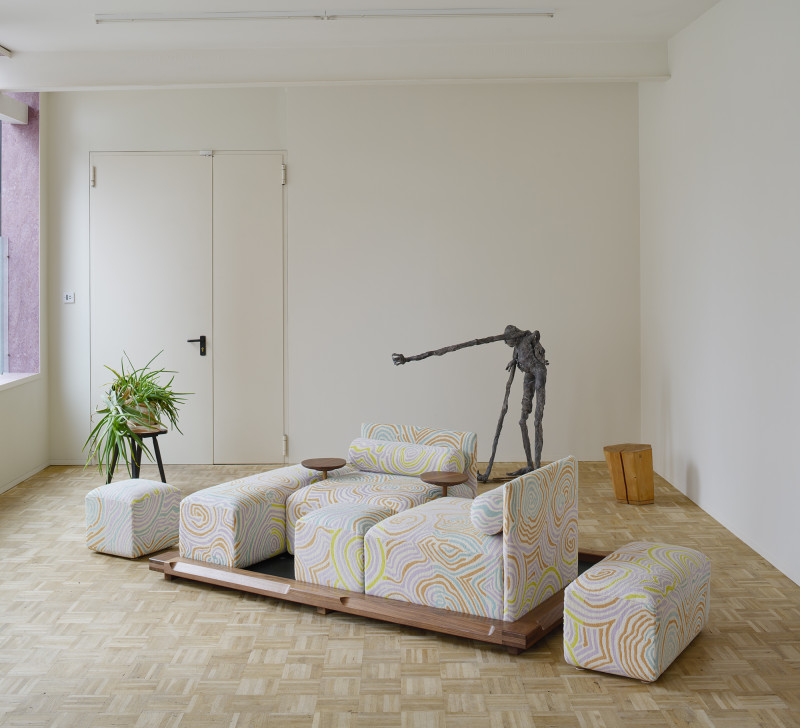
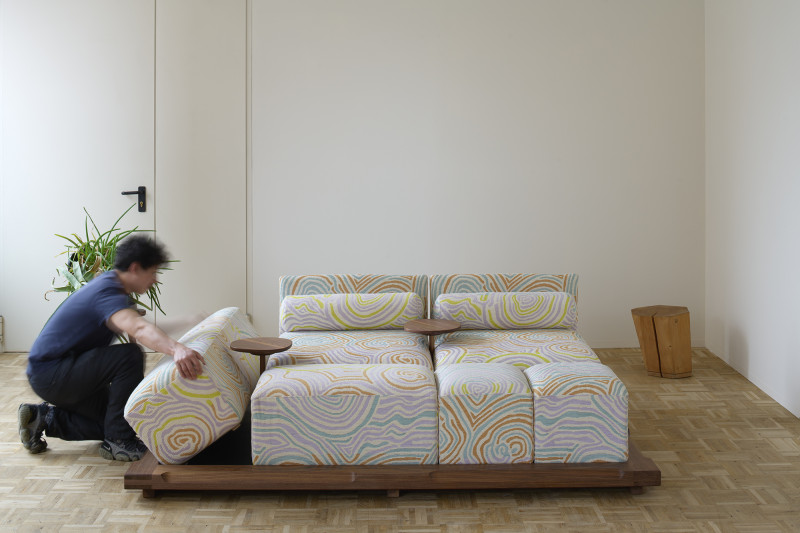
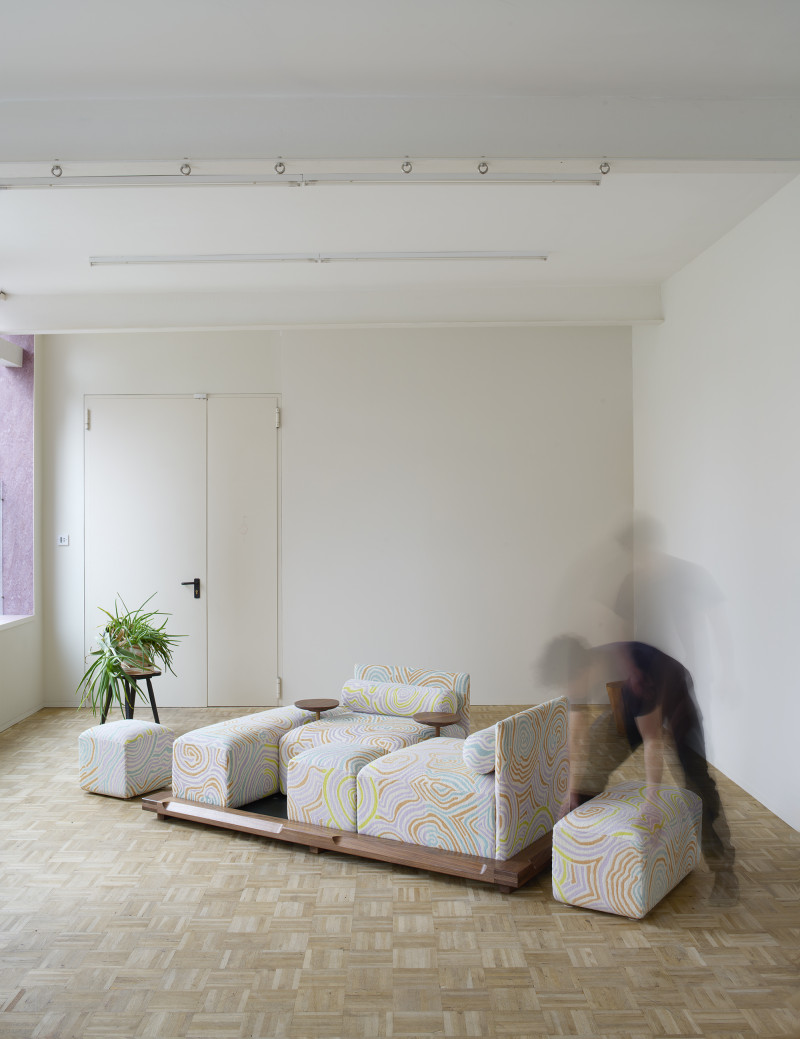
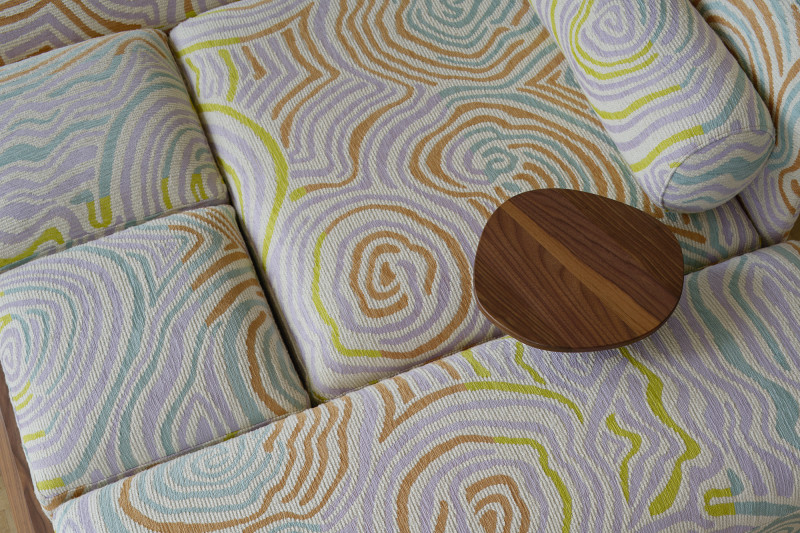
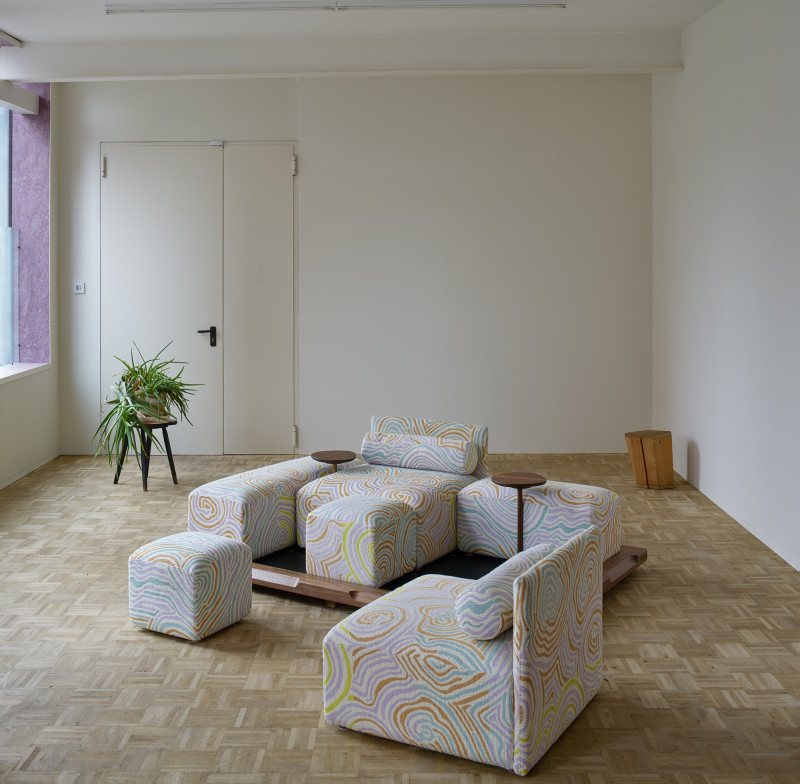
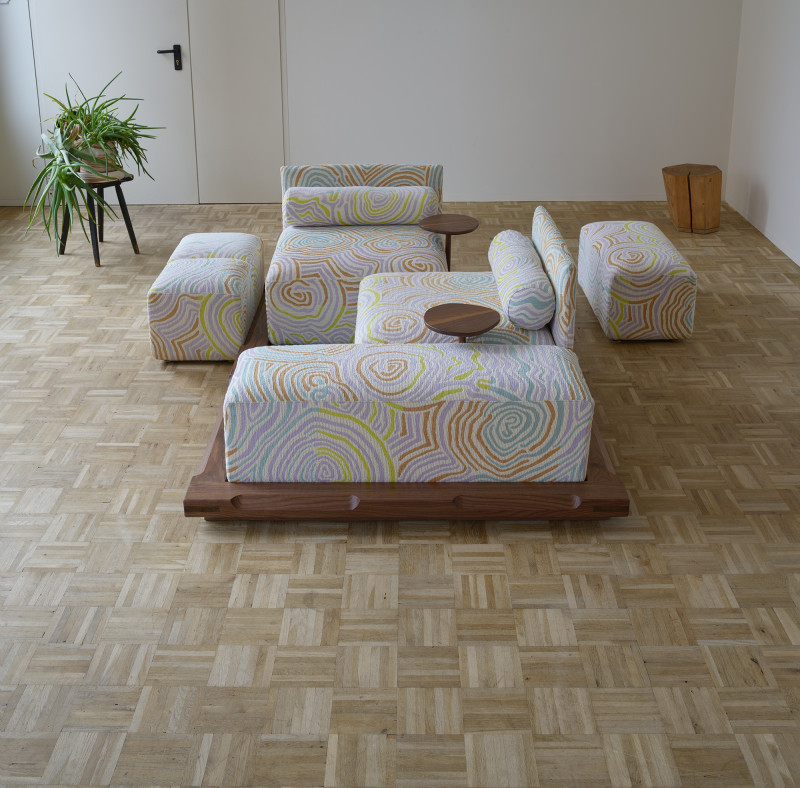
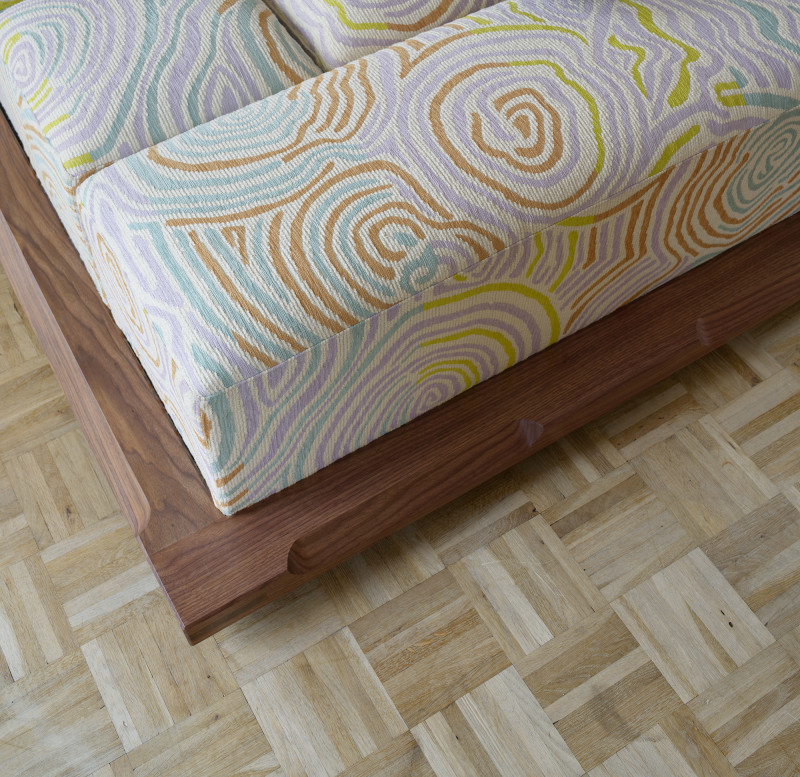
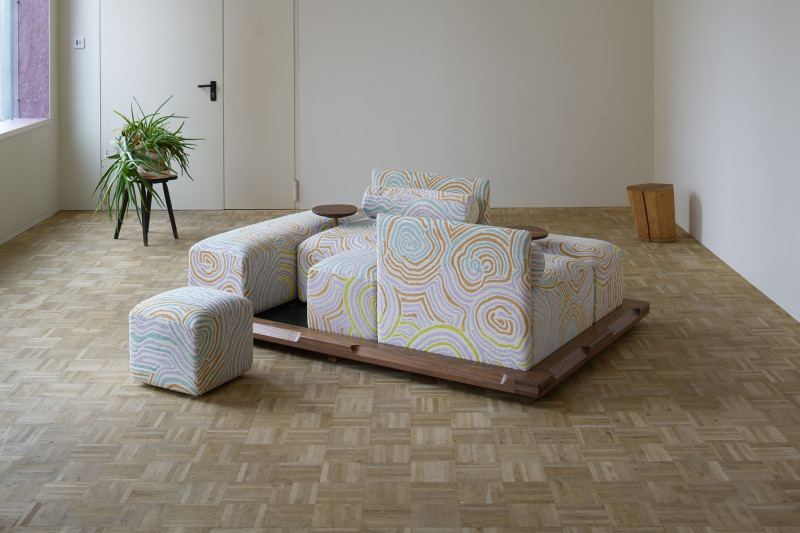
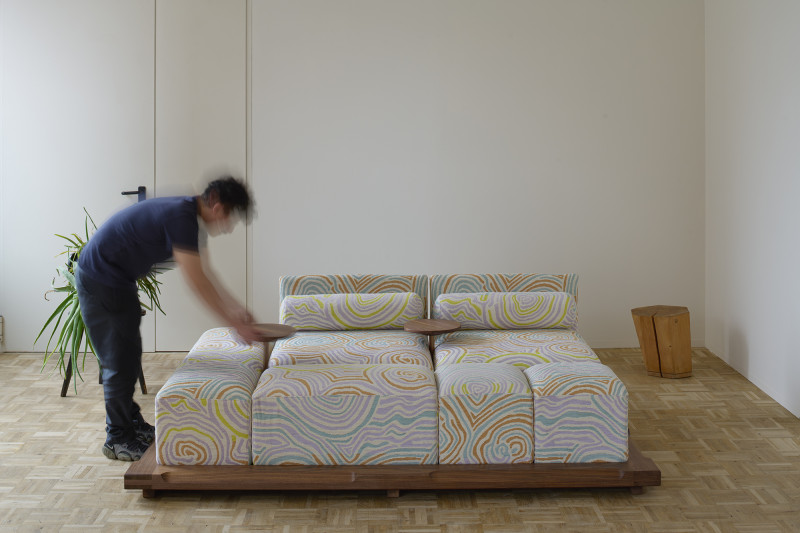
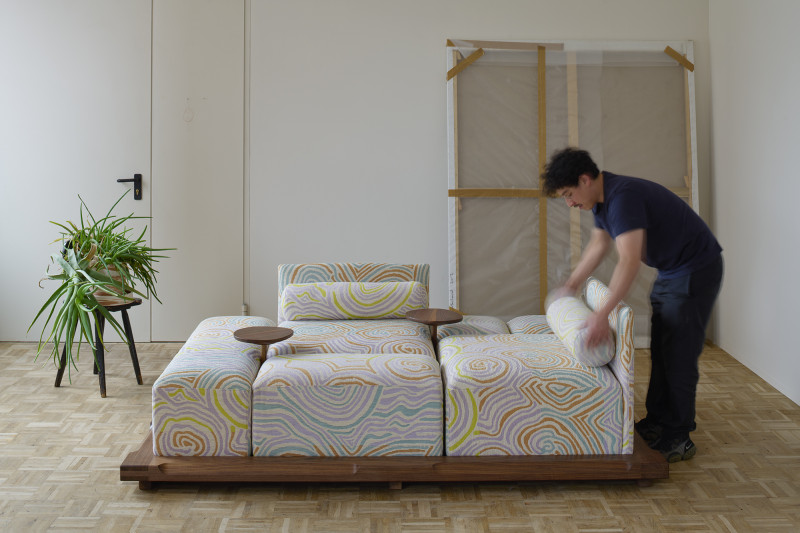
The collaboration with the high-end hi-fi manufacturer, “Wiener Lautsprecher Manufaktur,” commenced in 2018, driven by the aspiration to create speakers that could visualise the intricate nuances of music.
The speaker duo, consisting of the “Play 01” and “Play 02” models, has been designed to capture the multifaceted layers of rhythm and instrumentation found in composed music pieces. This complexity is visually translated through intricatelyarranged marquetry patterns and the artful application of rhythmic layers of color. These speakers embody craftsmanship and are complemented by the inclusion of premium audio components, all assembled in a dedicated development and production facility located in Vienna
To enhance the auditory experience with “Wiener Lautsprecher Manufaktur,” Kobayashi introduced the “Factory” amplifier, in addition to “Play 01” and “Play 02.” He considers this amplifier to be the conductor of the vibrations faithfully reproduced by the speakers. Much like a factory in a design process that transforms ideas into tangible products, this amplifier serves as the conduit for the speaker’s sonic magic.
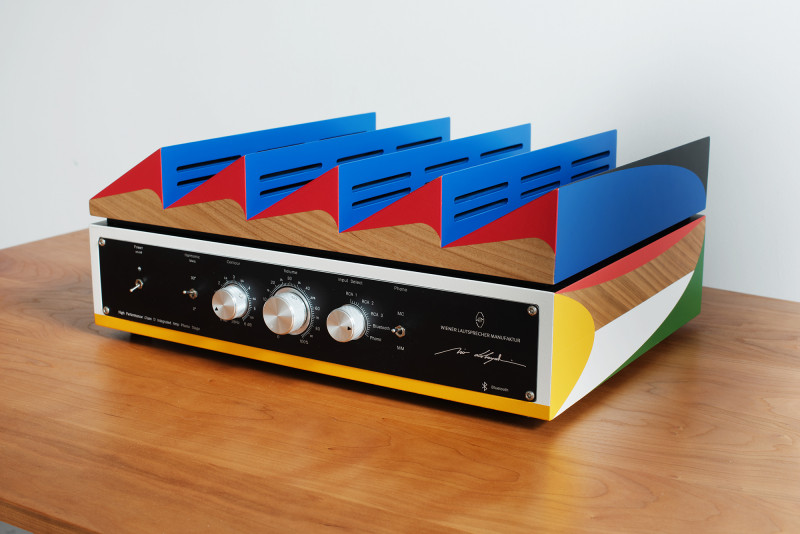
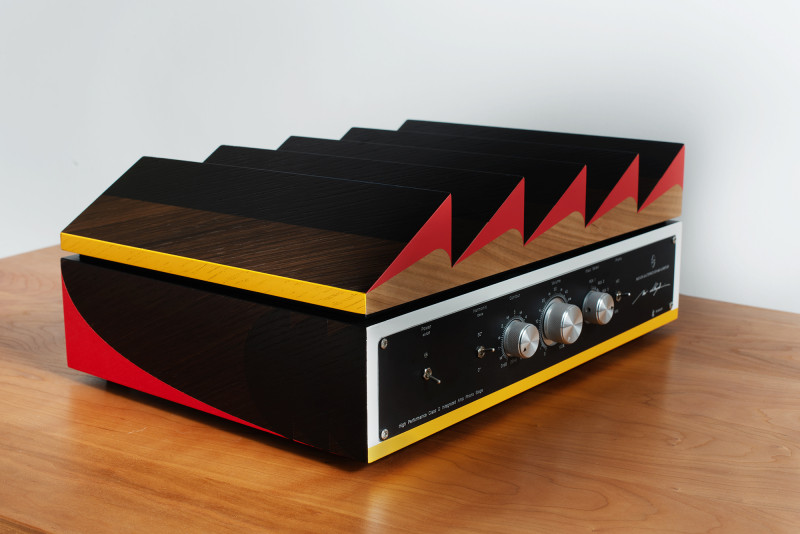
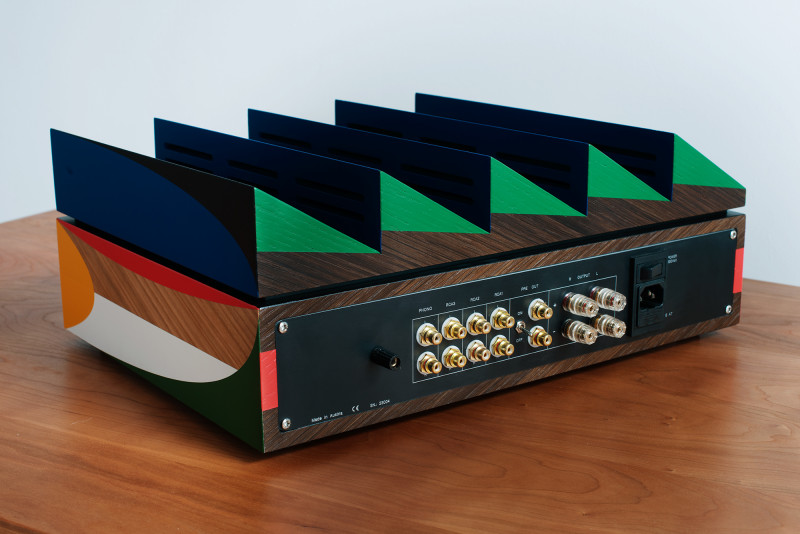
Bended Cherry wood with gold plated silver tongue
The show is a continuation of JB Blunk’s seminal 1981 solo exhibition ‘100 Plates Plus’ held at David Cole Gallery in Inverness, California. For ‘100 Hooks,’ each participating artist and designer was invited as a result of an existing connection with Blunk’s work. From exhibiting at Blunk Space, a residency at his iconic home and studio, or through the inspiration of his oeuvre, each participant has been touched by Blunk’s legacy.
⠀⠀⠀⠀⠀⠀⠀⠀⠀
This new exhibition consists of 100 different responses to the same brief: to create one hook of any size or material. Hooks, like plates, are utilitarian objects. In a nod to his training in Japan, Blunk’s plates denied the distinction between art and craft. Blunk enacted a particular synthesis of art and the objects of life, creating these functional objects thoughtfully and artfully throughout his career. For ‘100 Hooks’, each of the artists and designers offers their own approach to materials, form, and process, but also the relationship of aesthetics to function.
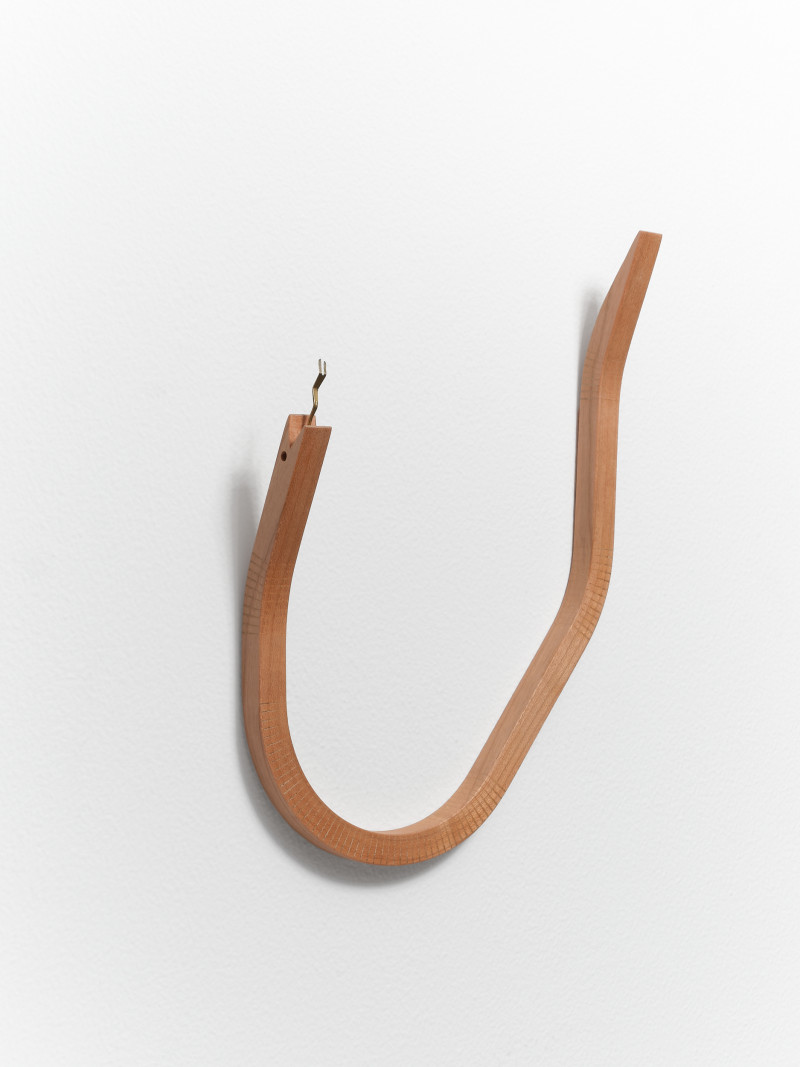
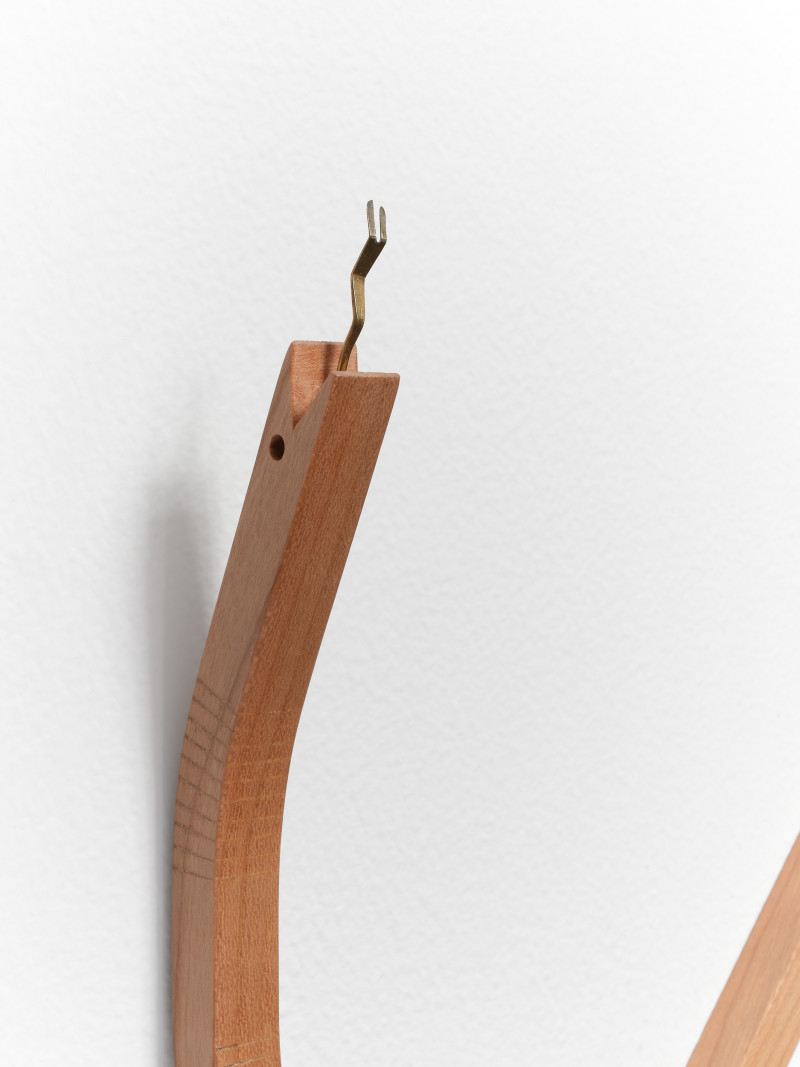
The dresser that I designed for Dolce & Gabbana, is a true reflection of the diverse influences that shaped its creation. The name of the piece is borrowed from the Japanese word for ‘zebra’, which literally translates to “stripe horse.”
I chose this name because I love the ambiguity of the zebra’s black and white stripes, which are never quite black or white, but always somewhere in between. This reflects the boundaryless nature of my piece, which appears chaotic at first glance but is meticulously designed and crafted with incredible attention to detail.
The dresser harmoniously combines different materials. From the luxurious gold-plated glass to the warm, eye-catching wood structure and marquetry, each element plays a unique role in ‘creating a piece that is both elegant and inviting. And of course, the colorful, soft embroidered silk fabric hanging on the side adds a playful touch that ties everything together, a perfect balance between furniture and fashion.
As a designer, I strive to create pieces that are not only visually striking, but also emotionally resonant. My dresser reflects my own memories of youth and passion, as well as the unique blend of cultures and traditions that shaped my upbringing.
Working with Dolce&Gabbana Casa on my dresser allowed me to explore new possibilities in design and craftsmanship. Shima Uma expresses the mixture of language, culture, nationality, tribe, and craftsmanship, as well as my own memories and passion.
This unbounded piece is not just visually striking, but also emotionally resonant, reflecting the unique blend of cultures and traditions that shaped its creation.
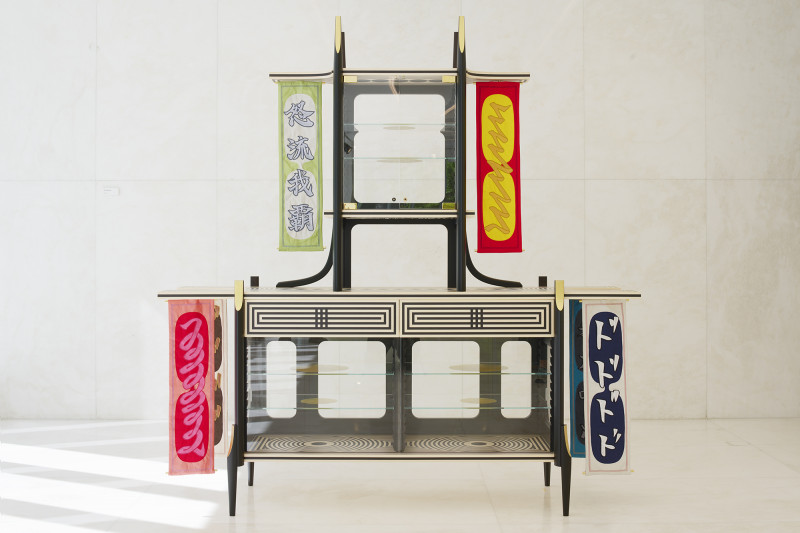
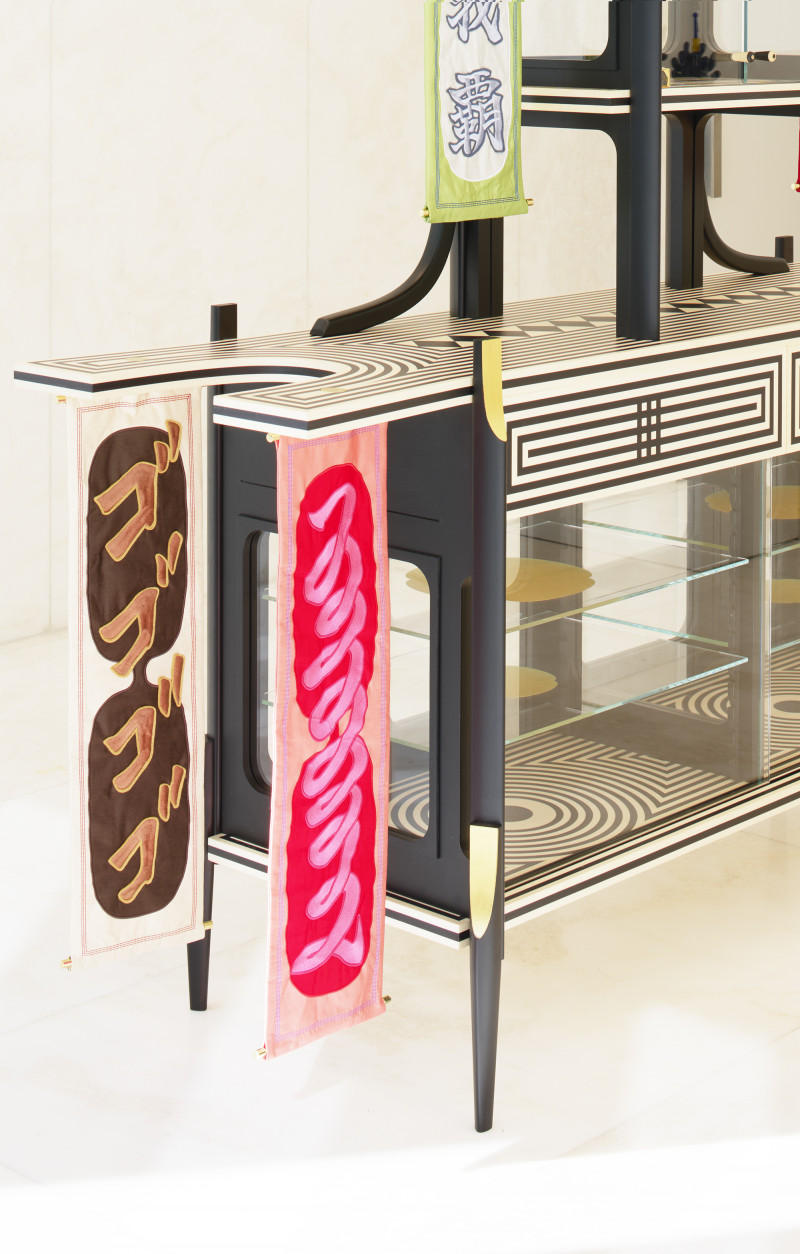
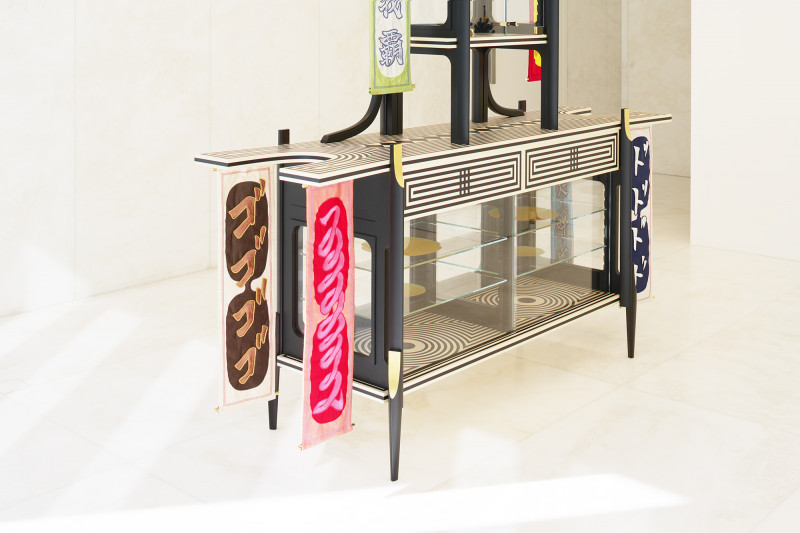
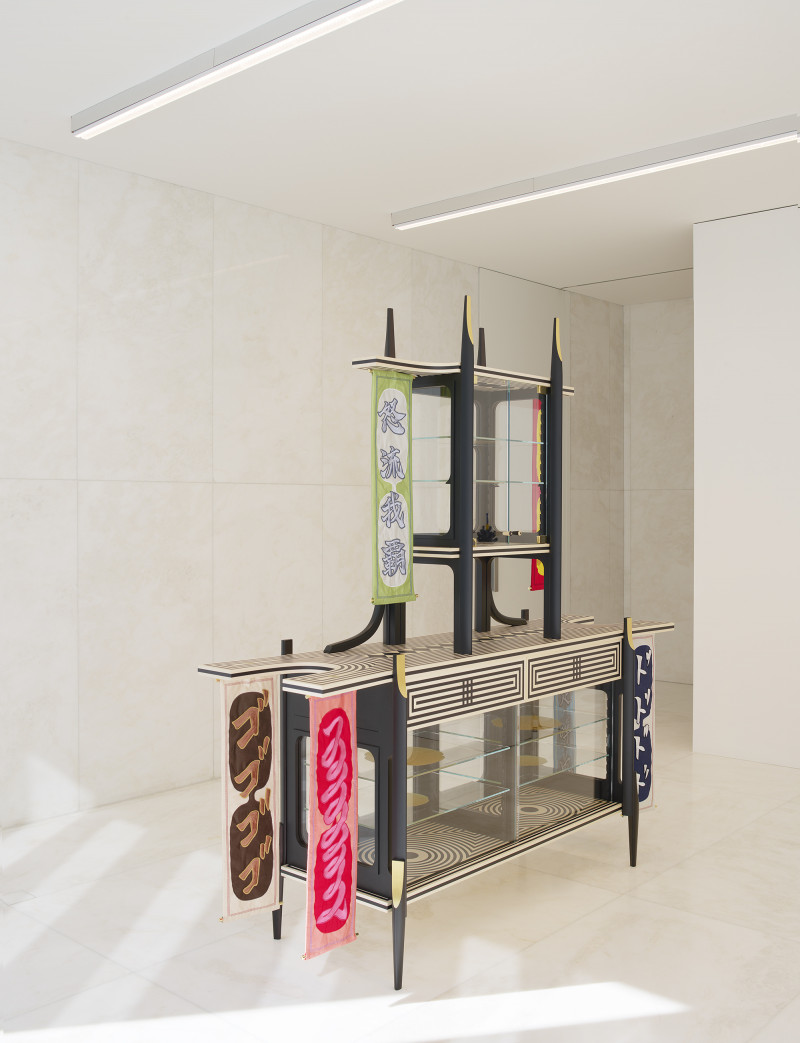
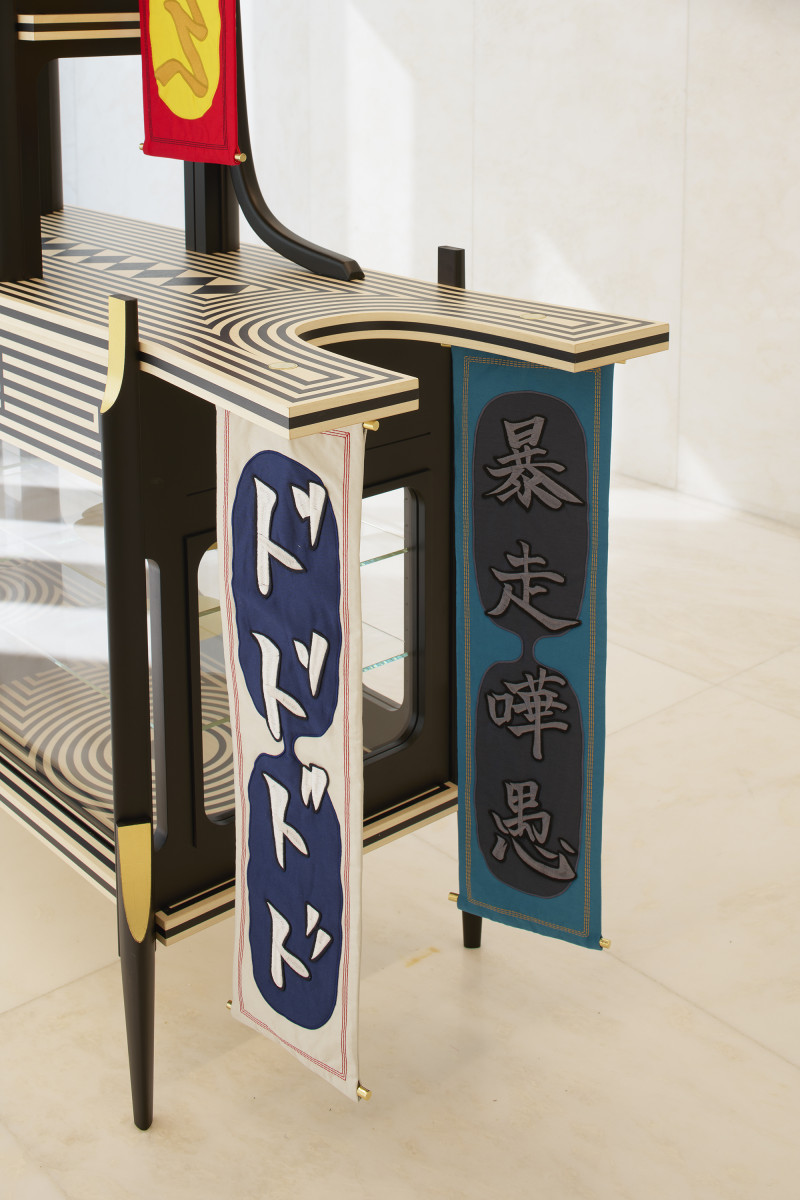
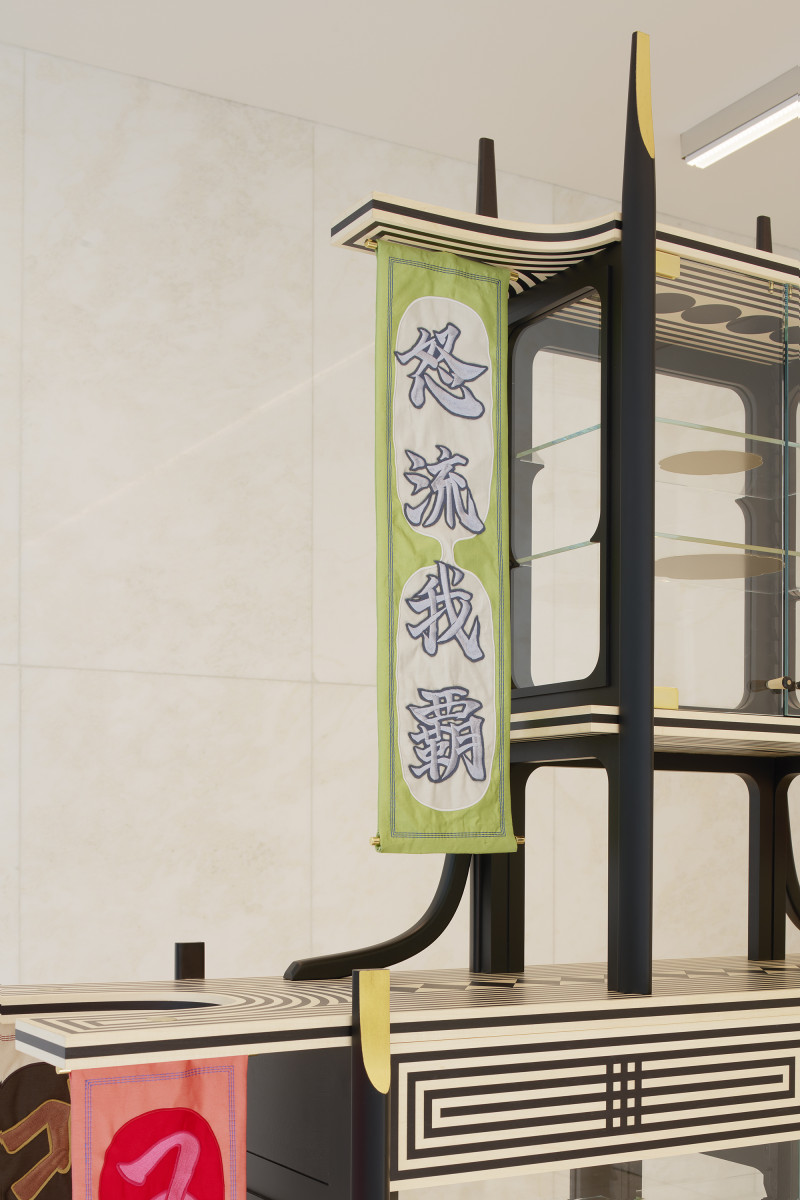
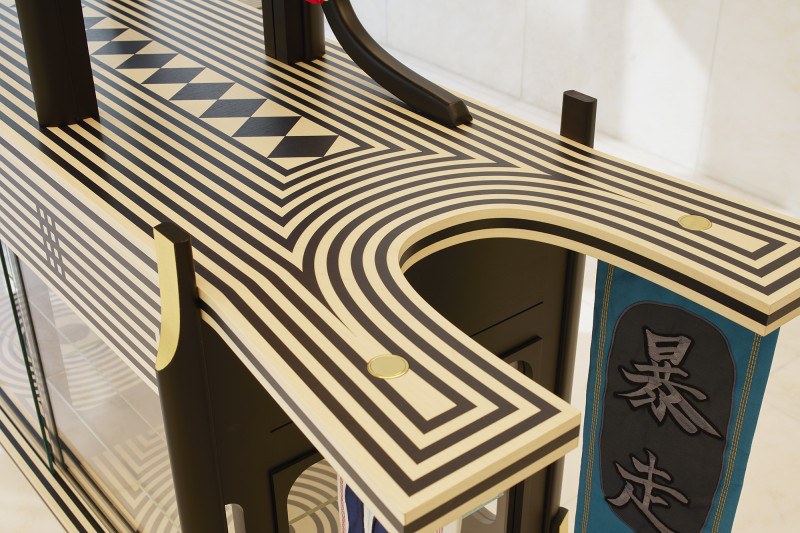
Chiro Chiro (チロ チロ) is a one-of-a-kind kinetic mobile that opens our imagination. The playful and interactive hanging piece invites us to make time and space for ourselves in the hectic world.
The name Chiro Chiro is borrowed from Japanese expressionチロ チロ, whose pronunciation resembles the sound reptiles make when flicking their tongues in and out swiftly. However, the subject of the figure remains open to interpretation. It could be a bird, an aeroplane, a flying fish, a snake or anything else depending on our own perception.
Finely handcrafted with walnut, each piece is unique with woodgrain and tinge of its own. The delicate wings are decorated with patterns of various colours, offering an animate and enticing visual experience when flapping. An elegant play on perspectives in motion, the kinetic piece captivates us with its subtle charm of simplicity.‘
I am fond of the idea of a toy that keeps one company all the way from childhood to adulthood. A true timeless piece.’ The designer wishes to set up a delightful corner for contemplation for each owner of Chiro Chiro.
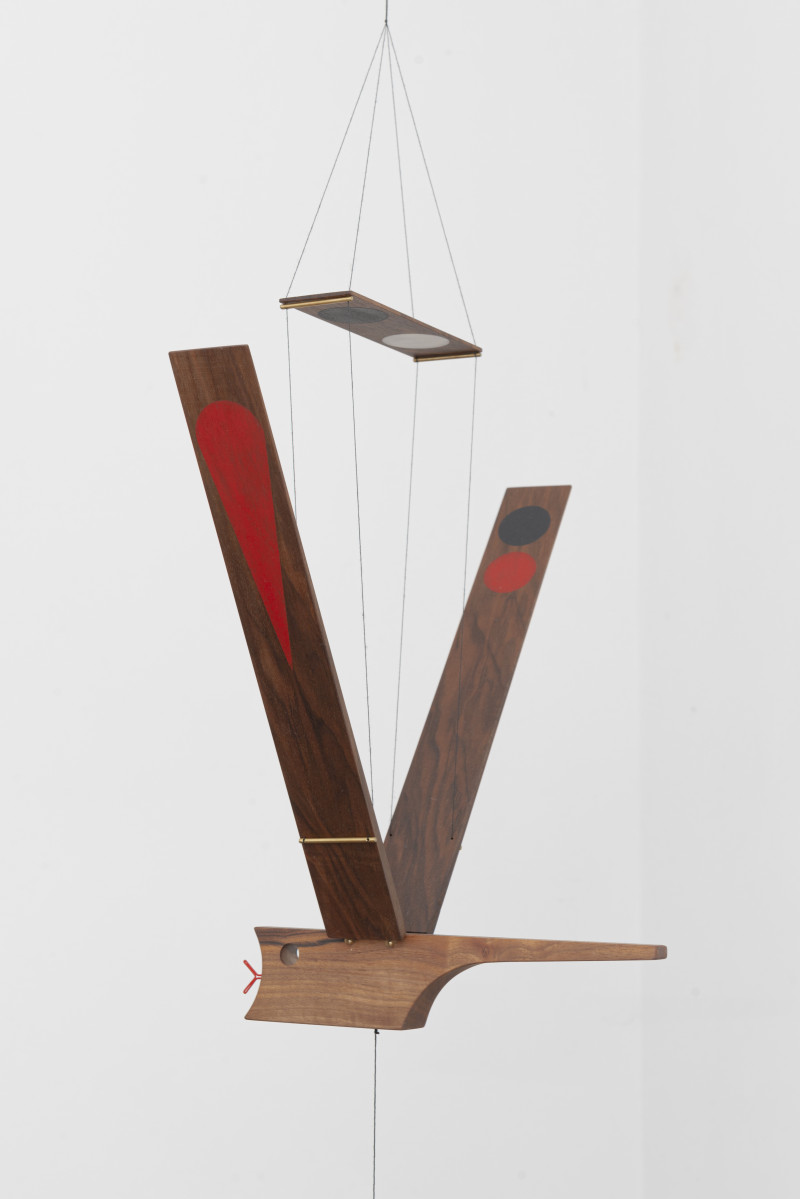
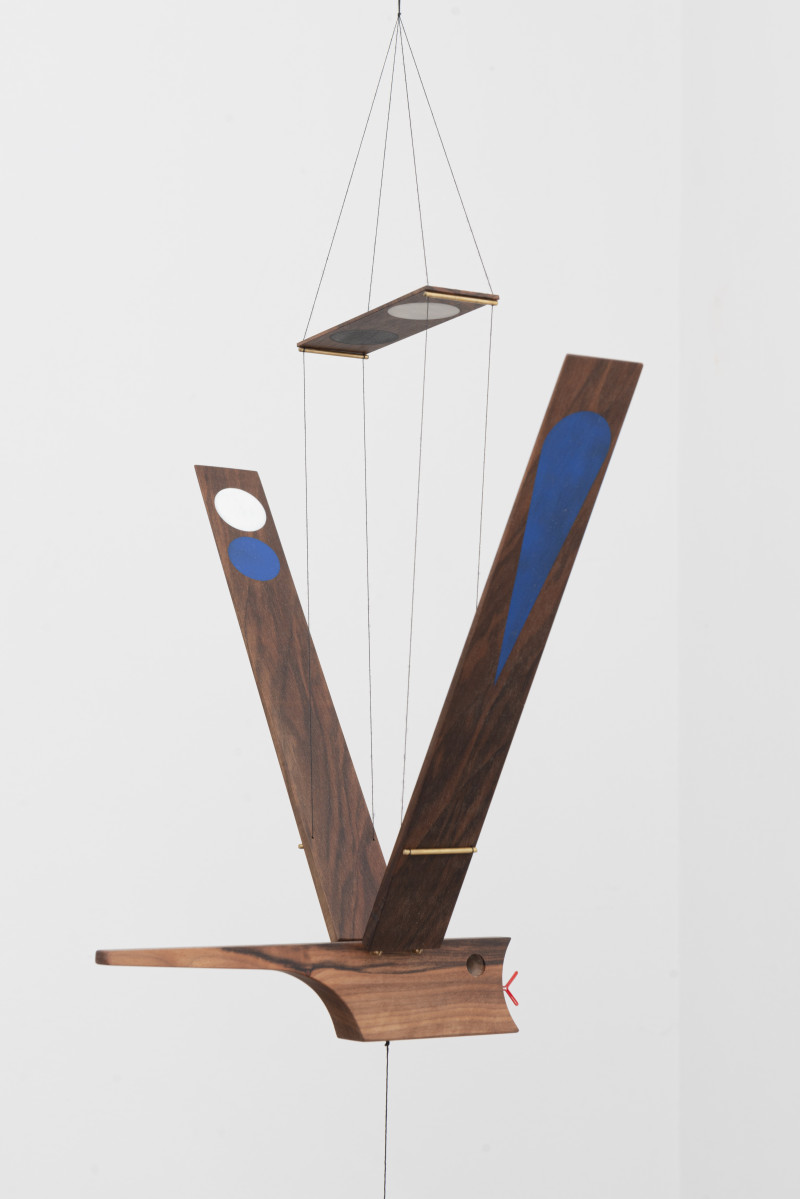
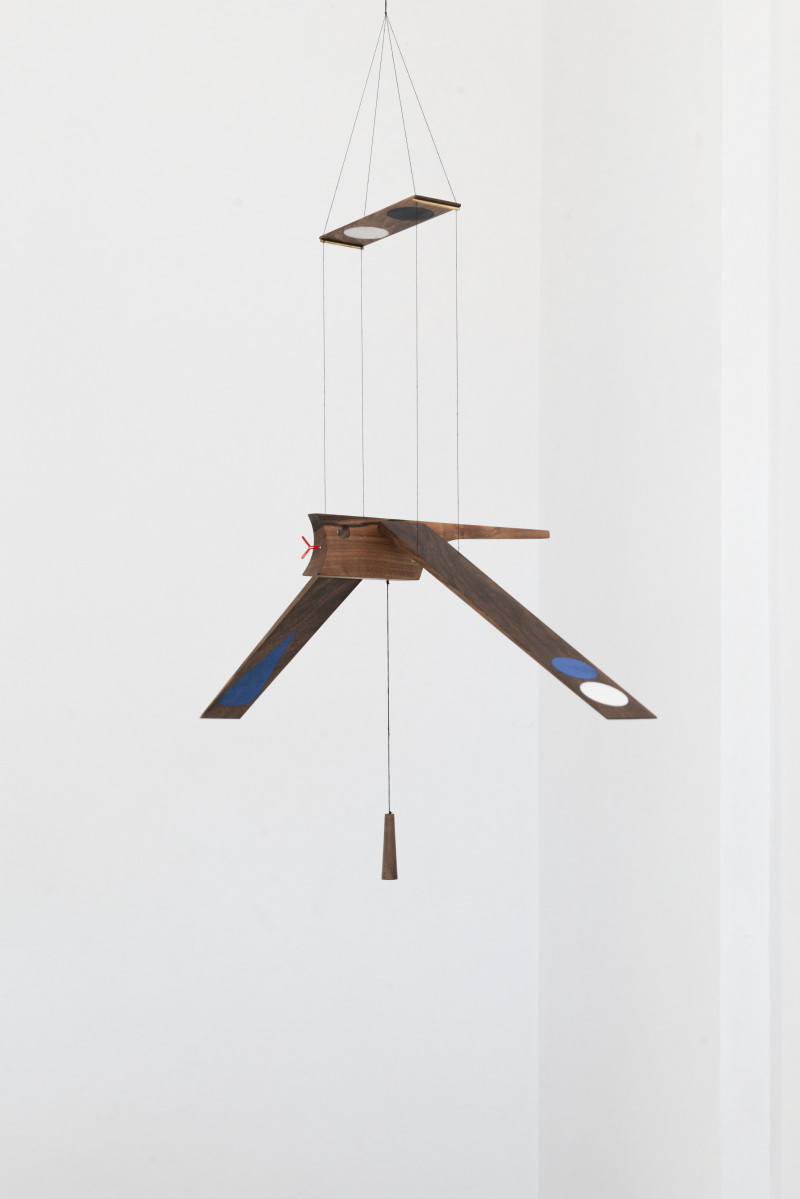
In this sculptural shelf design, Kobayashi combines the robotic and the human, the male and the female, the dead and the living and home storage and artful crafts. Kobayashi’s core idea is that a shelf shows a lot about the personality of the owner. This thought inspired him to create a shelf that has its own persona.
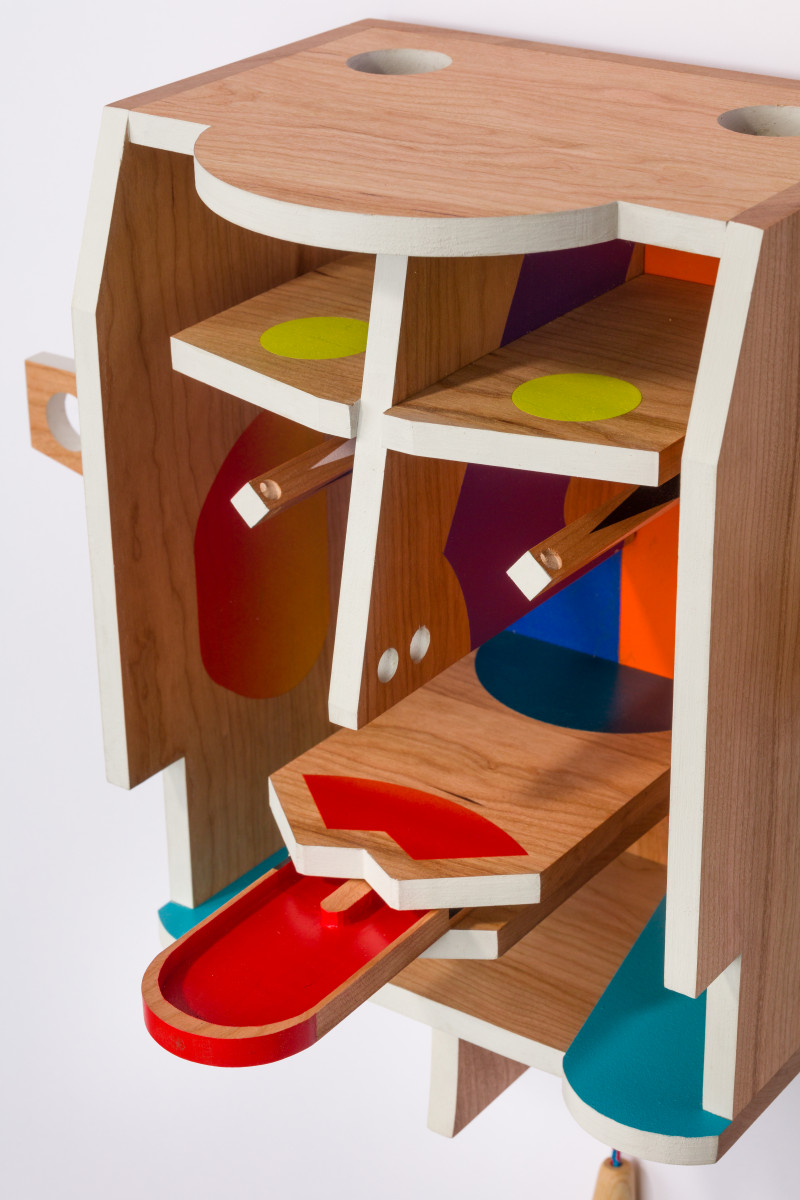
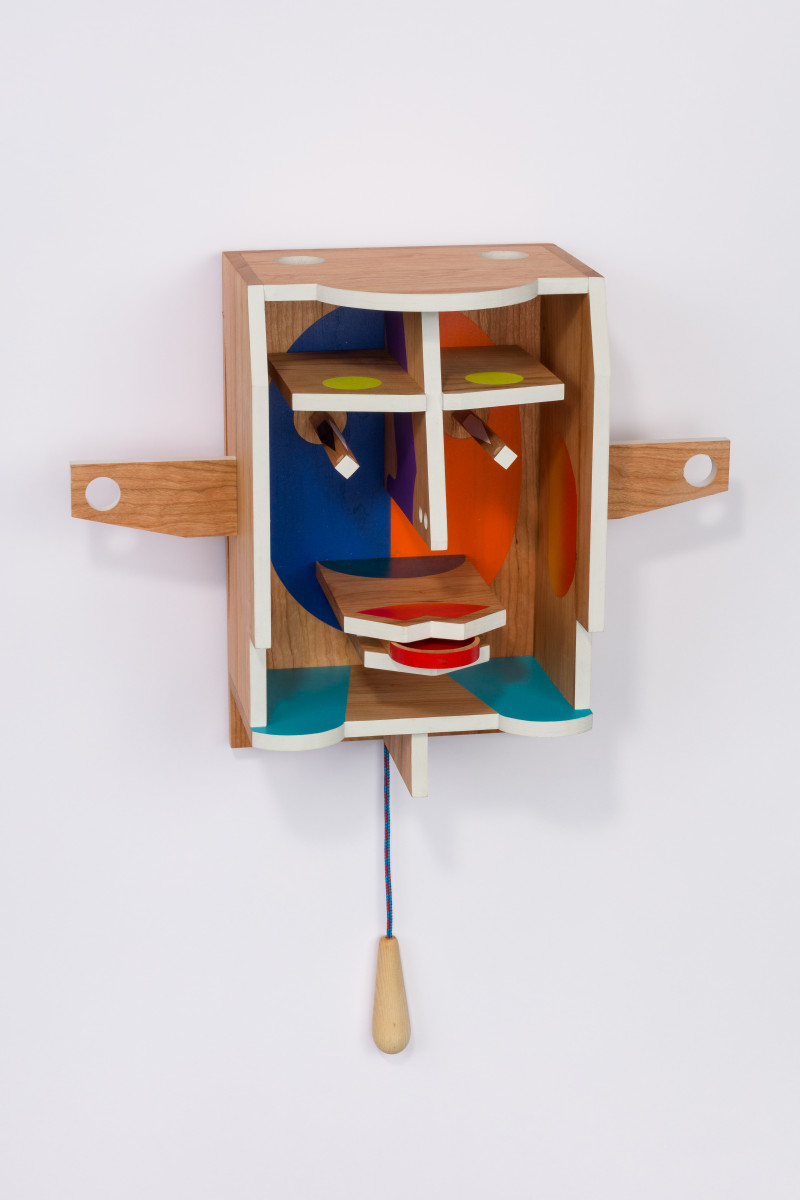
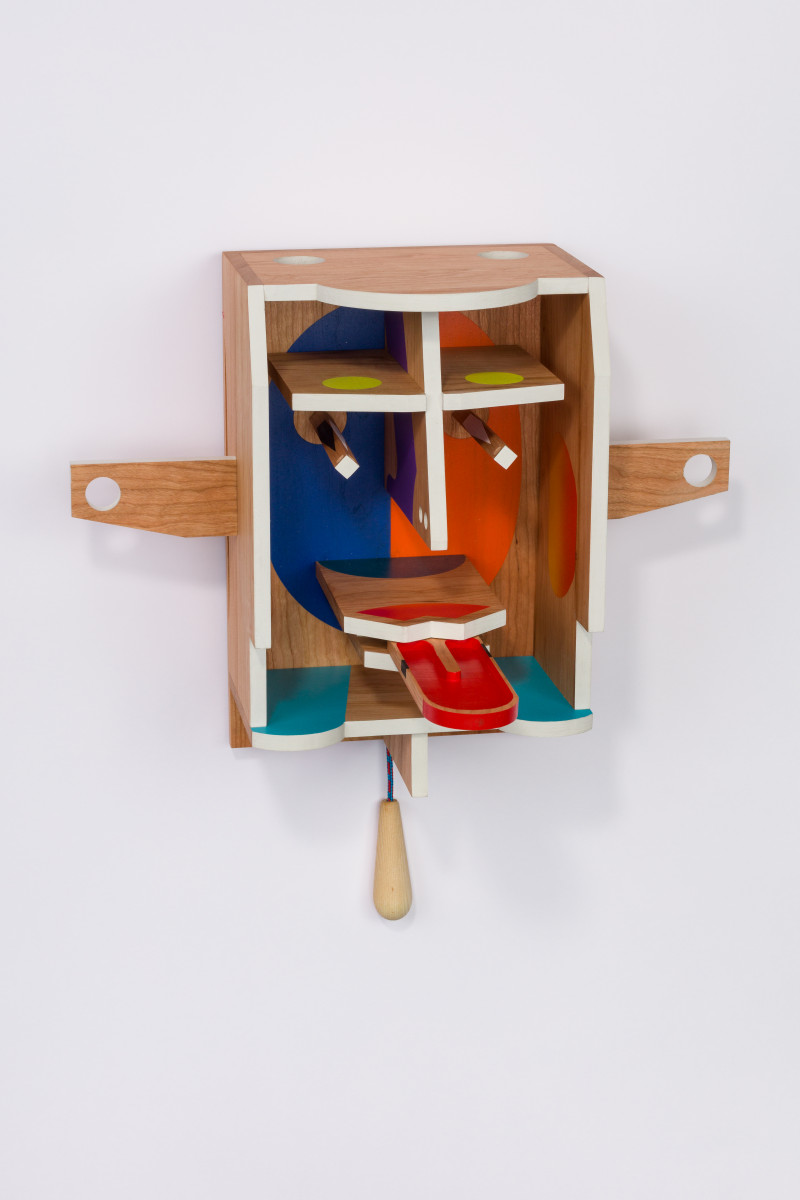
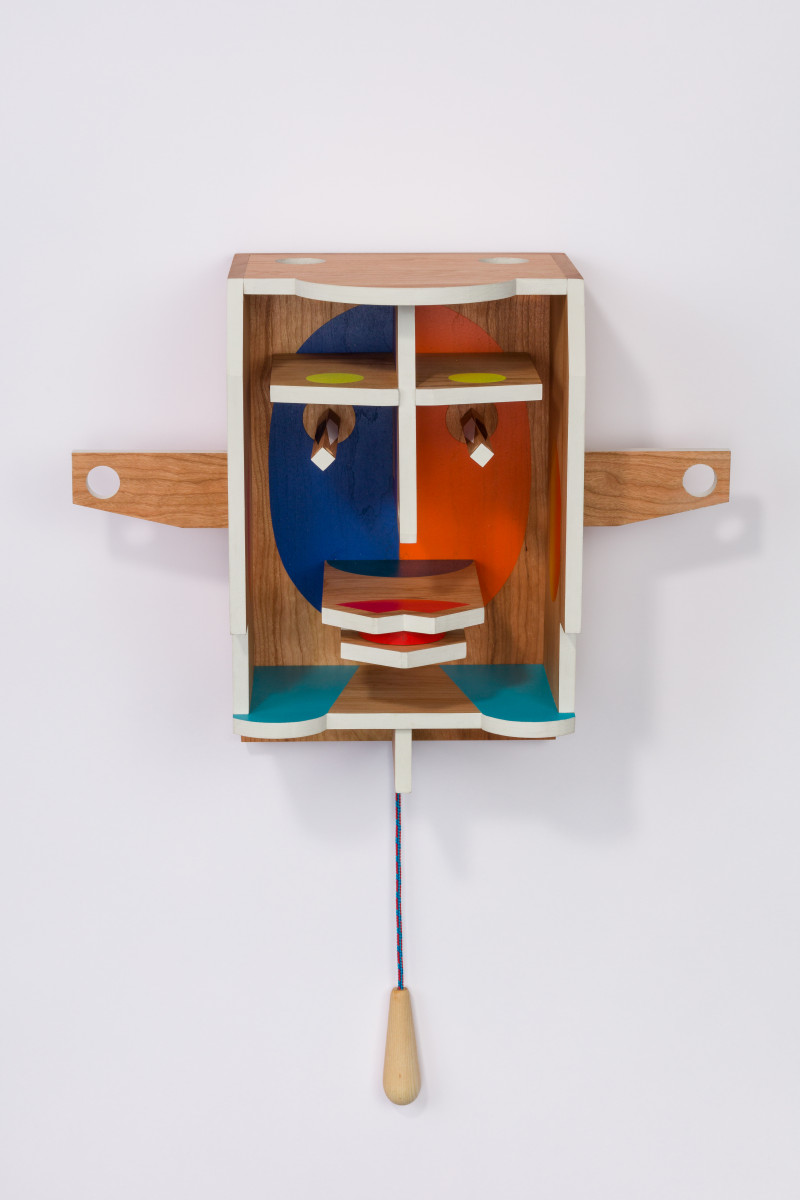
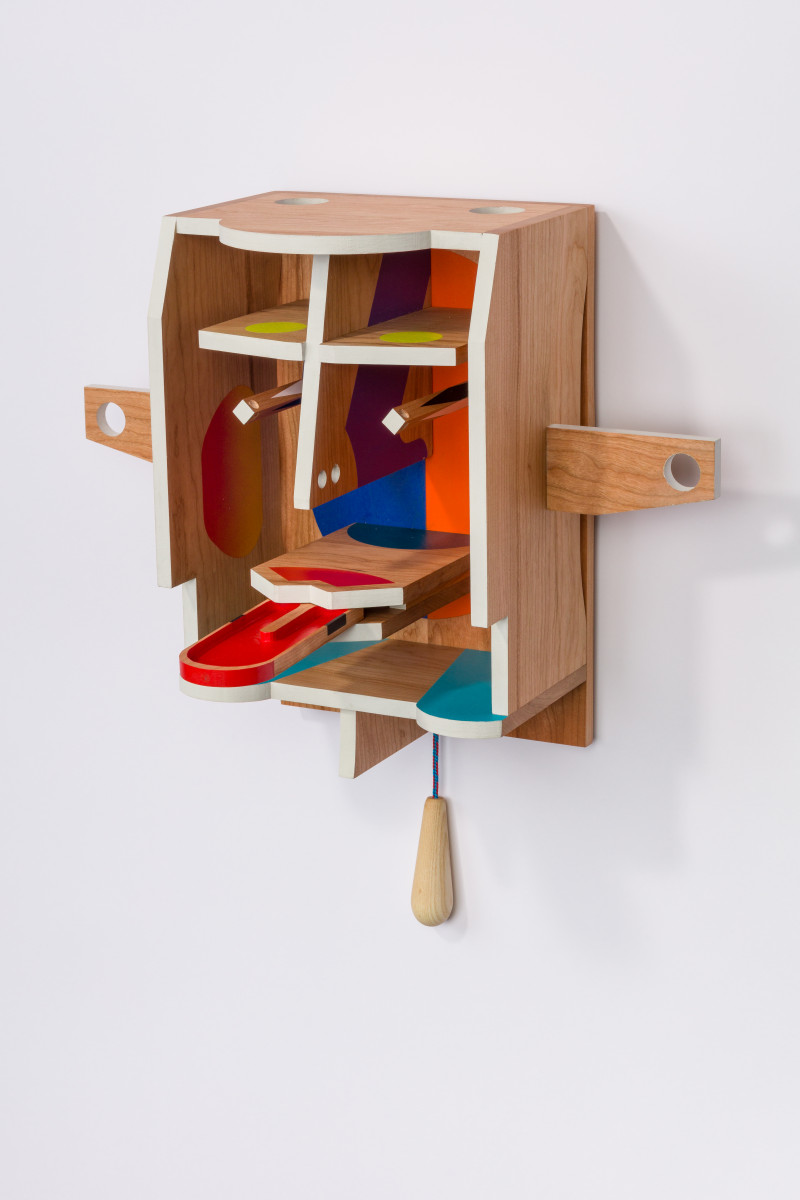
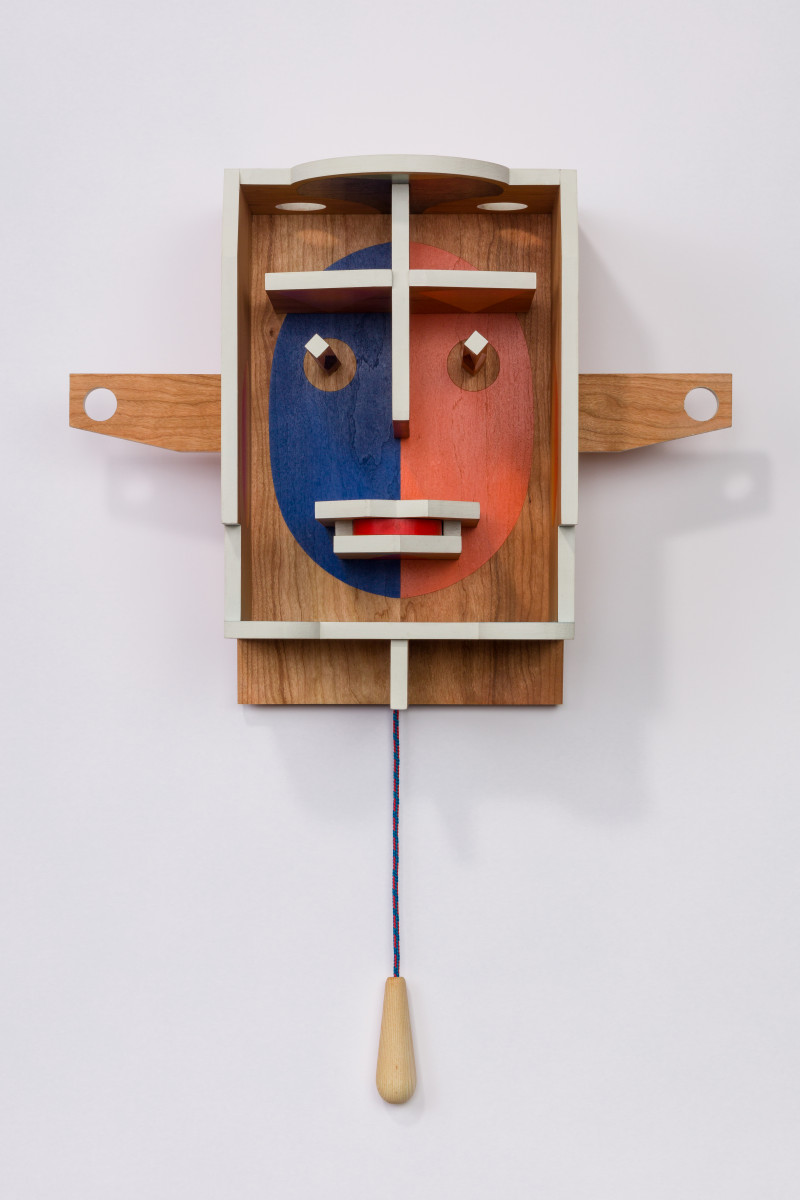
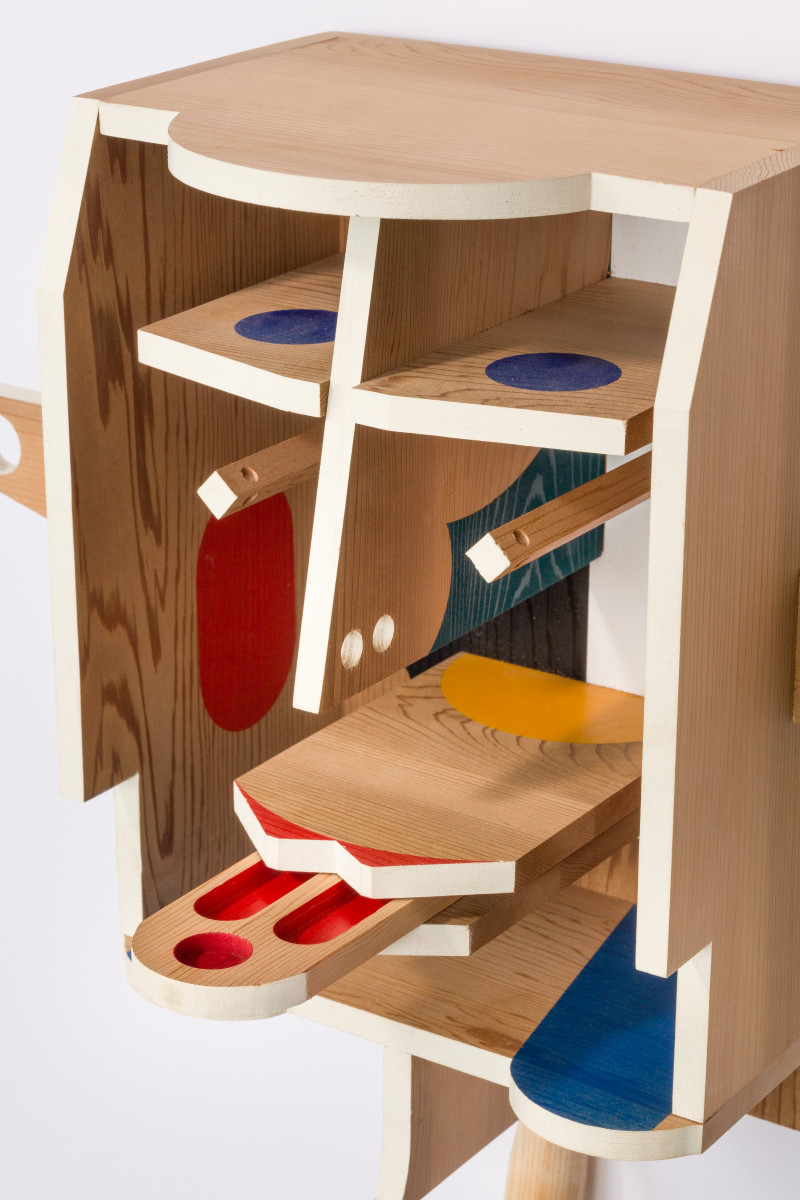
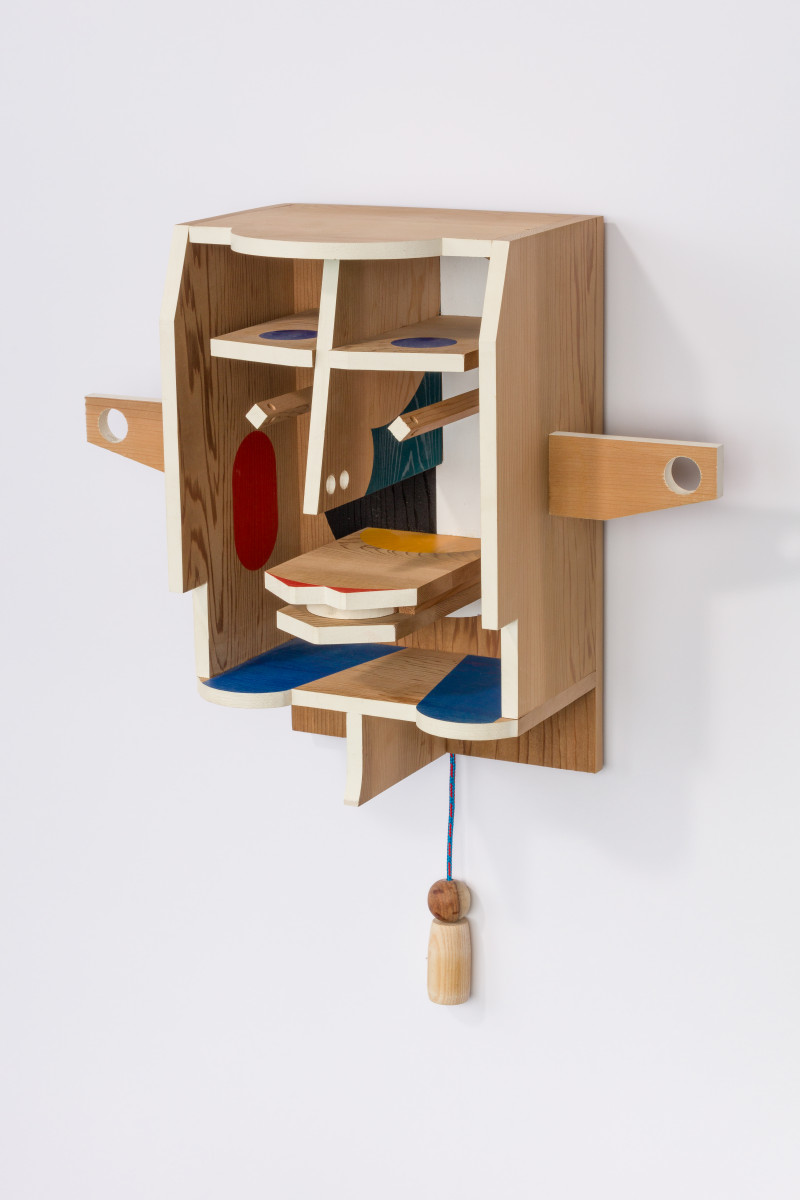
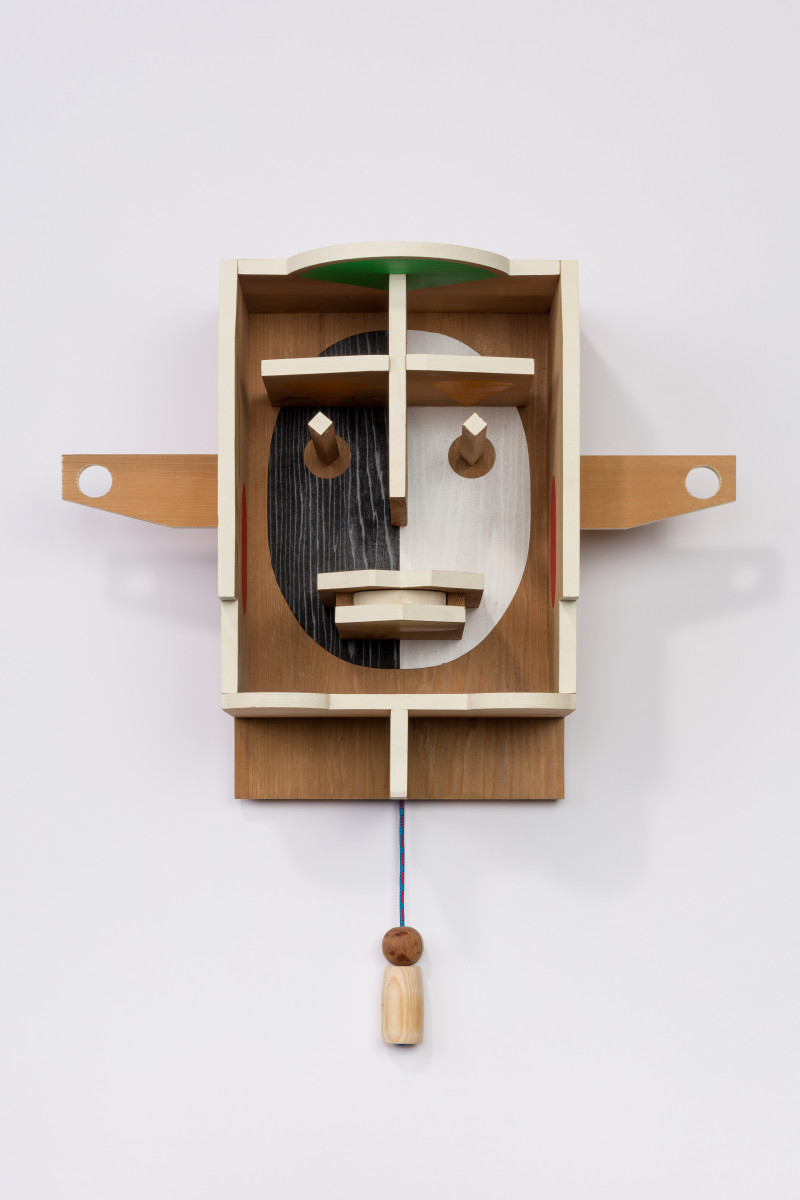
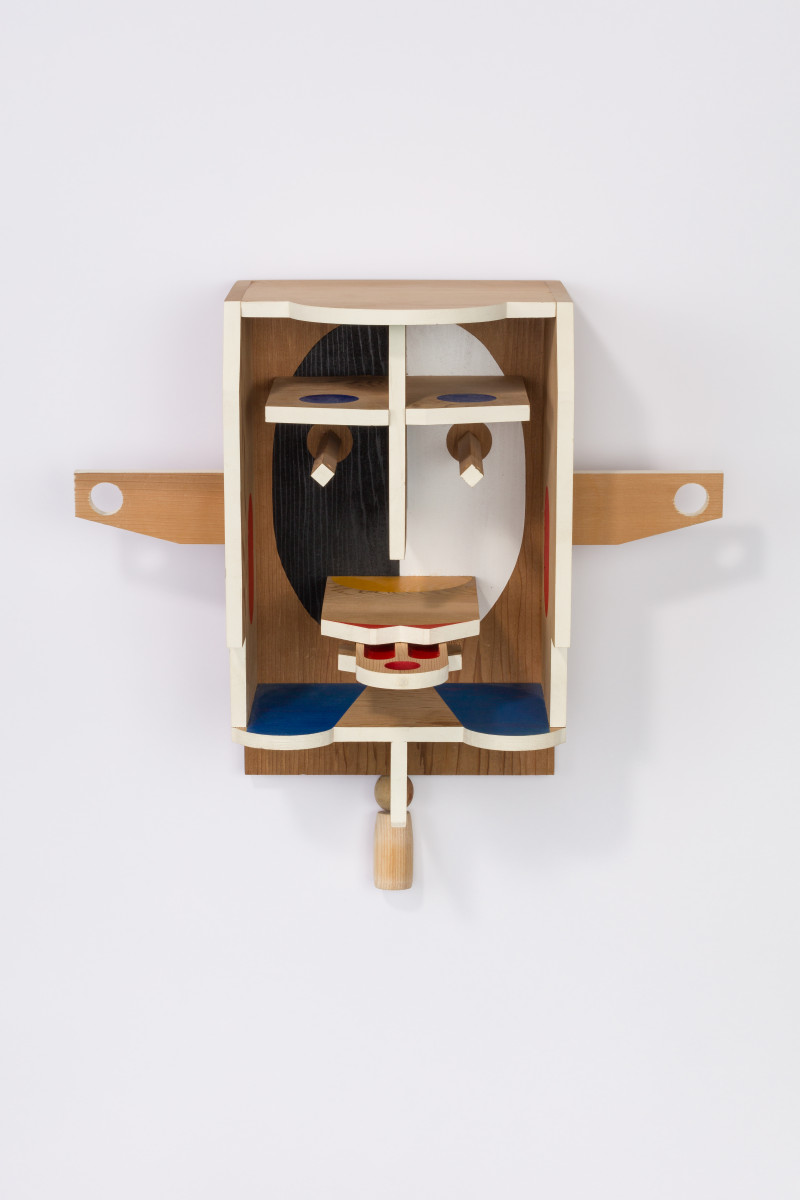
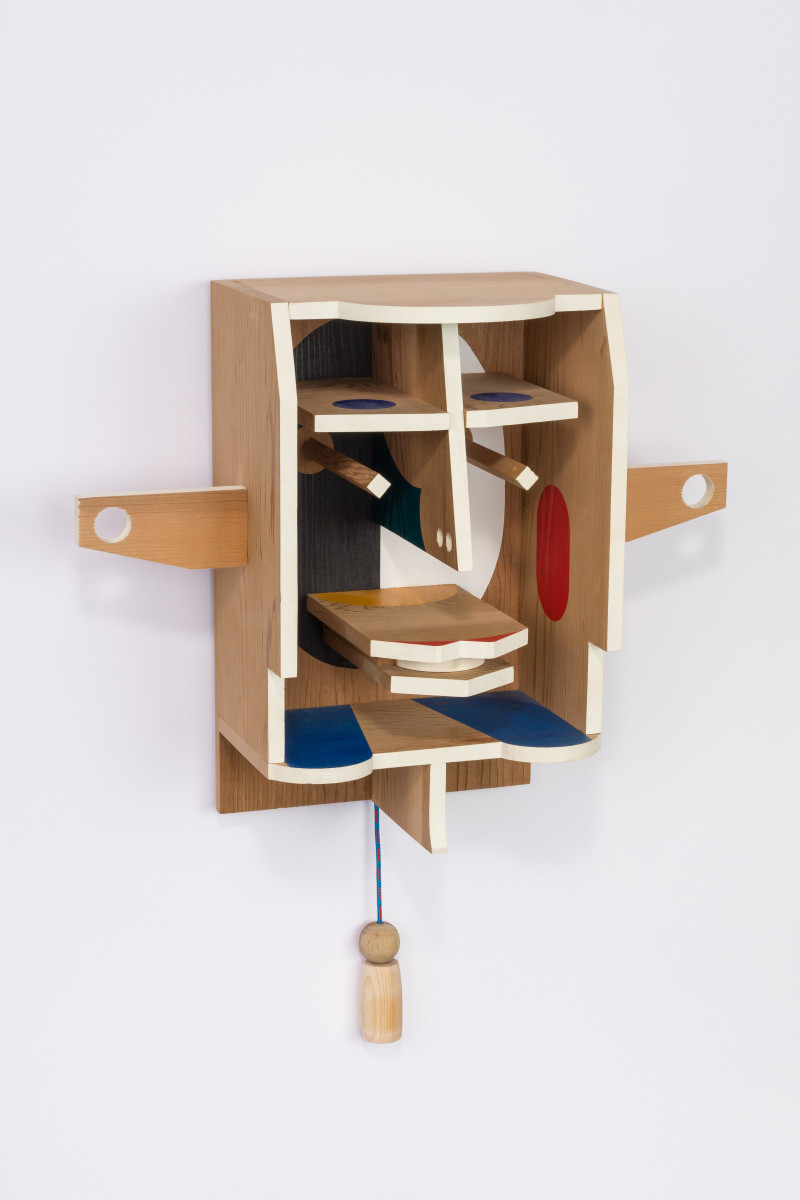
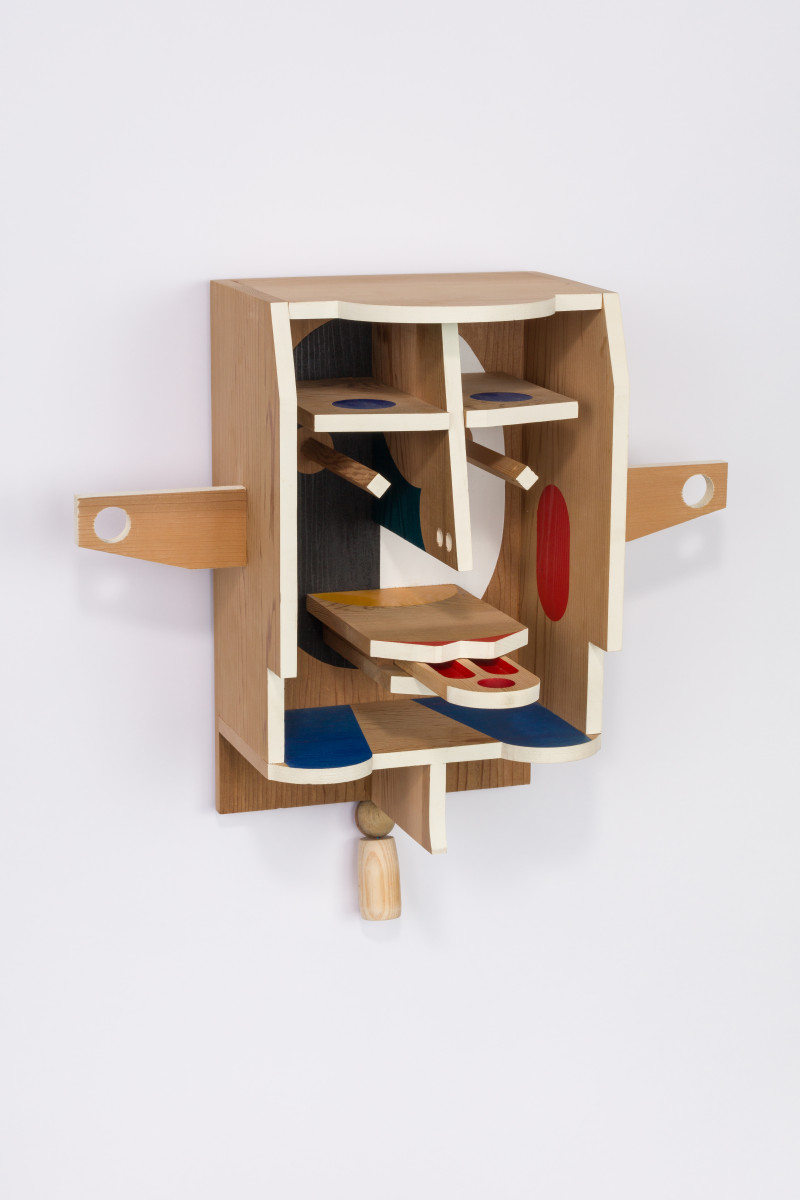
Rio Kobayashi was invited to participate in the exhibition R for Repair at the V&A in London. He was given the task to repair an old sewing chest, that used to belong to the owner’s grandmother, Nancy.
It was important to Kobayashi to understand the history of the piece before starting to repair it. After many conversations with the owner, it turned out that Nancy used to hide her artworks within it, and thereby also her dream of becoming an artist.
Kobayashi wanted to honour this dream by transforming the chest into a table. The closed chest reminded him of a bud that was yet to flower. He wanted to open it up, so that the dream could finally bloom. At the centre, underneath the glass, he placed a small painting by Nancy.
In order for the piece to become a functioning table, the legs had to be extended. Kobayashi used Japanese joinery, walnut, sapele and ash to do this. It was important that the piece would be able to live on for many more years to come, as well as that the added materials would age well with it.
Kobayashi deliberately used other types of wood and finishes to modify the piece so that difference between new and old would stay visible. The green nail polish on one of the feet encapsulates this with a smile. Nothing should be hidden any longer.
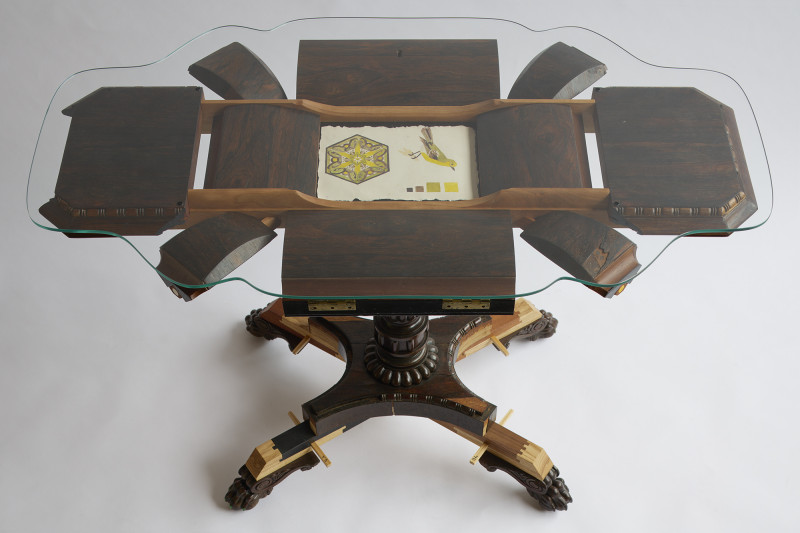
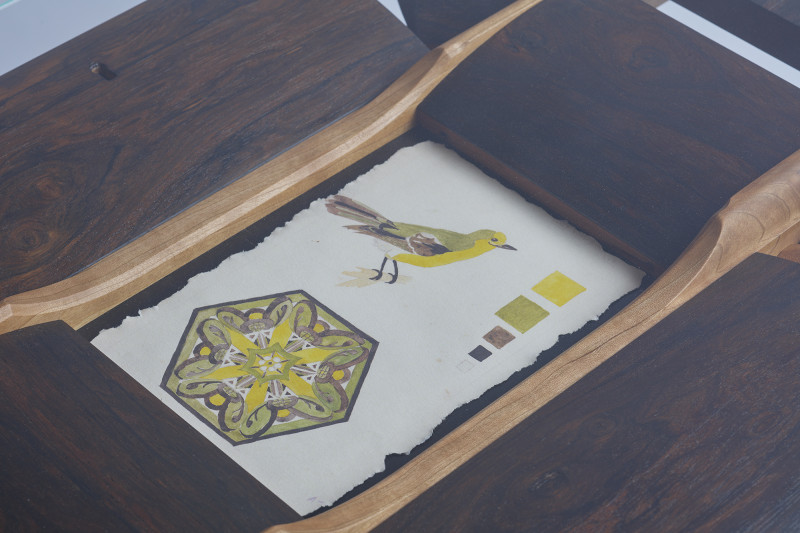
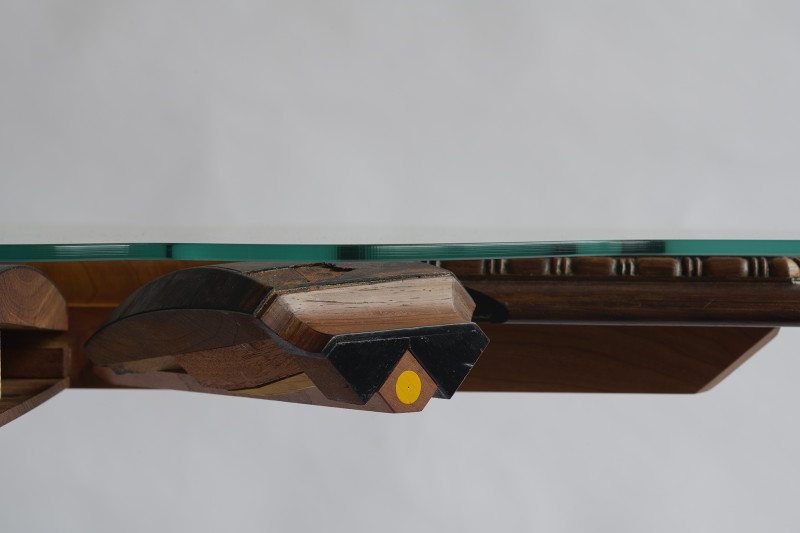
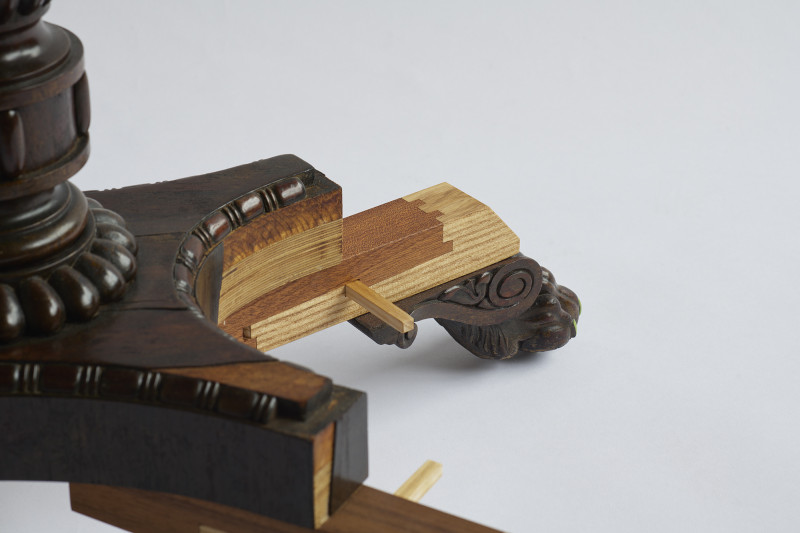
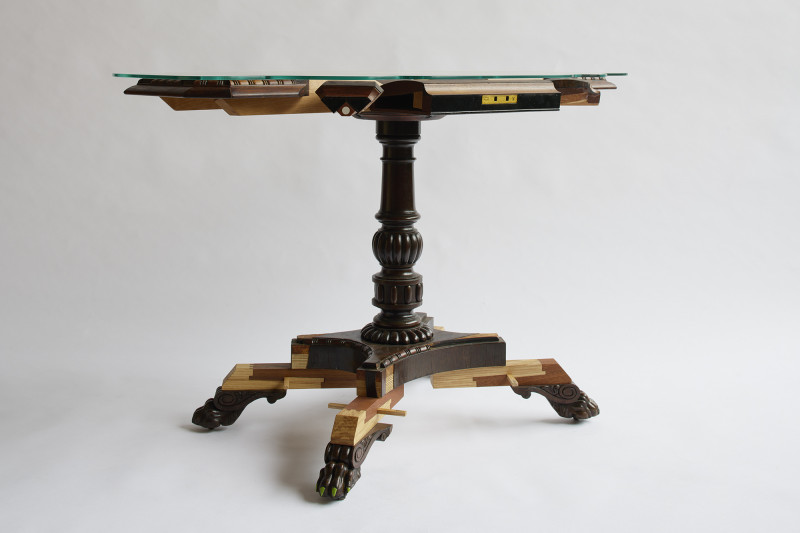
Mirror is a ubiquitous item of unique quality. I have always been intrigued by the gesture of looking at oneself in a mirror.It has become a modern ritual that we all perform religiously. Simple yet charming. During my visit in Venice, I was struck by the idea – the waterbody serves as a mirror for the city. Canal is a piece of mirror that lays horizontally, reflecting the dazzling stars during nighttime and the clear sky in the day. In this collaboration with Barbini, I am keen to highlight the poetic character of Venice by designing a mirror embedded in a glass structure built on an oak base, resembling the buildings supported by an oak column system in the canal. On the other hand, the meticulous construction and vigorous ornaments also reflect my cultural background, where the aesthetics of sacredness is much appreciated. Lastly, this piece isa secret celebration for my dream coming true as my childhood aspiration was to become a glassmaker.
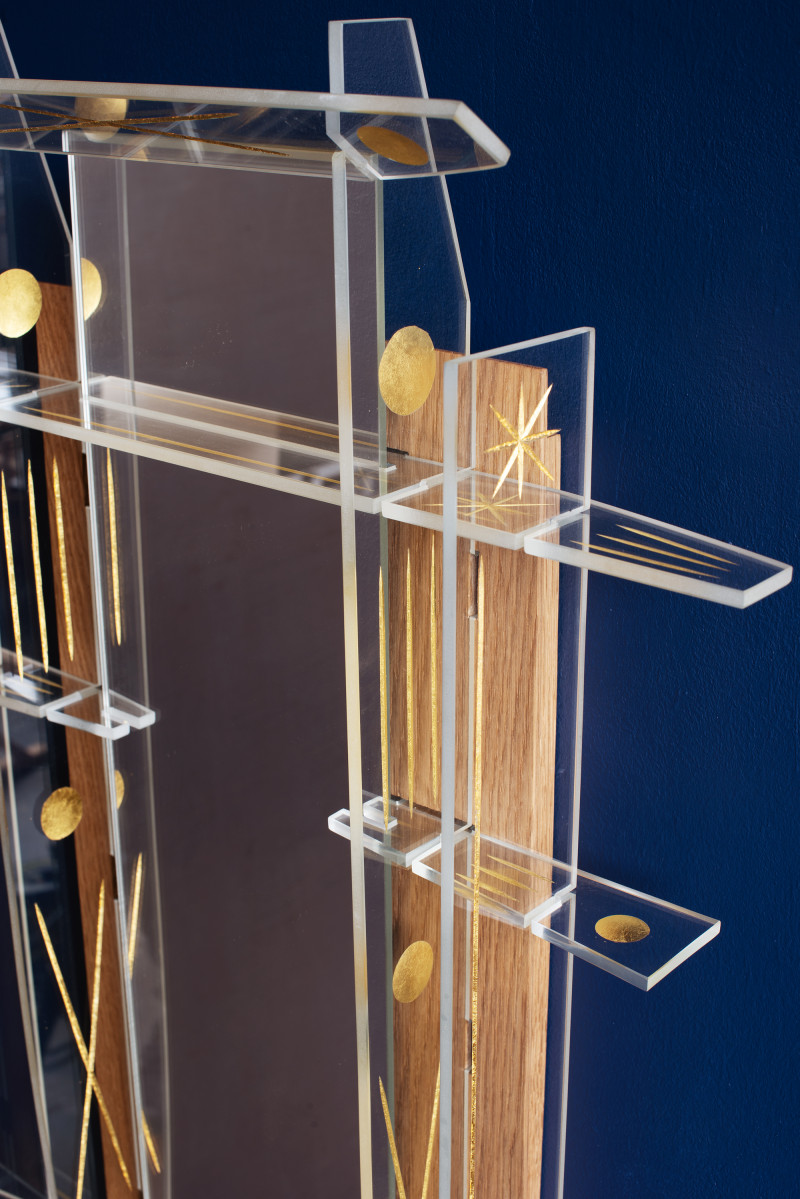
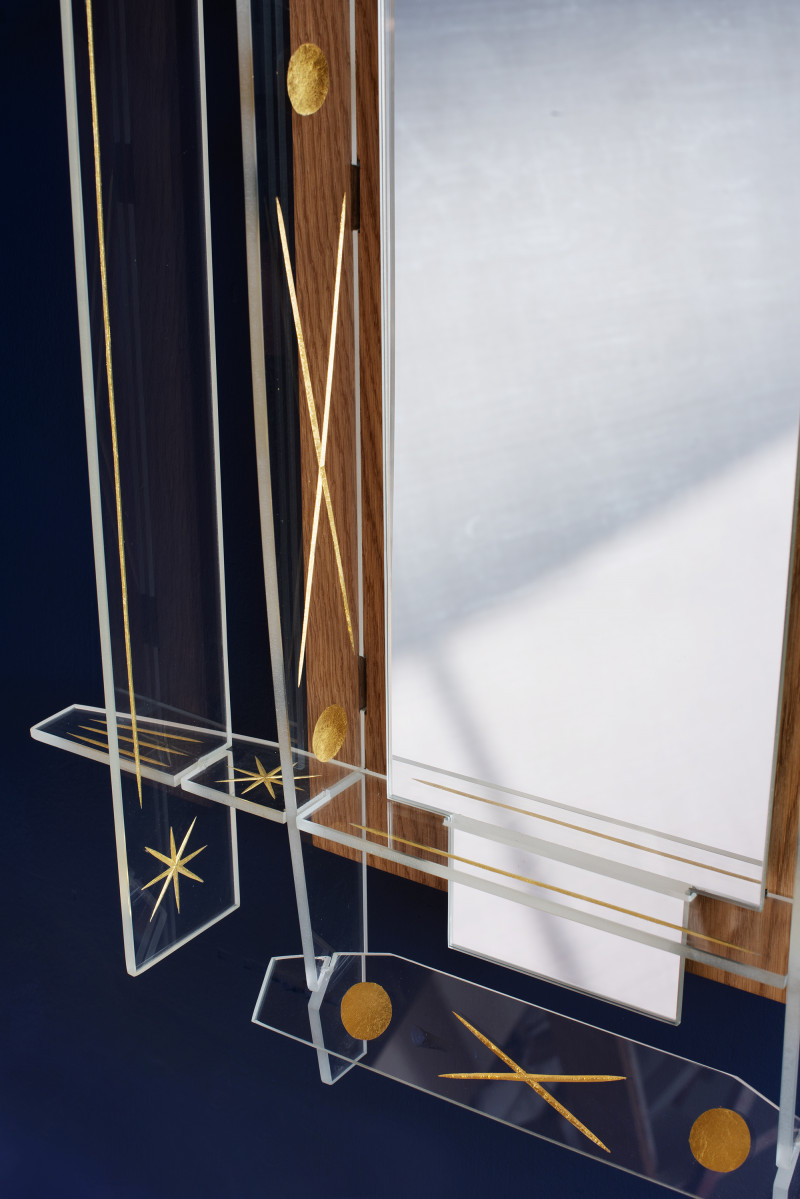
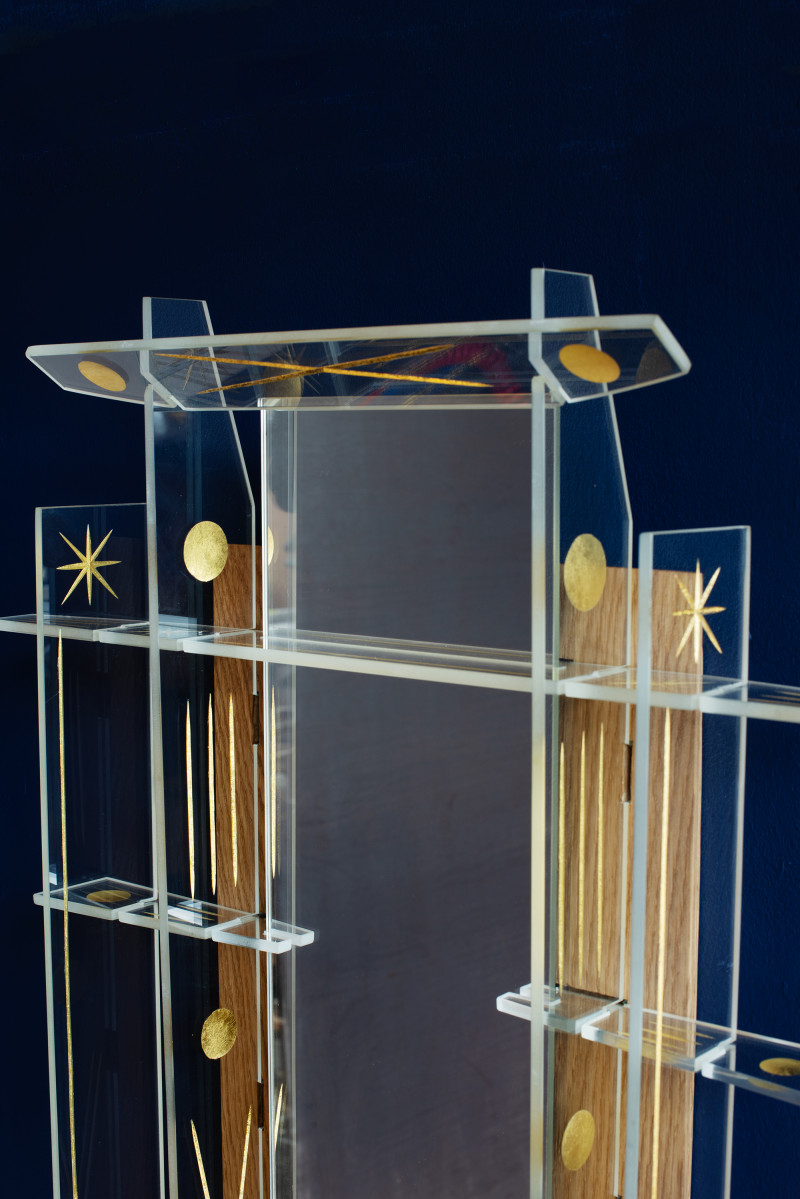
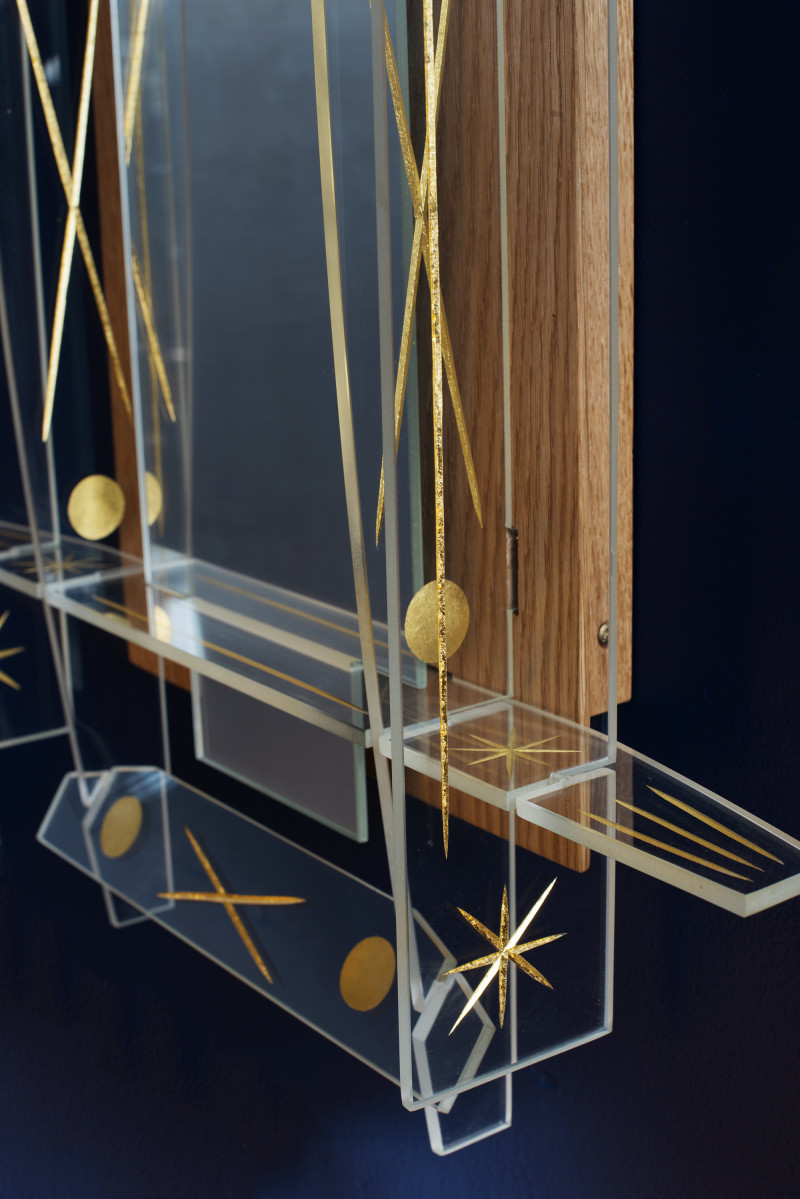
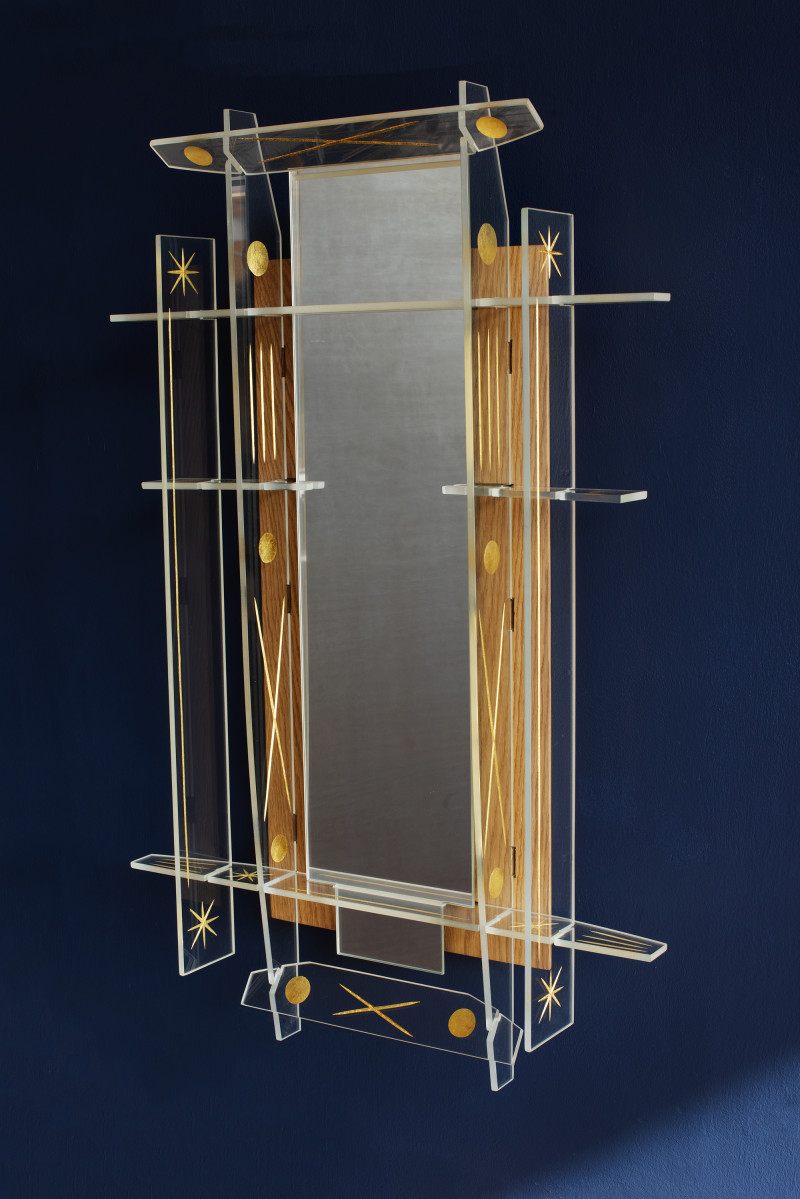
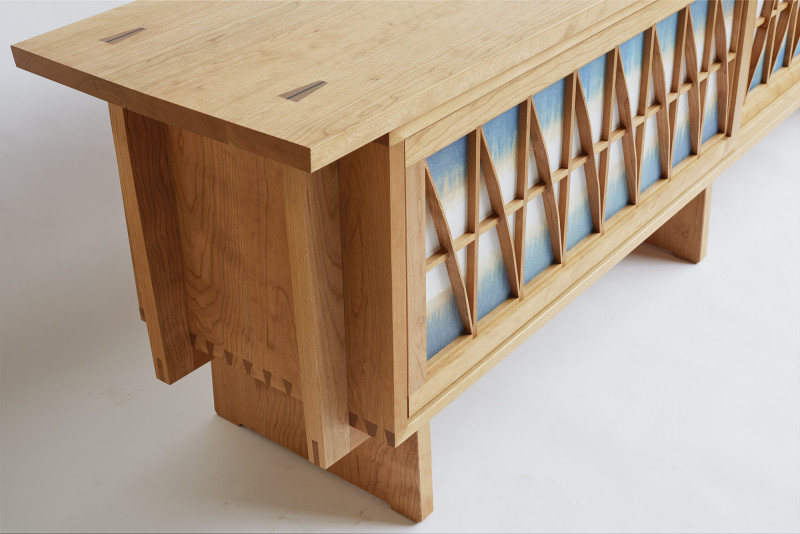
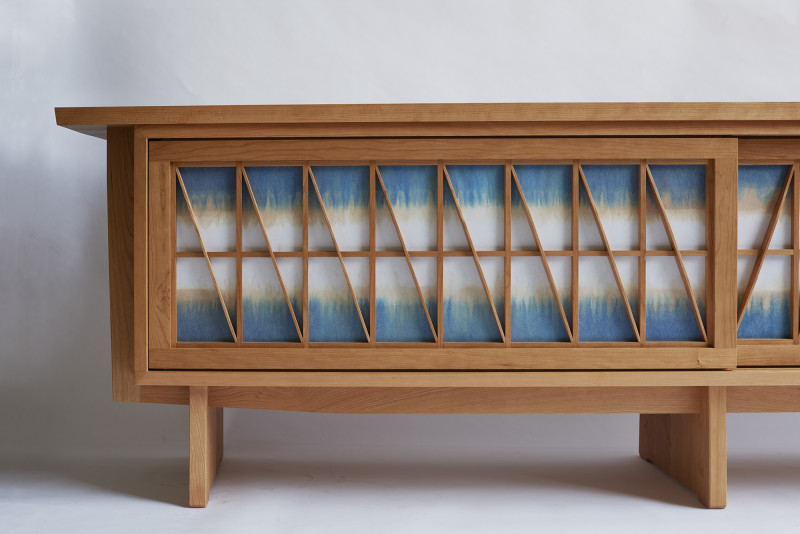
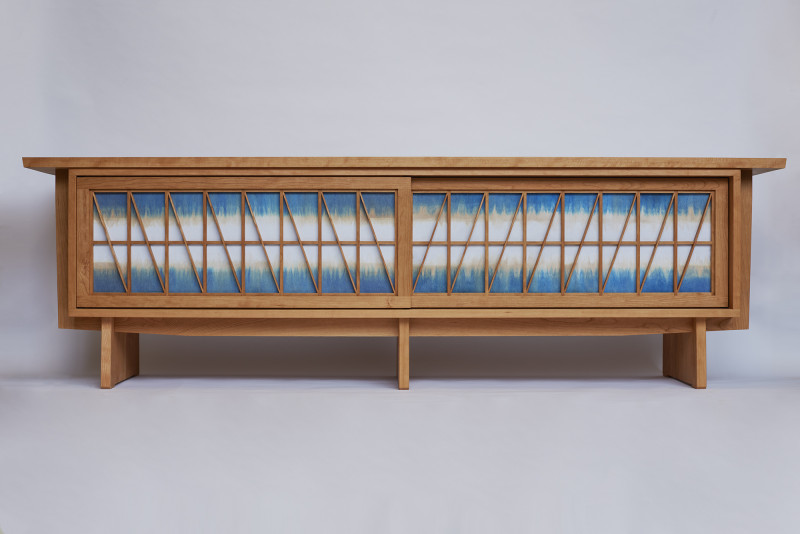
‘I have a weekly changing flower arrangement on my dining table to create a friendly vibe for my home. The petals inspired me to make the Ohana trivets – Ohana meaning flower in Japanese.’
Fifteen simply shaped wooden dowels are assembled to create a balanced round shape and flat surface to serve as a trivet. Each dowel is painted in different colours and imitates the flower petals. Kobayashi created Ohana Trivet in two different sizes that come in three different colour variations, as well as a natural wood version. The Ohana trivet flowers on the table will never wilt and should serve as a cheerful and bright addition to the dining rituals.
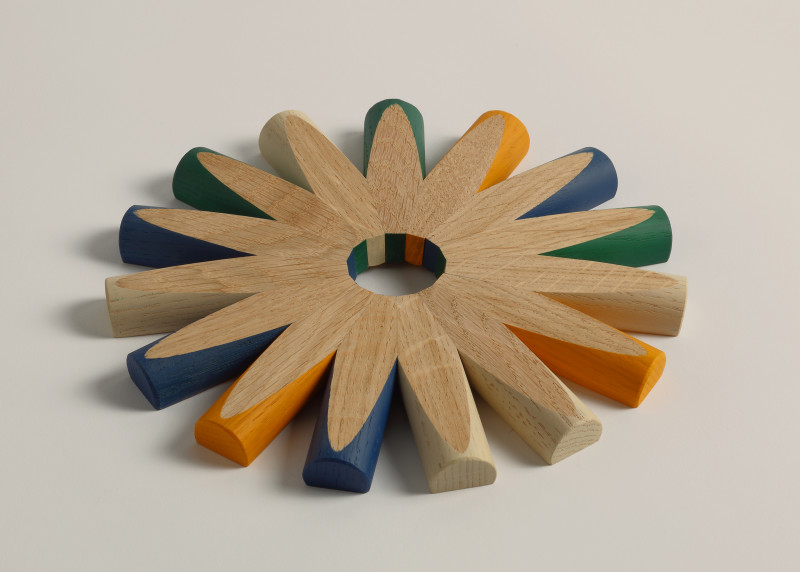
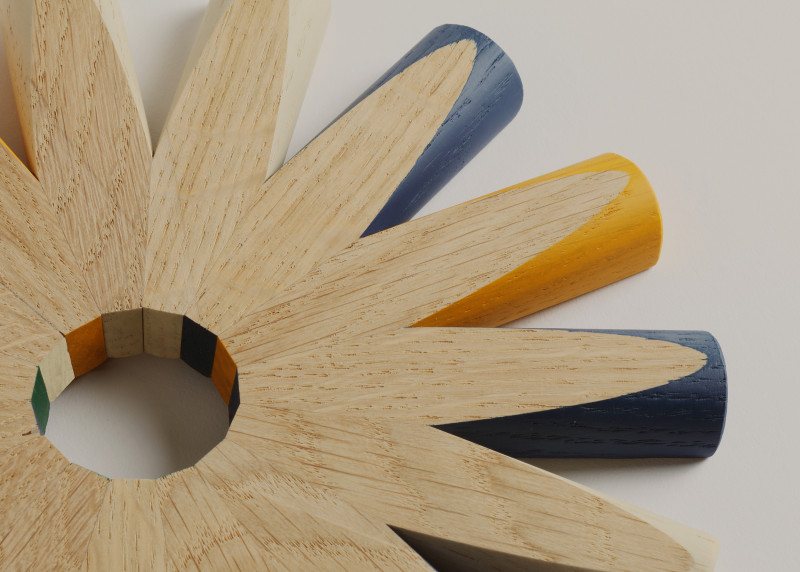
A friend approached Rio Kobayashi in the beginning of the Covid pandemic. He wanted to know whether Kobayashi would be interested in repairing an old, broken Thonet chair that he had.
The broken chair oozed with history. The friend found it on his travel in Europe. Already then it had been modified. An upper part, with hidden drawers had been added to the chair. A feature that Kobayashi kept.
The chair stayed in Kobayashi’s studio during most of the pandemic. Here, it was given quite a lot of attention by the designer, who worked on it in between other projects. In addition to repairing the chair, Kobayashi wanted to highlight its history and charm.
By sanding and chipping off parts of the chair frame, he created a fluted pattern, that at points revealed an even more elaborate pattern made by woodworms. Kobayashi also repaired the cane webbed seat and bag by individually tying together the web with coloured yarn, leaving the ends long and furry.
At the time, Kobayashi was teaching himself the art of brush making. He added several brush details to the chair, that together with the furry seat and back tells a story of an old person whose hair growth has got out of control.With a humanistic homage to the rich history of the chair, Kobayashi managed to turn the time of the pandemic into something positive.
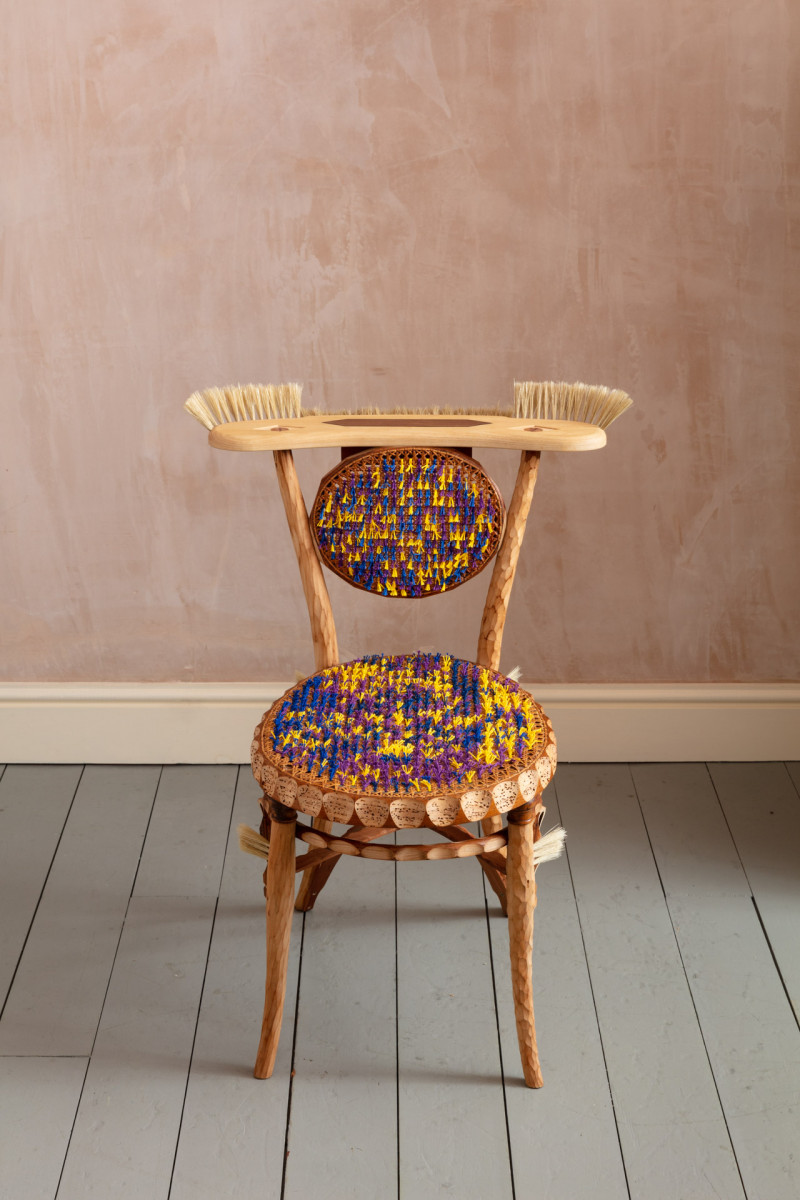
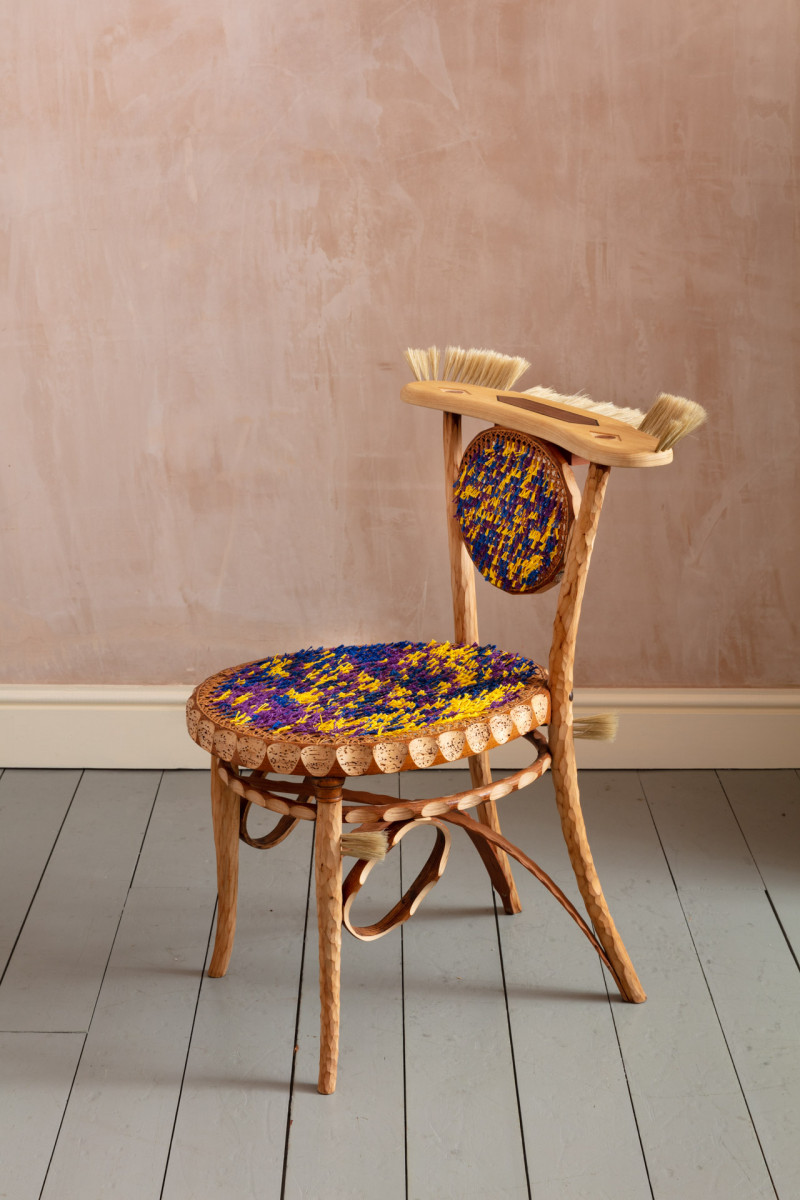
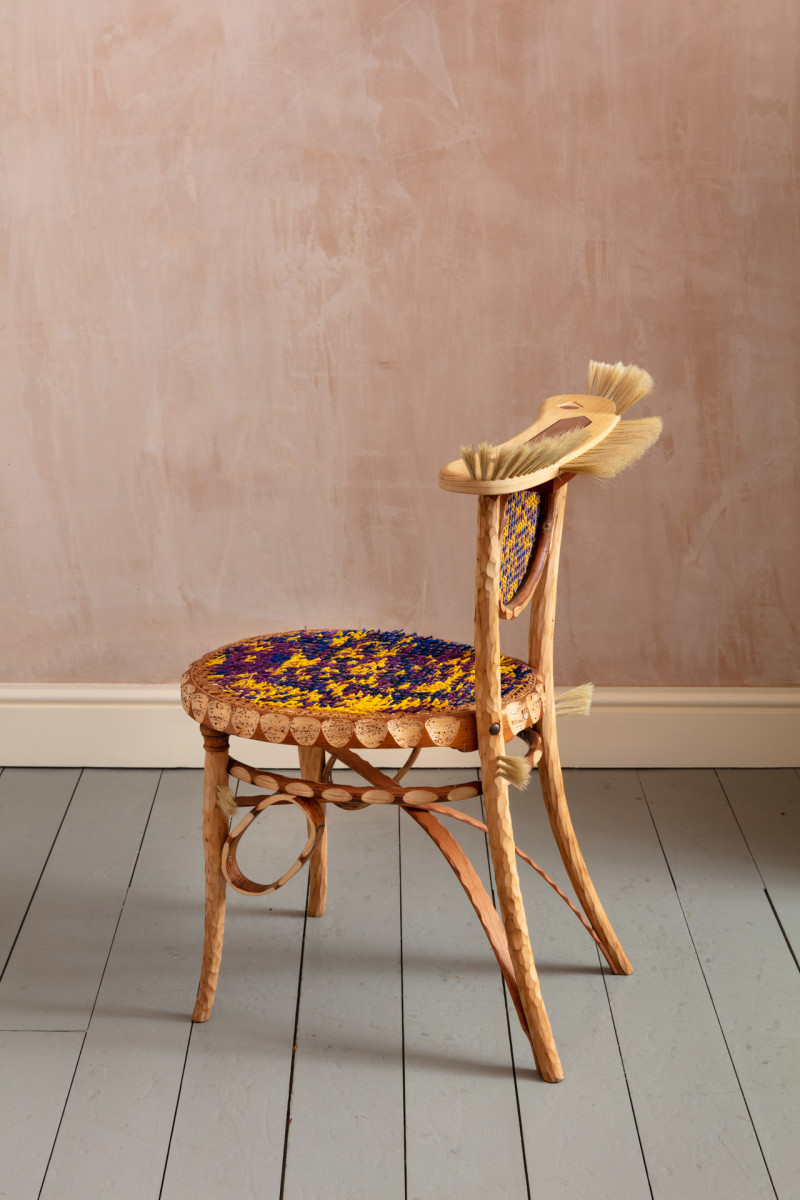
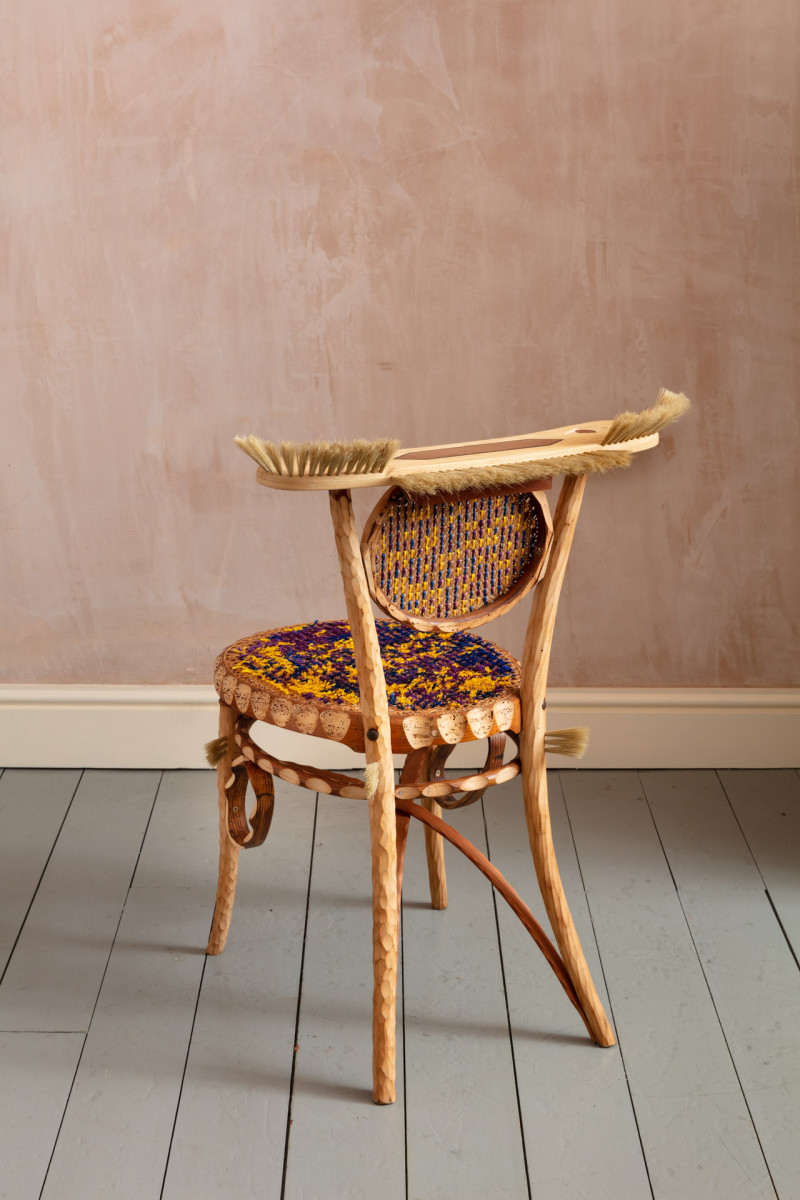
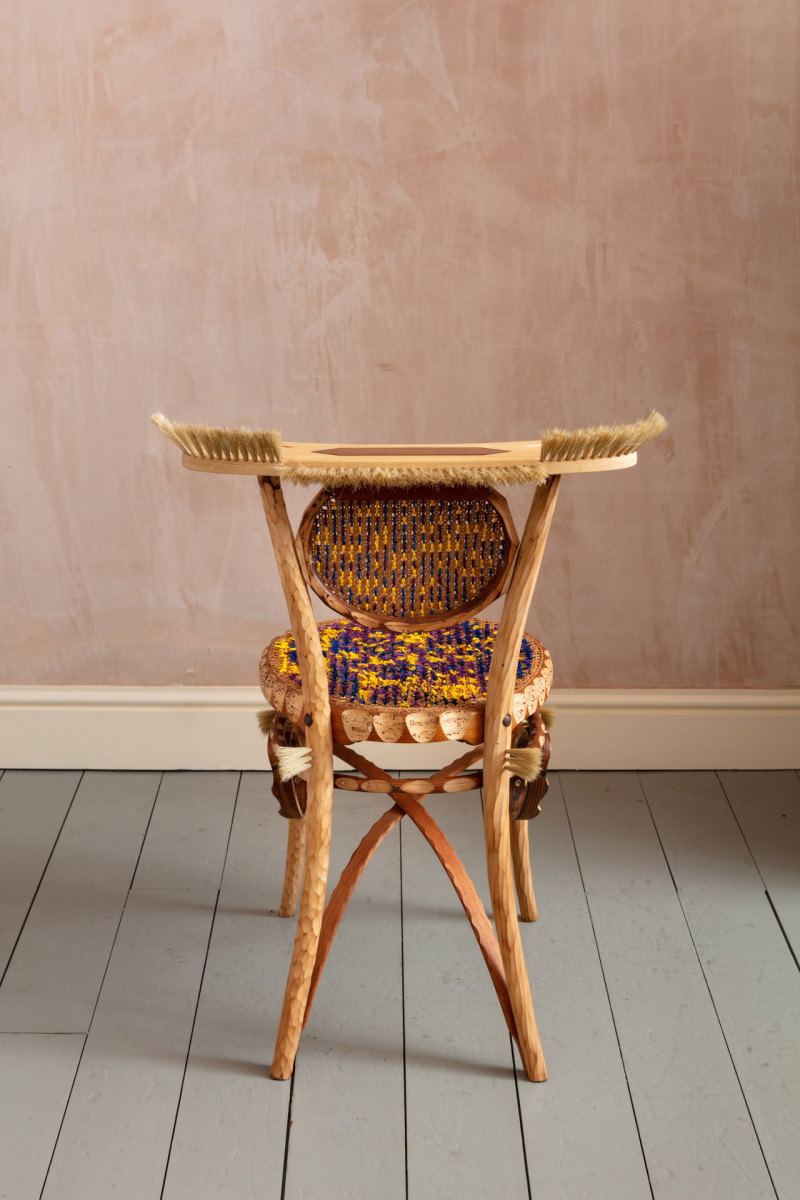
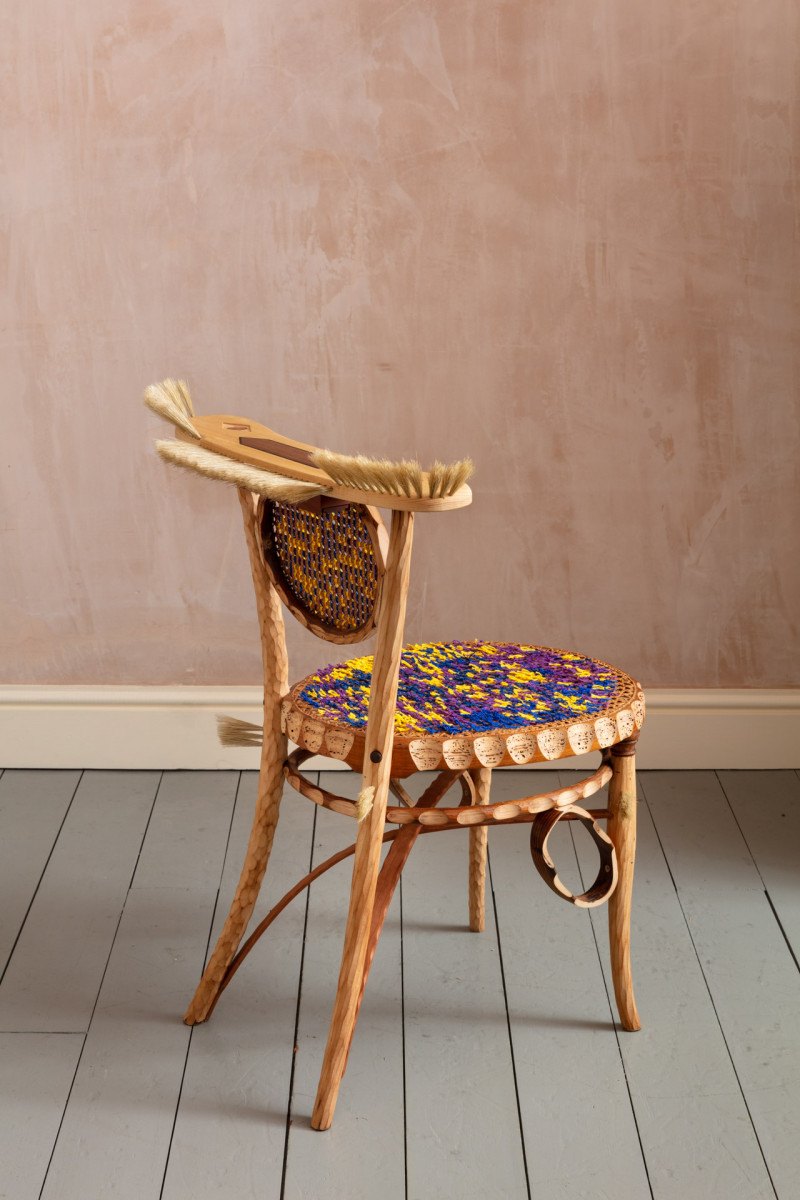
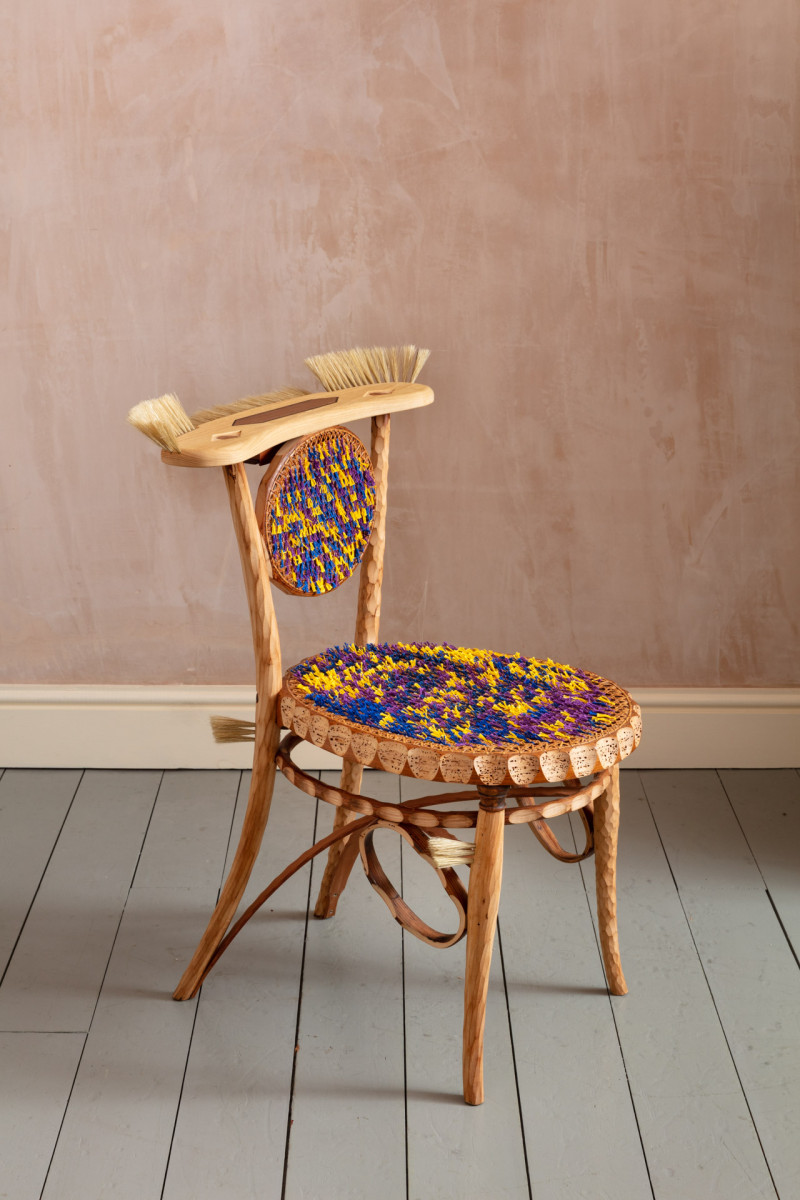
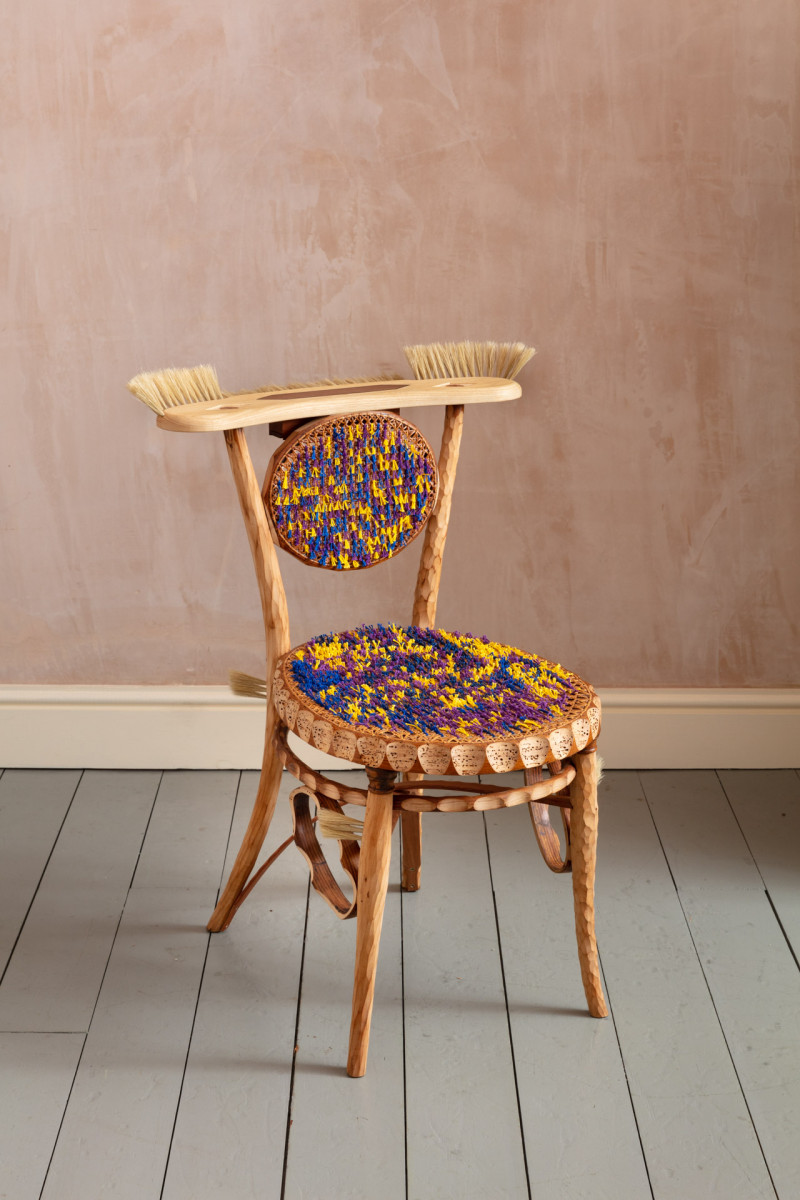
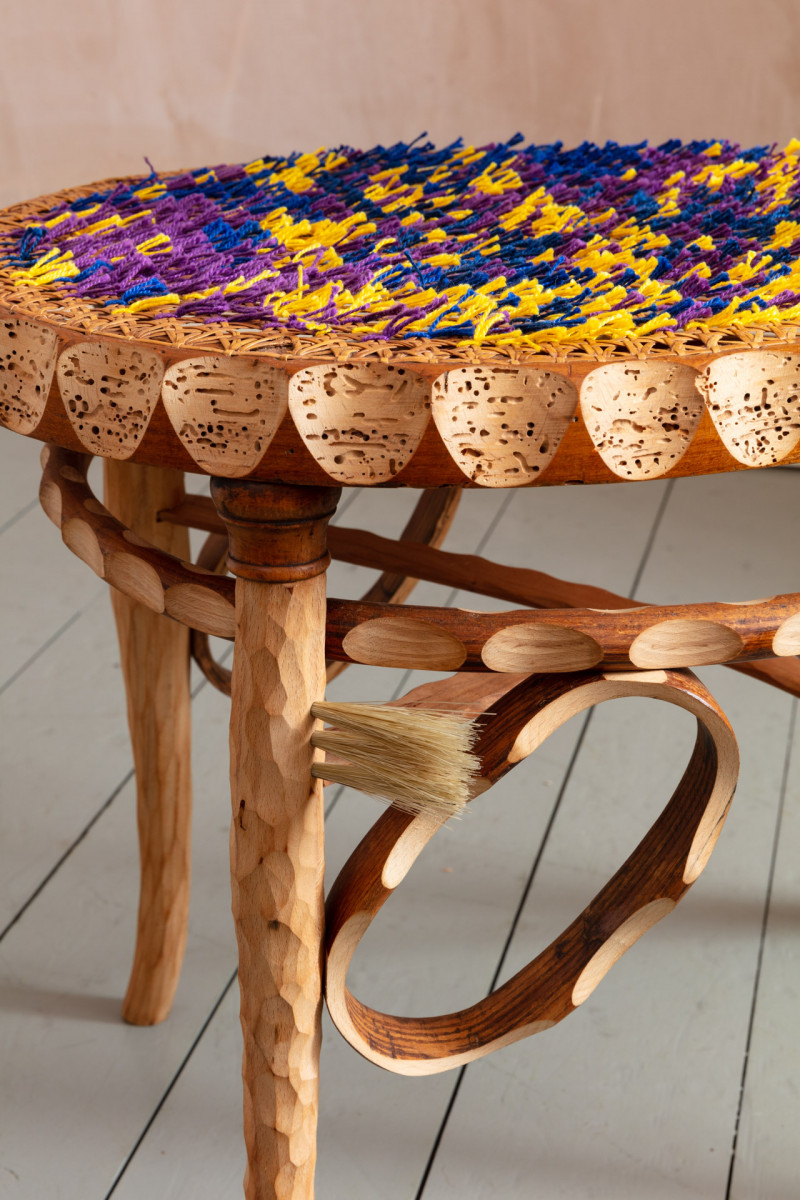
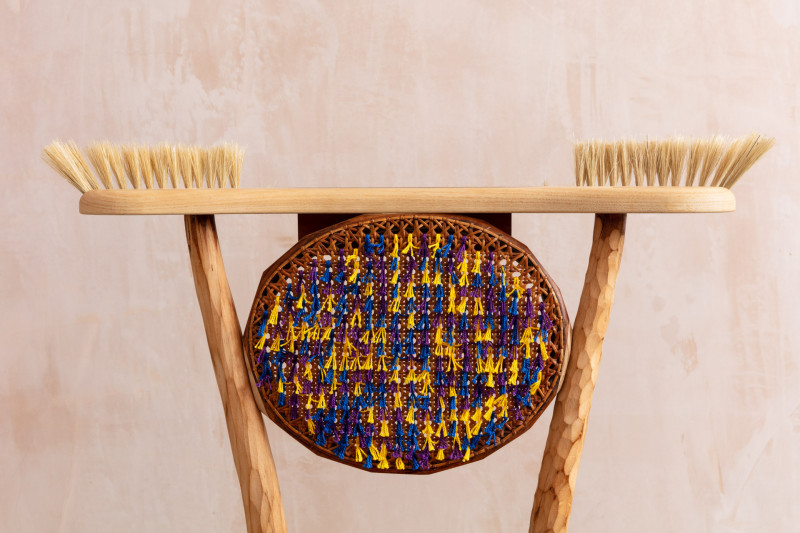
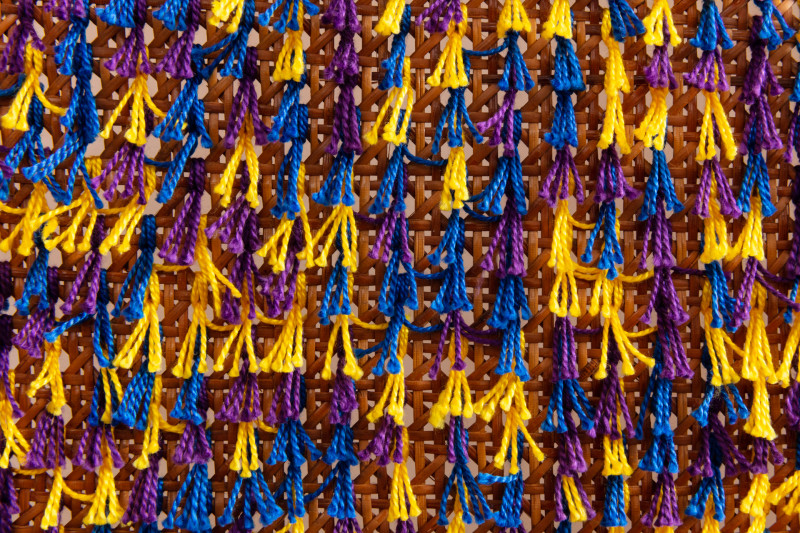
Zaru colander is a series of foldable colanders and strainers. The idea came to Kobayashi from intuition and experience: ‘I was keen to create a colander that doesn’t take up too much space in my small kitchen with limited storage space.’ He laterreinterpreted Zaru with a clever twist.
Zaru (笊), a Japanese draining basket made from bamboo, is mostly used for draining and serving Soba - traditionalJapanese noodles made from buckwheat, while in the West, a colander is also essential for draining pasta, yet not for thes erving purpose.
The series is made with three types of wood in three sizes, the small one in Cherry, the medium one in Walnut and the large one in Beech. Kobayashi first steamed and bent the wood, and later joined the parts together with ball knob screws in colour black and red. To expand the colander, one can rotate the ball to either loosen or tighten the screw. Once the screwsare tightened, the colander will stay in the desired shape.
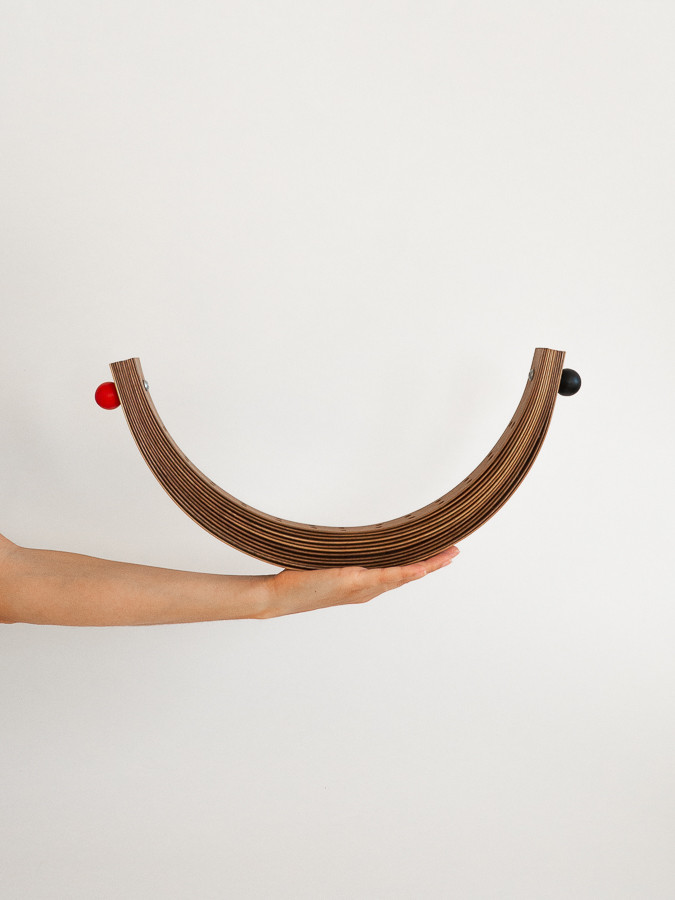
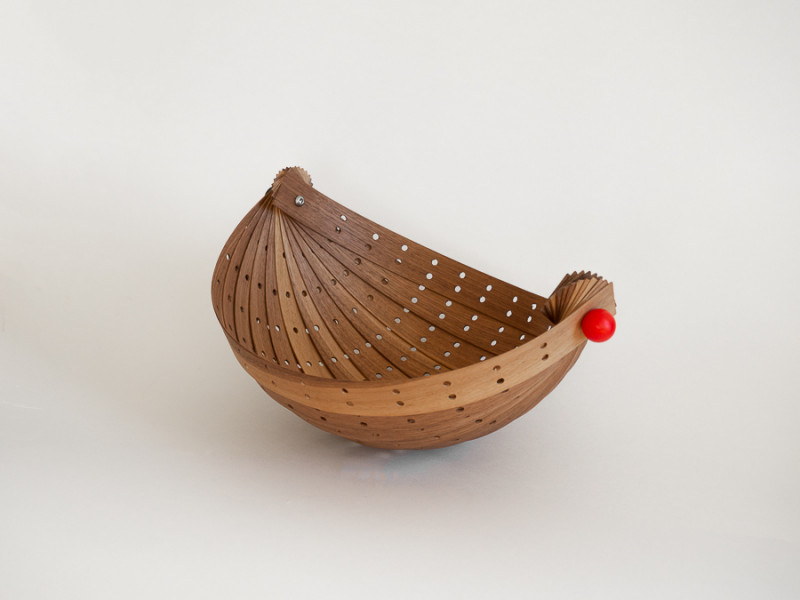
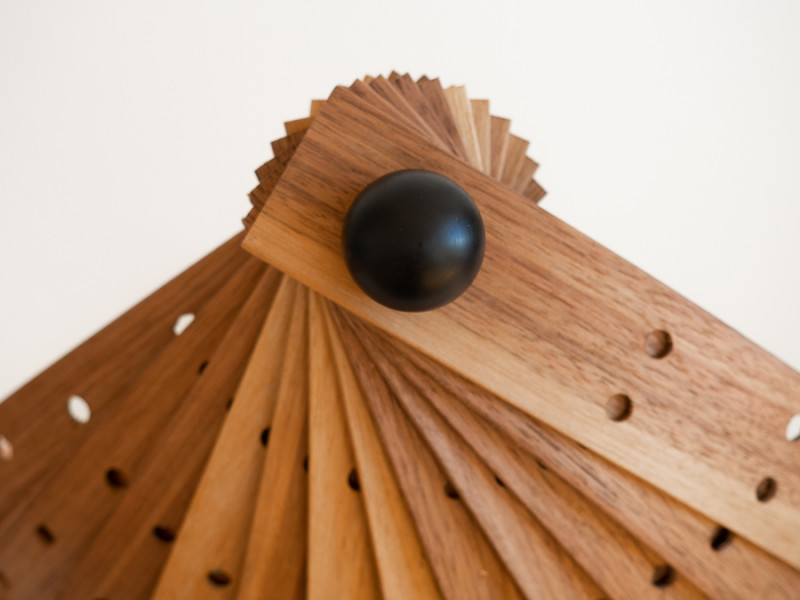
Kobayashi made this shelf during the first Covid-19 lockdown. He remembers the exact date: 5 May 2020. At that time he was spending most of his life inside his flat in London and outside in the little adjacent garden. Having had a sense of what was about to come before London was in lockdown, he evacuated a few of his tools and some leftover wood from his studio when he saw what was happening in Asia.
The first few weeks of the pandemic were spent doing nothing until he finally began to make some improvements to his own home, using the tools available to him. The result was the creation of this bookshelf, due to his limited tools a simple, cross-jointed, wall-mounted construction made in solid cherry wood.
While making the shelf during this time in which everyone had stopped together, he ‘wanted to remember this unusual moment and write down every single thought [he] had’ in a diaristic motion. He noticed that it had been a long time since he had written this much by hand, and remembered practising calligraphy as a child, often keeping his father, a potter with greathandwriting, company in his studio.
Kobayash’s shelf bears a record of the day in Japanese calligraphy ink – ‘Children’s day – kodomo no hi’ in Japan - as well as random thoughts and specifics of the way it was made. It is personal, non serious writing that nonetheless gives the viewer a sense of gravity, resembling the wooden sticks with elaborate inscriptions that can be found on Japanese graves, called sotōba(卒塔婆). Diary shelf is a work of contrasts, publicly displaying Kobayashi’s private diary and the dialogue between European and Japanese culture.
A few months later, Kobayashi made a second, free-standing shelf for Milan Design Week. Just like the first shelf, it is inscribed with the thoughts that came to his mind at the moment of creation, including the stress and pressure he felt with the approaching submission deadline.
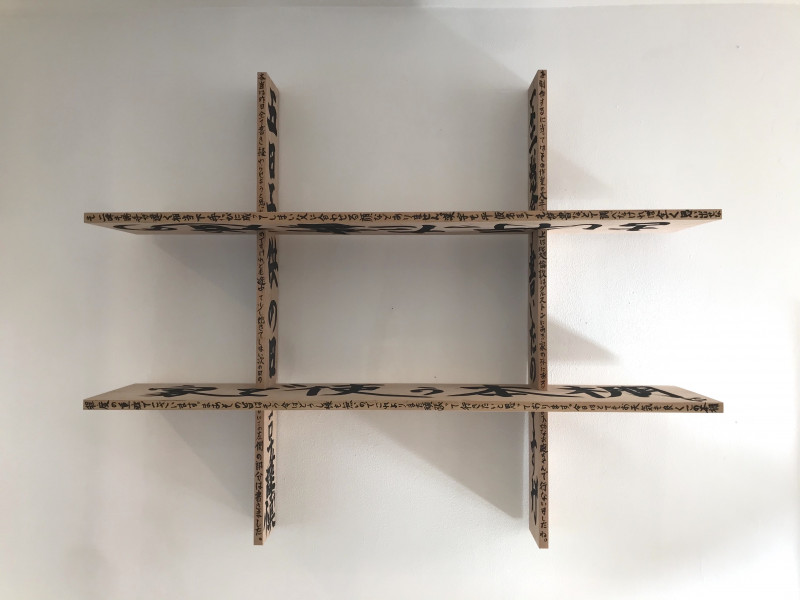
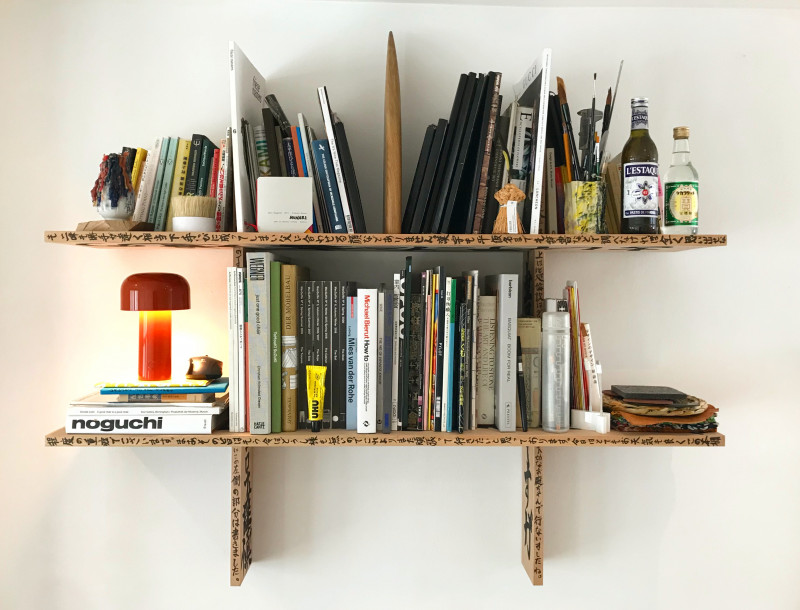
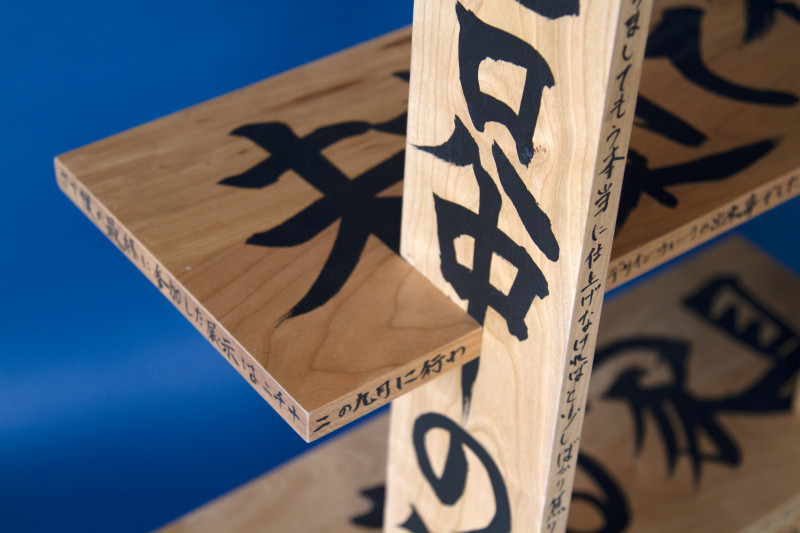
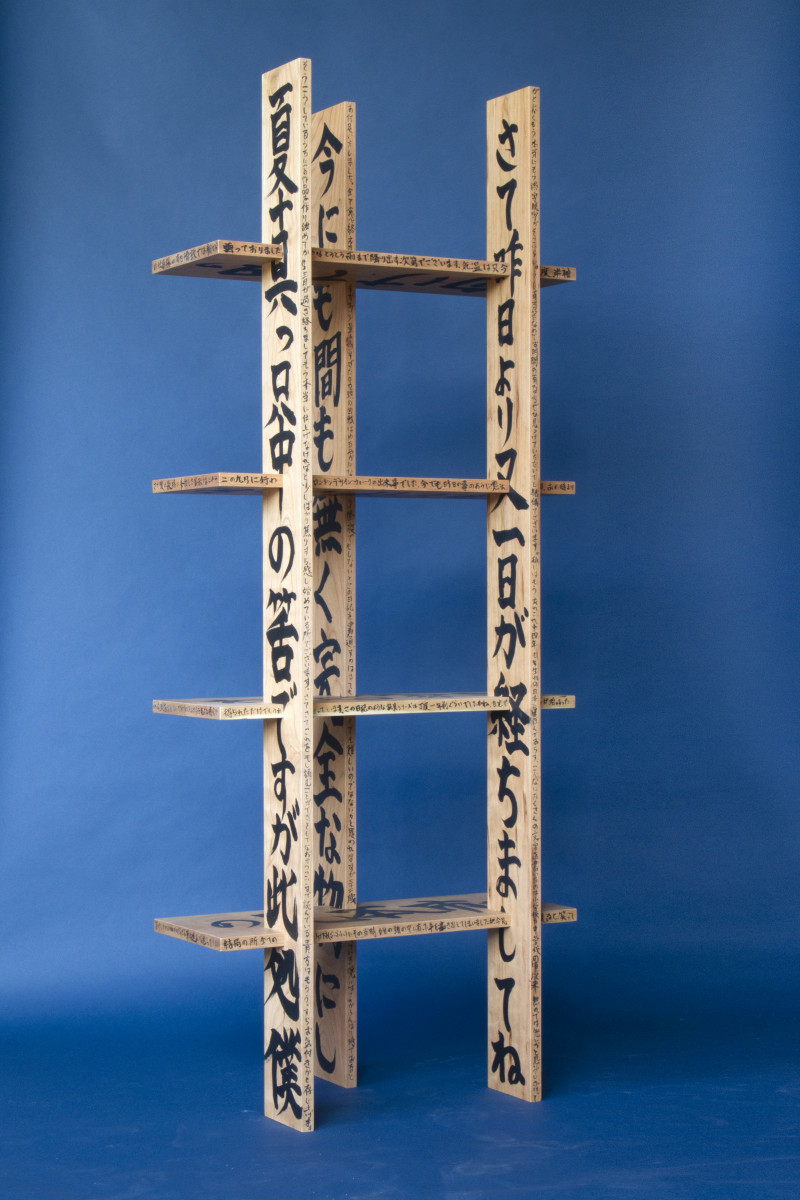
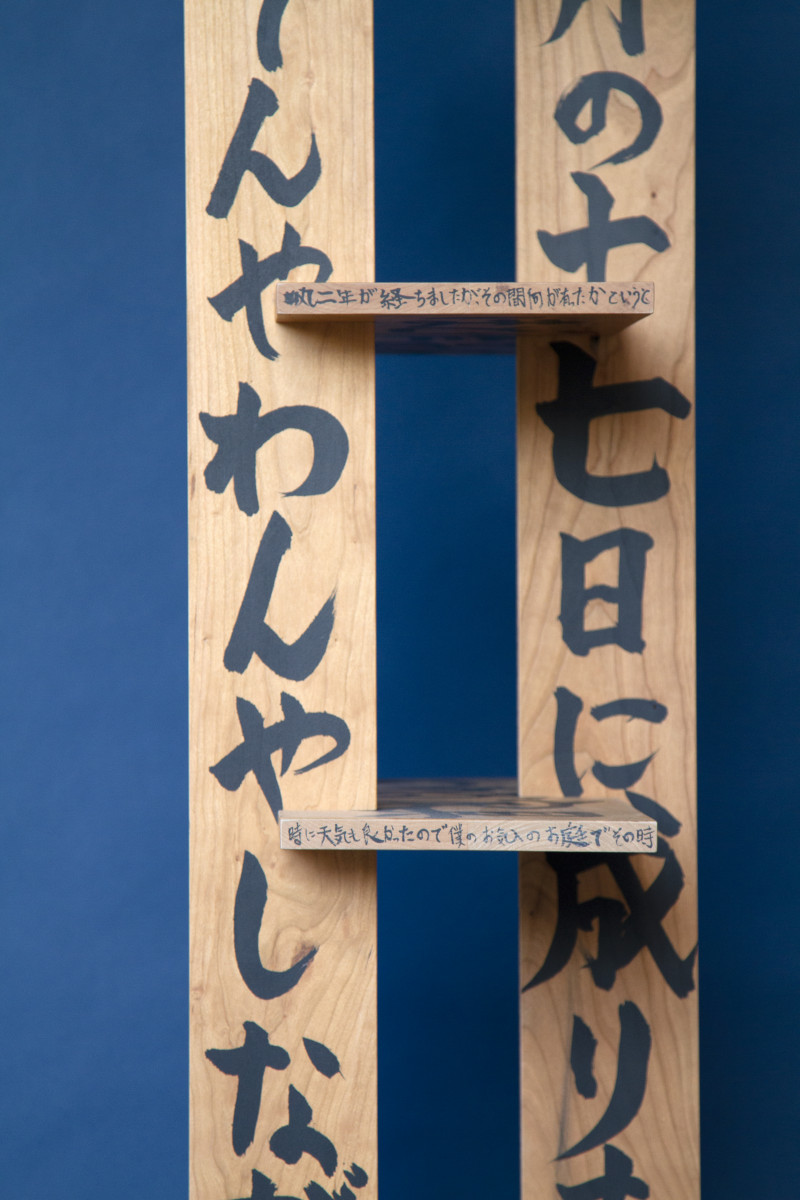
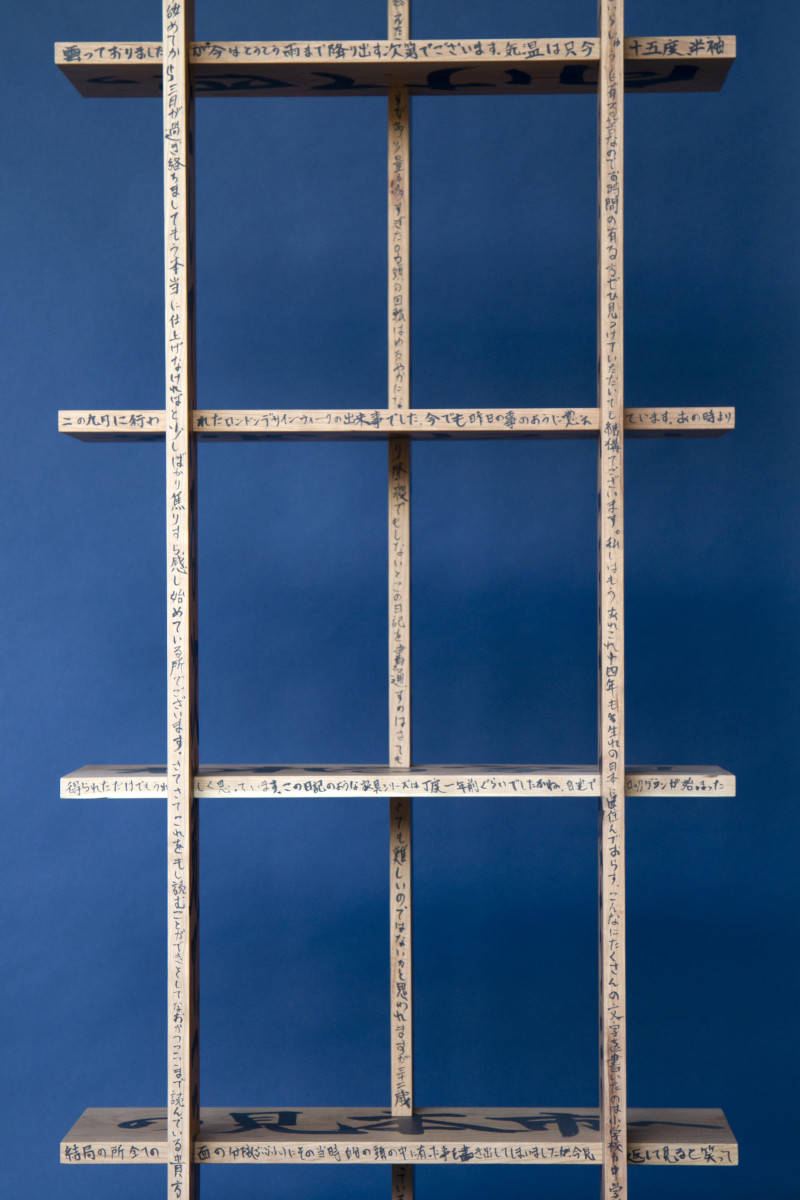
Rio Kobayashi made this shelf as a commission for a friend who asked him to create a piece ‘just like’ the Bibliothèque shelves by Charlotte Perriand. With a humorous nod to both their names, Kobayashi created a shelf inspired by the French designer and named it ‘Chariotte Periond.’
Made from solid oak wood, his shelf responds to Perriand’s distinctive style, using bright, simple colours and long horizontal shapes with irregular, yet balanced vertical partitions. To this, he added circular shapes and rounded edges, giving his shelf a softer look.
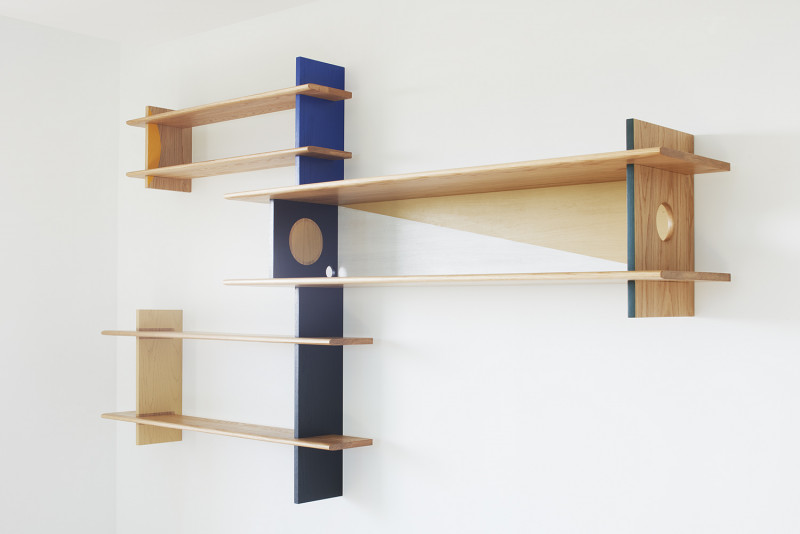
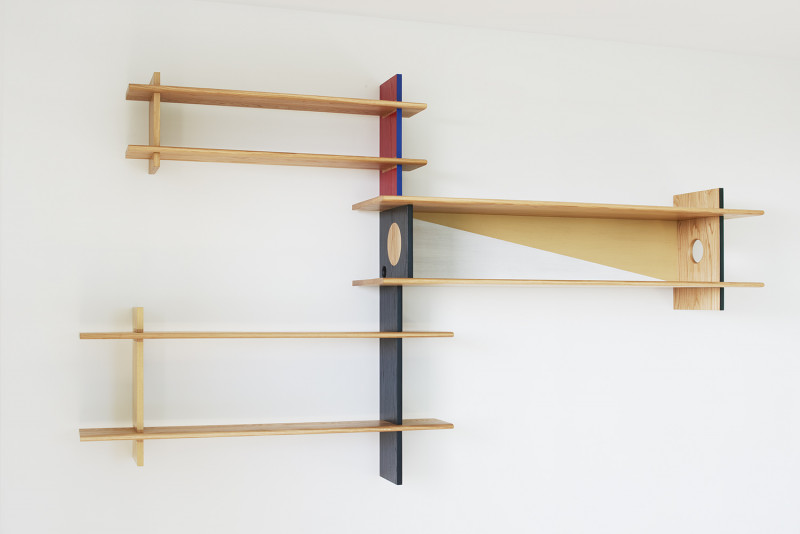
This collection is inspired by Japanese shoji paper sliding doors and screens. Rio Kobayashi has always been intrigued by the lightness and fragile looking structures of those screens which have paper or glass backgrounds.
When he researched Shoji, he found exciting variations of the design and different styles, which immediately prompted him to create his own type using the traditional techniques to make his Shoji series.
Kobayashi created two types of screens and designed some smaller objects such as wall lamps, shelvings and chest of drawers. These are made with solid cedar wood and every detail is cross jointed or stretched into thesections. The paper on the back is glued with starch glue, which gives it extra strength and nicely diffused light that comes through. Kobayashi explains: ‘I see huge potential in being creative with the patterns of wood structures in combination with the Japanese shoji paper that could be customised.’
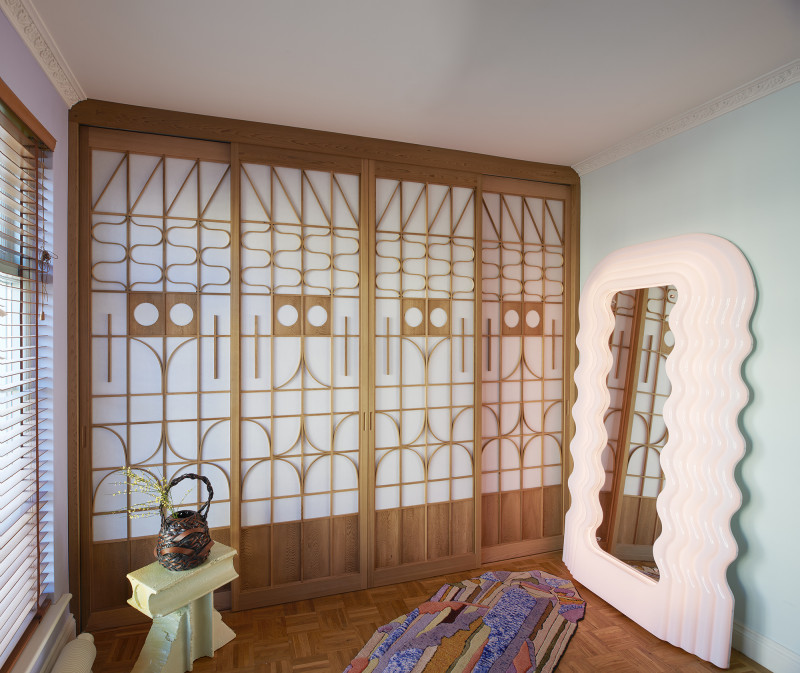
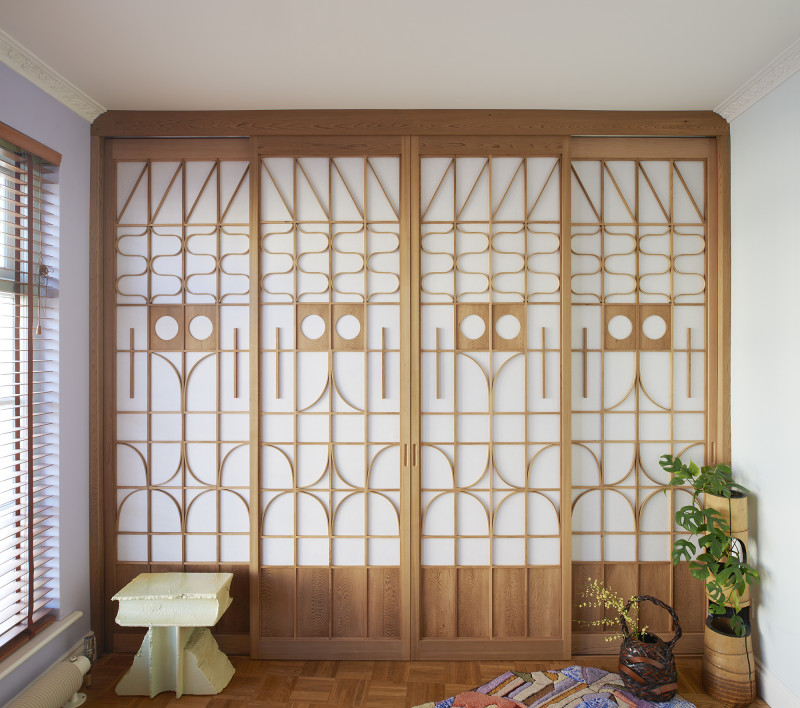
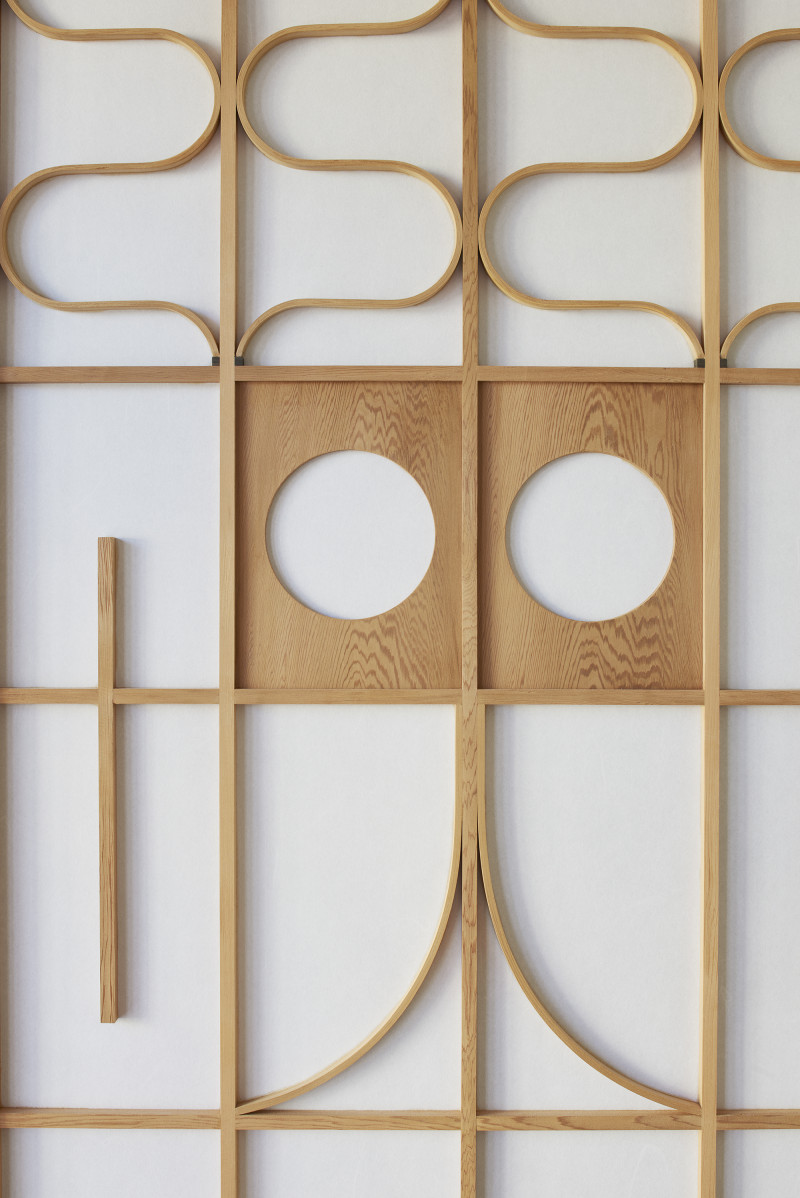
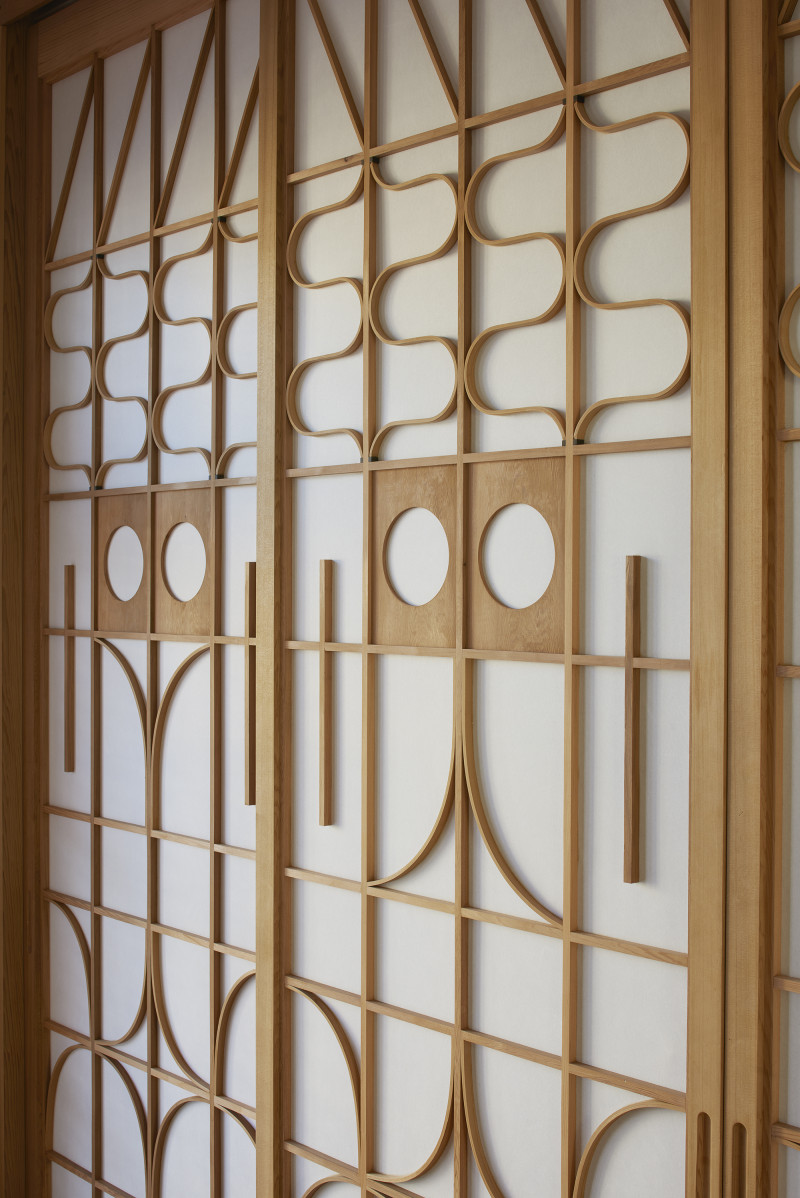
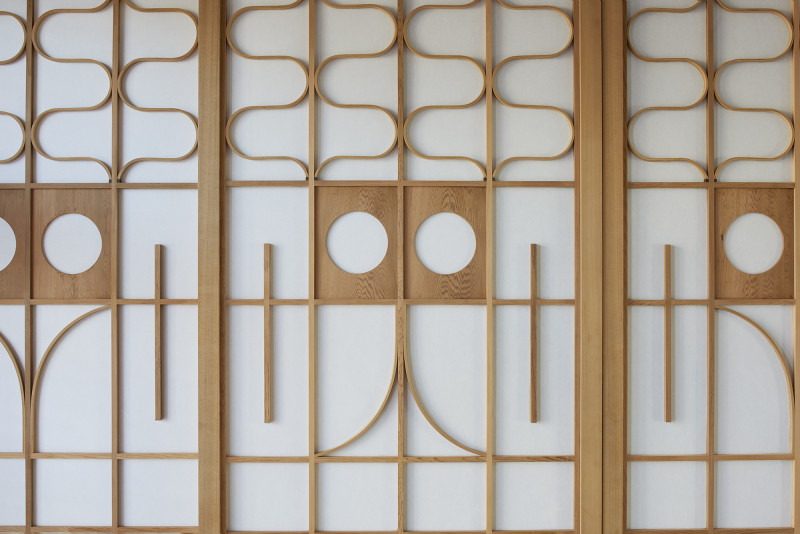
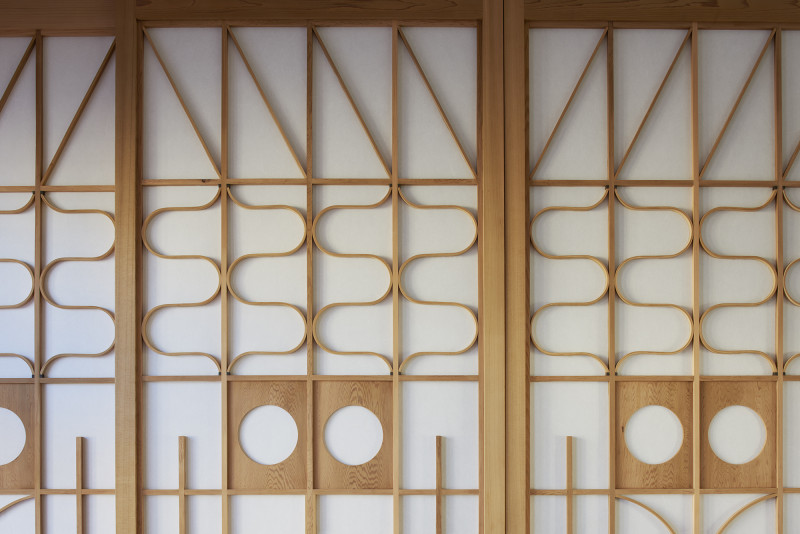
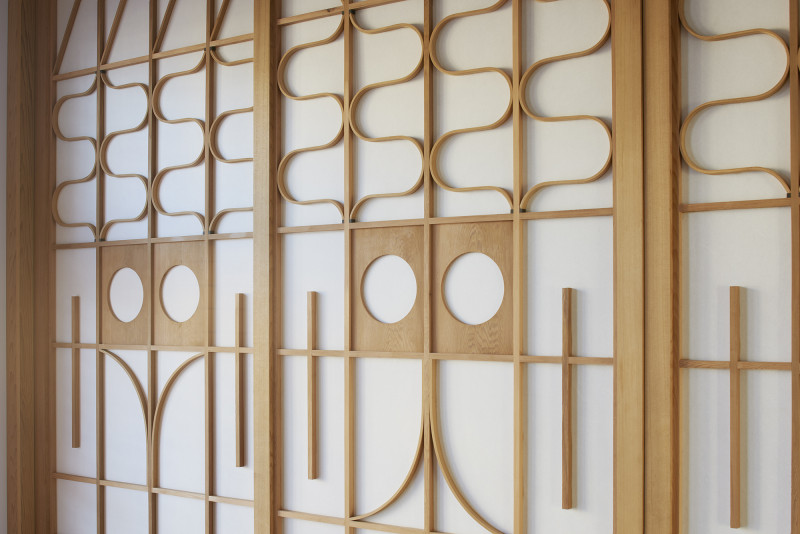
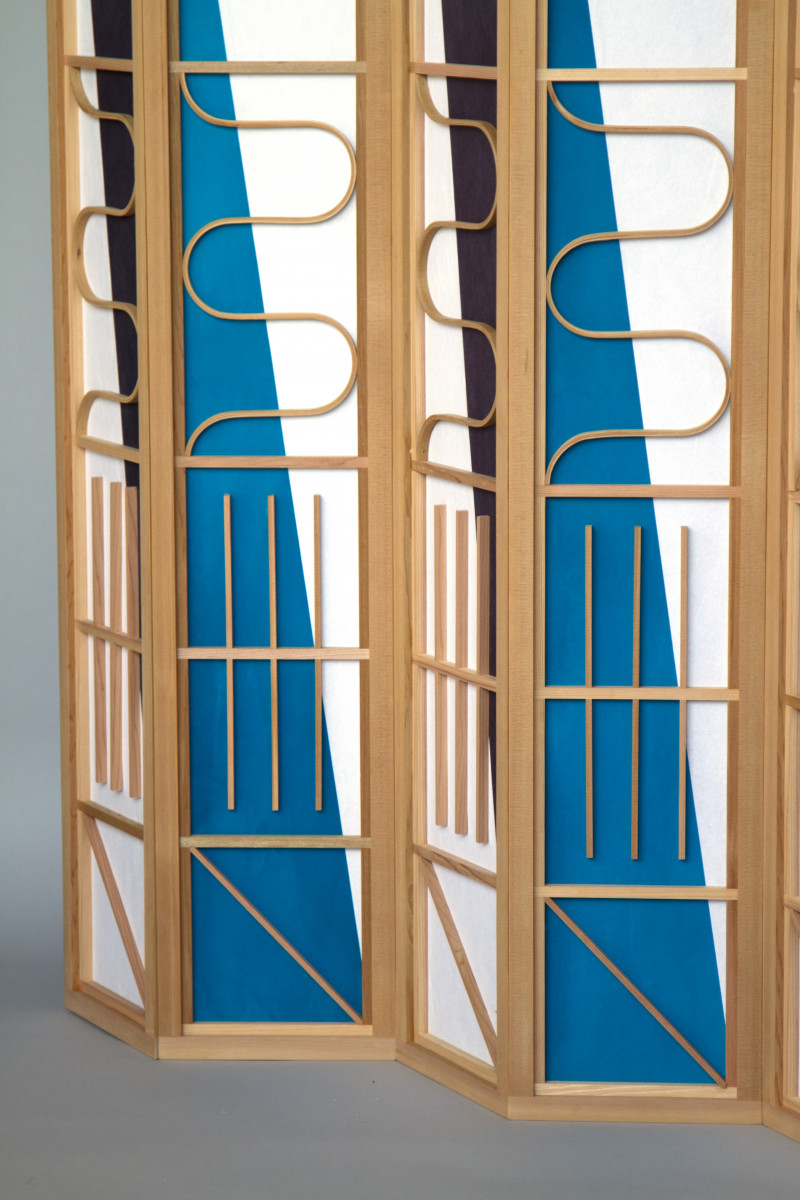
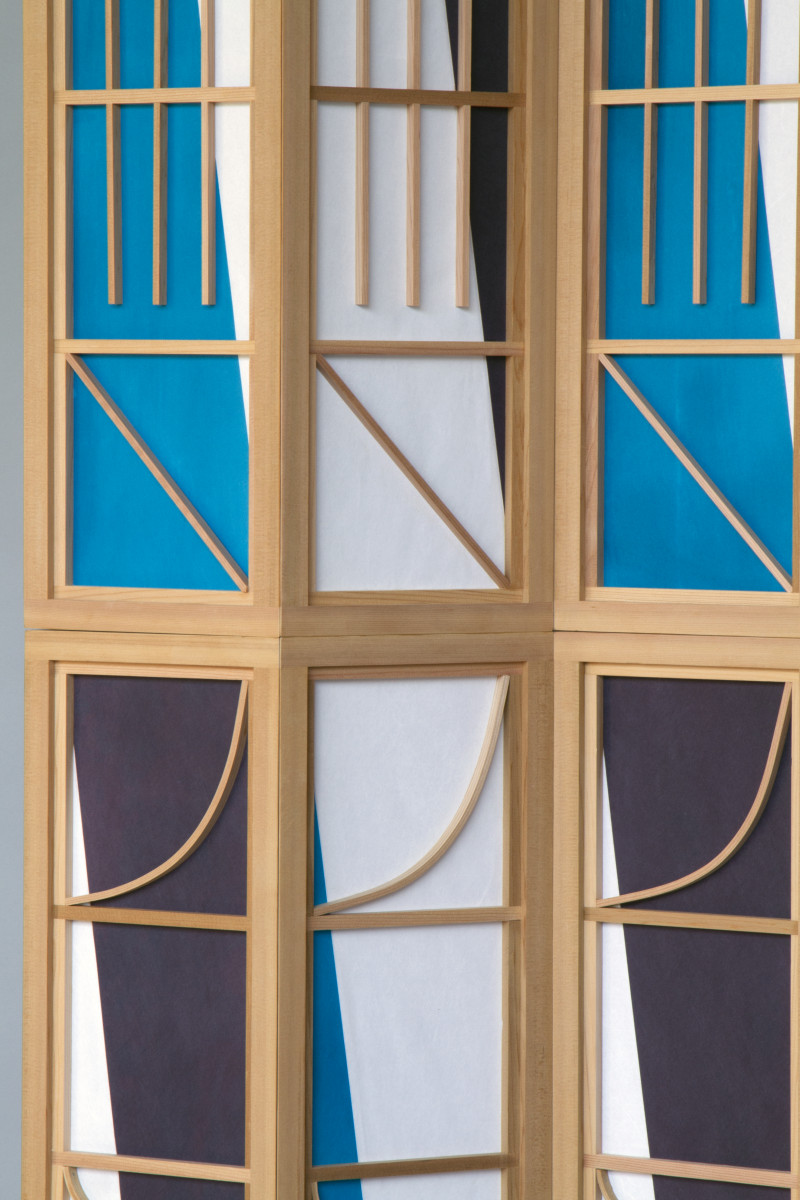
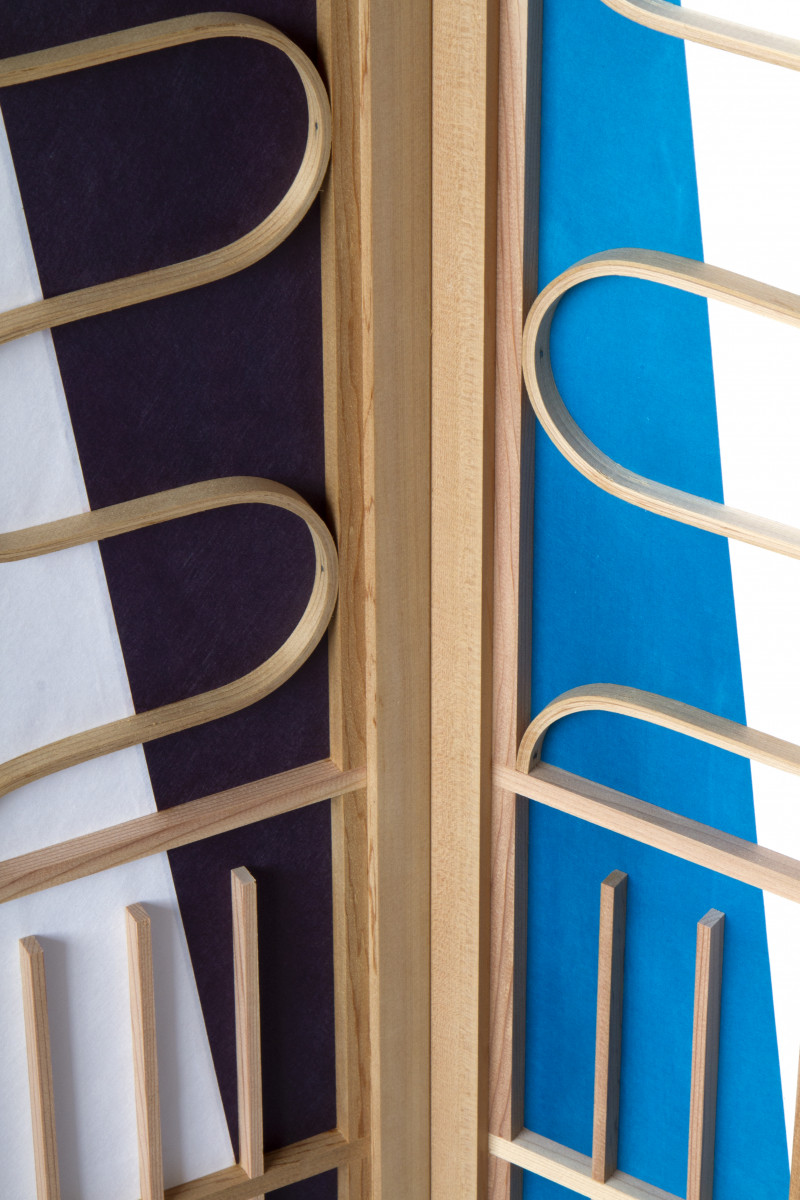
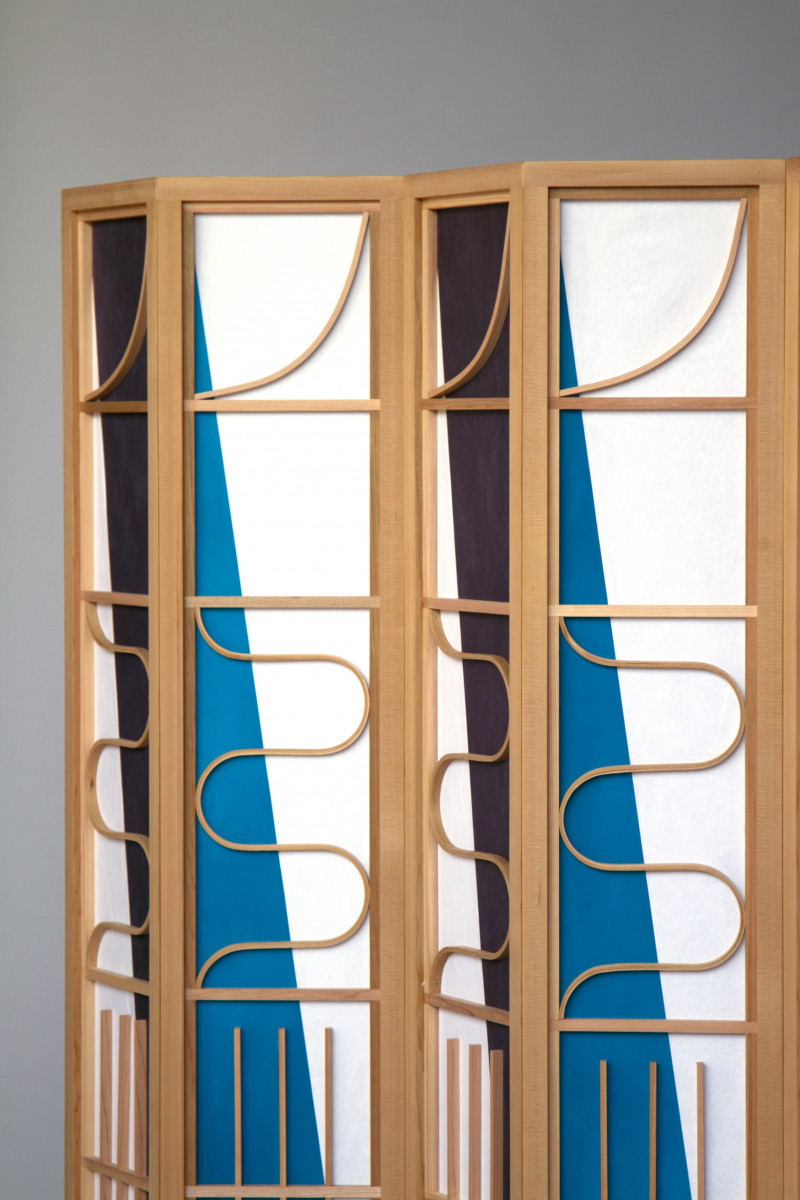
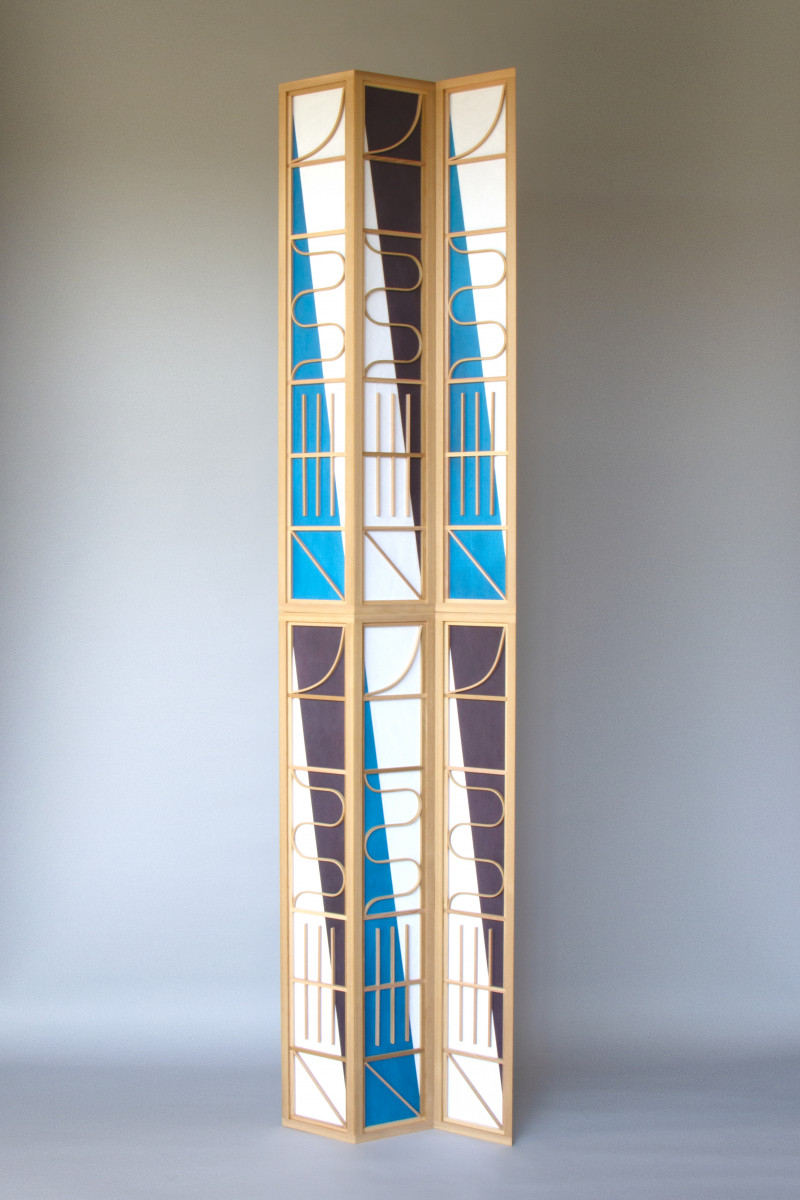
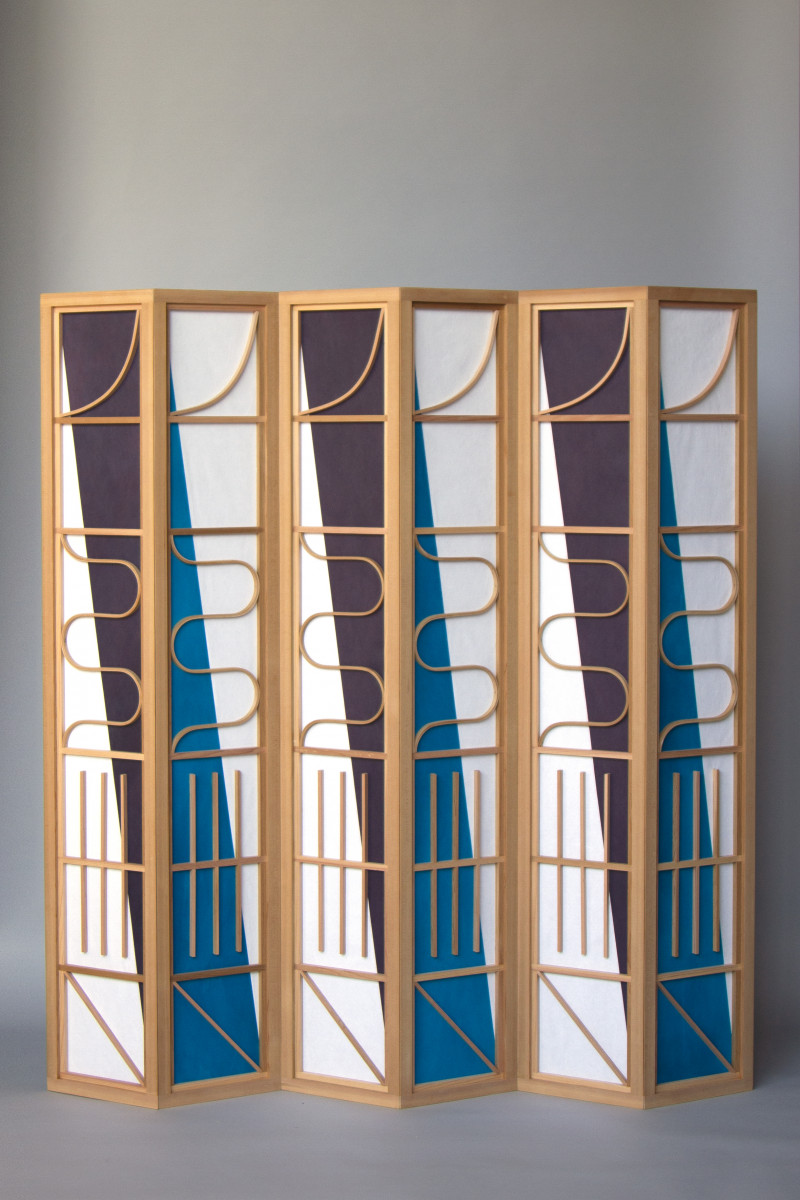
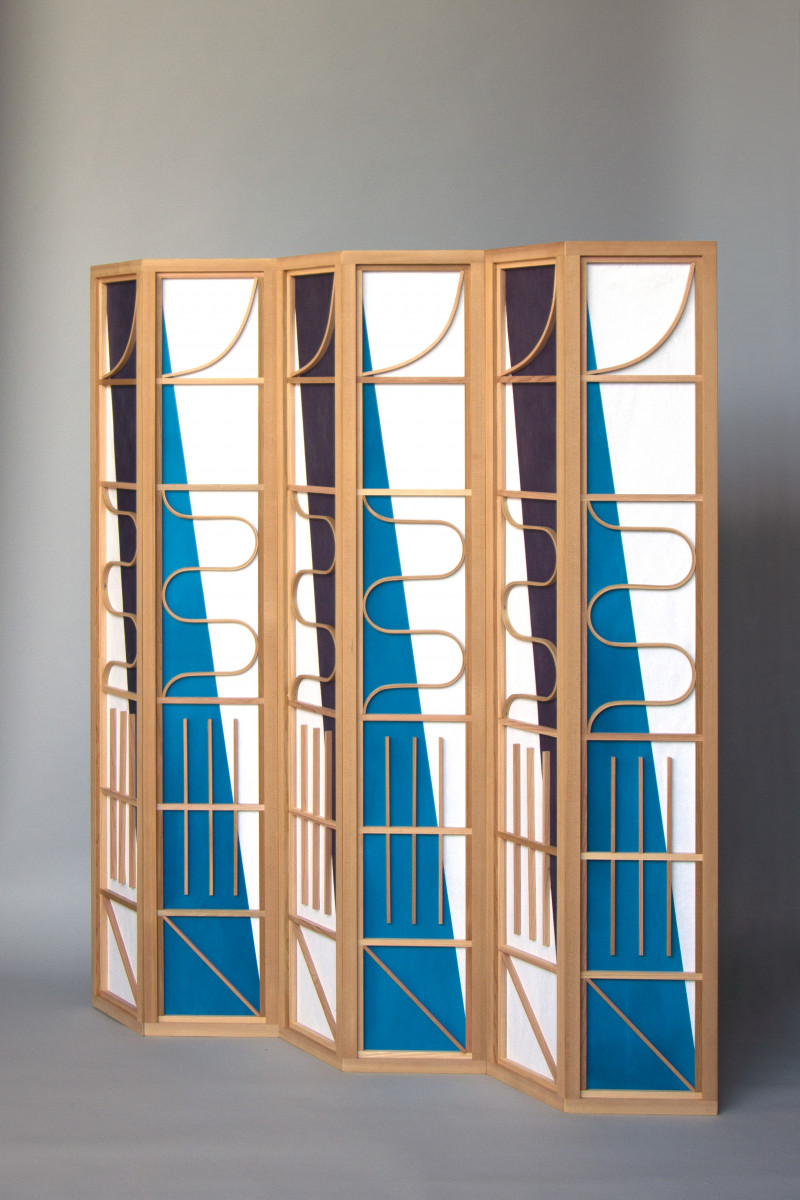
This collection is inspired by Japanese shoji paper sliding doors and screens. Rio Kobayashi has always been intrigued by the lightness and fragile looking structures of those screens which have paper or glass backgrounds.
When he researched Shoji, he found exciting variations of the design and different styles, which immediately prompted him to create his own type using the traditional techniques to make his Shoji series.
Kobayashi created two types of screens and designed some smaller objects such as wall lamps, shelvings and chest of drawers. These are made with solid cedar wood and every detail is cross jointed or stretched into thesections. The paper on the back is glued with starch glue, which gives it extra strength and nicely diffused light that comes through. Kobayashi explains: ‘I see huge potential in being creative with the patterns of wood structures in combination with the Japanese shoji paper that could be customised.’
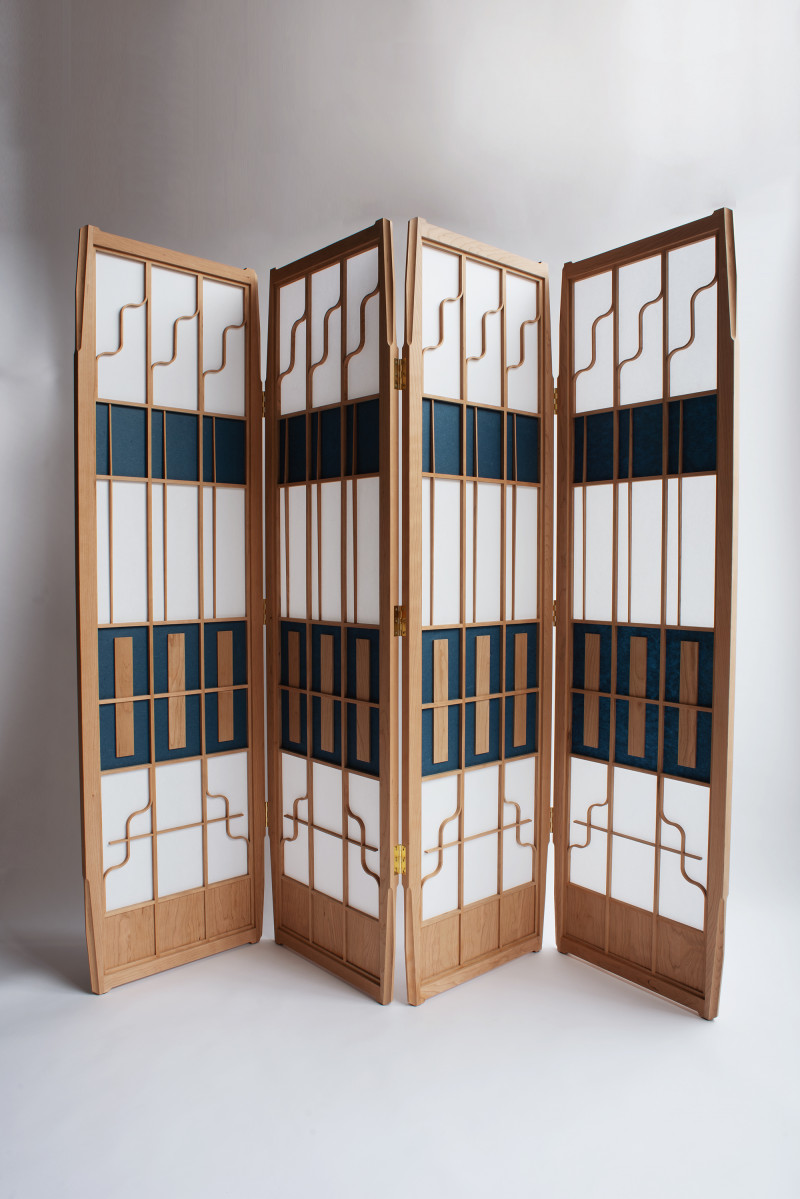
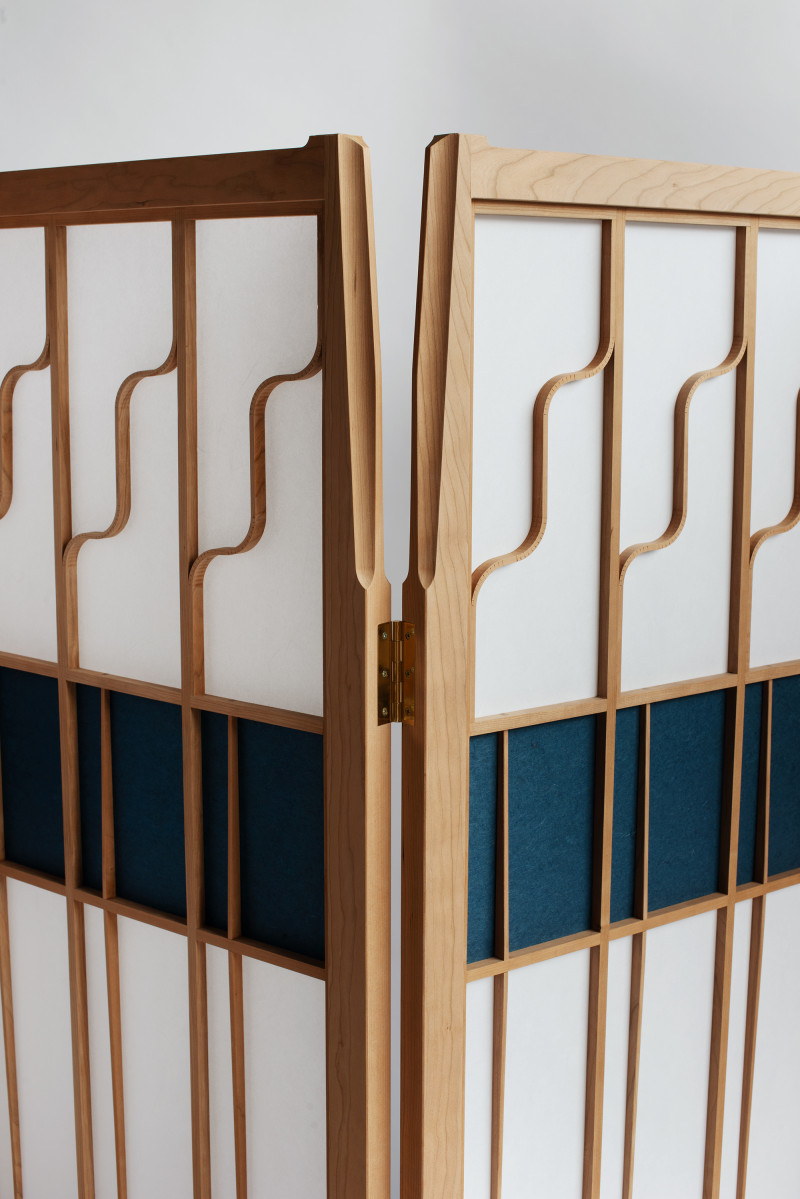
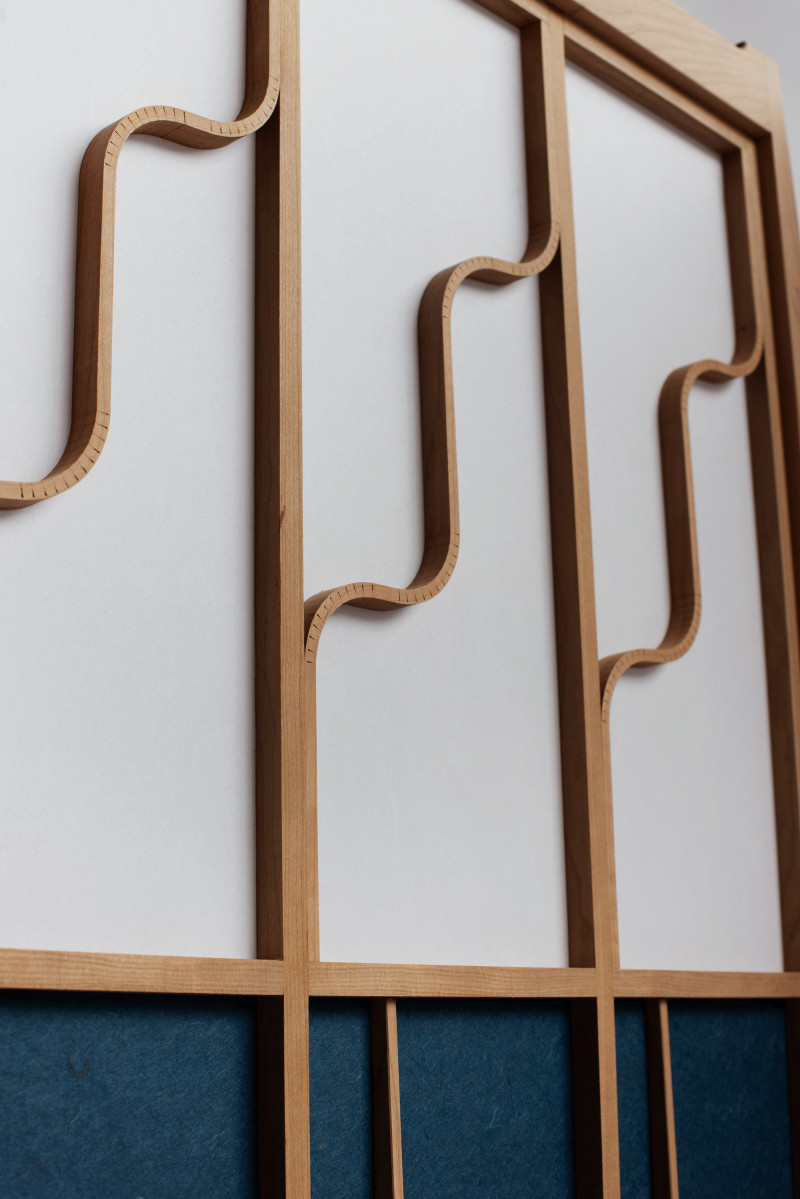
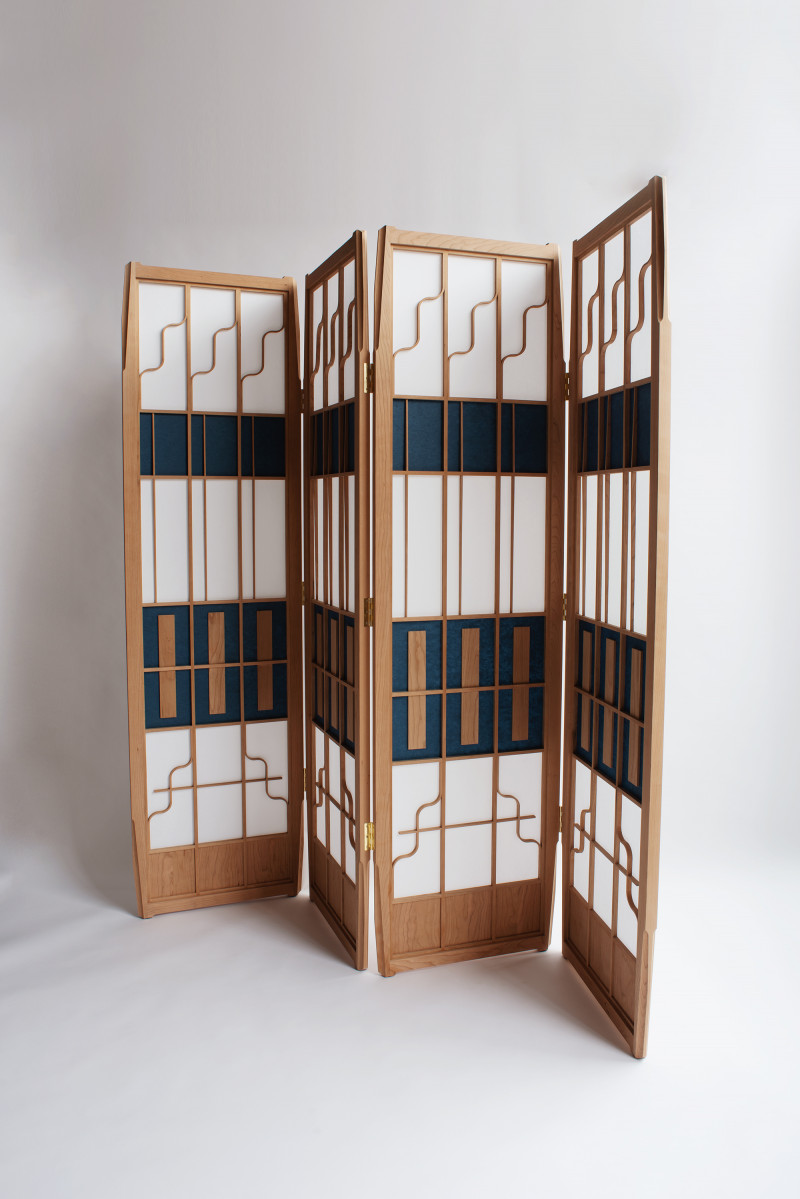
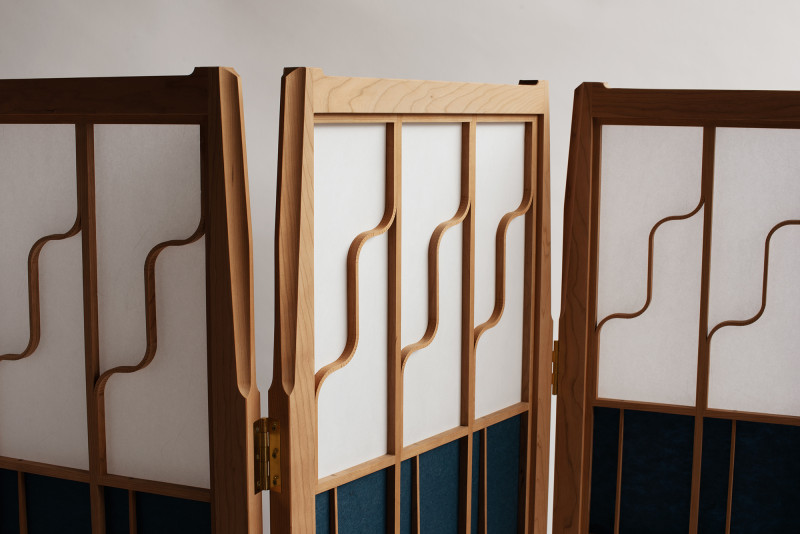
This table was initially created to be part of a series of furniture in the shape of different food ingredients. The idea of making a dining room table emerged when Kobayashi was thinking about people coming together at a dining room table: When another person joins a number of people sitting around a table, their conversation will change according to the unique qualities and interests the newcomer will bring with them, just like adding another ingredient to a dish one is cooking will change the overall flavours.
Using the shape of a fish was inspired by the time Kobayashi shared a studio with James Hague, not only a brilliant portrait painter but also a fishing aficionado. Kobayashi remembers his friend’s excitement coming home from fishing and then making beautiful paintings of these fish. Intrigued by his work and passion, Kobayashi dreamt of collaborating with him.
Hague painted the surface of the table, now a life-tuna-sized, four-legged creature with a shark fin sticking out of its top, which is at the same time the side of the fish. The shark fin is connected with a magnet and can be detached to serve as a trivet or chopping board. The table plays with being three-dimensional and at the same time two-dimensional, just like an Egyptian drawing. Tuna is Japan’s most popular fish – the ‘king of sushi’ with the fattiest bits being the best part. At the same time, a fat tuna provides for a bigger tabletop around which people can get together.
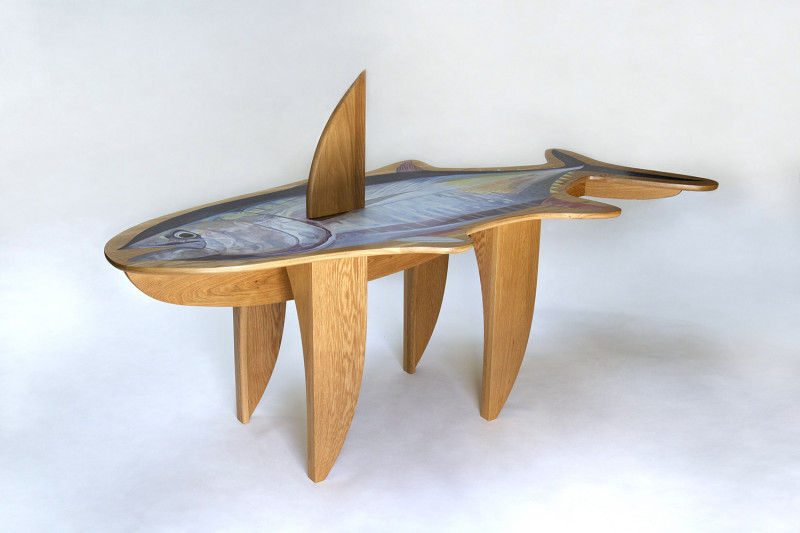
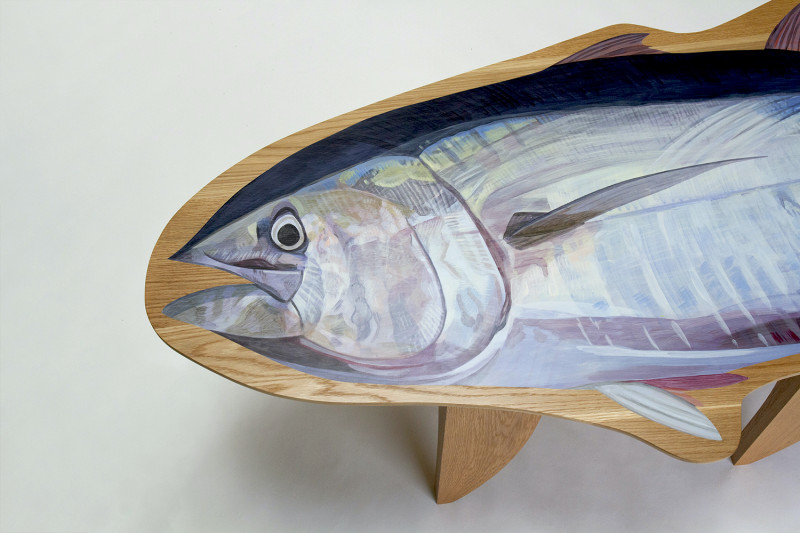
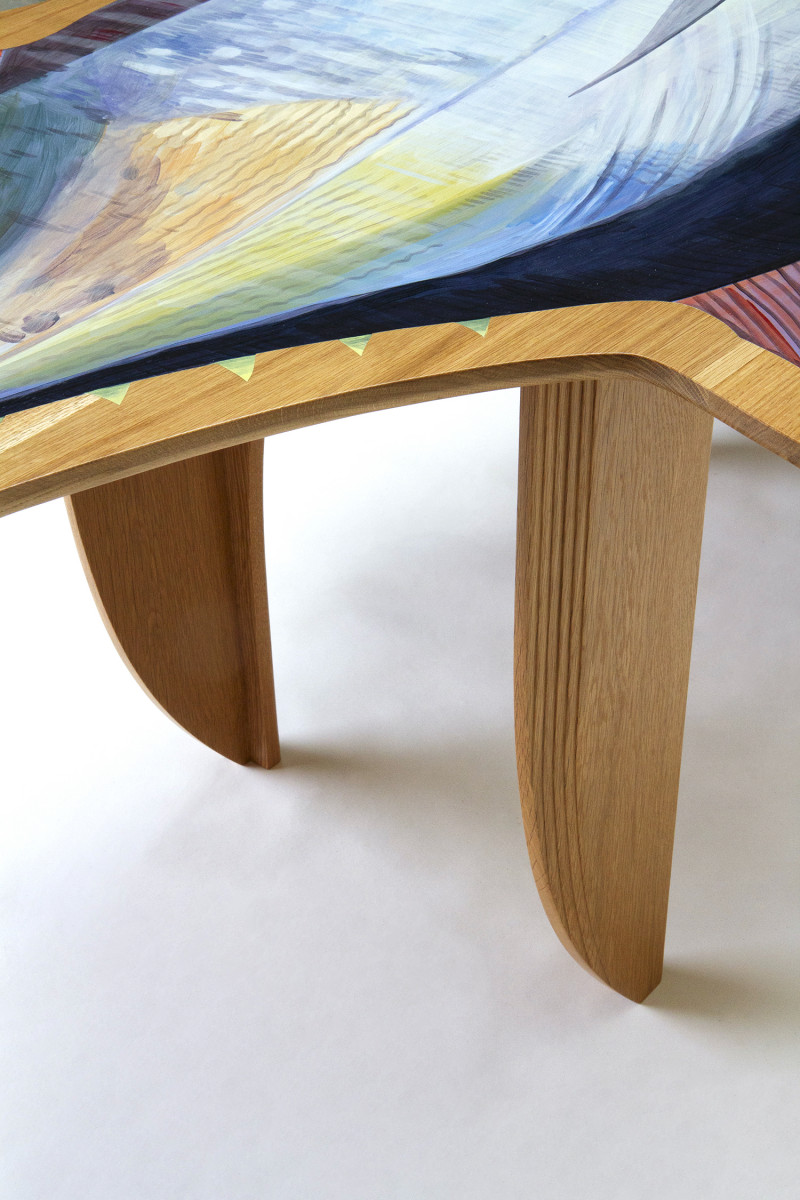
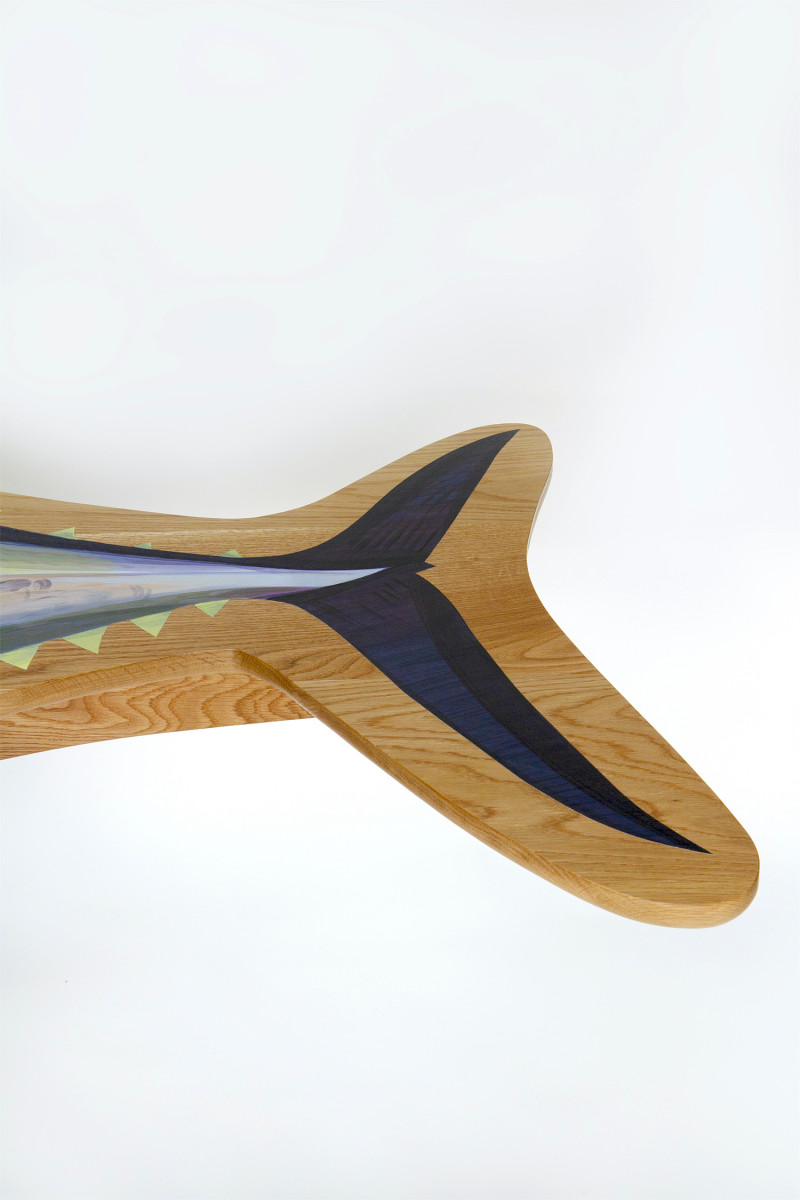
Kaijyu Mask emerged from a contemplation: Over the course of our childhood, and later, over the course of our lives, we soak up a myriad of aspects of the world. The mixture of influences and experiences makes us unique and they help contribute to the construct of our personality. In the strive to be oneself, one tries to be authentic, where the mask one wears should be a reflection of how one really feels.In this instance, Rio Kobayashi aims to reflect his Japanese heritage as well as his European side. Having a multitude of impressions in his life that flow into memory, the body, they begin to form personality and become forever etched into being.
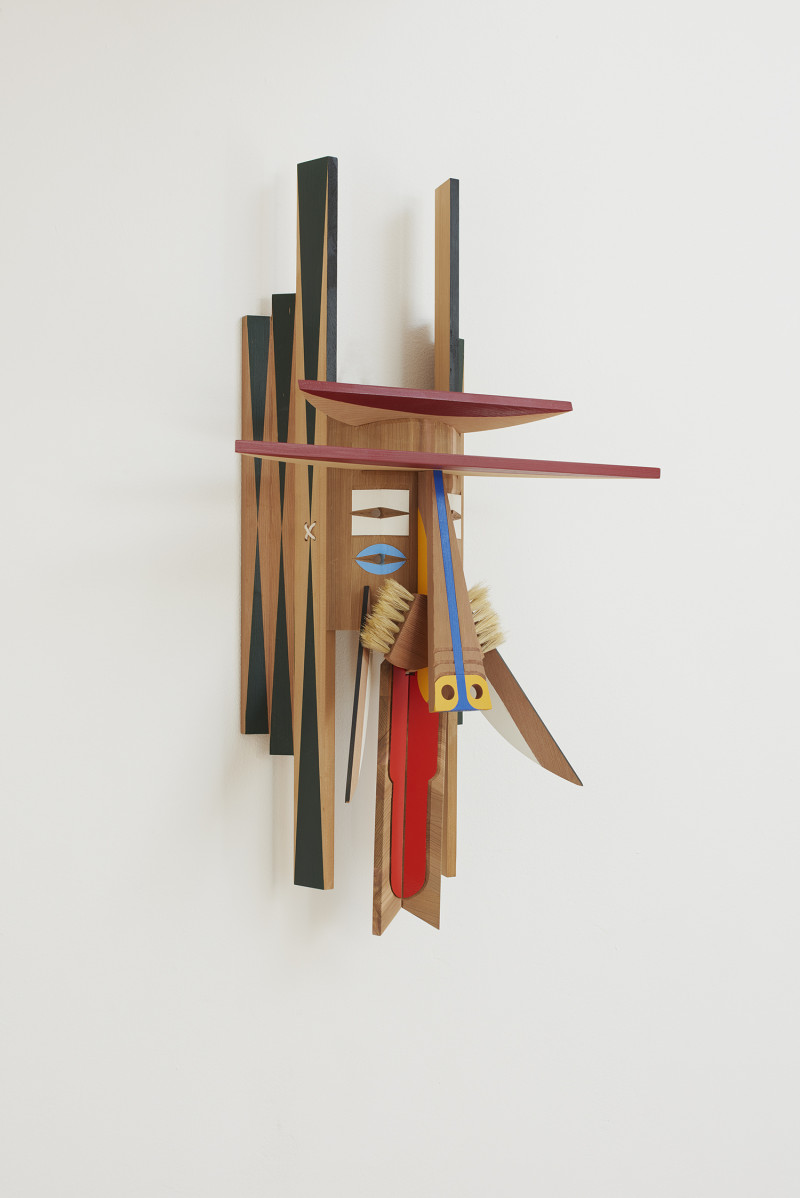
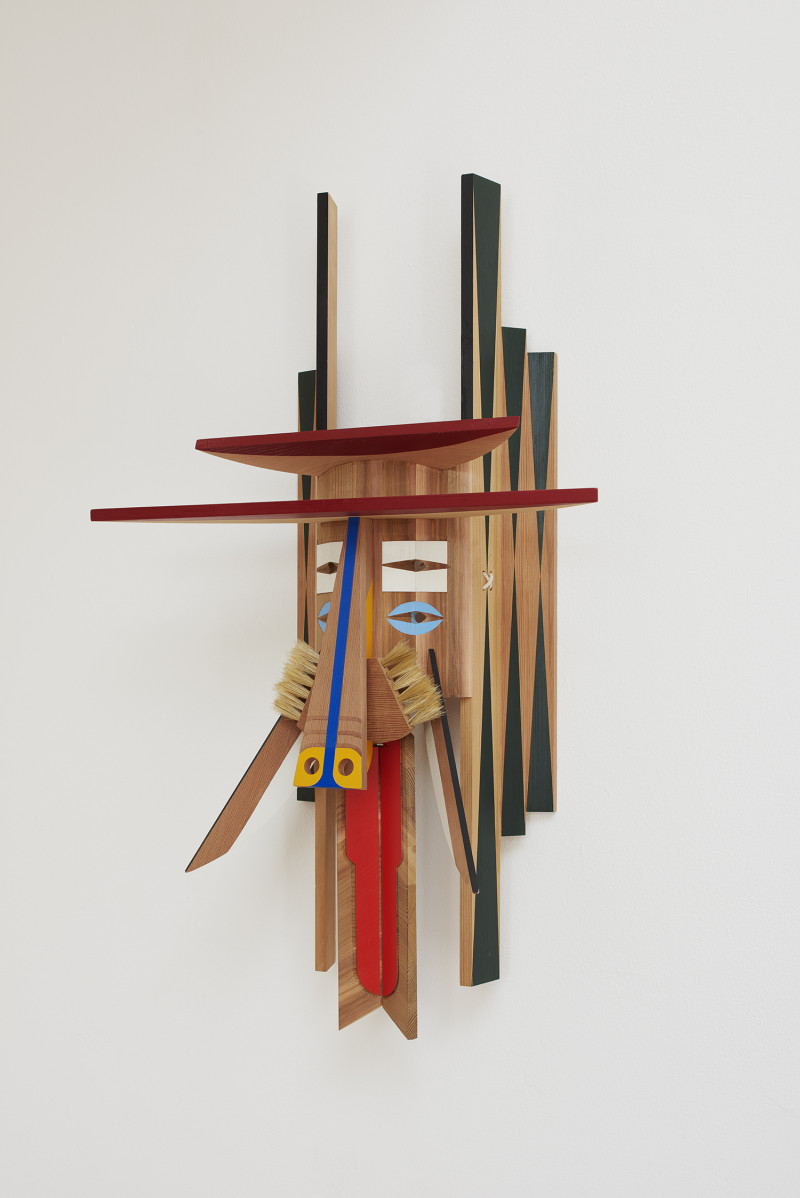
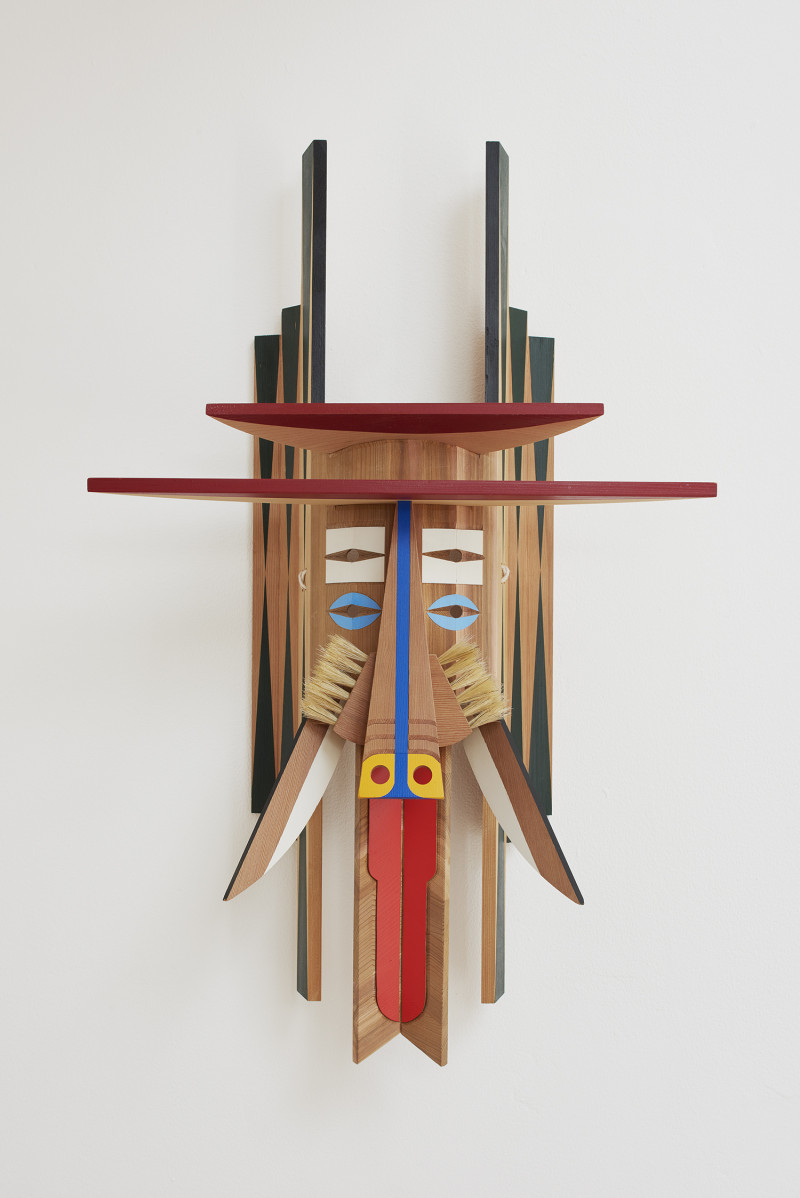
Photography by James Harris
In this sculptural shelf design, Kobayashi combines the robotic and the human, the male and the female, the dead and the living and home storage and artful crafts. Kobayashi’s core idea is that a shelf shows a lot about the personality of the owner. This thought inspired him to create a shelf that has its own persona. There are all features of a human body from head to toes, where sometimes we can see a robotic expression and other times we see a stylised human character in a combination of line drawing and volumetric shapes. The expression changes with the angle from which the shelf is viewed.
The shelf is hand-made from red cedar that Kobayashi sanded to a smooth touch and left the wood untreated for a natural feel. The shelf was roughly outlined and then designed while working on the wooden panels. Features like the face, breasts, penis and hands are detailed like an artist would work on a sculpture.
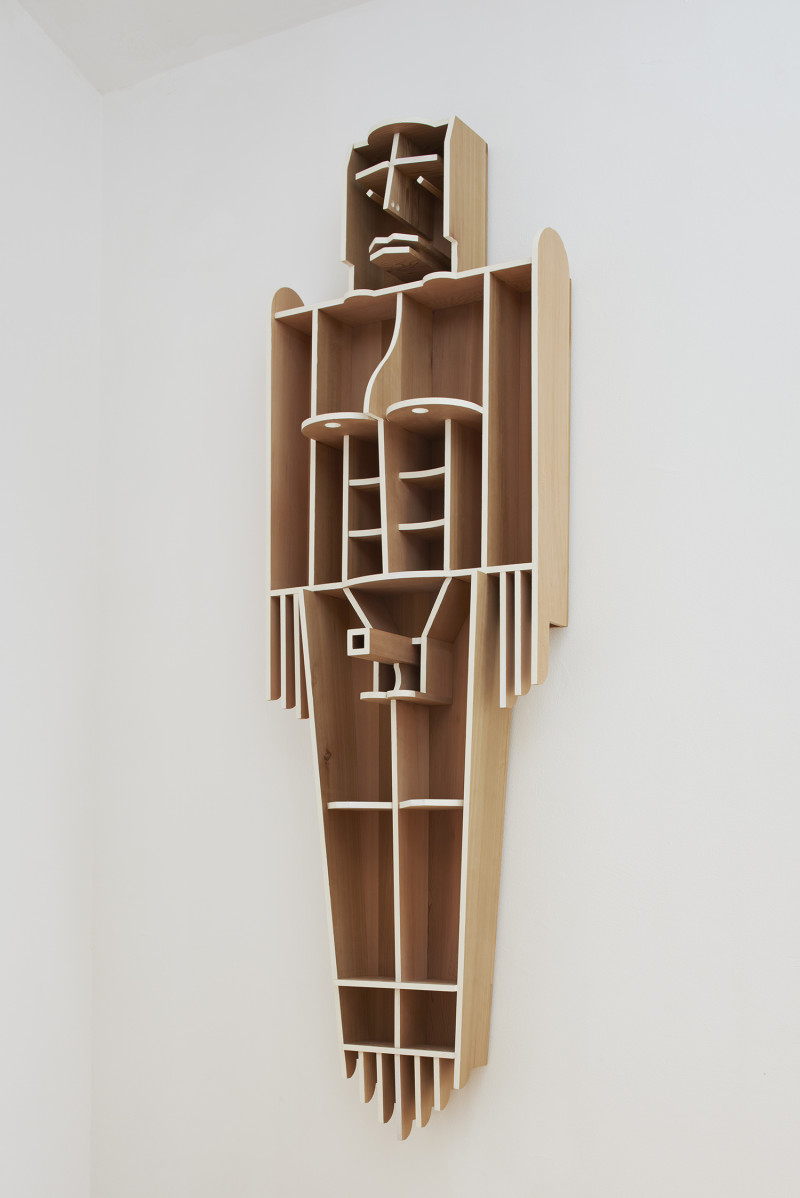
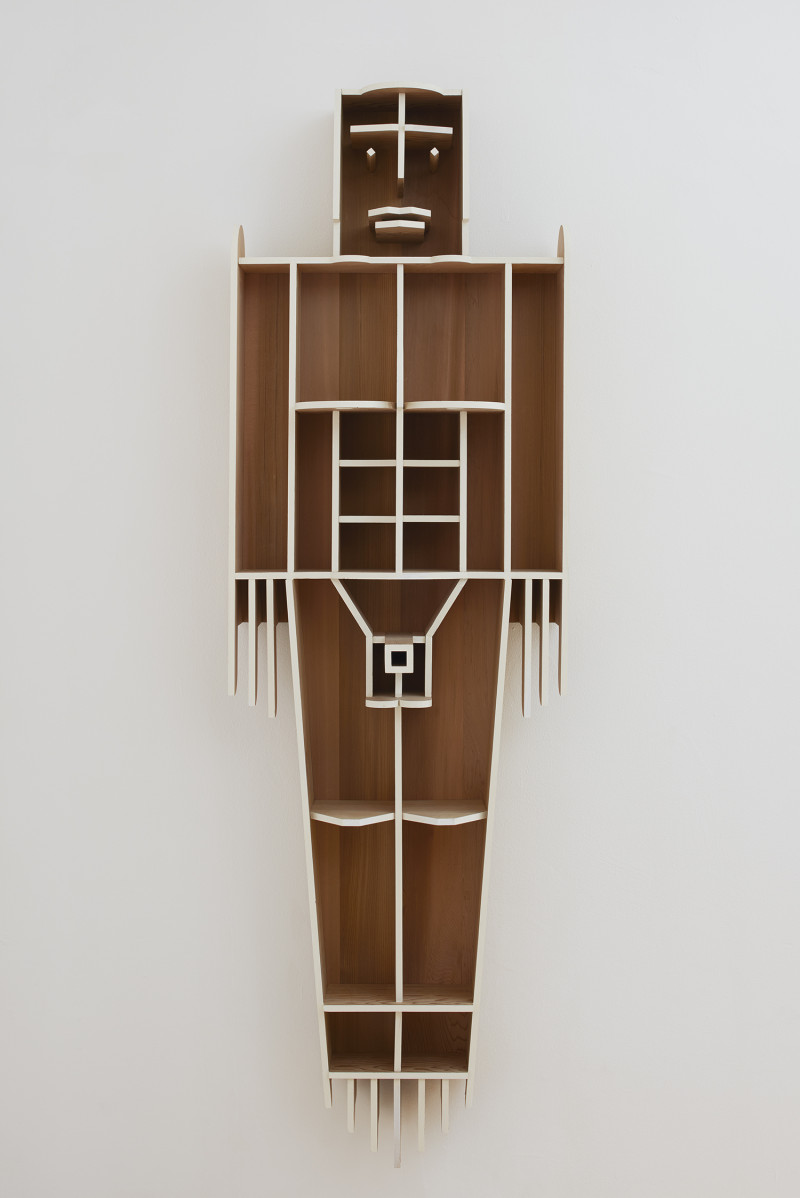
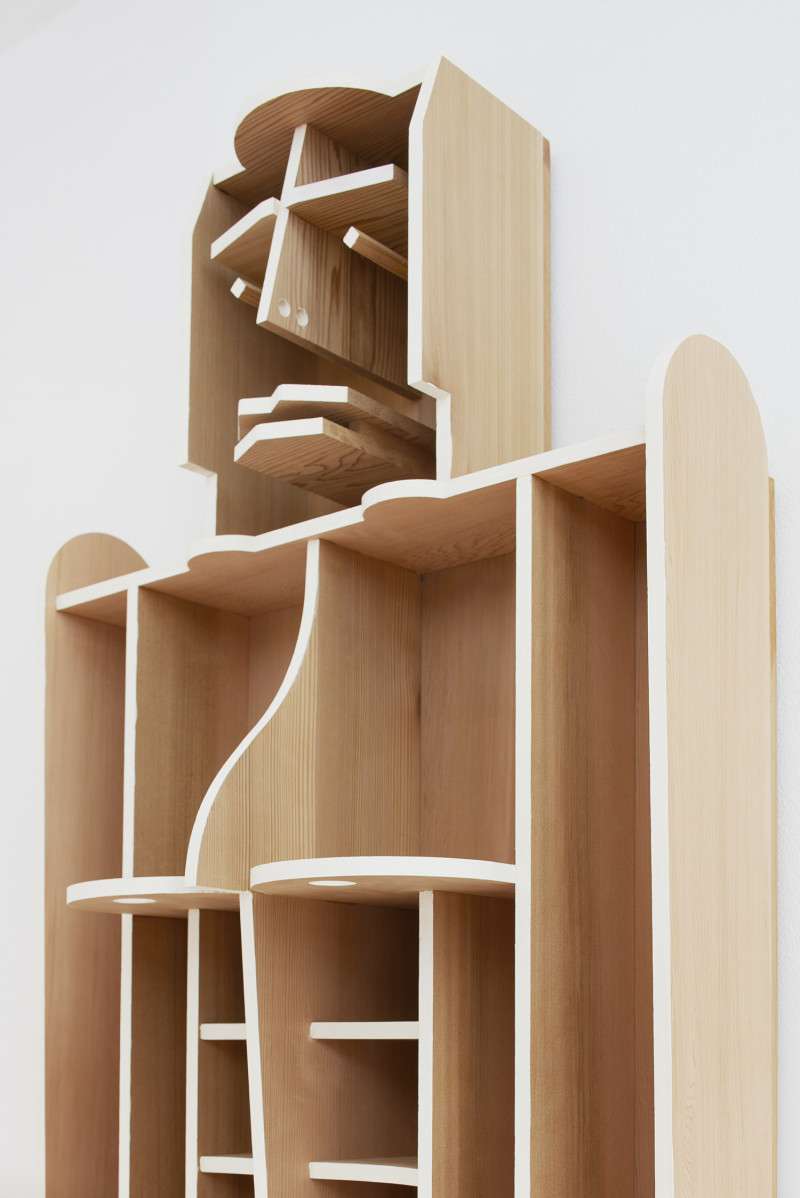
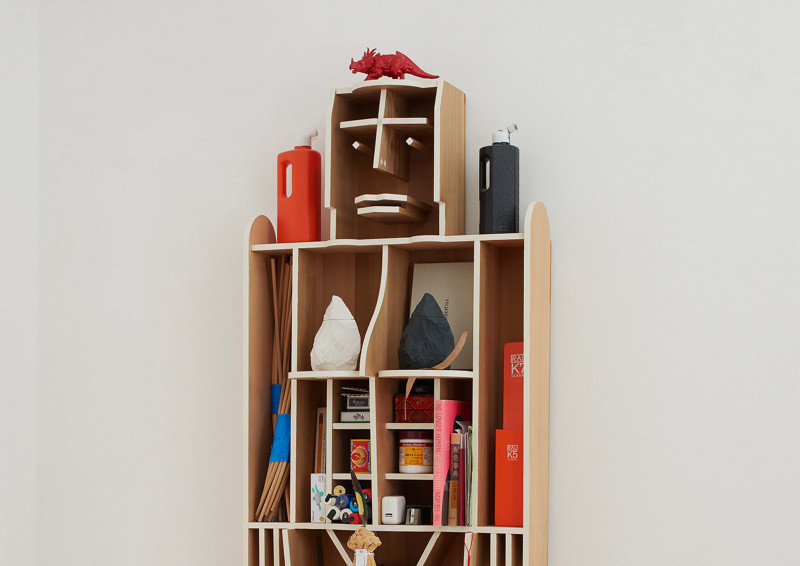
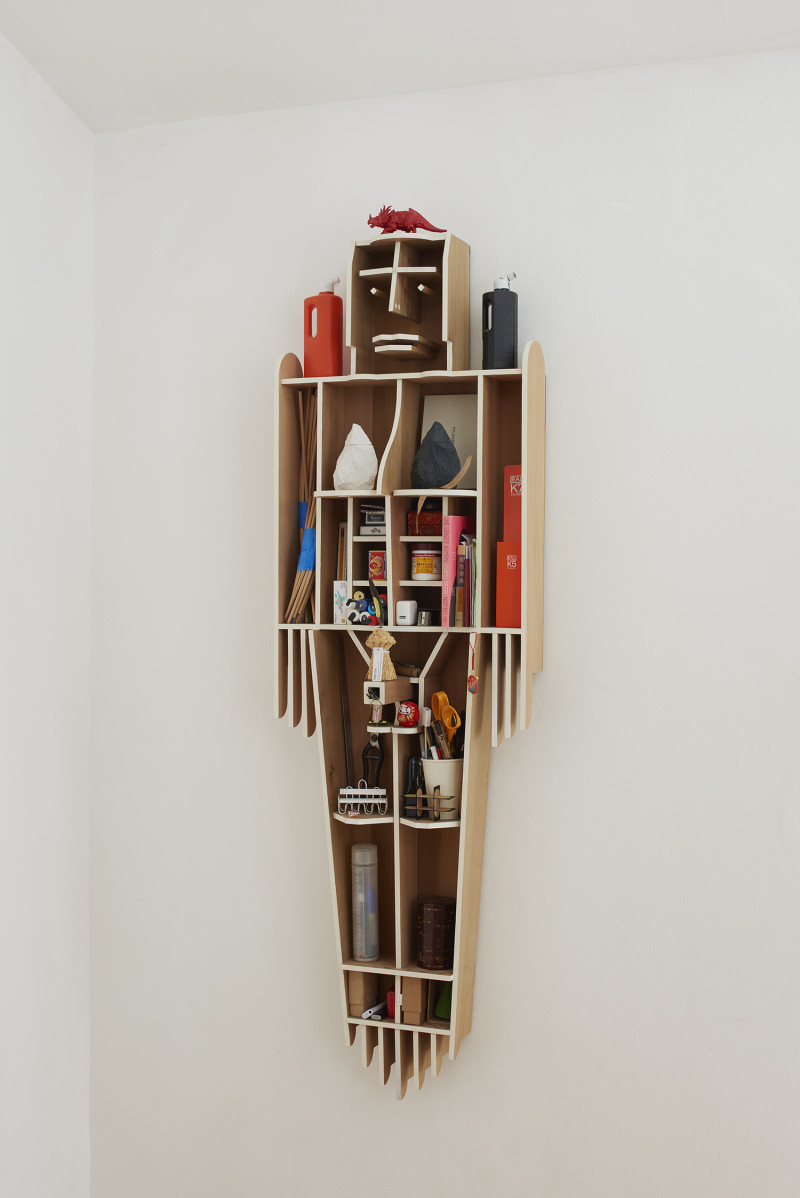
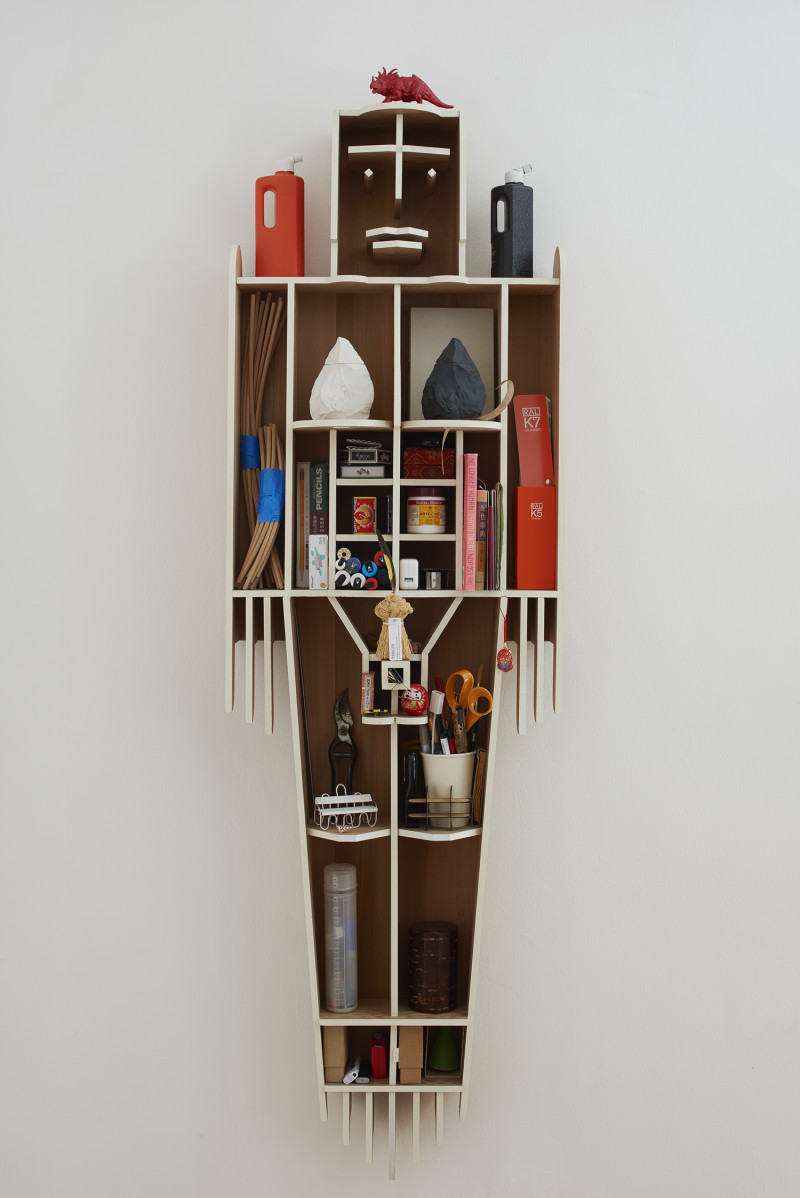
Photography by James Harris
In his series Hato Vase I – III, Kobayashi created wooden vases that ask us profound questions about the contemporary design world and the place of traditional craftsmanship within it.
Simple forms made from cedar wood are stacked on top of each other; single components of basic symmetric shapes are joined together by handmade connections of compound and dovetail joints. It is from these joints that the vases draw their name – dove, or hato in Japanese. The results are a series of totem-like wooden sculptural vases with edges painted in black and vermilion Japanese ink – the colour hiding the intricate woodwork of the joints and distracting the eye from more technical details. More than mere decoration, Kobayashi sees these details as metaphors for the way we relate to craft in the world of modern design. ‘Machine-made goods are preferred by many buyers in our times and craftsmen can hardly compete’ he explains. His solution is to hide the imperfections of his handmade joints; making the pieces more approachable to a larger audience, whilst at the same time allowing those who are interested to discover the beautiful details of his craftsmanship if they choose to look closer.The black and vermilion ink he uses in this Hato Vase series open a dialogue with customs and conventions of Japanese calligraphy where the brilliant red ink is used by masters of the craft to correct characters written by their disciples.
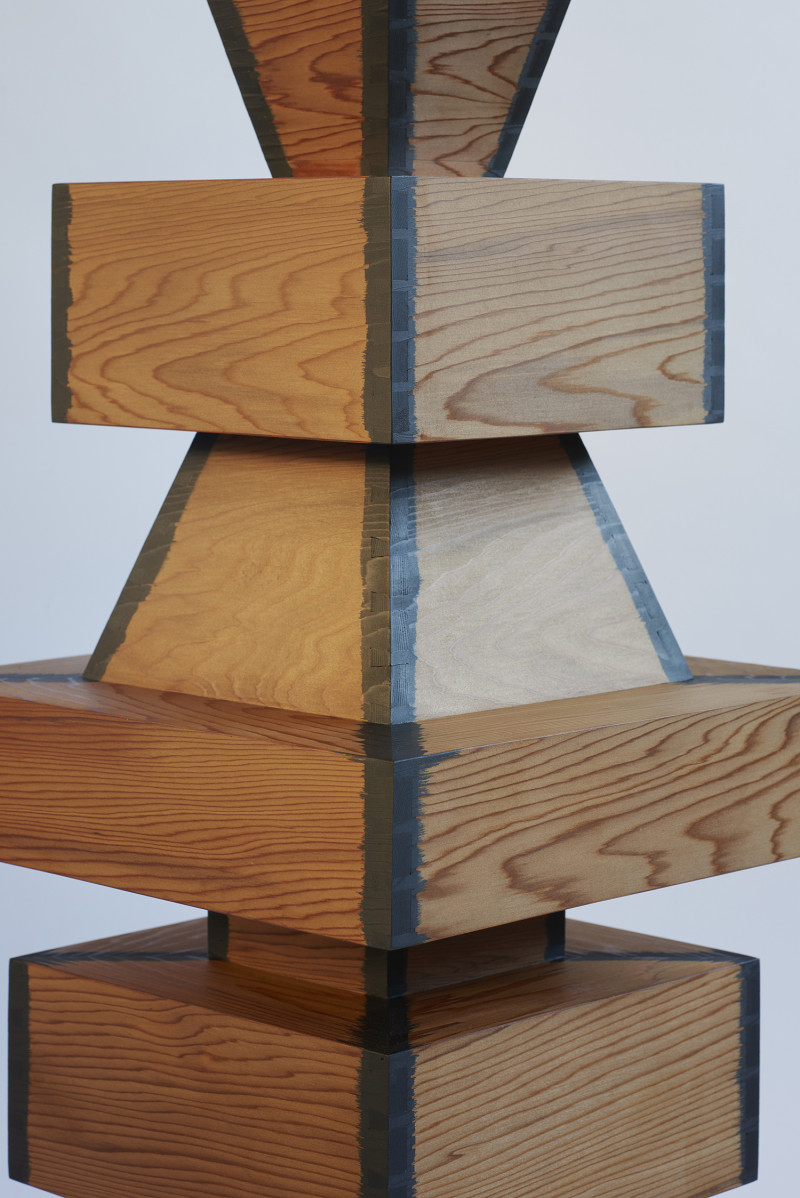
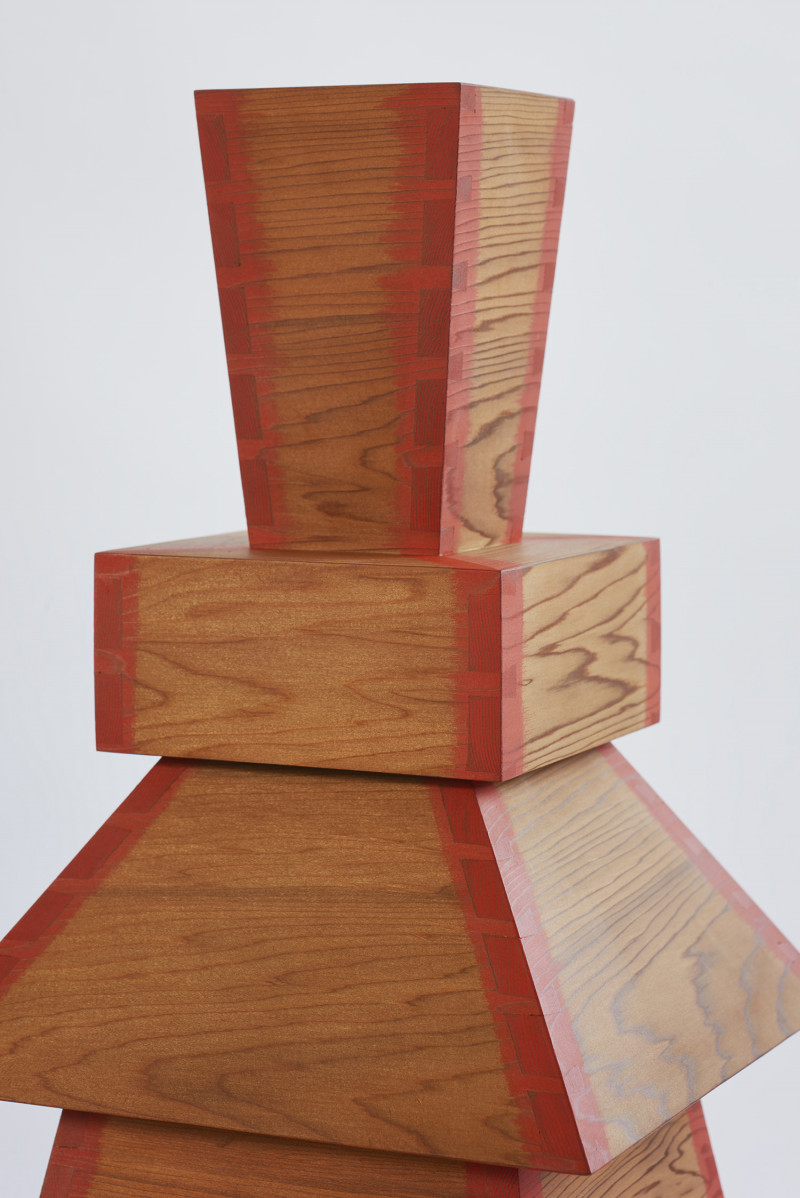
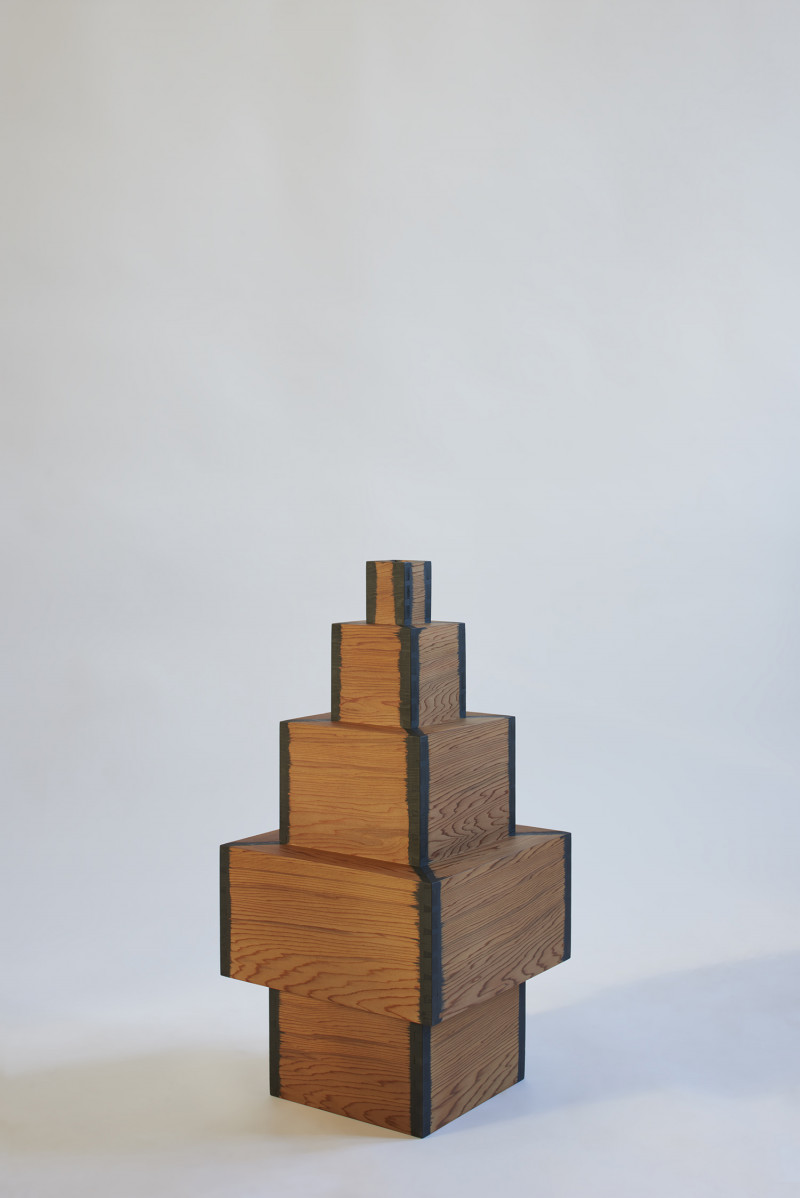
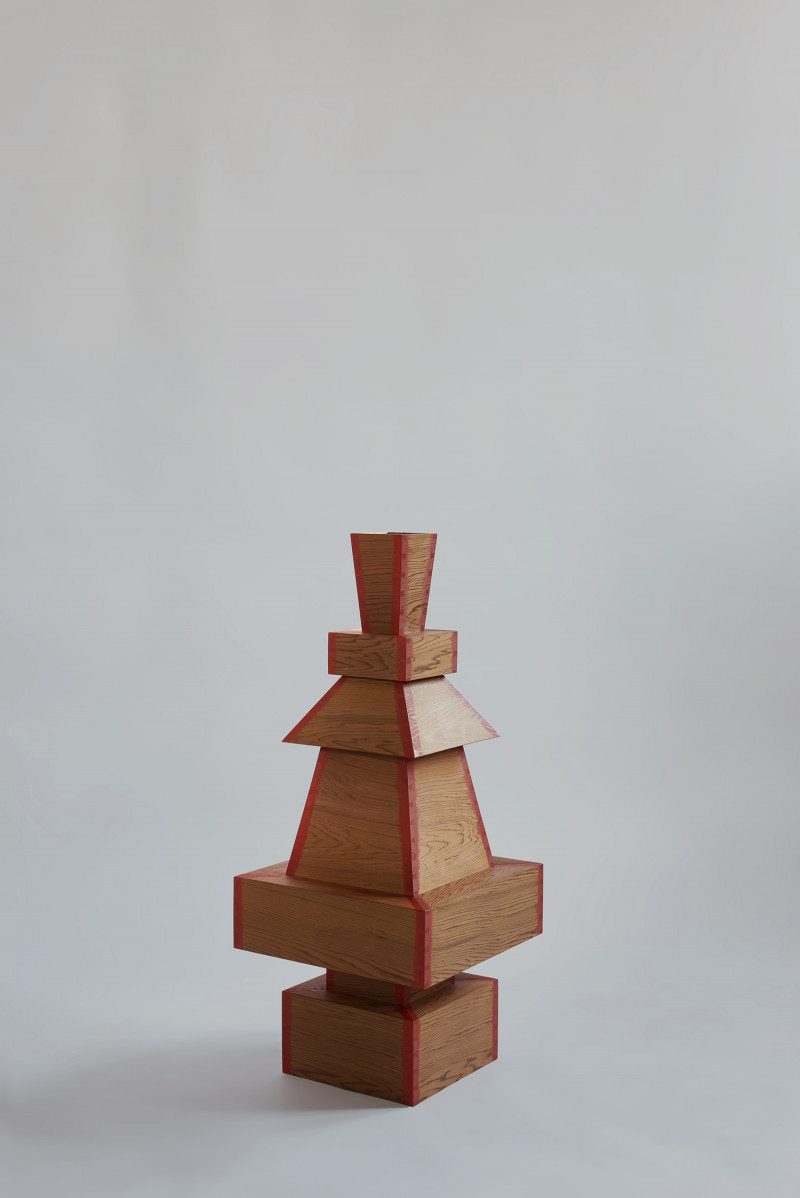
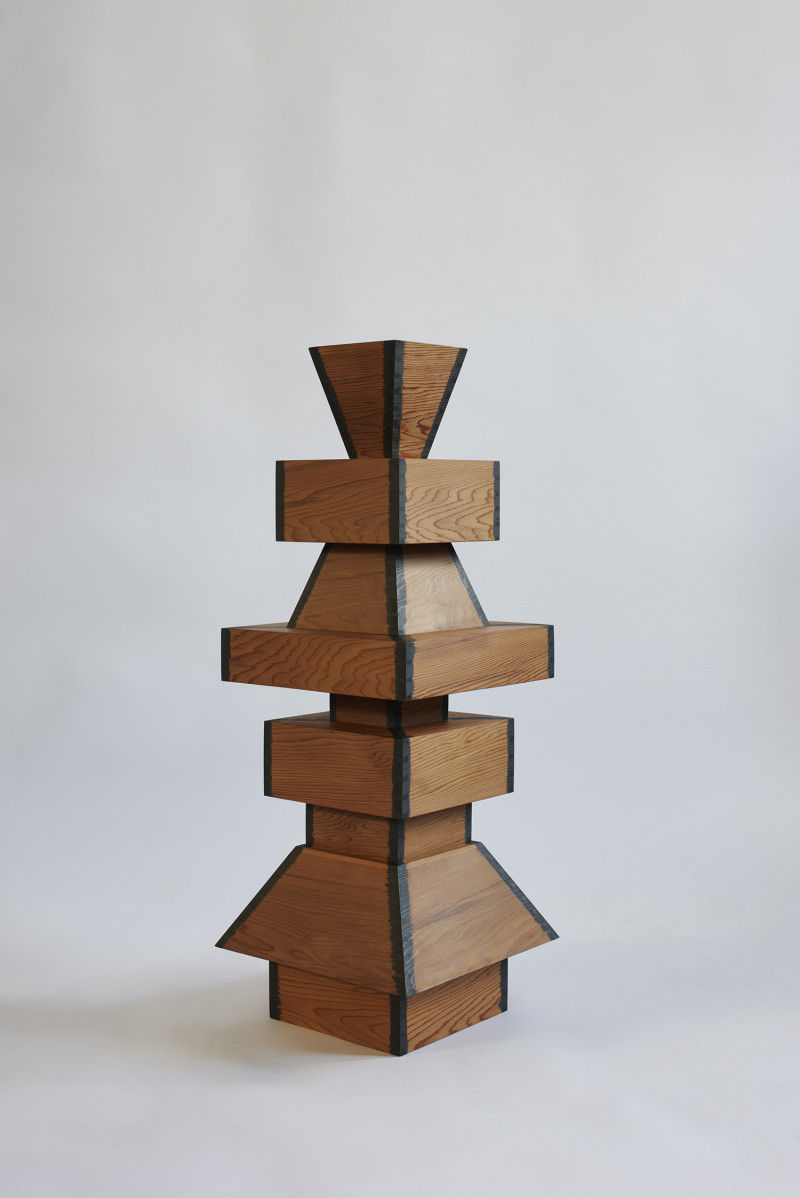
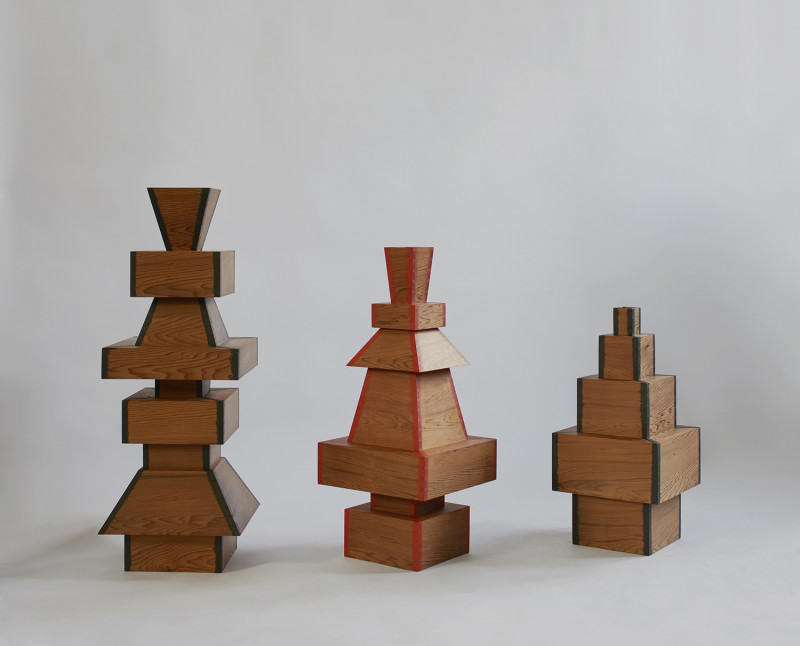
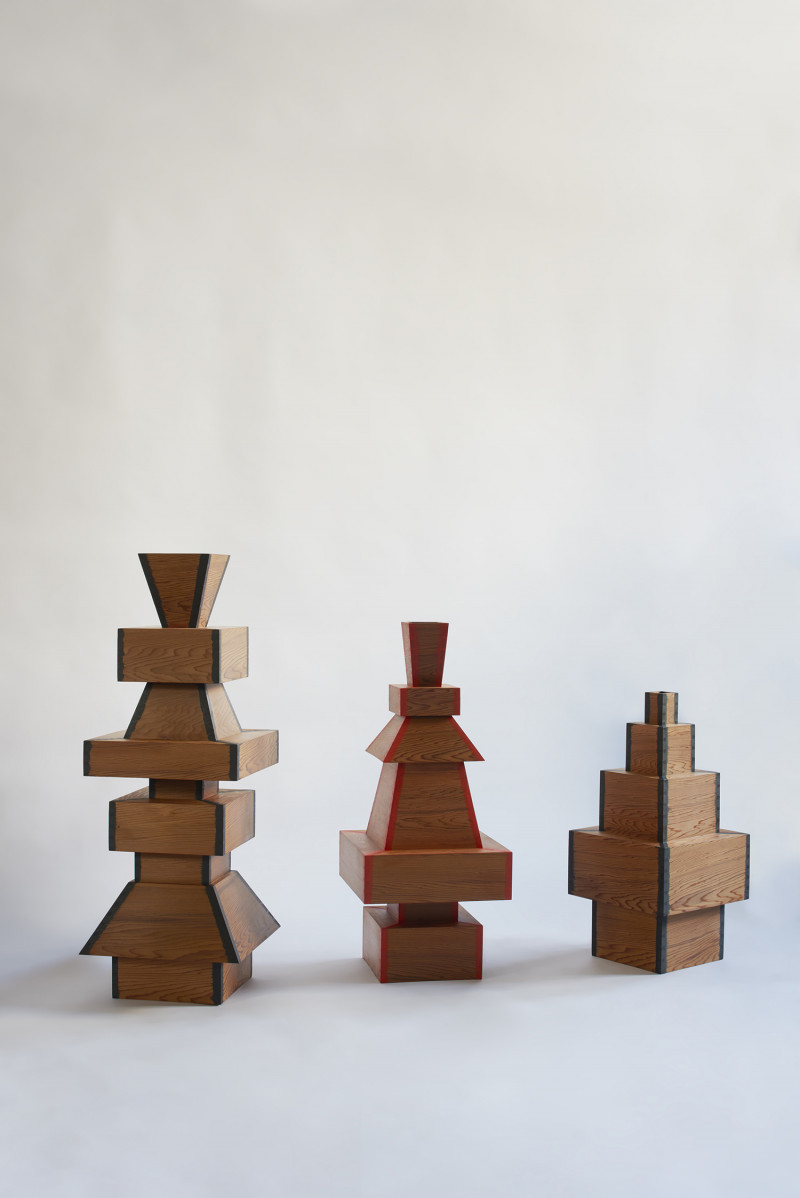
Kobayashi’s ability to understand the innate qualities of every material he works with is shown profoundly in Paper mobile.Made for Momosan Shop in London, Kobayashi created this kinetic sculpture as a toy for learning. Just like a mobilereacting to its environment - to wind, heat and people blowing at it - and Paper Mobile’s human shape suggests that it isdancing.The different elements representing body parts have multiple sides to it: The heads’ spiky blue and rounded red shapesrepresent sad and happy emotions, while the round belly shows three sides - navy blue, cream yellow and orange - thatstand for different times of the day, encouraging a child to remember and associate these elements of life. The genitals,too, have a black and a white side and can either take the shape of a penis or a vagina.Kobayashi gives his mobile the same playfulness and balance that is found throughout his work.
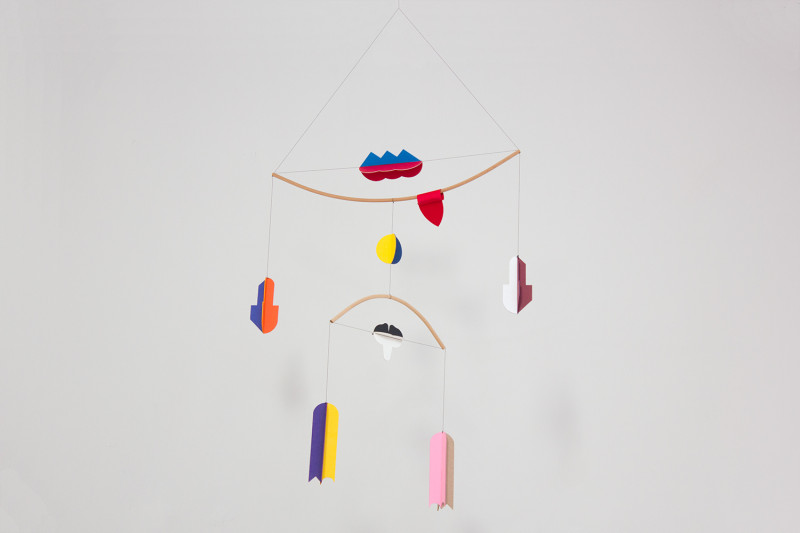
This collection is inspired by the famous table game Mikado, also known as pick-up sticks. The slim looking structure of the pieces mirrors the fragile balance of the game.
The shelf is constructed from colourfully painted wooden sticks, made of turned ash poles with pointed ends and hand-painted in red, blue and yellow to resemble the typical sticks in the game. The joints are precise and glued, delicate and at the same time sturdy. The boards are resting on the dowels and fixed by using small dowels from the top surface.
While Kobayashi is profoundly interested in craftsmanship, he also loves to play with east and west clichés and took the story of the Mikado game and “made some fun furniture pieces” out of it. Even though the game has a Japanese name, it was invented by a clever European company and introduced as a popular game from the far east in the 20th century.
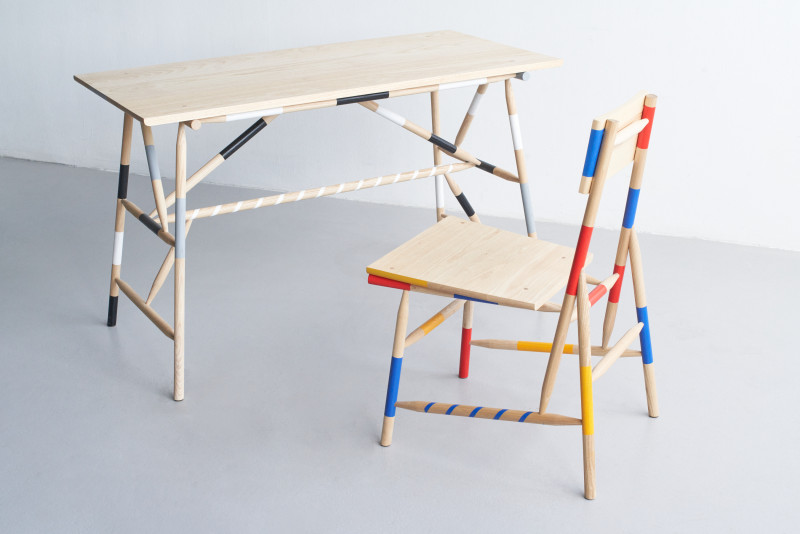
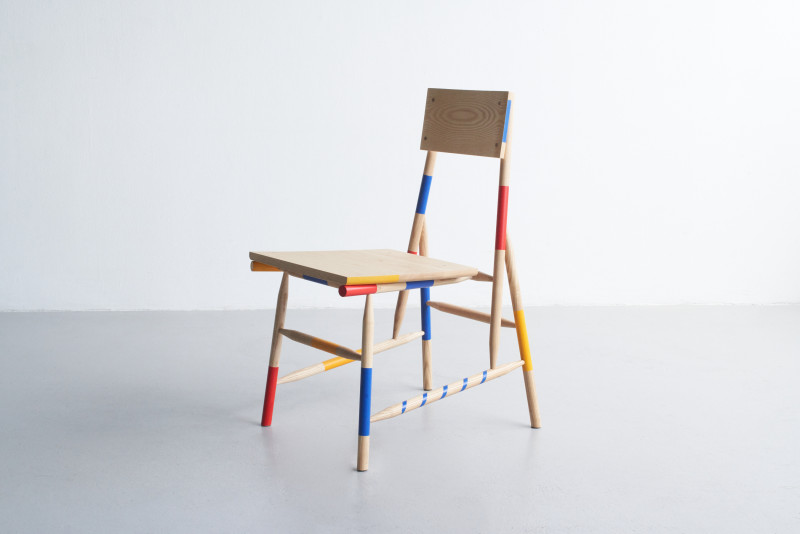
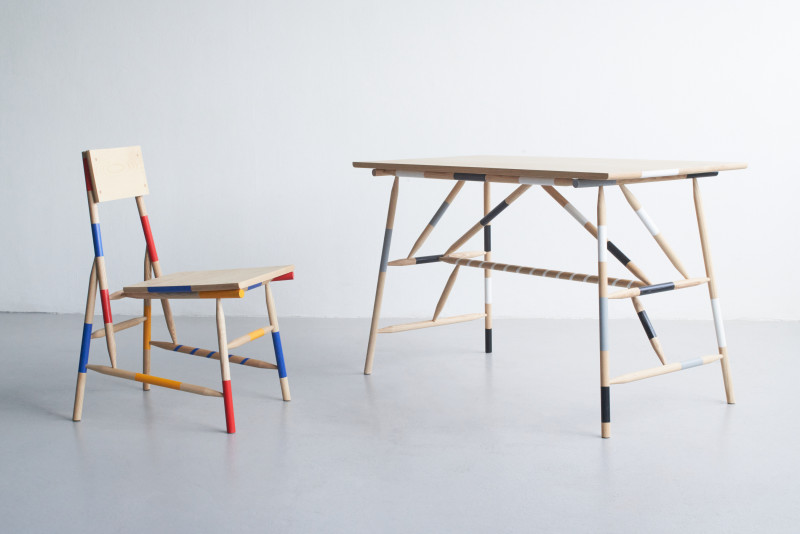
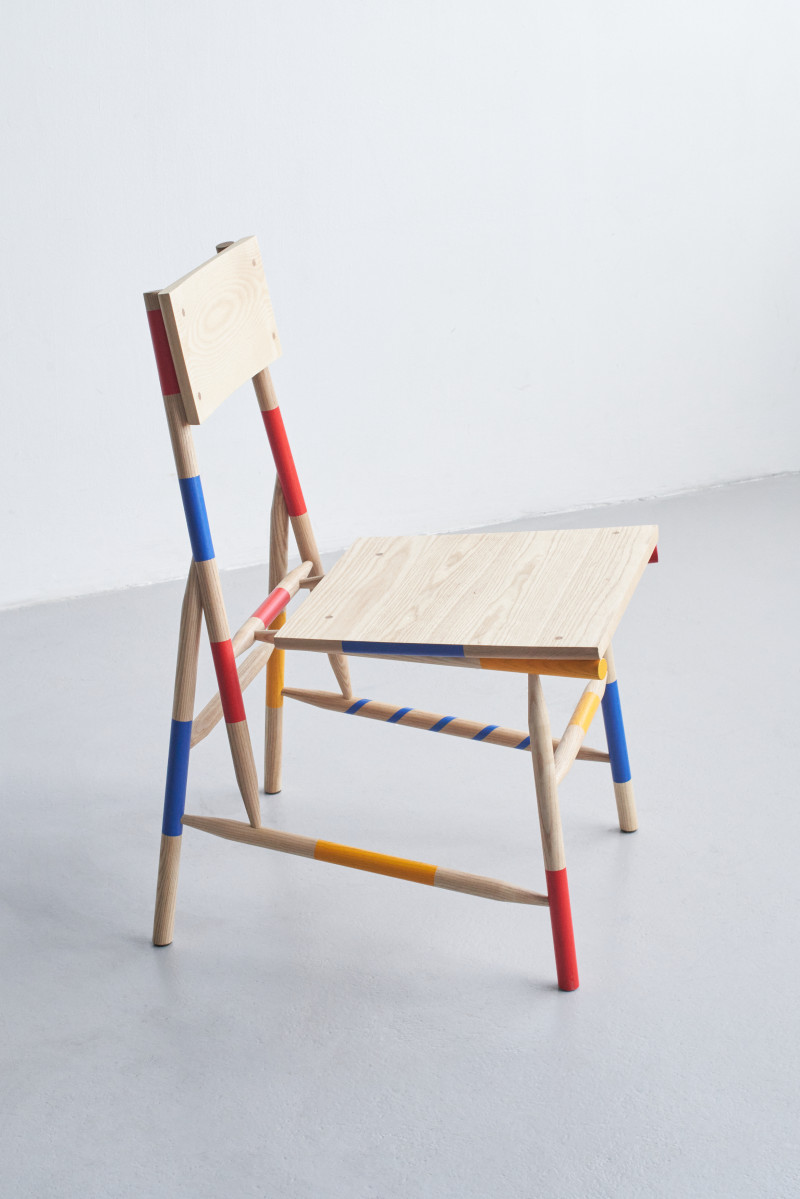
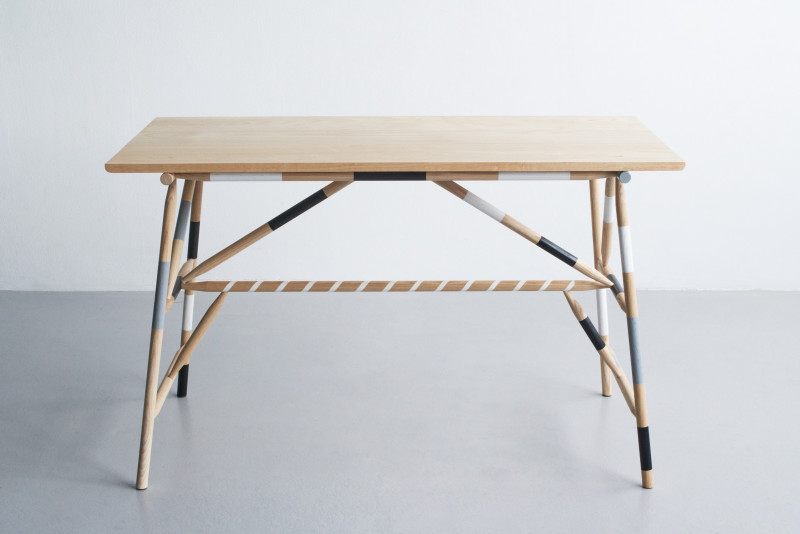
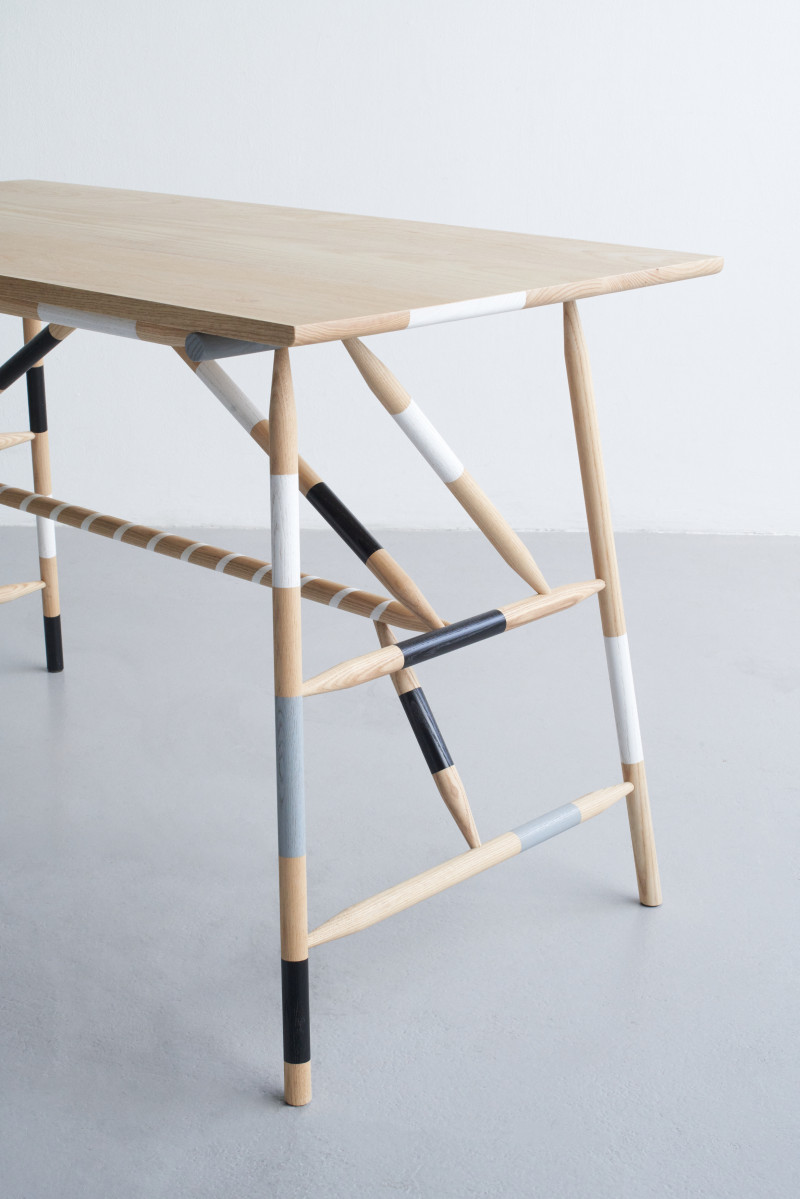
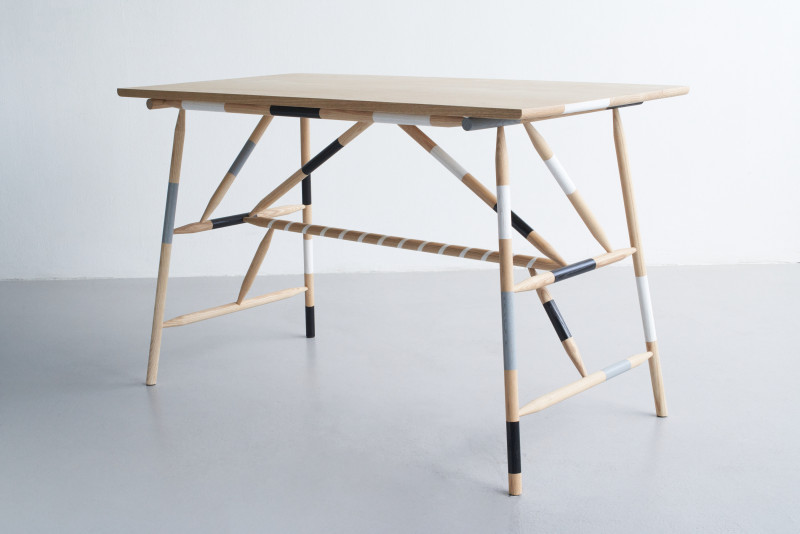
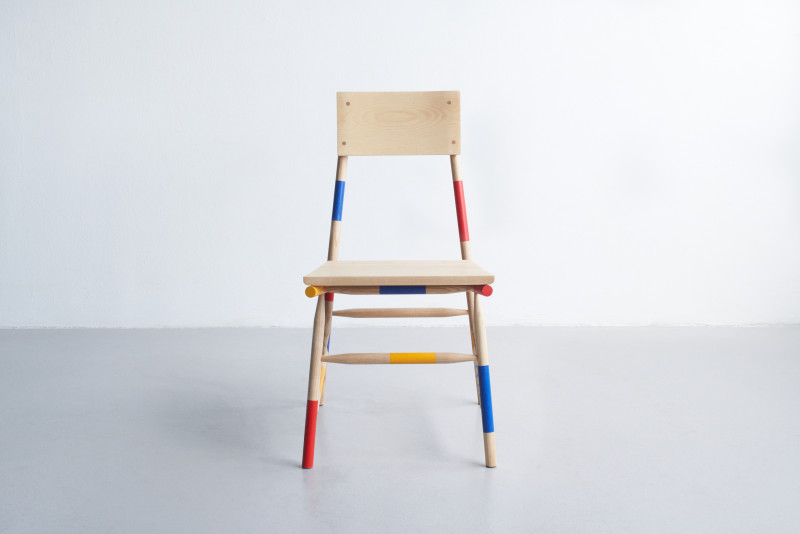
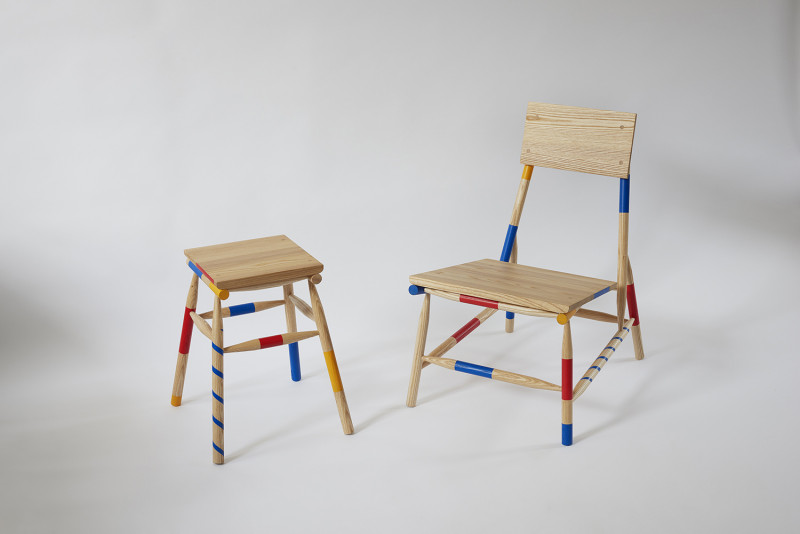
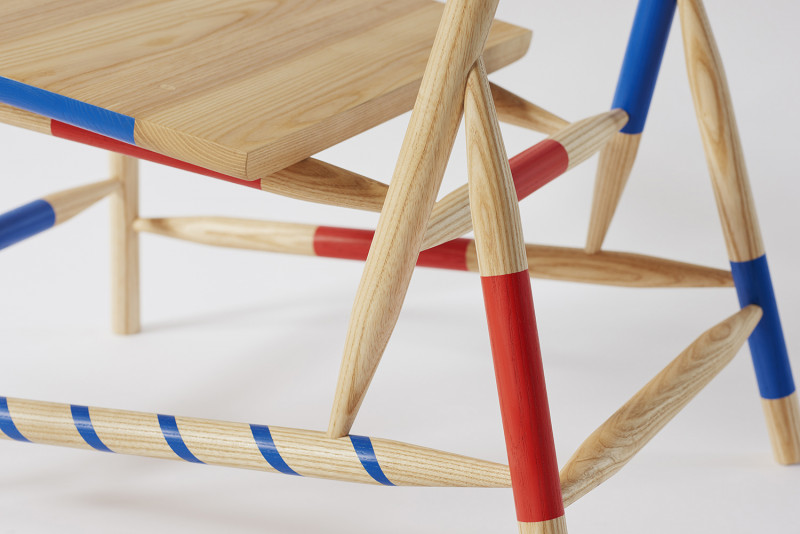
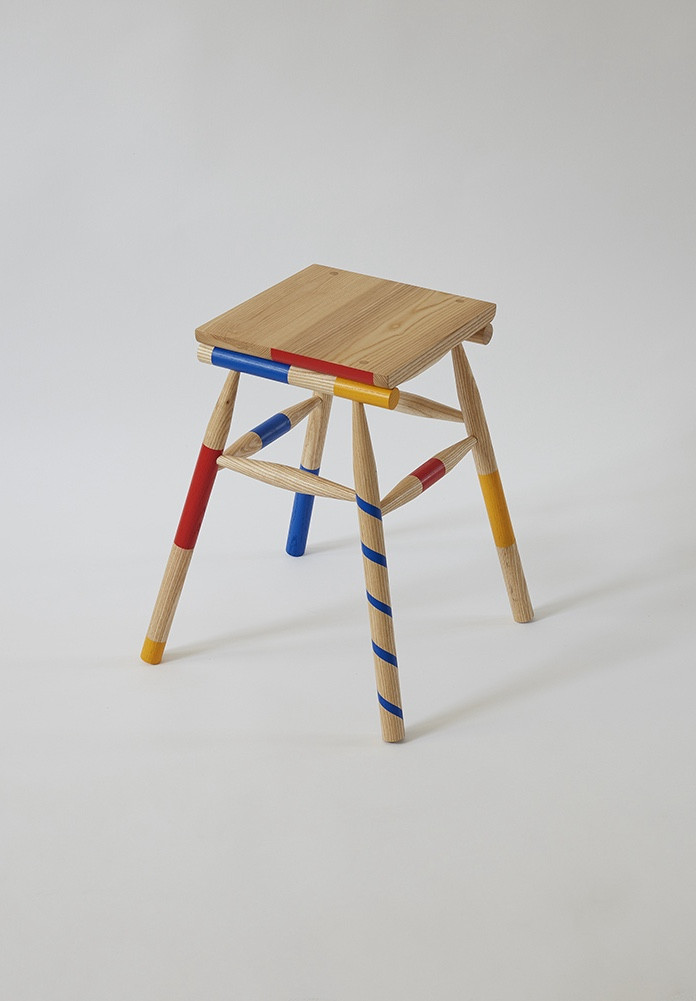
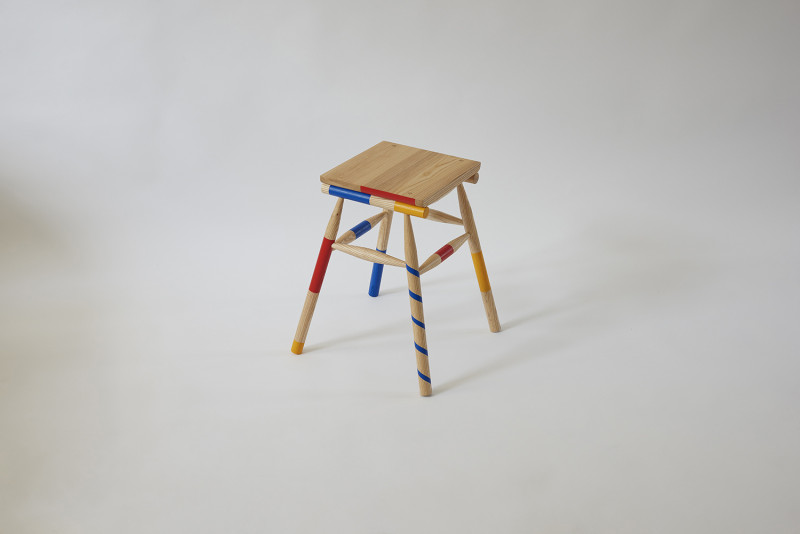
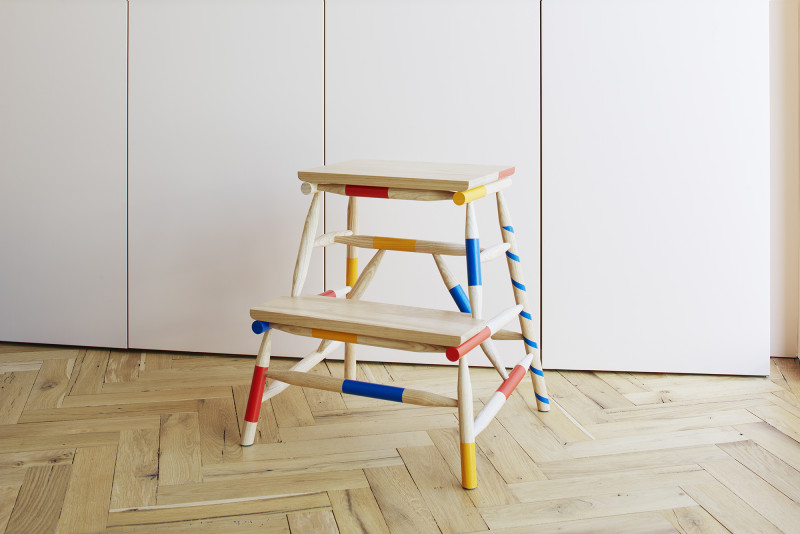
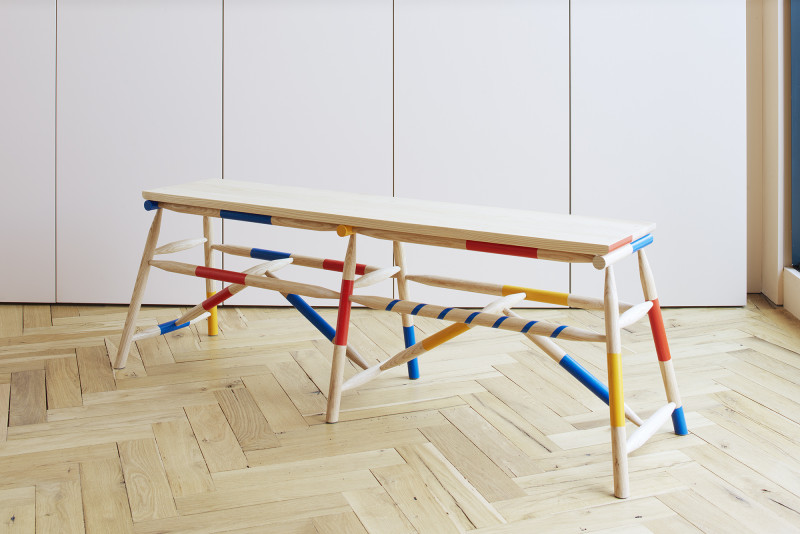
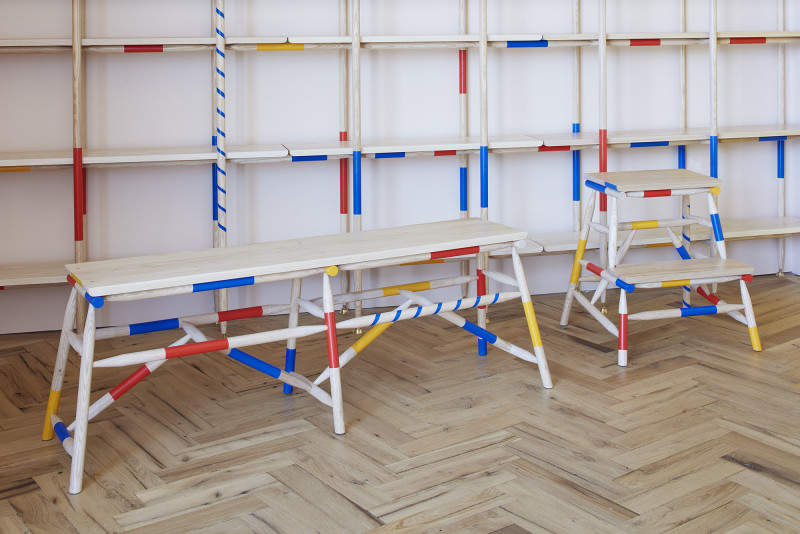
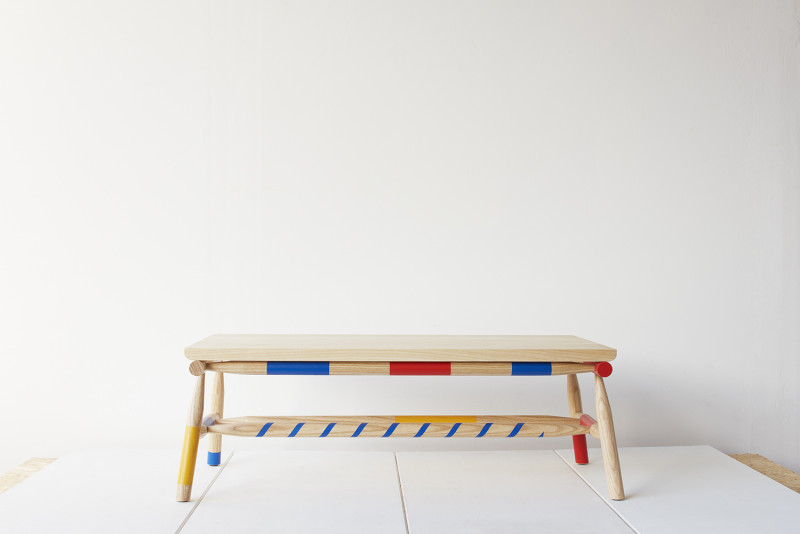
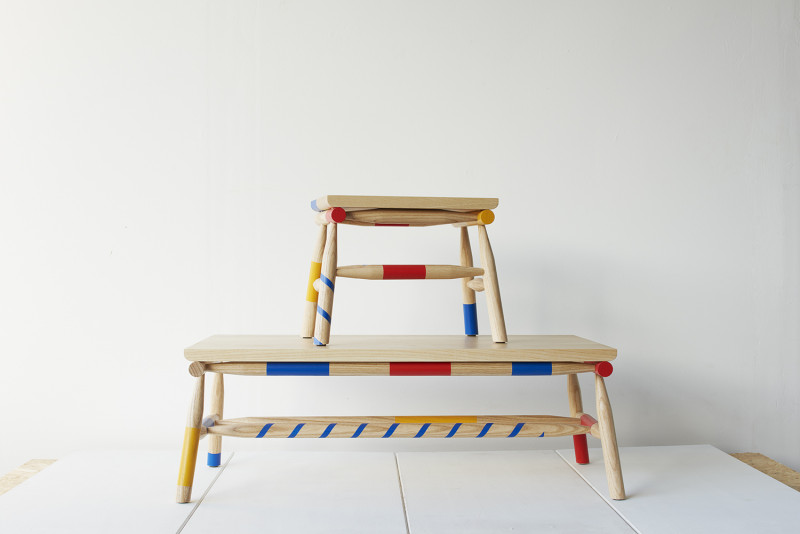
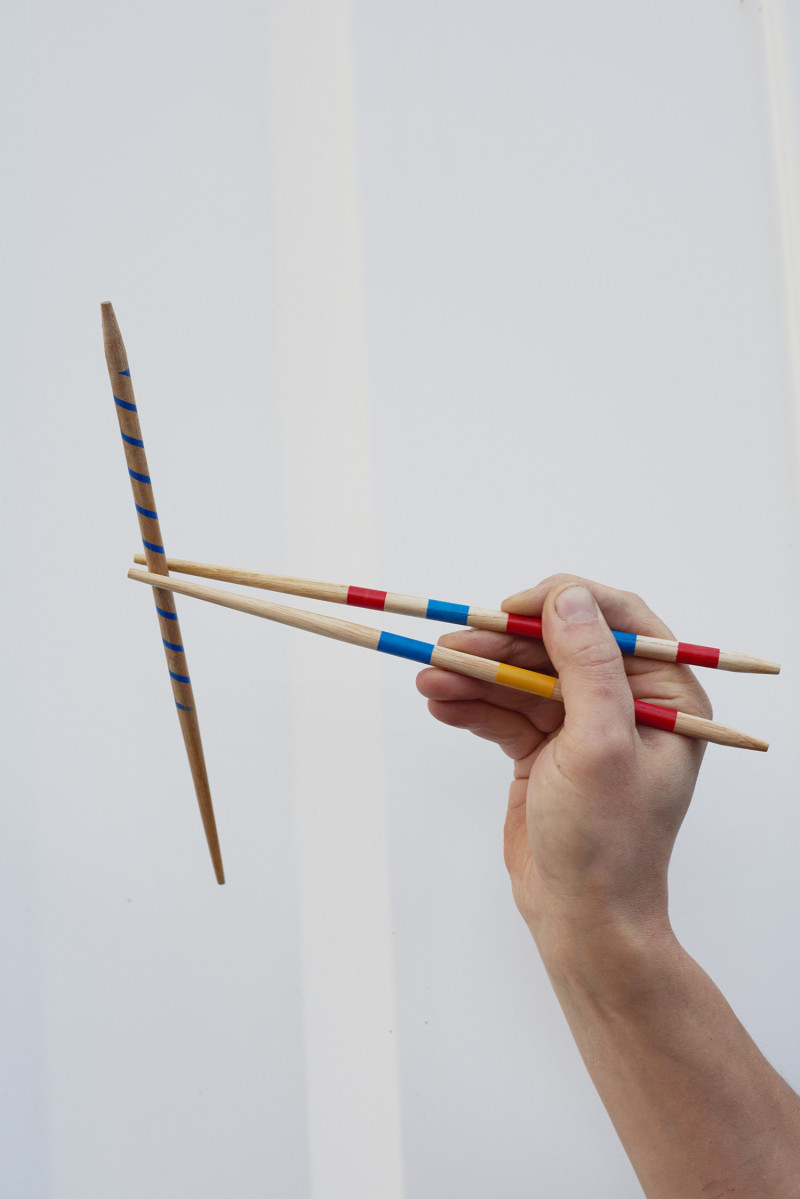
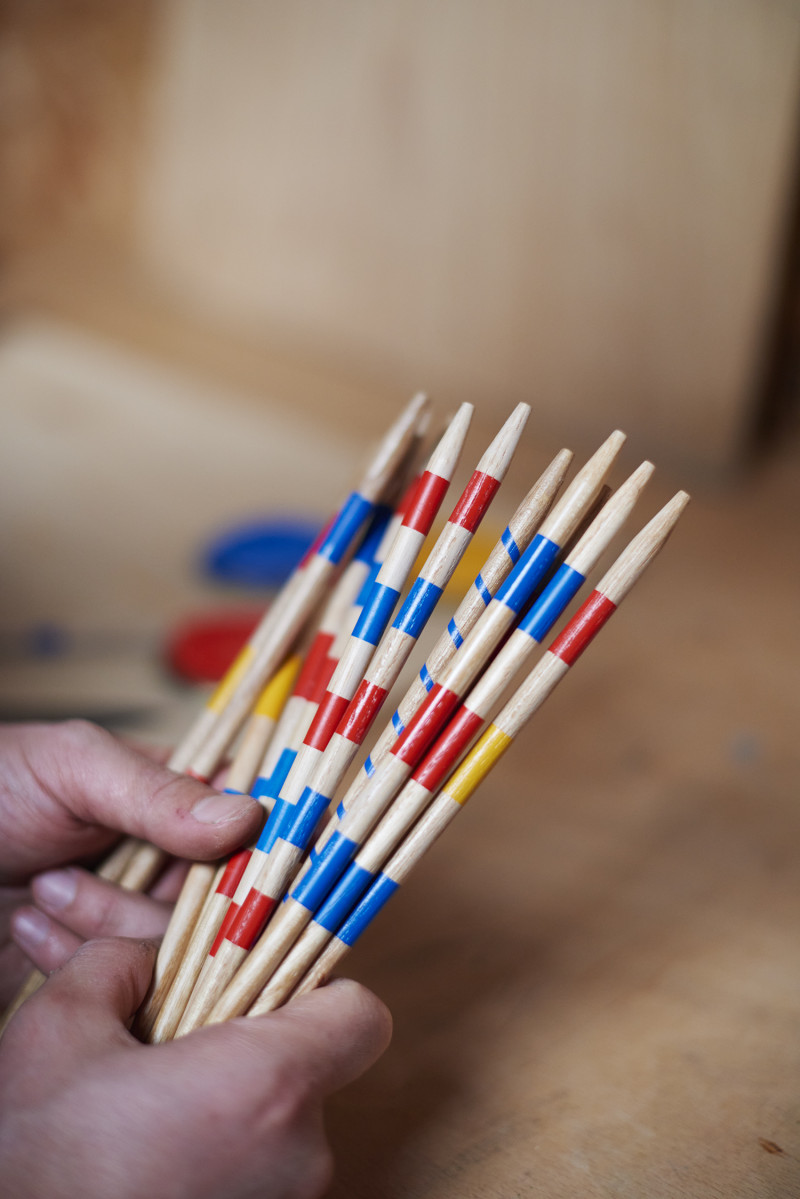
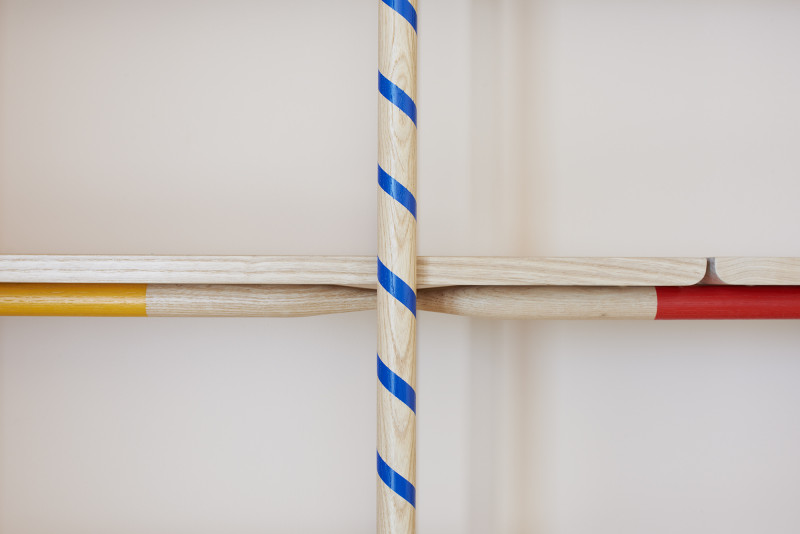
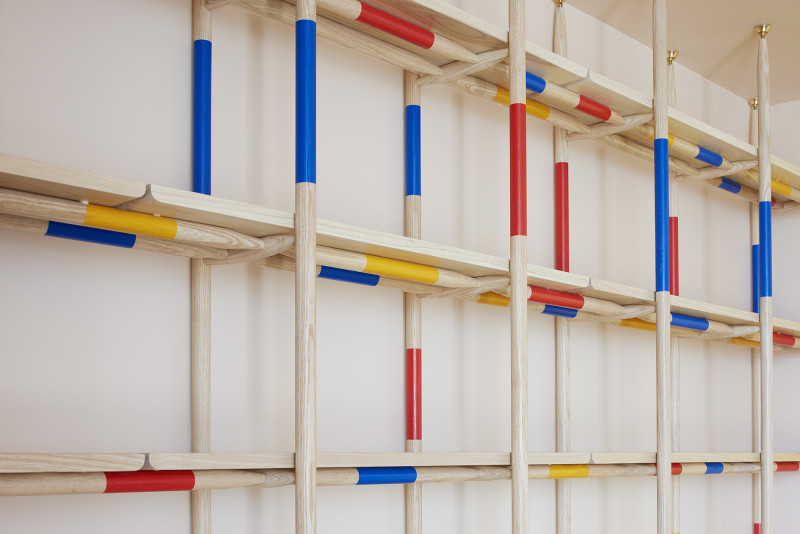
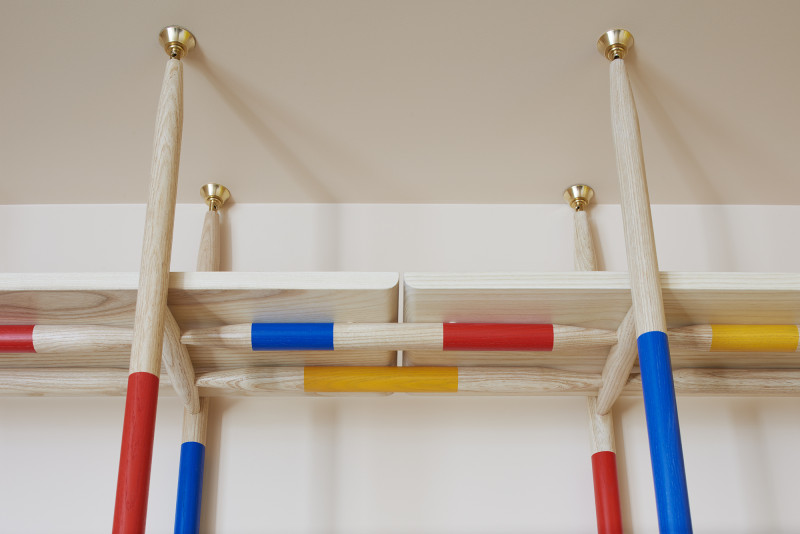
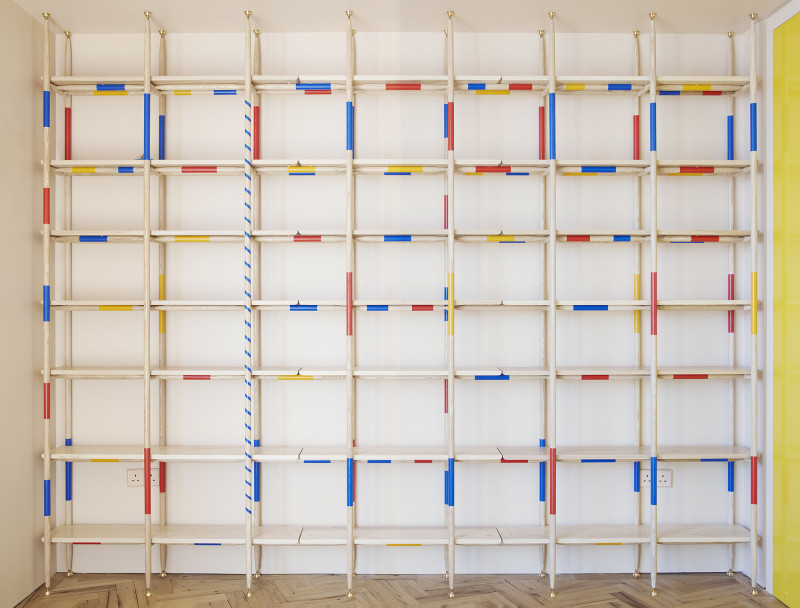
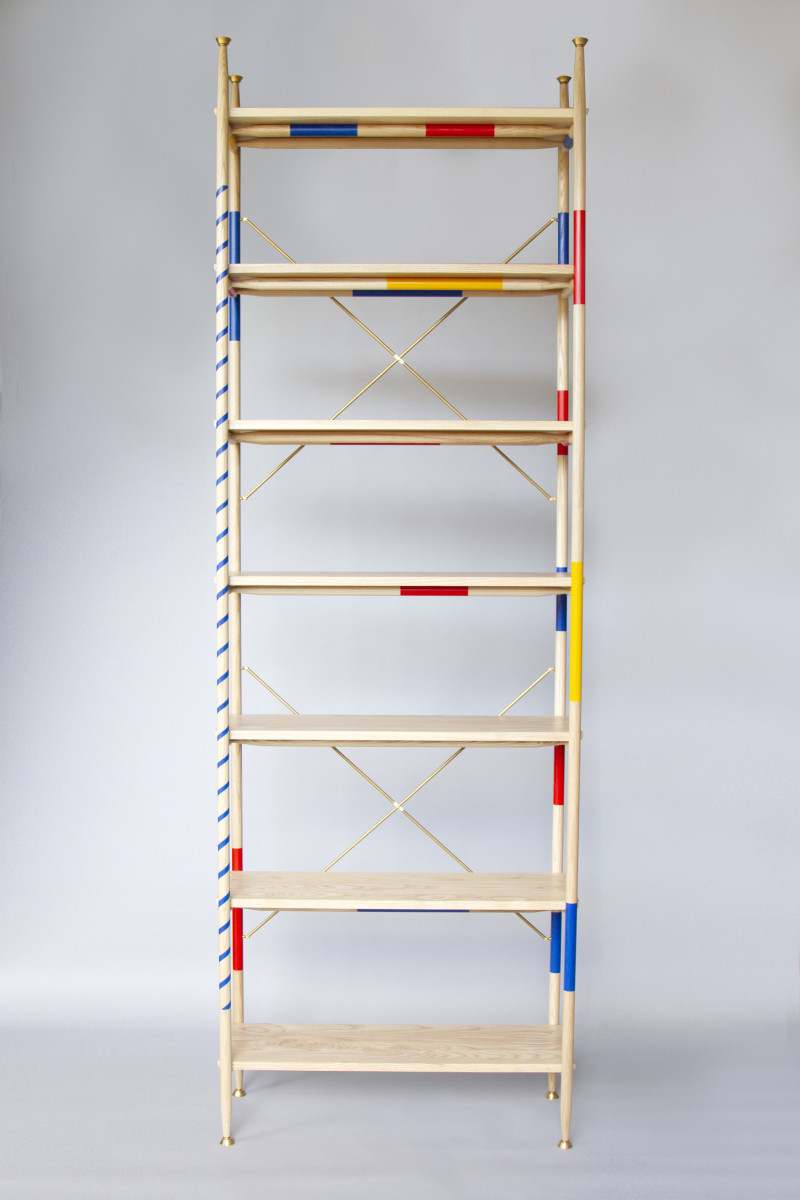
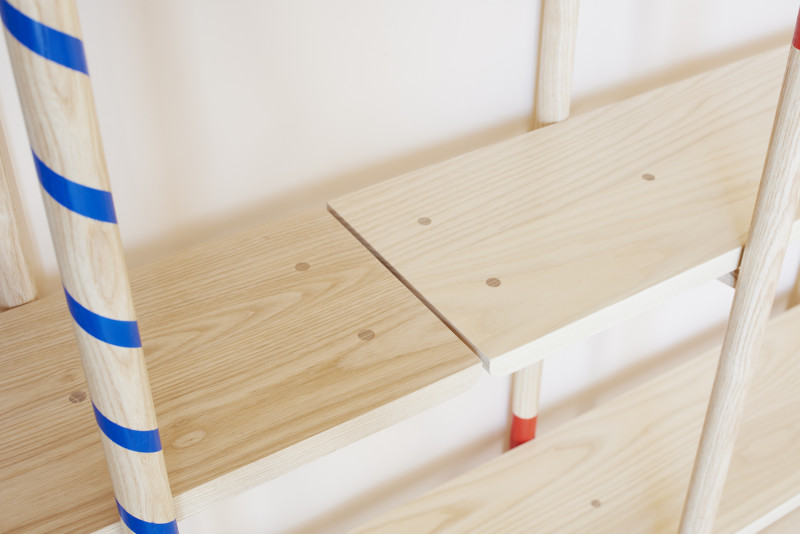
Bossa Bossa Chairs
2025 Chair





















Frieze 2025 – Booth with Kate MacGarry
2025 Exhibition


Fritz Rauh and Rio Kobayashi
2025 ExhibitionIn January 2025, we presented a series of furniture pieces at Blunk Space, created during residencies at the JB Blunk House. The exhibition paired my work with paintings by Fritz Rauh, whose abstract style inspired me to reflect on colour, pattern, and movement in my own pieces.
Using locally salvaged redwood, the furniture highlights the grain, texture, and marks in the material, which shaped both form and function. The pieces are practical but also invite close attention to detail and surface.
This project forms part of a broader interest in how materials carry history and meaning. Building on JB Blunk’s approach to organic sculpture, the work explores sustainability and the connection between craft and nature.
Through the dialogue with Rauh’s paintings, the exhibition encouraged visitors to see furniture as both functional objects and expressions of material and form.
A sculptural chair from the collection was later acquired by SFMOMA.








On the square table
2025 Table”On the square table” is an eight-seater dining table that continues my exploration of repair and reinvention through the use of salvaged materials. Crafted from reclaimed doors, shelving, and fireplaces – salvaged from a building prior to its renovation by Irenie Cossey – the table combines cherry wood, metal, and glass to create a connection between past and present. Following the completion of the renovation, the table was returned to the house for a six-week showcase, where it now stands as a reimagined piece, allowing its history to resonate within a newly transformed space.




Design Miami × Blunk space (Big Red)
2024 Exhibition, ShelvingFor Design Miami 2024, we presented four pieces commissioned by Blunk Space – two large shelves, a credenza, and a stool – to create a cohesive scene, all crafted from carefully salvaged redwood during our residency in Inverness, California. These works explore the relationship between material history, craftsmanship, and function, inspired by JB Blunk’s legacy and our time staying in the house he created.
The shelves combine sculptural form with practical use: the wall-mounted piece highlights texture and shape, while the freestanding unit offers flexible spatial presence. The credenza reveals the character of reclaimed timber through its rich patina and imperfections. The stool, simple and tactile, invites intimate interaction and warmth.
Together, the collection honours tradition while addressing contemporary design needs. The presentation received the Best CurioPresentation award, recognising its thoughtful and resonant approach. We exhibited alongside Alana Burns, JB Blunk, and Adam Pough.




Design Miami × Blunk space (Tacoma)
2024 Exhibition, CredenzaFor Design Miami 2024, we presented four pieces commissioned by Blunk Space – two large shelves, a credenza, and a stool – to create a cohesive scene, all crafted from carefully salvaged redwood during our residency in Inverness, California. These works explore the relationship between material history, craftsmanship, and function, inspired by JB Blunk’s legacy and our time staying in the house he created.
The shelves combine sculptural form with practical use: the wall-mounted piece highlights texture and shape, while the freestanding unit offers flexible spatial presence. The credenza reveals the character of reclaimed timber through its rich patina and imperfections. The stool, simple and tactile, invites intimate interaction and warmth.
Together, the collection honours tradition while addressing contemporary design needs. The presentation received the Best CurioPresentation award, recognising its thoughtful and resonant approach. We exhibited alongside Alana Burns, JB Blunk, and Adam Pough.




Design Miami × Blunk space (Keitora)
2024 Exhibition, StoolFor Design Miami 2024, we presented four pieces commissioned by Blunk Space – two large shelves, a credenza, and a stool – to create a cohesive scene, all crafted from carefully salvaged redwood during our residency in Inverness, California. These works explore the relationship between material history, craftsmanship, and function, inspired by JB Blunk’s legacy and our time staying in the house he created.
The shelves combine sculptural form with practical use: the wall-mounted piece highlights texture and shape, while the freestanding unit offers flexible spatial presence. The credenza reveals the character of reclaimed timber through its rich patina and imperfections. The stool, simple and tactile, invites intimate interaction and warmth.
Together, the collection honours tradition while addressing contemporary design needs. The presentation received the Best CurioPresentation award, recognising its thoughtful and resonant approach. We exhibited alongside Alana Burns, JB Blunk, and Adam Pough.


Design Miami × Blunk space (Tundra)
2024 Exhibition, ShelvingFor Design Miami 2024, we presented four pieces commissioned by Blunk Space – two large shelves, a credenza, and a stool – to create a cohesive scene, all crafted from carefully salvaged redwood during our residency in Inverness, California. These works explore the relationship between material history, craftsmanship, and function, inspired by JB Blunk’s legacy and our time staying in the house he created.
The shelves combine sculptural form with practical use: the wall-mounted piece highlights texture and shape, while the freestanding unit offers flexible spatial presence. The credenza reveals the character of reclaimed timber through its rich patina and imperfections. The stool, simple and tactile, invites intimate interaction and warmth.
Together, the collection honours tradition while addressing contemporary design needs. The presentation received the Best CurioPresentation award, recognising its thoughtful and resonant approach. We exhibited alongside Alana Burns, JB Blunk, and Adam Pough.





Off The Shelf Pavillion
2024 InstallationThe ‘Off the Shelf’ pavilion is my very first large-scale installation, created in collaboration with the engineering firm Webb Yates.
The pavilion’s design is largely influenced by my childhood home in the countryside of Japan, which my parents built. The aesthetic is a blend of a traditional Japanese house and a European Fachhaus – my father is Japanese and my mother isAustrian. They used lime plaster, along with salvaged material from a Japanese farmhouse, and I have many memories of helping them during the construction. Being in the countryside, I felt very close to nature – observing the wind blowing through the trees, the smell after heavy rains, and the warm feeling of sunshine.
As my background is in furniture design and making, I envisioned the design as an extension of my craft. I came up with the idea of a scaled up pair of shelves supporting a roof. The simple grid structure recalls an extruded Torii shape, which is a gate usually found at the entrance of Shinto shrines. Golden wind chimes hang underneath each of the roof rafters, suspended from red and white striped ribbon – colours which signify celebration in Asia. This is a nod to the ceremonial feeling of this inaugural project commissioned by Olympia.
The end grain and sections of the wood planks are decorated in colourful paints and gold leaf. These details and colours were inspired by the 20th century movement in Austria, which was led by visionaries such as Josef Hoffman and Koloman Moser. Painting the end grain of wood structures is also a common feature of old Japanese buildings, such as temples and shrines, to prevent water damage and rot.
Hundreds of kilos worth of Portland stones, tied with the ‘Tomeishi’ technique, are affixed to the shelving structure with wedges. Not only are these beautifully displayed on the shelves, they also act as ballasts and secure the entire pavilion. The use of natural materials is further enhanced by a feeling of sunlight within. The curved roof collects rainwater, creating a waterfall effect as it splashes on the stone. The wind chimes dance in the breeze, making it both visible and audible.
Since many pavilions are often discarded after their display period, we wanted to build in a more environmentally conscious way. Our main challenge: using material “off the shelf” without permanent alteration, so that everything could be easily disassembled and reused. We were able to achieve this through techniques like clamping, wedging, and tying with rope. WhenI make furniture, I want it to last forever, so I am happy to know that all the pavilion’s materials – from the Douglas Fir planks to the Portland stone – will have another life







The Guest House For An Ostrich
2024The Guest House For An Ostrich is a playful spin on your usual bird box. Inspired by the ostrich's act of burying its head in the ground when it feels threatened, we created a place that offers this same sense of security, allowing it to hide its head. The guest house is contradictorily for an Ostrich that is on the move, featuring an aerodynamic design that reflects the Ostrich’s ability to get up to speeds of 80 km/h. Remarkably, because the ostrich ran so fast whilst wearing this that the aerodynamic friction scorched the front of the house.









Bat Shelf
2023 ShelvingWhat began during the pandemic with the “Positive Chair” continued with Nancy’s table, which was featured in the exhibition “R for Repair” at the V&A.
The latest piece, originally a side table with carefully crafted veneer work, was discovered at an antiques market and had spent its last years in a London attic.
When the owner asked Kobayashi to repair the table, they mentioned that they actually needed a small shelf for their London apartment.
Kobayashi studied the construction of the three-legged table and reassembled the entire piece in a completely new way. When he looked at the finished piece, he recognized the bat-like shape – a table that had transformed into a bat during its time in the attic.







Furikake Lantern
2023 LampThe modular “Furikake lanterns” are available in both suspended and wall-mounted versions. In collaboration with Flavia Brändle, Kobayashi embarked on an exploration of the technique of bending wood by precisely cutting it with a Japanese saw at predetermined positions. Given Brändle’s interest in modularity and systems, the duo experimented with various combinations and mounting directions, introducing a dynamic element to the project.
The result is a design that radiates tranquility, effectively simplifying the inherent complexity of a modular product. Kobayashi added a touch of vibrancy reminiscent of the Japanese culinary tradition, where pure rice is transformed into a delightful dish with the addition of Furikake flakes. Much like the colorful sprinkles on the Soji Paper which elevate the aesthetics the Furikake Lanterns.
In a special edition for Peter Pilotto and Christopher de Vos, two wall-mounted lanterns and one large lantern were created, adorned with their latest textile collection



















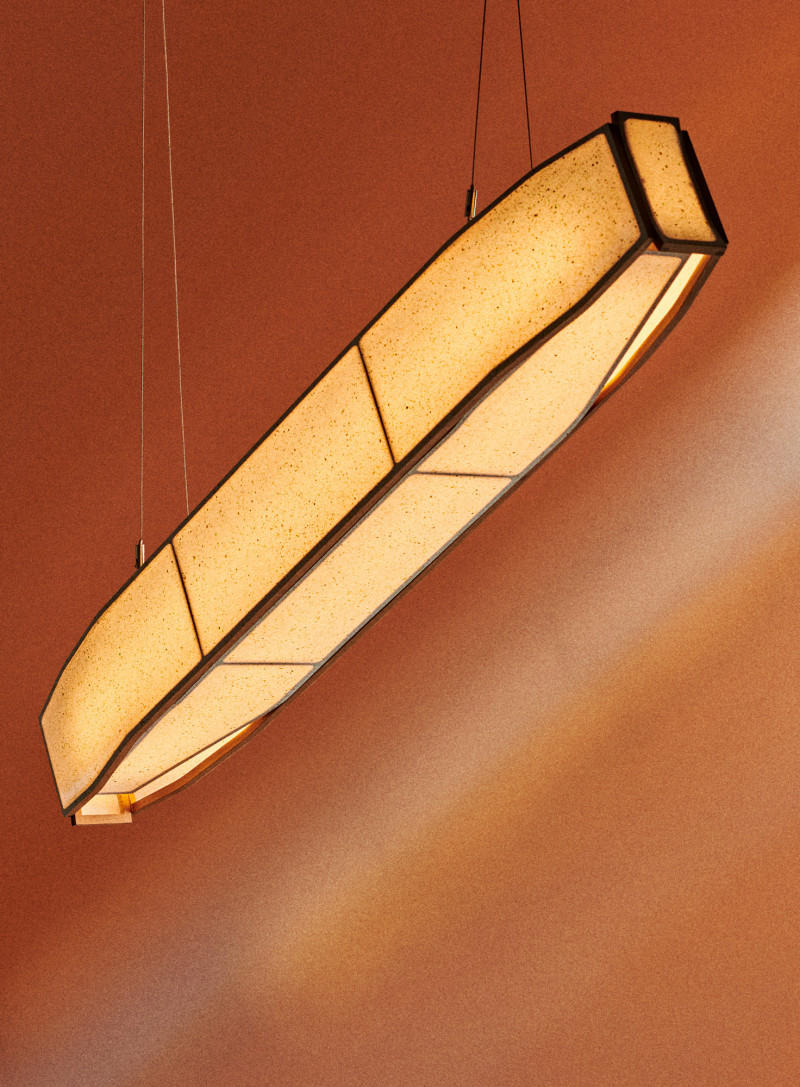
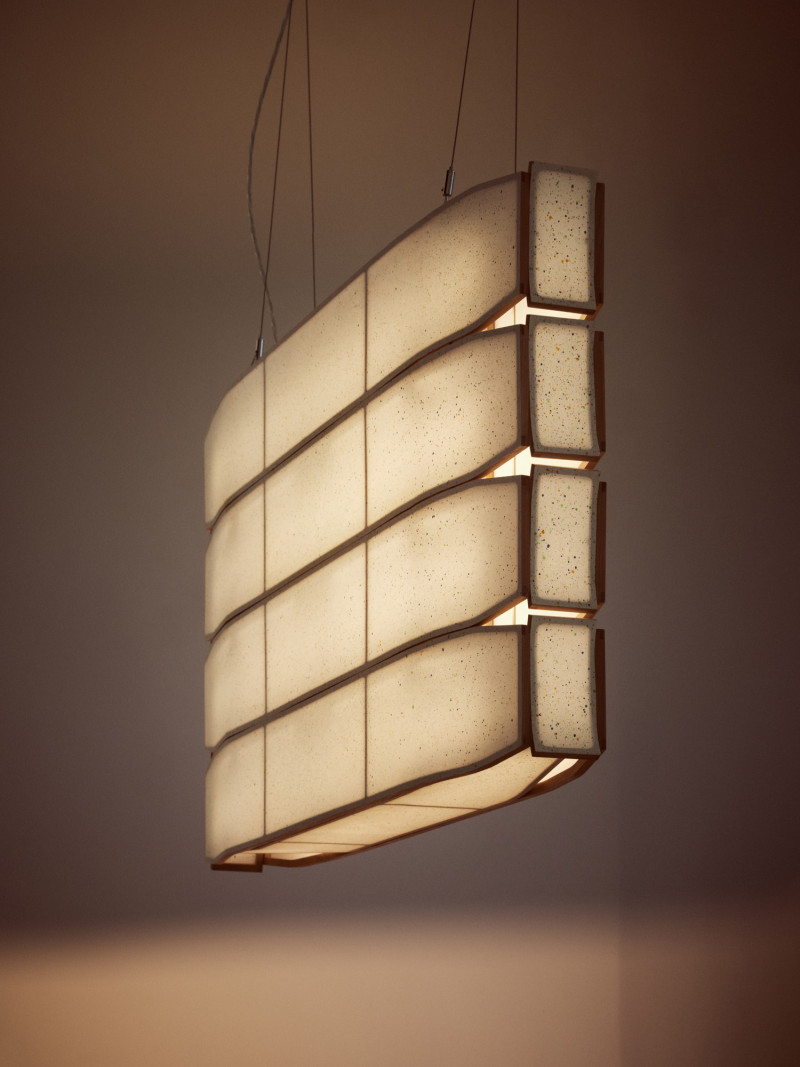
hOOk
2023 Hookhook HooK hOOK!







Impro Cosmic Crab Table
2023 TableThe “Impro Cosmic Crab Table” is a truly unique kitchen table created in the workshop through an intuitive process.
Kobayashi constructed a simple-shaped table employing a collage of different joinery techniques, which makes quite an unusual combination. He then used various machines to spontaneously carve into the simple shape, resulting in the creation of a unique form that he describes as resembling a cosmic crab.




Leibzieger Komplex Berlin
2023 InteriorAn interior project completed in 2023, commissioned by Korean-American artist Christine Sun Kim, and her husband. The residence is in an iconic 1970’s social housing block, ‘Der Komplex Leipziger Straße’, which prompted Rio to respond to the aesthetics of the era, combining bold colors and clean details. Clever storage solutions maximize the available space, including a separate bedroom behind a wall of cabinets. Shoji screens slide open to reveal closets, decorated in a blend of Korean-inspired motifs and Bavarian patterns as a nod to the couple’s heritages. Rio teamed up with Onni Ano to fabricate all the components over two and a half months in wintery Helsinki.





On The Square Show
2023 ExhibitionSecret group exhibition in an abandoned building, Cromwell place, London. October - 29 November 2023. With Martino Gamper, Bethan Laura Wood, Peter Pilotto and Christopher de Vos, Flavia Braendle, Jochen Holz, Shirobey Kobayashi.





Piece of Cake Sofa
2023 SofaThe “Piece of Cake Sofa” represents Kobayashi’s debut in upholstery. This convivial yet simple sofa, created in collaboration with designer Flavia Brändle, invites playful exploration of modularity.
Each upholstered block is self-standing and can be arranged flexibly within the frame or placed freely throughout the room. These versatile settings provide comfortable seating for social gatherings or create a relaxed platform for intimate lounging. Additionally, the wooden side tables and loose cushions can be positioned as desired, allowing for a personalized setting.
The name ‘Piece of Cake’ humorously reflects Kobayashi’s experience in designing his inaugural upholstery piece.Accustomed to creating his designs in his own workshop, the upholstery design process demanded a more holistic approach to crafting a convivial object, as well as a newfound attention to detail in textile.The Piece of Cake Sofa is covered with textile from Peter Pilotto x Christopher de Vos’s “Phase 02” collection.
Walnut wood, oiled, Textile by PPCDV
L 218 cm x W 140 m x H 72 cm










Play 01, Play 02 and Factory Amp
2023 Speakers Wiener Lautsprecher ManufakturThe collaboration with the high-end hi-fi manufacturer, “Wiener Lautsprecher Manufaktur,” commenced in 2018, driven by the aspiration to create speakers that could visualise the intricate nuances of music.
The speaker duo, consisting of the “Play 01” and “Play 02” models, has been designed to capture the multifaceted layers of rhythm and instrumentation found in composed music pieces. This complexity is visually translated through intricatelyarranged marquetry patterns and the artful application of rhythmic layers of color. These speakers embody craftsmanship and are complemented by the inclusion of premium audio components, all assembled in a dedicated development and production facility located in Vienna
To enhance the auditory experience with “Wiener Lautsprecher Manufaktur,” Kobayashi introduced the “Factory” amplifier, in addition to “Play 01” and “Play 02.” He considers this amplifier to be the conductor of the vibrations faithfully reproduced by the speakers. Much like a factory in a design process that transforms ideas into tangible products, this amplifier serves as the conduit for the speaker’s sonic magic.



Schhhlange Hook
2023 HookBended Cherry wood with gold plated silver tongue
The show is a continuation of JB Blunk’s seminal 1981 solo exhibition ‘100 Plates Plus’ held at David Cole Gallery in Inverness, California. For ‘100 Hooks,’ each participating artist and designer was invited as a result of an existing connection with Blunk’s work. From exhibiting at Blunk Space, a residency at his iconic home and studio, or through the inspiration of his oeuvre, each participant has been touched by Blunk’s legacy.
⠀⠀⠀⠀⠀⠀⠀⠀⠀
This new exhibition consists of 100 different responses to the same brief: to create one hook of any size or material. Hooks, like plates, are utilitarian objects. In a nod to his training in Japan, Blunk’s plates denied the distinction between art and craft. Blunk enacted a particular synthesis of art and the objects of life, creating these functional objects thoughtfully and artfully throughout his career. For ‘100 Hooks’, each of the artists and designers offers their own approach to materials, form, and process, but also the relationship of aesthetics to function.


Shima Uma
2023 Dresser D>he dresser that I designed for Dolce & Gabbana, is a true reflection of the diverse influences that shaped its creation. The name of the piece is borrowed from the Japanese word for ‘zebra’, which literally translates to “stripe horse.”
I chose this name because I love the ambiguity of the zebra’s black and white stripes, which are never quite black or white, but always somewhere in between. This reflects the boundaryless nature of my piece, which appears chaotic at first glance but is meticulously designed and crafted with incredible attention to detail.
The dresser harmoniously combines different materials. From the luxurious gold-plated glass to the warm, eye-catching wood structure and marquetry, each element plays a unique role in ‘creating a piece that is both elegant and inviting. And of course, the colorful, soft embroidered silk fabric hanging on the side adds a playful touch that ties everything together, a perfect balance between furniture and fashion.
As a designer, I strive to create pieces that are not only visually striking, but also emotionally resonant. My dresser reflects my own memories of youth and passion, as well as the unique blend of cultures and traditions that shaped my upbringing.
Working with Dolce&Gabbana Casa on my dresser allowed me to explore new possibilities in design and craftsmanship. Shima Uma expresses the mixture of language, culture, nationality, tribe, and craftsmanship, as well as my own memories and passion.
This unbounded piece is not just visually striking, but also emotionally resonant, reflecting the unique blend of cultures and traditions that shaped its creation.







Chiro Chiro Mobile
2022 MobileChiro Chiro (チロ チロ) is a one-of-a-kind kinetic mobile that opens our imagination. The playful and interactive hanging piece invites us to make time and space for ourselves in the hectic world.
The name Chiro Chiro is borrowed from Japanese expressionチロ チロ, whose pronunciation resembles the sound reptiles make when flicking their tongues in and out swiftly. However, the subject of the figure remains open to interpretation. It could be a bird, an aeroplane, a flying fish, a snake or anything else depending on our own perception.
Finely handcrafted with walnut, each piece is unique with woodgrain and tinge of its own. The delicate wings are decorated with patterns of various colours, offering an animate and enticing visual experience when flapping. An elegant play on perspectives in motion, the kinetic piece captivates us with its subtle charm of simplicity.‘
I am fond of the idea of a toy that keeps one company all the way from childhood to adulthood. A true timeless piece.’ The designer wishes to set up a delightful corner for contemplation for each owner of Chiro Chiro.



Head Shelves
2022In this sculptural shelf design, Kobayashi combines the robotic and the human, the male and the female, the dead and the living and home storage and artful crafts. Kobayashi’s core idea is that a shelf shows a lot about the personality of the owner. This thought inspired him to create a shelf that has its own persona.












Nancy’s Table
2022 TableRio Kobayashi was invited to participate in the exhibition R for Repair at the V&A in London. He was given the task to repair an old sewing chest, that used to belong to the owner’s grandmother, Nancy.
It was important to Kobayashi to understand the history of the piece before starting to repair it. After many conversations with the owner, it turned out that Nancy used to hide her artworks within it, and thereby also her dream of becoming an artist.
Kobayashi wanted to honour this dream by transforming the chest into a table. The closed chest reminded him of a bud that was yet to flower. He wanted to open it up, so that the dream could finally bloom. At the centre, underneath the glass, he placed a small painting by Nancy.
In order for the piece to become a functioning table, the legs had to be extended. Kobayashi used Japanese joinery, walnut, sapele and ash to do this. It was important that the piece would be able to live on for many more years to come, as well as that the added materials would age well with it.
Kobayashi deliberately used other types of wood and finishes to modify the piece so that difference between new and old would stay visible. The green nail polish on one of the feet encapsulates this with a smile. Nothing should be hidden any longer.





Rorrim Rorrim
2022 MirrorMirror is a ubiquitous item of unique quality. I have always been intrigued by the gesture of looking at oneself in a mirror.It has become a modern ritual that we all perform religiously. Simple yet charming. During my visit in Venice, I was struck by the idea – the waterbody serves as a mirror for the city. Canal is a piece of mirror that lays horizontally, reflecting the dazzling stars during nighttime and the clear sky in the day. In this collaboration with Barbini, I am keen to highlight the poetic character of Venice by designing a mirror embedded in a glass structure built on an oak base, resembling the buildings supported by an oak column system in the canal. On the other hand, the meticulous construction and vigorous ornaments also reflect my cultural background, where the aesthetics of sacredness is much appreciated. Lastly, this piece isa secret celebration for my dream coming true as my childhood aspiration was to become a glassmaker.





Zig Zag Credenza
2022 Credenza


Ohana Trivet
2021 Kitchenware‘I have a weekly changing flower arrangement on my dining table to create a friendly vibe for my home. The petals inspired me to make the Ohana trivets – Ohana meaning flower in Japanese.’
Fifteen simply shaped wooden dowels are assembled to create a balanced round shape and flat surface to serve as a trivet. Each dowel is painted in different colours and imitates the flower petals. Kobayashi created Ohana Trivet in two different sizes that come in three different colour variations, as well as a natural wood version. The Ohana trivet flowers on the table will never wilt and should serve as a cheerful and bright addition to the dining rituals.


Positive Chair
2021 ChairA friend approached Rio Kobayashi in the beginning of the Covid pandemic. He wanted to know whether Kobayashi would be interested in repairing an old, broken Thonet chair that he had.
The broken chair oozed with history. The friend found it on his travel in Europe. Already then it had been modified. An upper part, with hidden drawers had been added to the chair. A feature that Kobayashi kept.
The chair stayed in Kobayashi’s studio during most of the pandemic. Here, it was given quite a lot of attention by the designer, who worked on it in between other projects. In addition to repairing the chair, Kobayashi wanted to highlight its history and charm.
By sanding and chipping off parts of the chair frame, he created a fluted pattern, that at points revealed an even more elaborate pattern made by woodworms. Kobayashi also repaired the cane webbed seat and bag by individually tying together the web with coloured yarn, leaving the ends long and furry.
At the time, Kobayashi was teaching himself the art of brush making. He added several brush details to the chair, that together with the furry seat and back tells a story of an old person whose hair growth has got out of control.With a humanistic homage to the rich history of the chair, Kobayashi managed to turn the time of the pandemic into something positive.











Zaru Collander
2021 KitchenwareZaru colander is a series of foldable colanders and strainers. The idea came to Kobayashi from intuition and experience: ‘I was keen to create a colander that doesn’t take up too much space in my small kitchen with limited storage space.’ He laterreinterpreted Zaru with a clever twist.
Zaru (笊), a Japanese draining basket made from bamboo, is mostly used for draining and serving Soba - traditionalJapanese noodles made from buckwheat, while in the West, a colander is also essential for draining pasta, yet not for thes erving purpose.
The series is made with three types of wood in three sizes, the small one in Cherry, the medium one in Walnut and the large one in Beech. Kobayashi first steamed and bent the wood, and later joined the parts together with ball knob screws in colour black and red. To expand the colander, one can rotate the ball to either loosen or tighten the screw. Once the screwsare tightened, the colander will stay in the desired shape.



Diary furniture Collection
2020–2021 ShelvingKobayashi made this shelf during the first Covid-19 lockdown. He remembers the exact date: 5 May 2020. At that time he was spending most of his life inside his flat in London and outside in the little adjacent garden. Having had a sense of what was about to come before London was in lockdown, he evacuated a few of his tools and some leftover wood from his studio when he saw what was happening in Asia.
The first few weeks of the pandemic were spent doing nothing until he finally began to make some improvements to his own home, using the tools available to him. The result was the creation of this bookshelf, due to his limited tools a simple, cross-jointed, wall-mounted construction made in solid cherry wood.
While making the shelf during this time in which everyone had stopped together, he ‘wanted to remember this unusual moment and write down every single thought [he] had’ in a diaristic motion. He noticed that it had been a long time since he had written this much by hand, and remembered practising calligraphy as a child, often keeping his father, a potter with greathandwriting, company in his studio.
Kobayash’s shelf bears a record of the day in Japanese calligraphy ink – ‘Children’s day – kodomo no hi’ in Japan - as well as random thoughts and specifics of the way it was made. It is personal, non serious writing that nonetheless gives the viewer a sense of gravity, resembling the wooden sticks with elaborate inscriptions that can be found on Japanese graves, called sotōba(卒塔婆). Diary shelf is a work of contrasts, publicly displaying Kobayashi’s private diary and the dialogue between European and Japanese culture.
A few months later, Kobayashi made a second, free-standing shelf for Milan Design Week. Just like the first shelf, it is inscribed with the thoughts that came to his mind at the moment of creation, including the stress and pressure he felt with the approaching submission deadline.






Chariotte Periond shelf
2020 ShelvingRio Kobayashi made this shelf as a commission for a friend who asked him to create a piece ‘just like’ the Bibliothèque shelves by Charlotte Perriand. With a humorous nod to both their names, Kobayashi created a shelf inspired by the French designer and named it ‘Chariotte Periond.’
Made from solid oak wood, his shelf responds to Perriand’s distinctive style, using bright, simple colours and long horizontal shapes with irregular, yet balanced vertical partitions. To this, he added circular shapes and rounded edges, giving his shelf a softer look.


Shoji collection
2020 Screen, Shelving, LampThis collection is inspired by Japanese shoji paper sliding doors and screens. Rio Kobayashi has always been intrigued by the lightness and fragile looking structures of those screens which have paper or glass backgrounds.
When he researched Shoji, he found exciting variations of the design and different styles, which immediately prompted him to create his own type using the traditional techniques to make his Shoji series.
Kobayashi created two types of screens and designed some smaller objects such as wall lamps, shelvings and chest of drawers. These are made with solid cedar wood and every detail is cross jointed or stretched into thesections. The paper on the back is glued with starch glue, which gives it extra strength and nicely diffused light that comes through. Kobayashi explains: ‘I see huge potential in being creative with the patterns of wood structures in combination with the Japanese shoji paper that could be customised.’














Shoji paravant III
2020 Screen, Shelving, LampThis collection is inspired by Japanese shoji paper sliding doors and screens. Rio Kobayashi has always been intrigued by the lightness and fragile looking structures of those screens which have paper or glass backgrounds.
When he researched Shoji, he found exciting variations of the design and different styles, which immediately prompted him to create his own type using the traditional techniques to make his Shoji series.
Kobayashi created two types of screens and designed some smaller objects such as wall lamps, shelvings and chest of drawers. These are made with solid cedar wood and every detail is cross jointed or stretched into thesections. The paper on the back is glued with starch glue, which gives it extra strength and nicely diffused light that comes through. Kobayashi explains: ‘I see huge potential in being creative with the patterns of wood structures in combination with the Japanese shoji paper that could be customised.’





Fish Table (Fatty Tuna)
2019 TableThis table was initially created to be part of a series of furniture in the shape of different food ingredients. The idea of making a dining room table emerged when Kobayashi was thinking about people coming together at a dining room table: When another person joins a number of people sitting around a table, their conversation will change according to the unique qualities and interests the newcomer will bring with them, just like adding another ingredient to a dish one is cooking will change the overall flavours.
Using the shape of a fish was inspired by the time Kobayashi shared a studio with James Hague, not only a brilliant portrait painter but also a fishing aficionado. Kobayashi remembers his friend’s excitement coming home from fishing and then making beautiful paintings of these fish. Intrigued by his work and passion, Kobayashi dreamt of collaborating with him.
Hague painted the surface of the table, now a life-tuna-sized, four-legged creature with a shark fin sticking out of its top, which is at the same time the side of the fish. The shark fin is connected with a magnet and can be detached to serve as a trivet or chopping board. The table plays with being three-dimensional and at the same time two-dimensional, just like an Egyptian drawing. Tuna is Japan’s most popular fish – the ‘king of sushi’ with the fattiest bits being the best part. At the same time, a fat tuna provides for a bigger tabletop around which people can get together.




Kaijyu Mask
2019 MaskKaijyu Mask emerged from a contemplation: Over the course of our childhood, and later, over the course of our lives, we soak up a myriad of aspects of the world. The mixture of influences and experiences makes us unique and they help contribute to the construct of our personality. In the strive to be oneself, one tries to be authentic, where the mask one wears should be a reflection of how one really feels.In this instance, Rio Kobayashi aims to reflect his Japanese heritage as well as his European side. Having a multitude of impressions in his life that flow into memory, the body, they begin to form personality and become forever etched into being.



Photography by James Harris
Robot Shelf
2019 ShelvingIn this sculptural shelf design, Kobayashi combines the robotic and the human, the male and the female, the dead and the living and home storage and artful crafts. Kobayashi’s core idea is that a shelf shows a lot about the personality of the owner. This thought inspired him to create a shelf that has its own persona. There are all features of a human body from head to toes, where sometimes we can see a robotic expression and other times we see a stylised human character in a combination of line drawing and volumetric shapes. The expression changes with the angle from which the shelf is viewed.
The shelf is hand-made from red cedar that Kobayashi sanded to a smooth touch and left the wood untreated for a natural feel. The shelf was roughly outlined and then designed while working on the wooden panels. Features like the face, breasts, penis and hands are detailed like an artist would work on a sculpture.






Photography by James Harris
Hato Vases
2018 VaseIn his series Hato Vase I – III, Kobayashi created wooden vases that ask us profound questions about the contemporary design world and the place of traditional craftsmanship within it.
Simple forms made from cedar wood are stacked on top of each other; single components of basic symmetric shapes are joined together by handmade connections of compound and dovetail joints. It is from these joints that the vases draw their name – dove, or hato in Japanese. The results are a series of totem-like wooden sculptural vases with edges painted in black and vermilion Japanese ink – the colour hiding the intricate woodwork of the joints and distracting the eye from more technical details. More than mere decoration, Kobayashi sees these details as metaphors for the way we relate to craft in the world of modern design. ‘Machine-made goods are preferred by many buyers in our times and craftsmen can hardly compete’ he explains. His solution is to hide the imperfections of his handmade joints; making the pieces more approachable to a larger audience, whilst at the same time allowing those who are interested to discover the beautiful details of his craftsmanship if they choose to look closer.The black and vermilion ink he uses in this Hato Vase series open a dialogue with customs and conventions of Japanese calligraphy where the brilliant red ink is used by masters of the craft to correct characters written by their disciples.







Paper Mobile
2018 MobileKobayashi’s ability to understand the innate qualities of every material he works with is shown profoundly in Paper mobile.Made for Momosan Shop in London, Kobayashi created this kinetic sculpture as a toy for learning. Just like a mobilereacting to its environment - to wind, heat and people blowing at it - and Paper Mobile’s human shape suggests that it isdancing.The different elements representing body parts have multiple sides to it: The heads’ spiky blue and rounded red shapesrepresent sad and happy emotions, while the round belly shows three sides - navy blue, cream yellow and orange - thatstand for different times of the day, encouraging a child to remember and associate these elements of life. The genitals,too, have a black and a white side and can either take the shape of a penis or a vagina.Kobayashi gives his mobile the same playfulness and balance that is found throughout his work.

Mikado Collection
2017 Chair, Stool, Bench, Shelving, Table, ChopsticksThis collection is inspired by the famous table game Mikado, also known as pick-up sticks. The slim looking structure of the pieces mirrors the fragile balance of the game.
The shelf is constructed from colourfully painted wooden sticks, made of turned ash poles with pointed ends and hand-painted in red, blue and yellow to resemble the typical sticks in the game. The joints are precise and glued, delicate and at the same time sturdy. The boards are resting on the dowels and fixed by using small dowels from the top surface.
While Kobayashi is profoundly interested in craftsmanship, he also loves to play with east and west clichés and took the story of the Mikado game and “made some fun furniture pieces” out of it. Even though the game has a Japanese name, it was invented by a clever European company and introduced as a popular game from the far east in the 20th century.
























